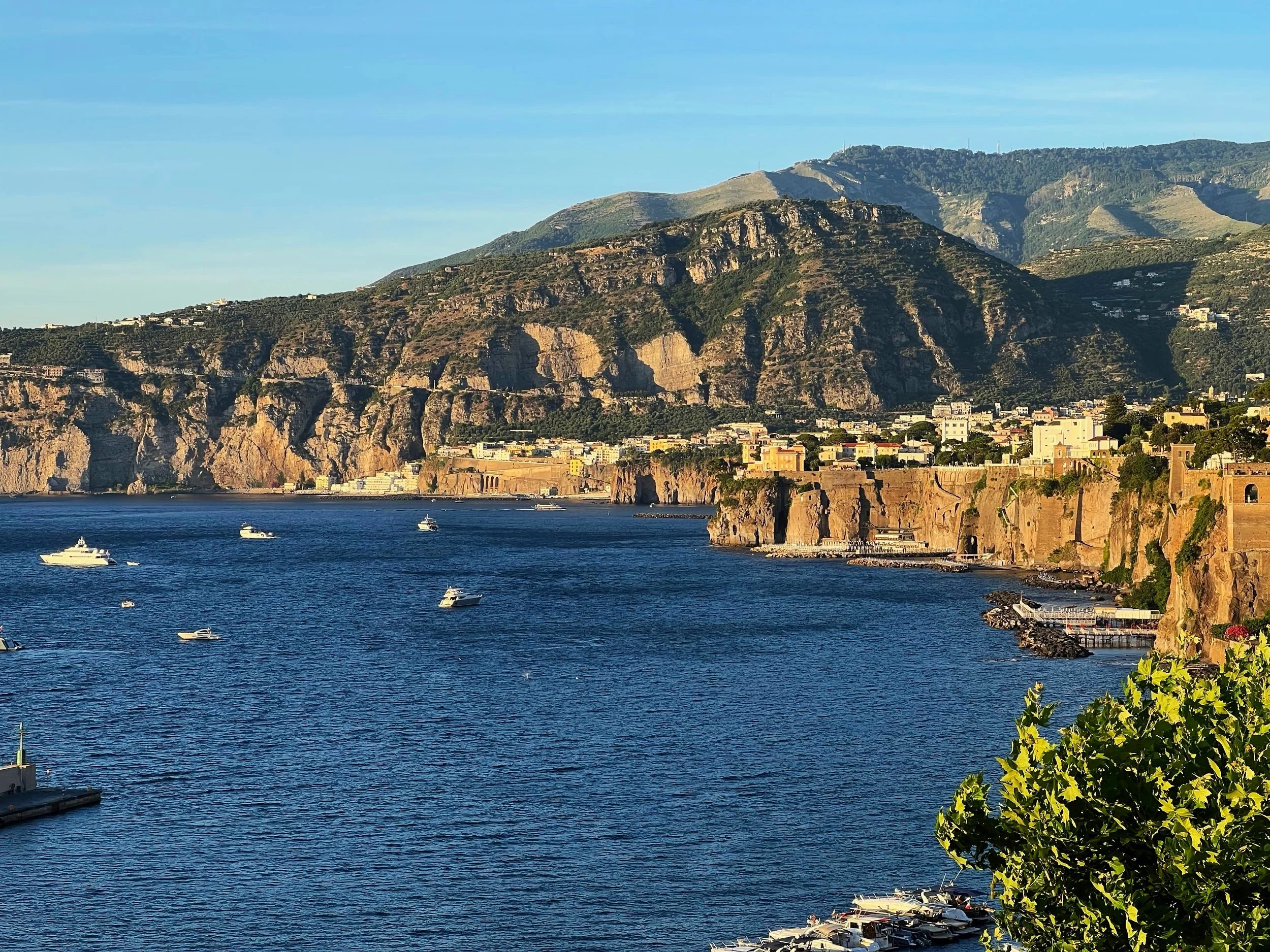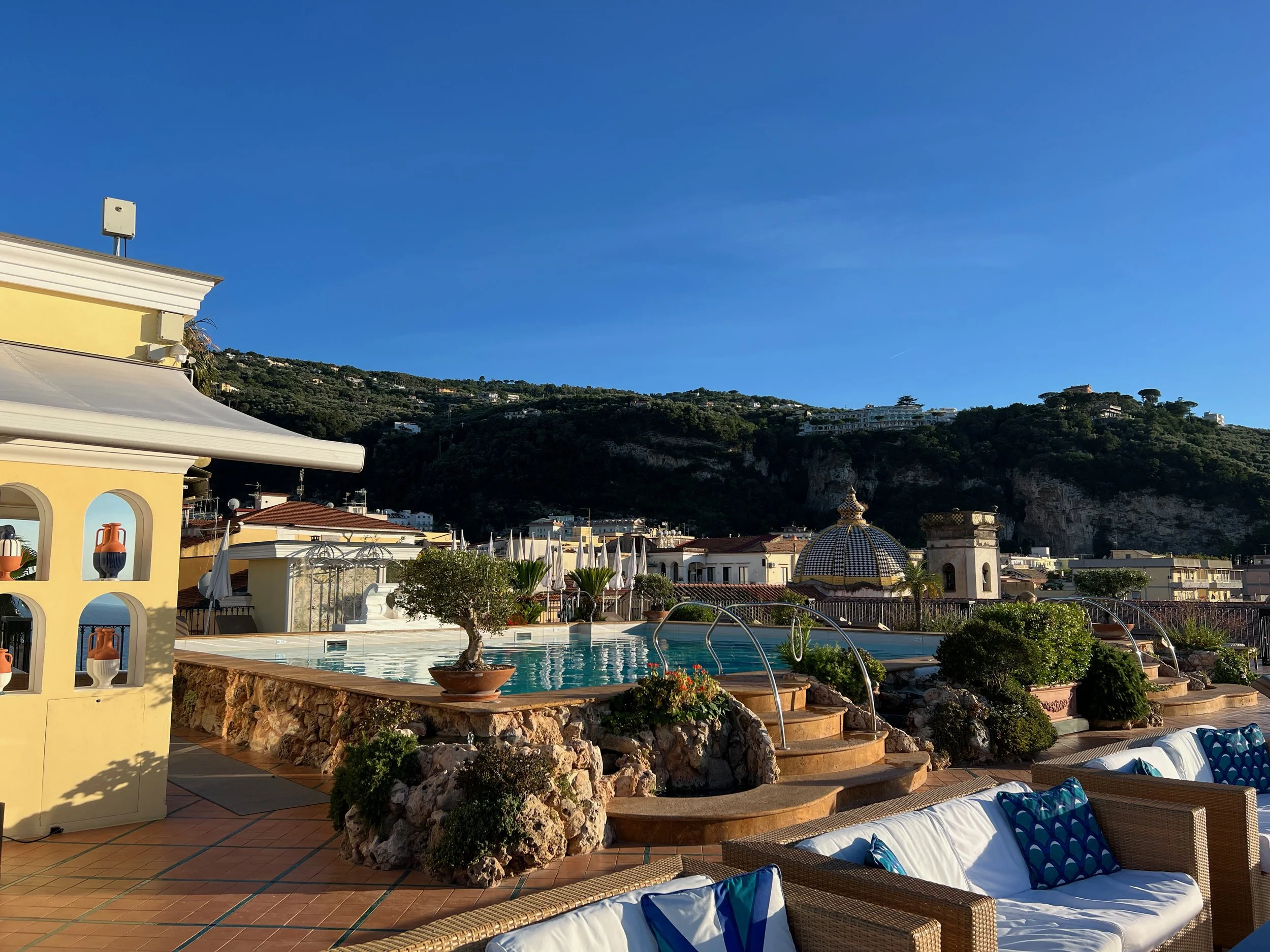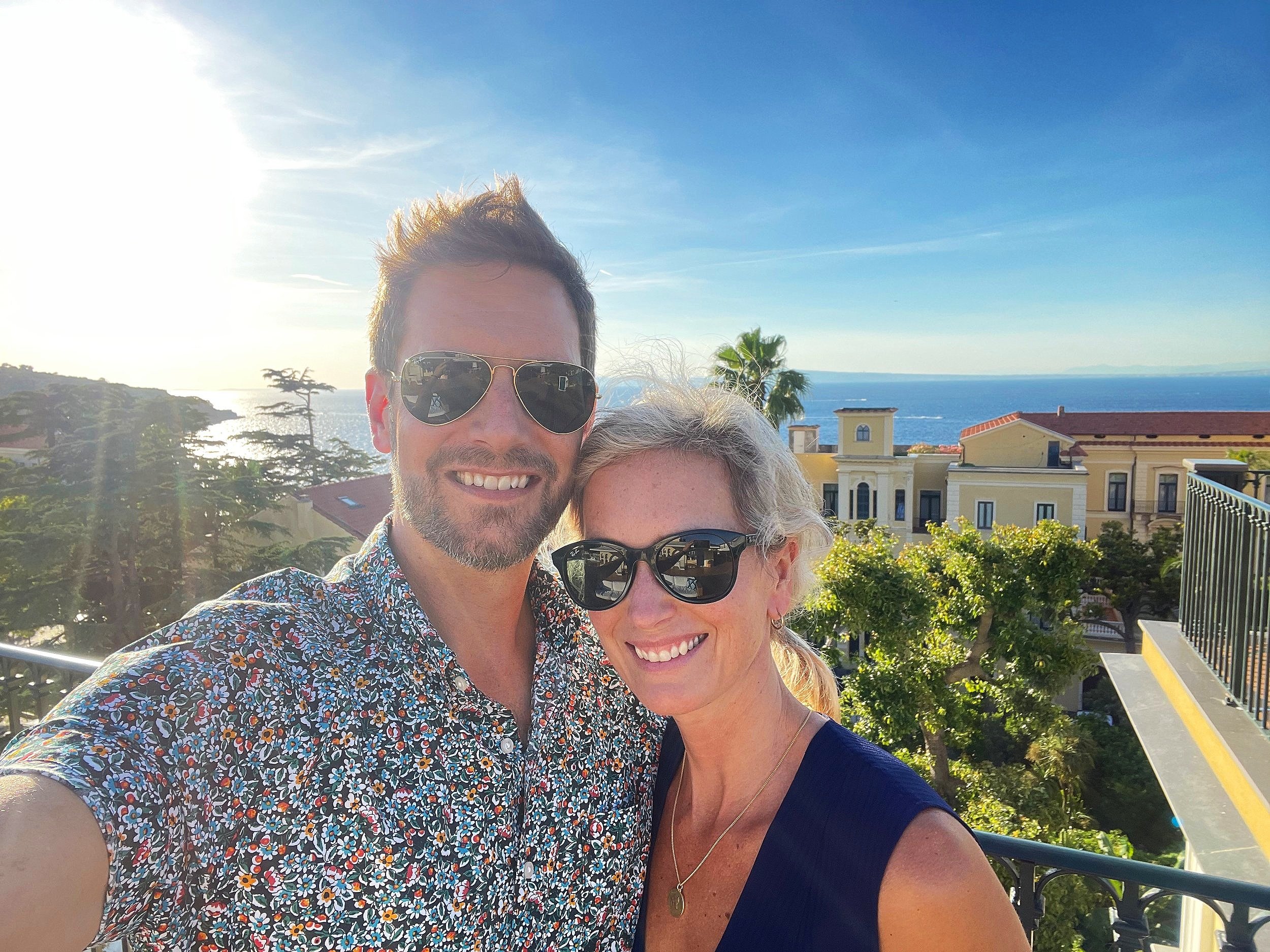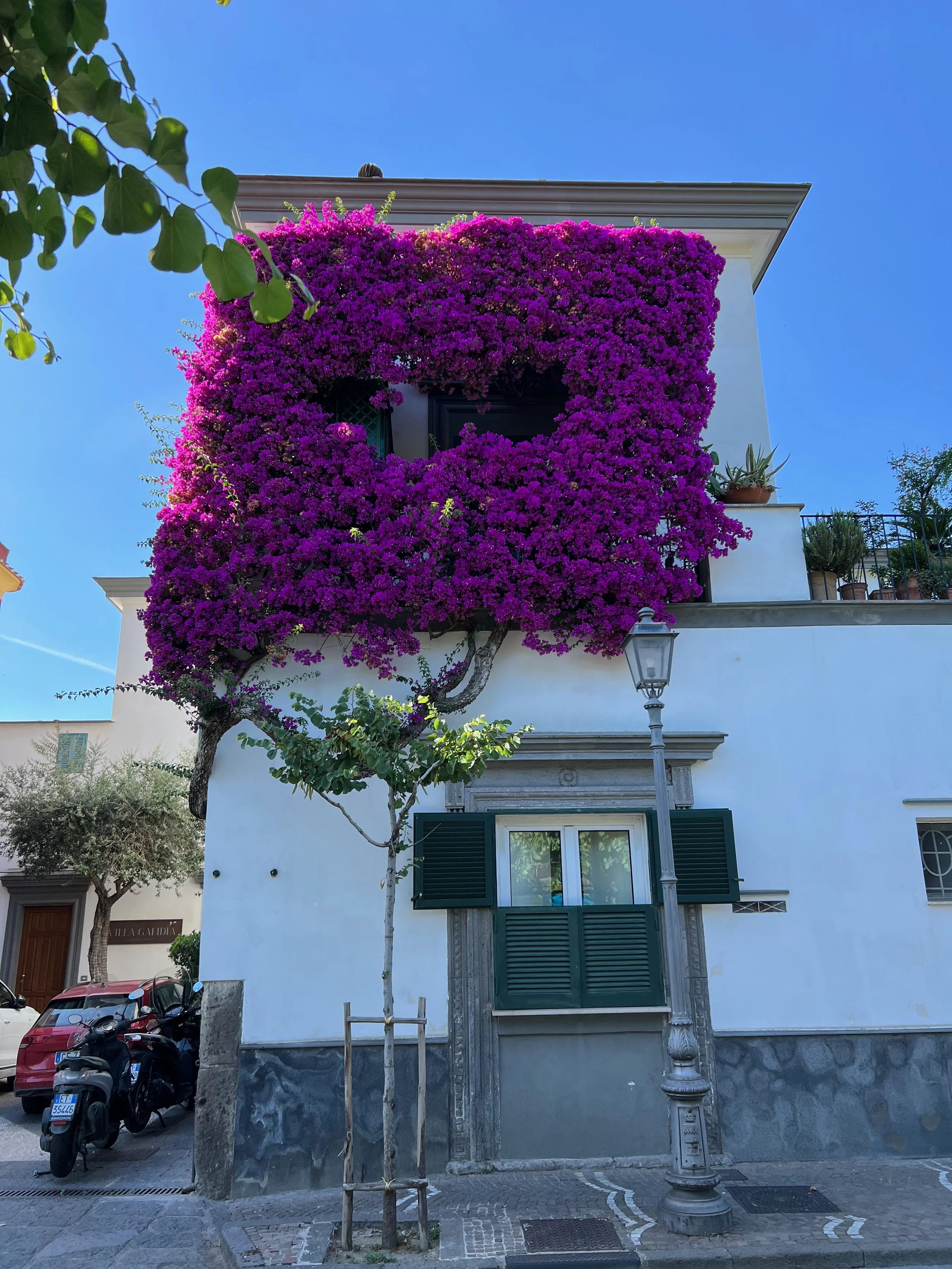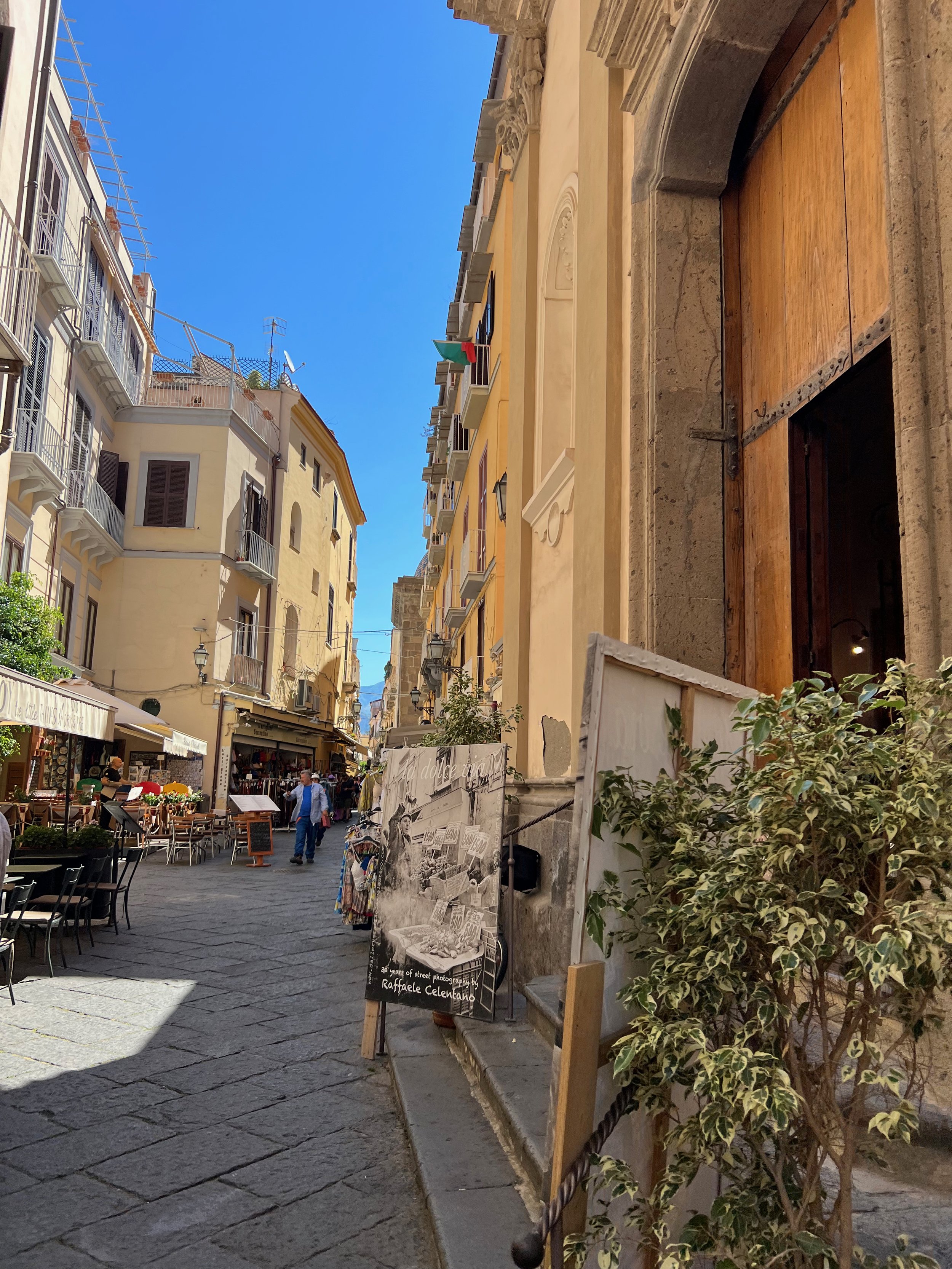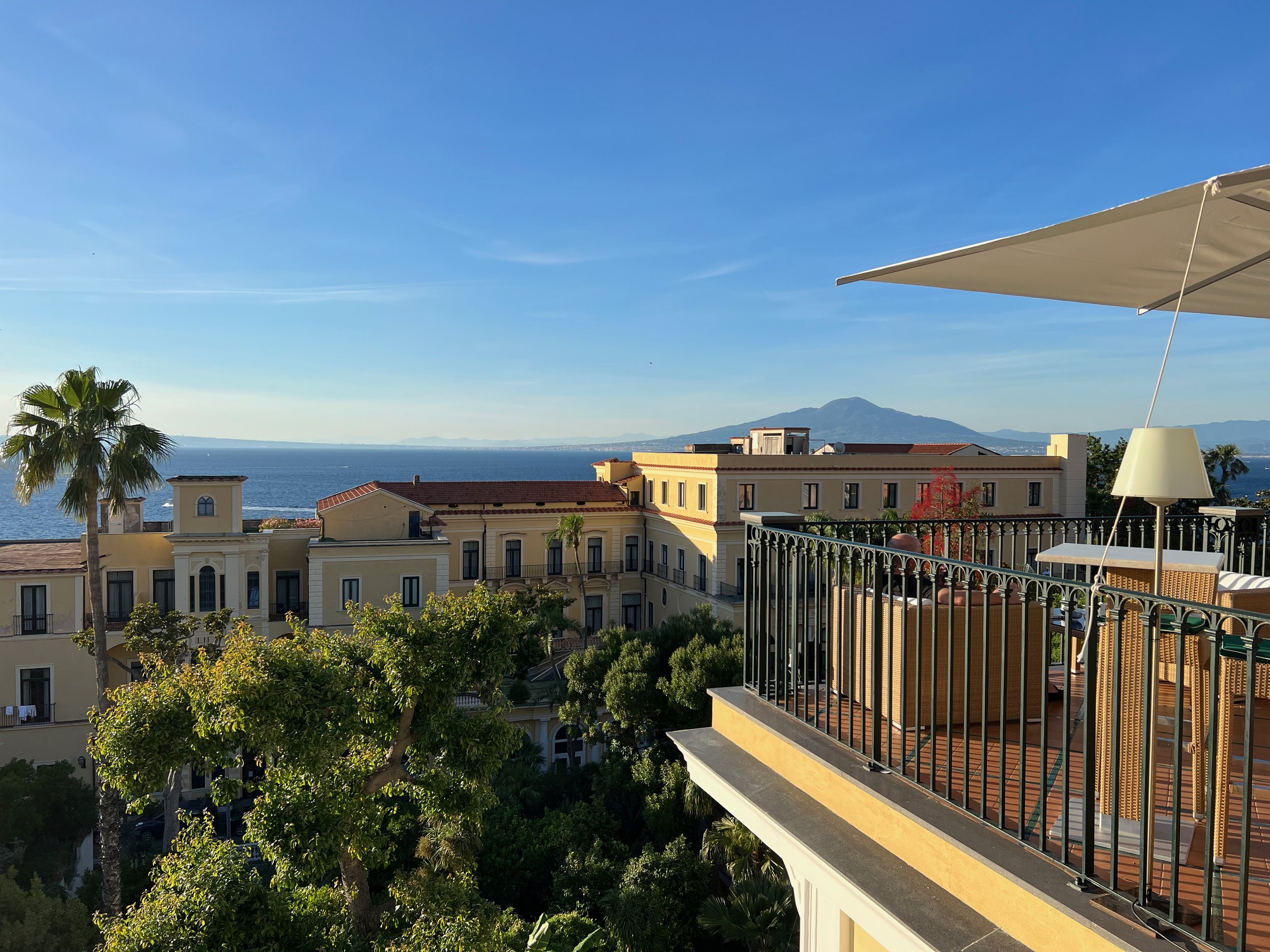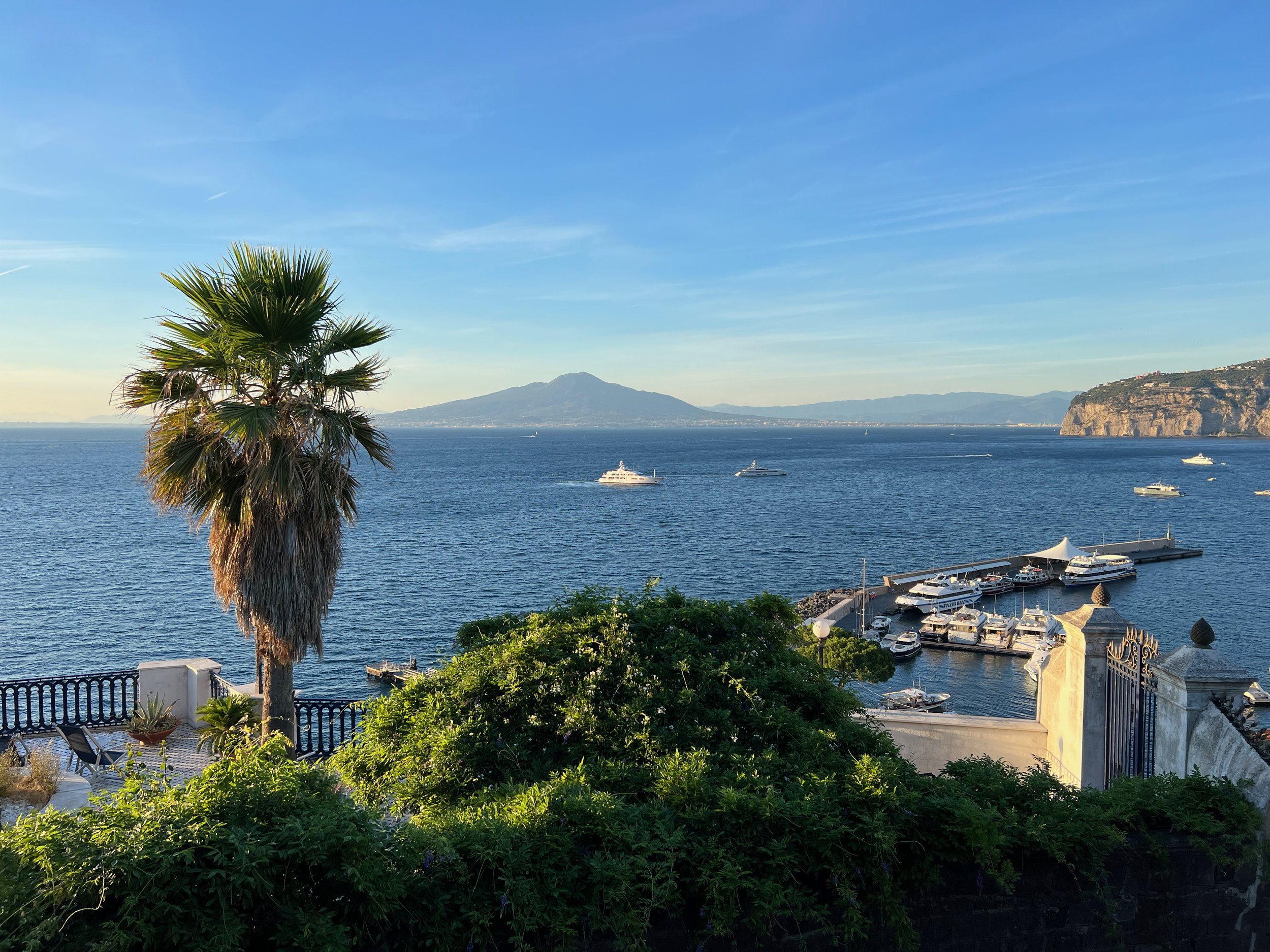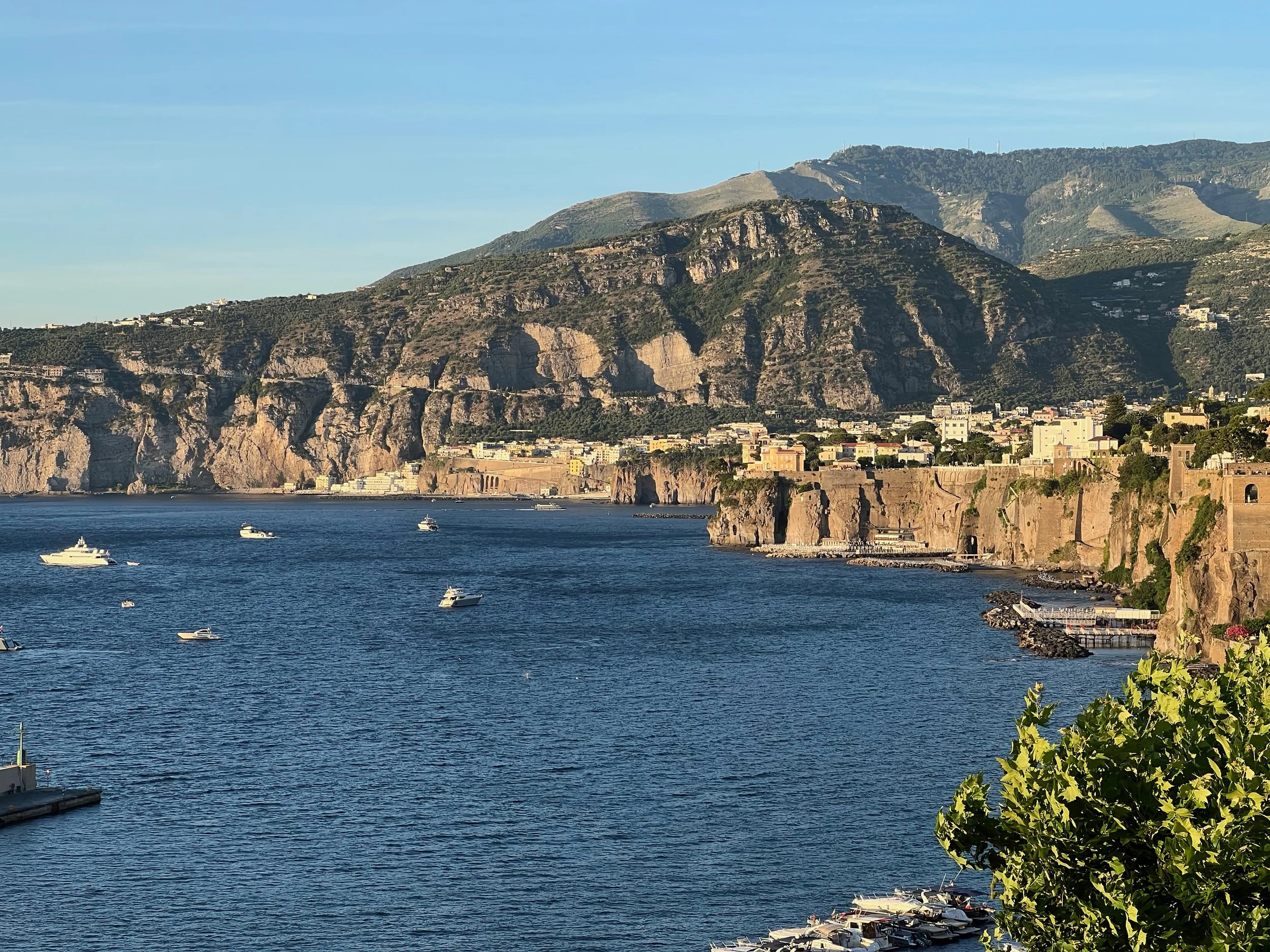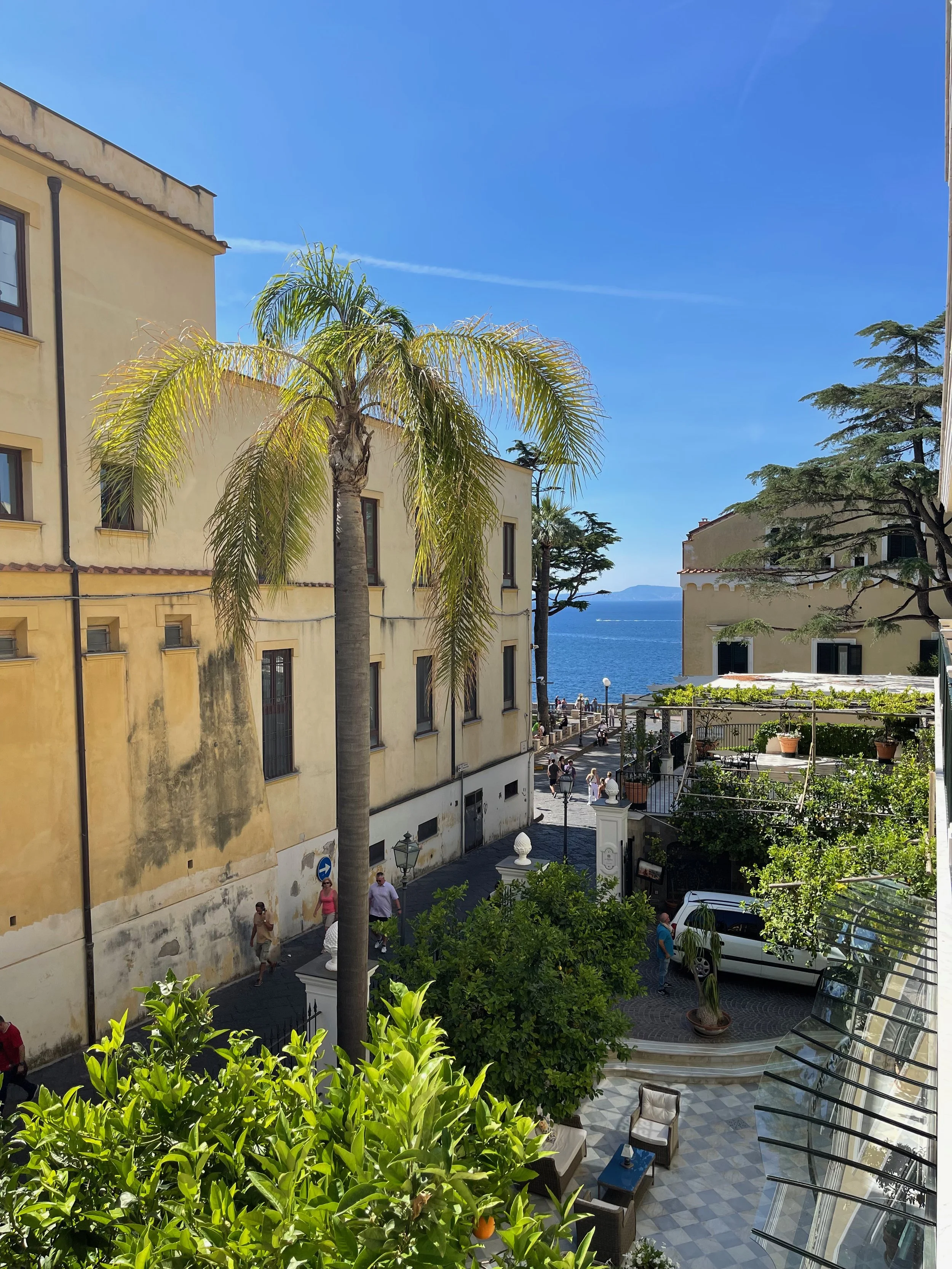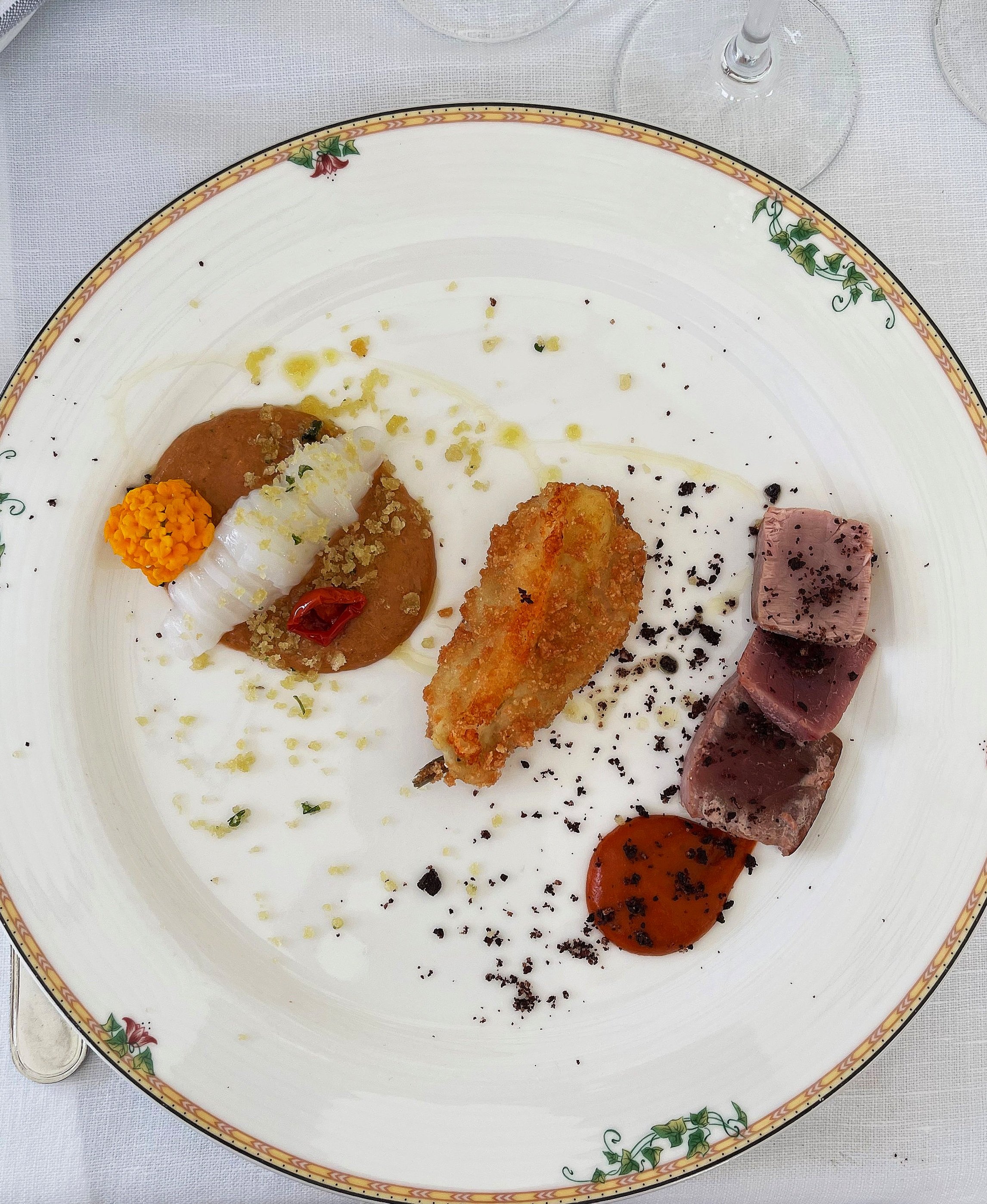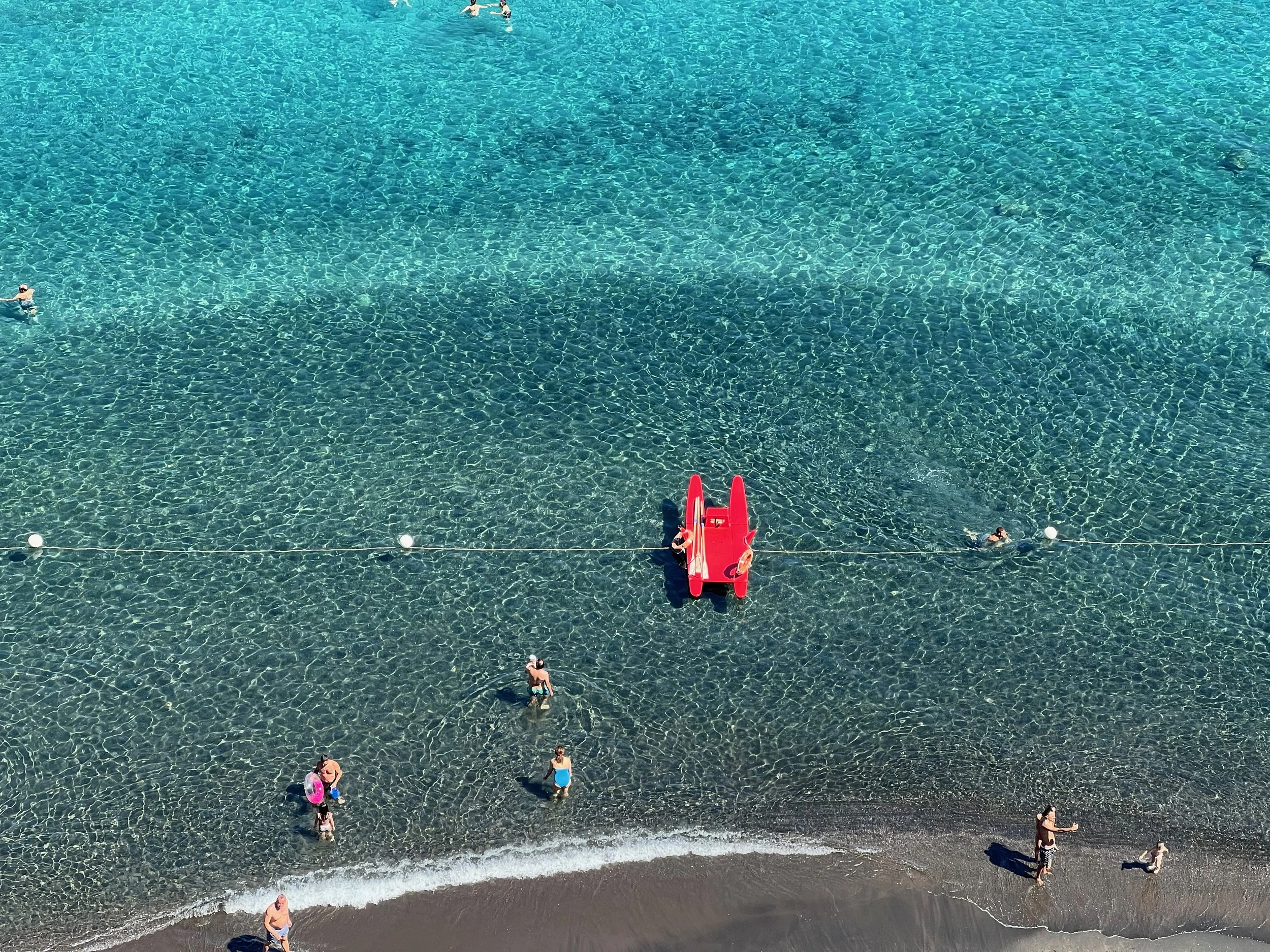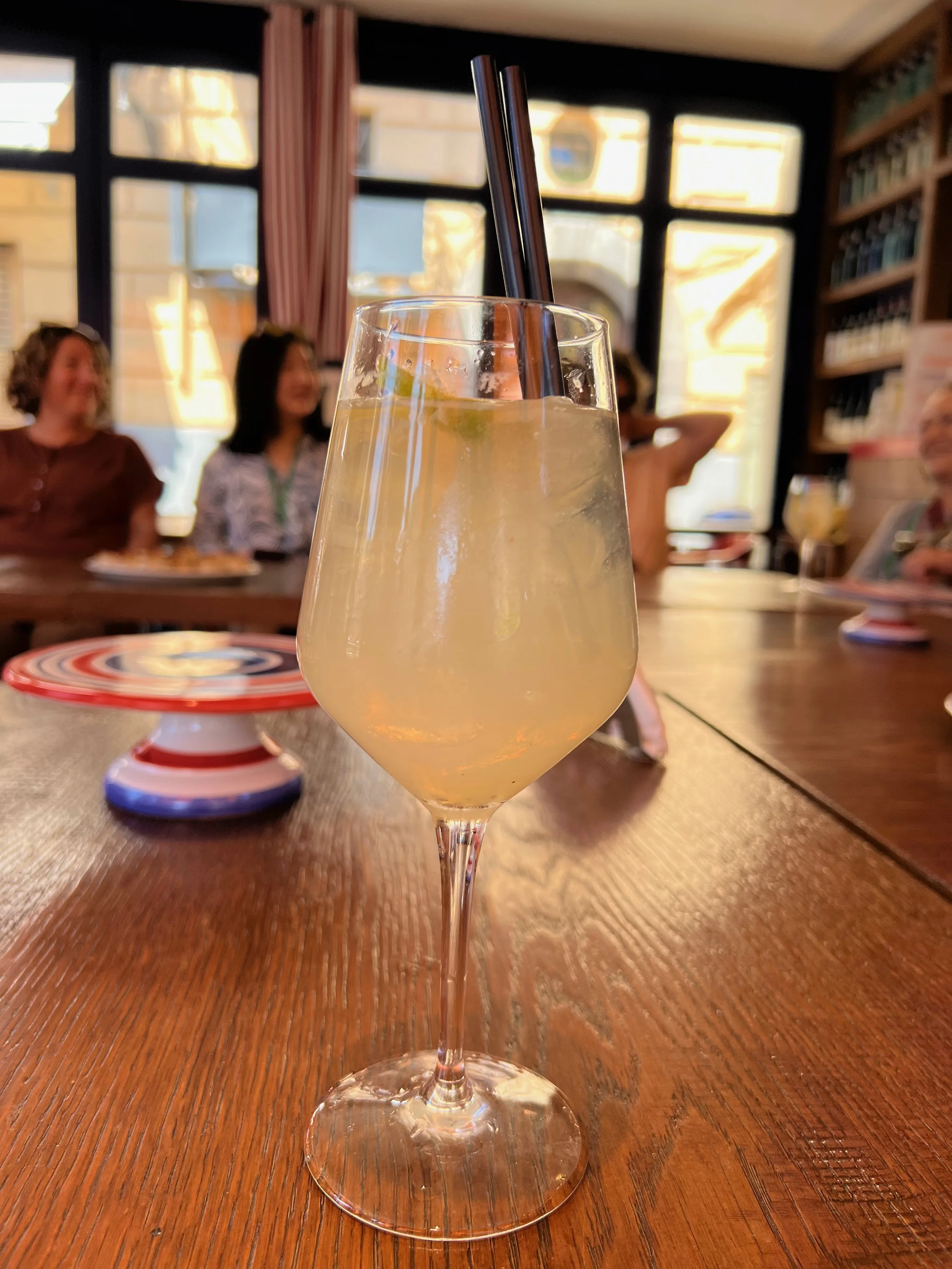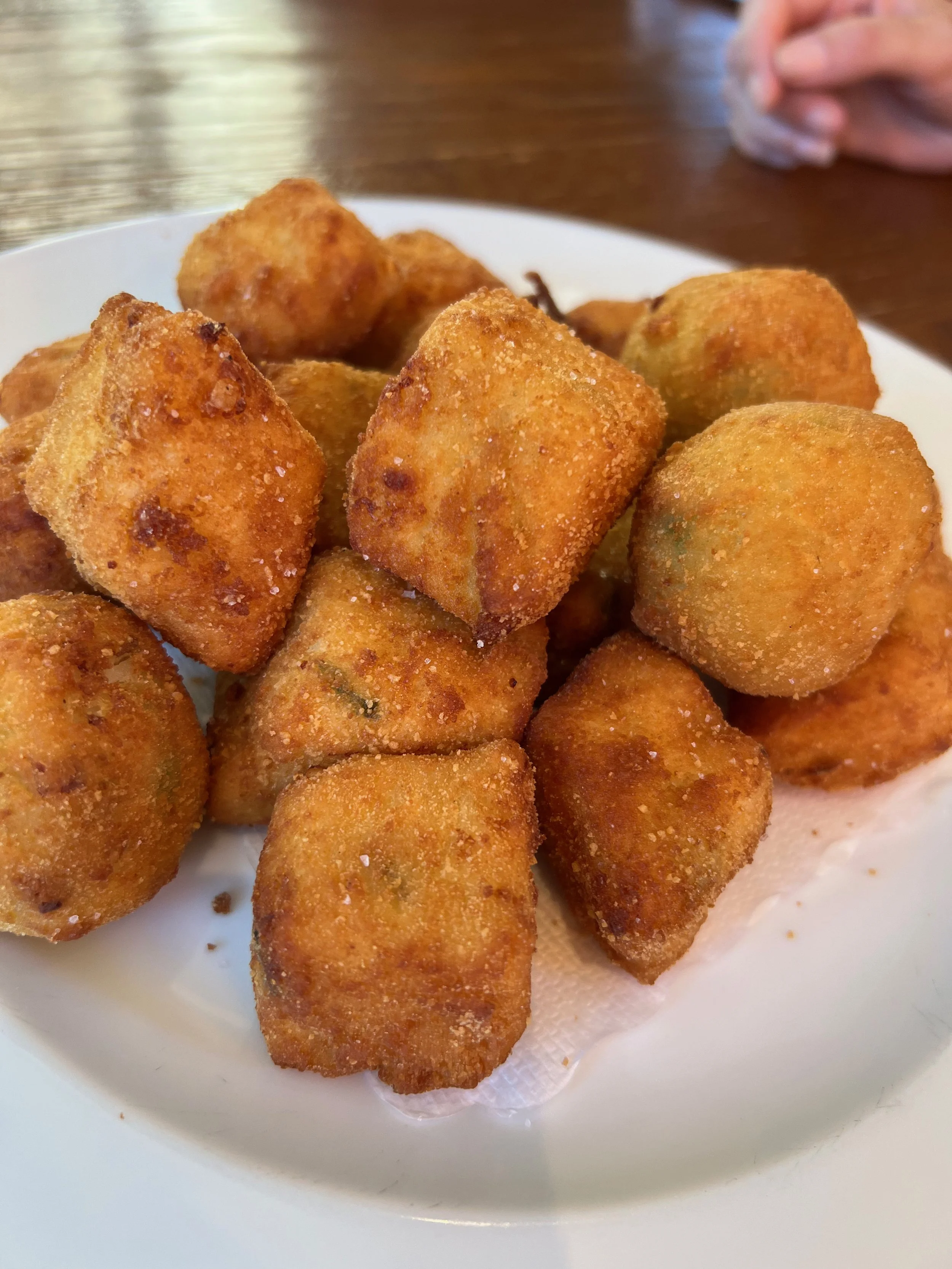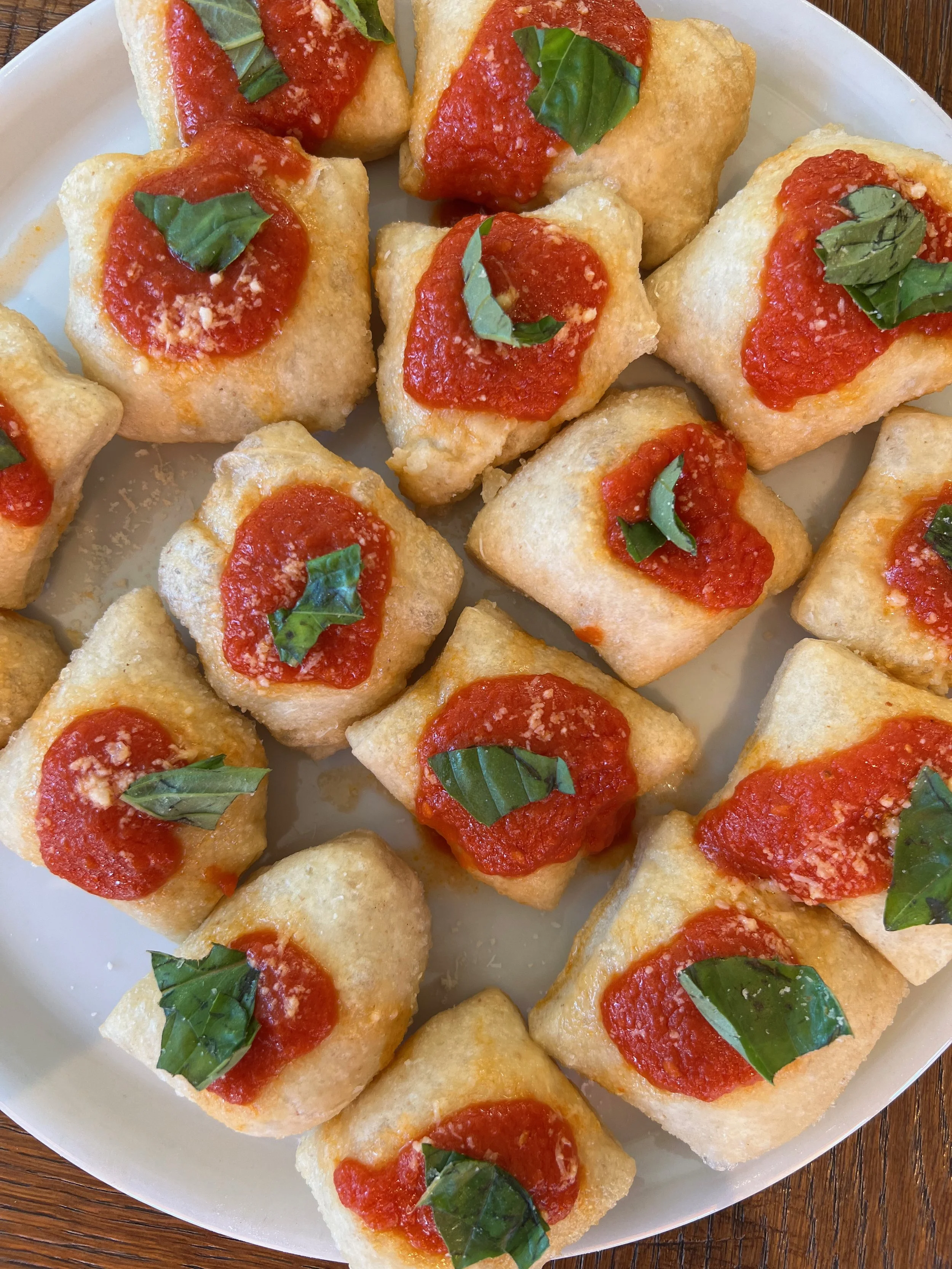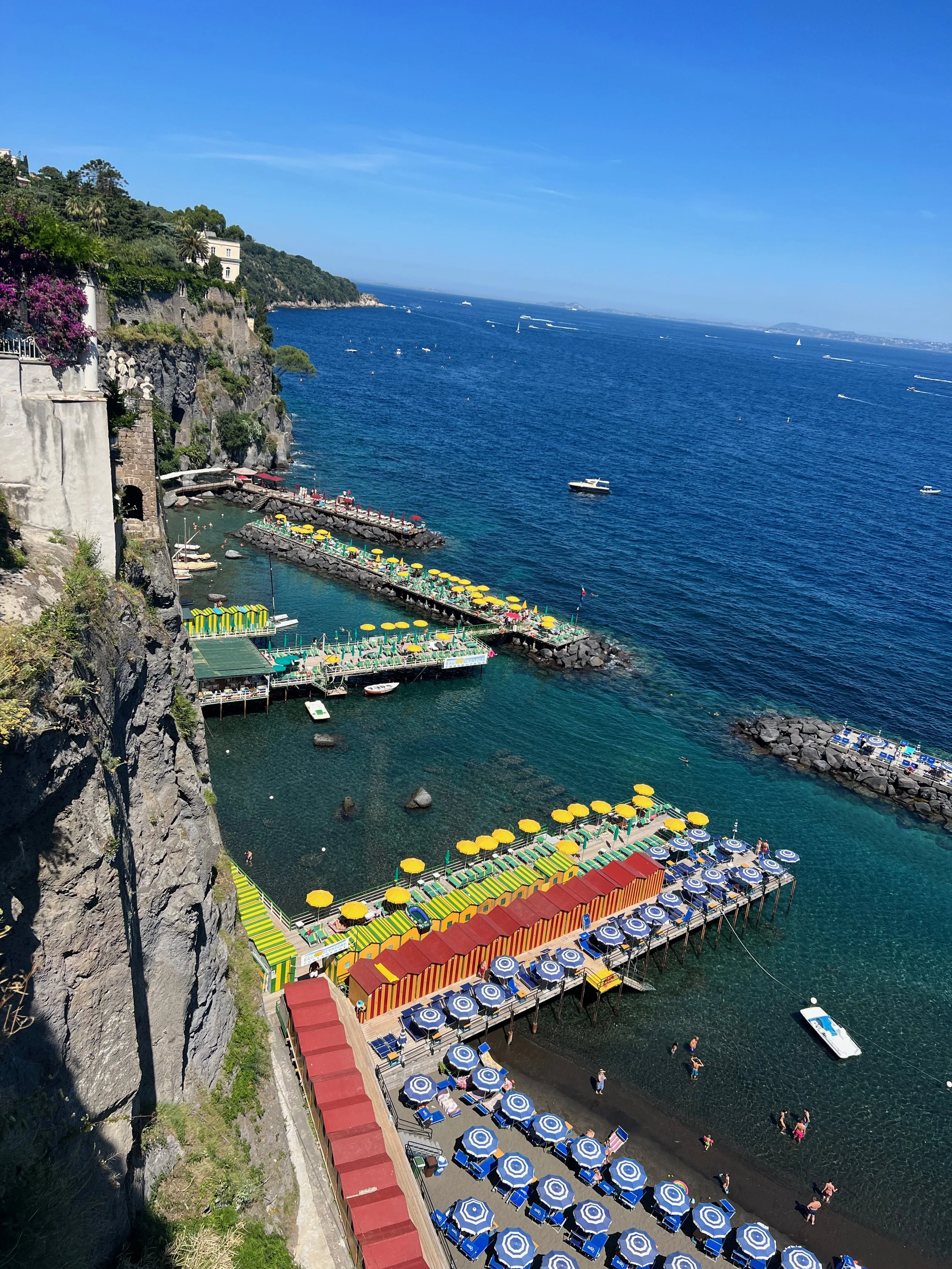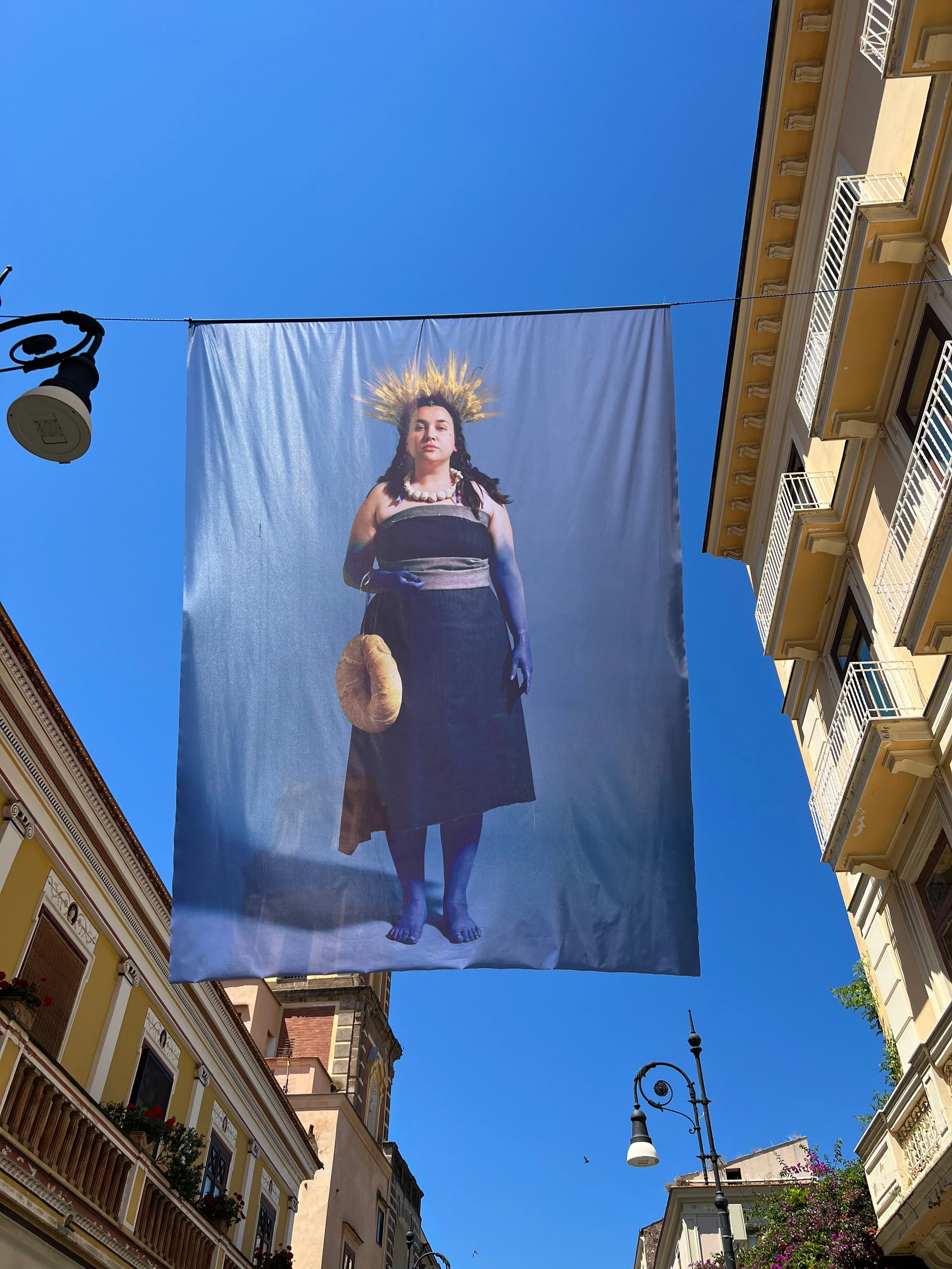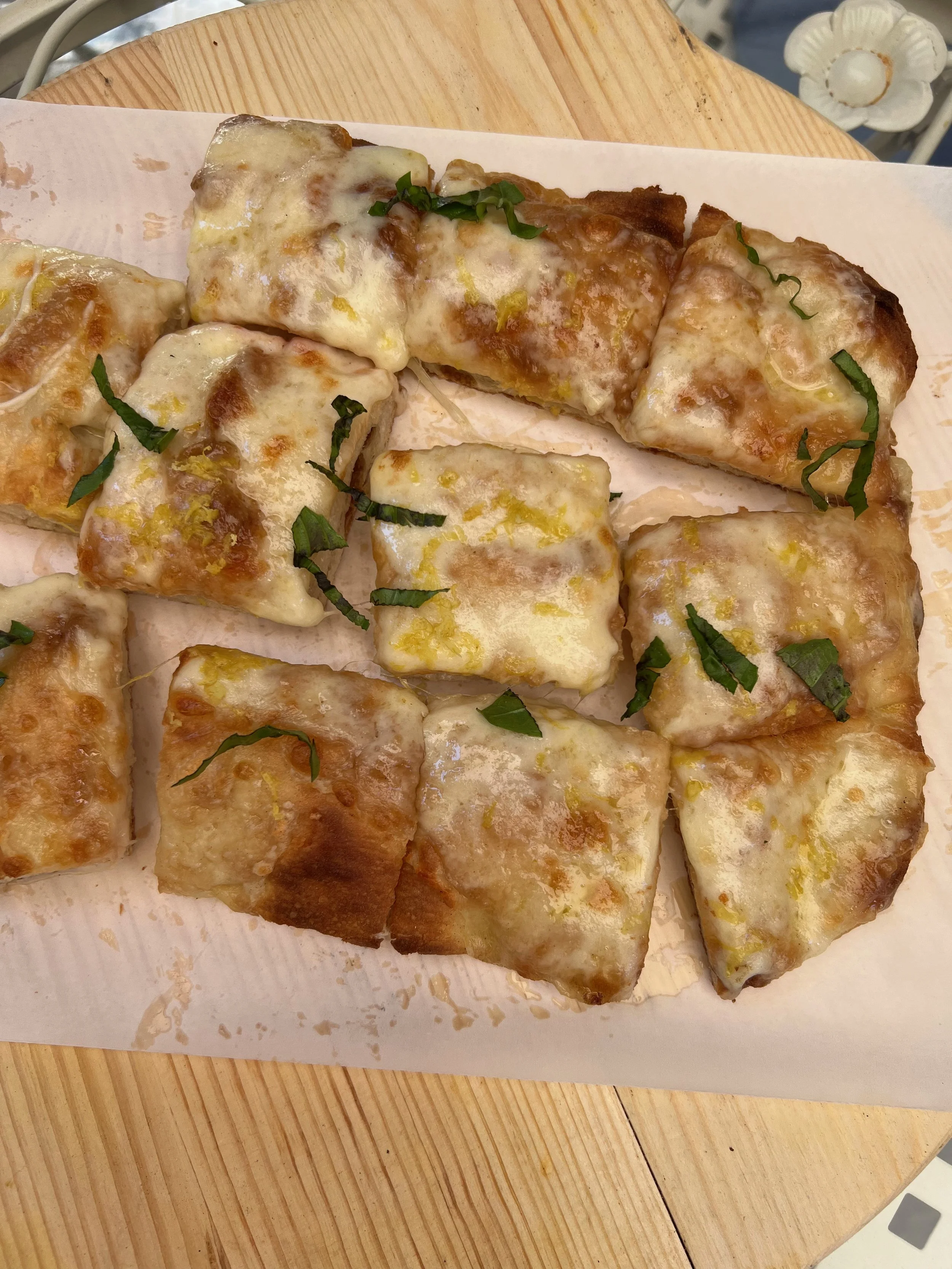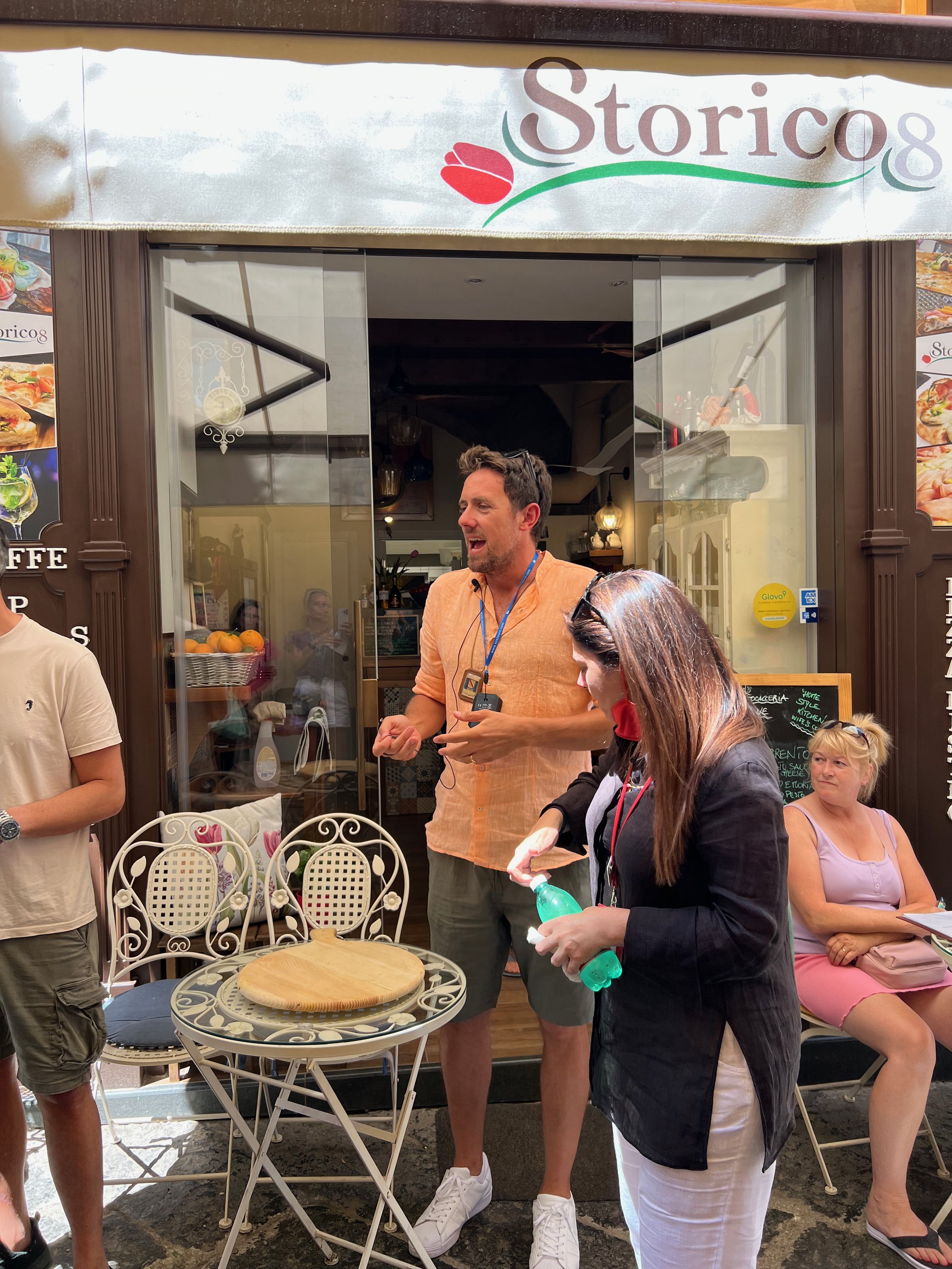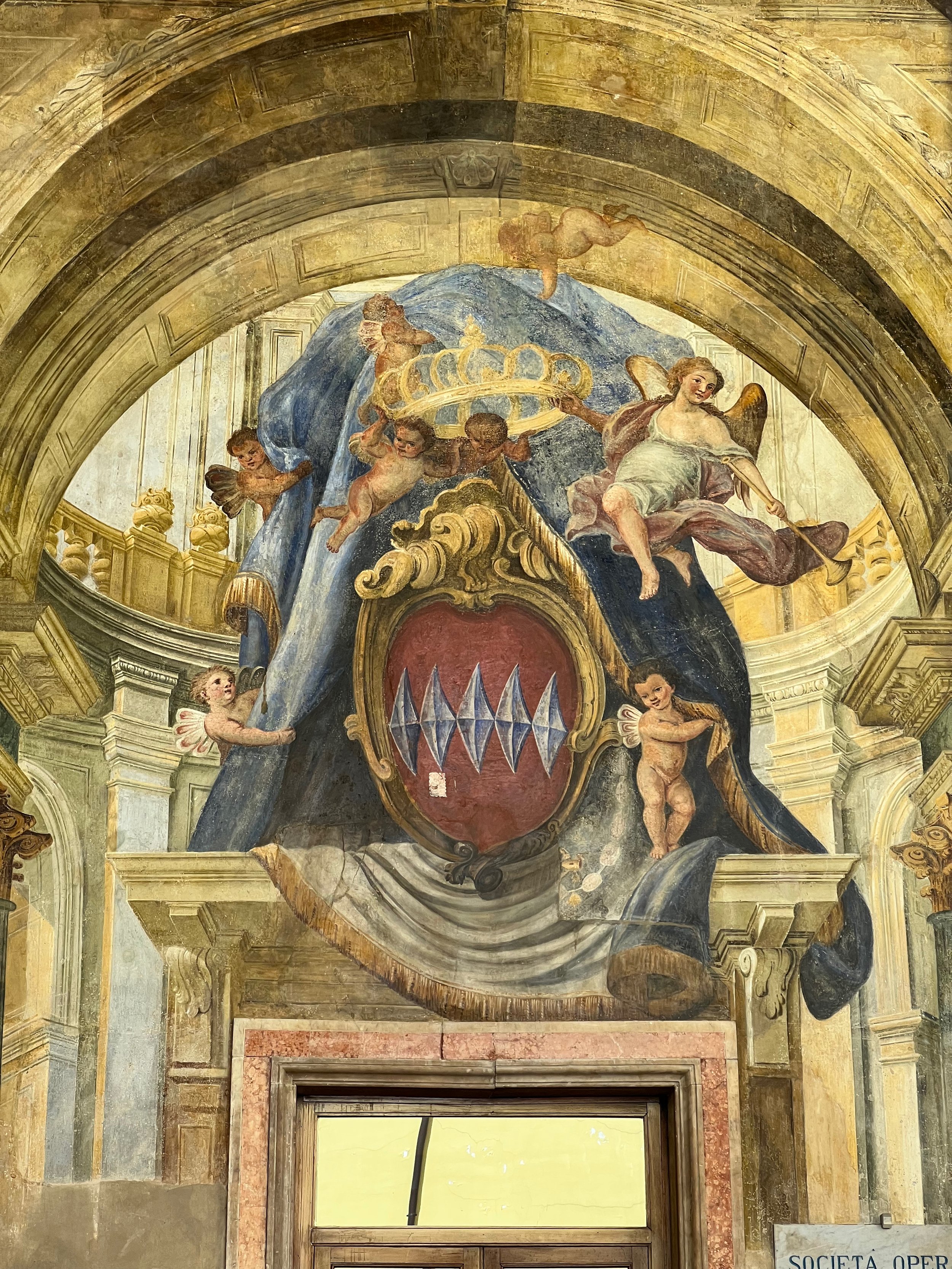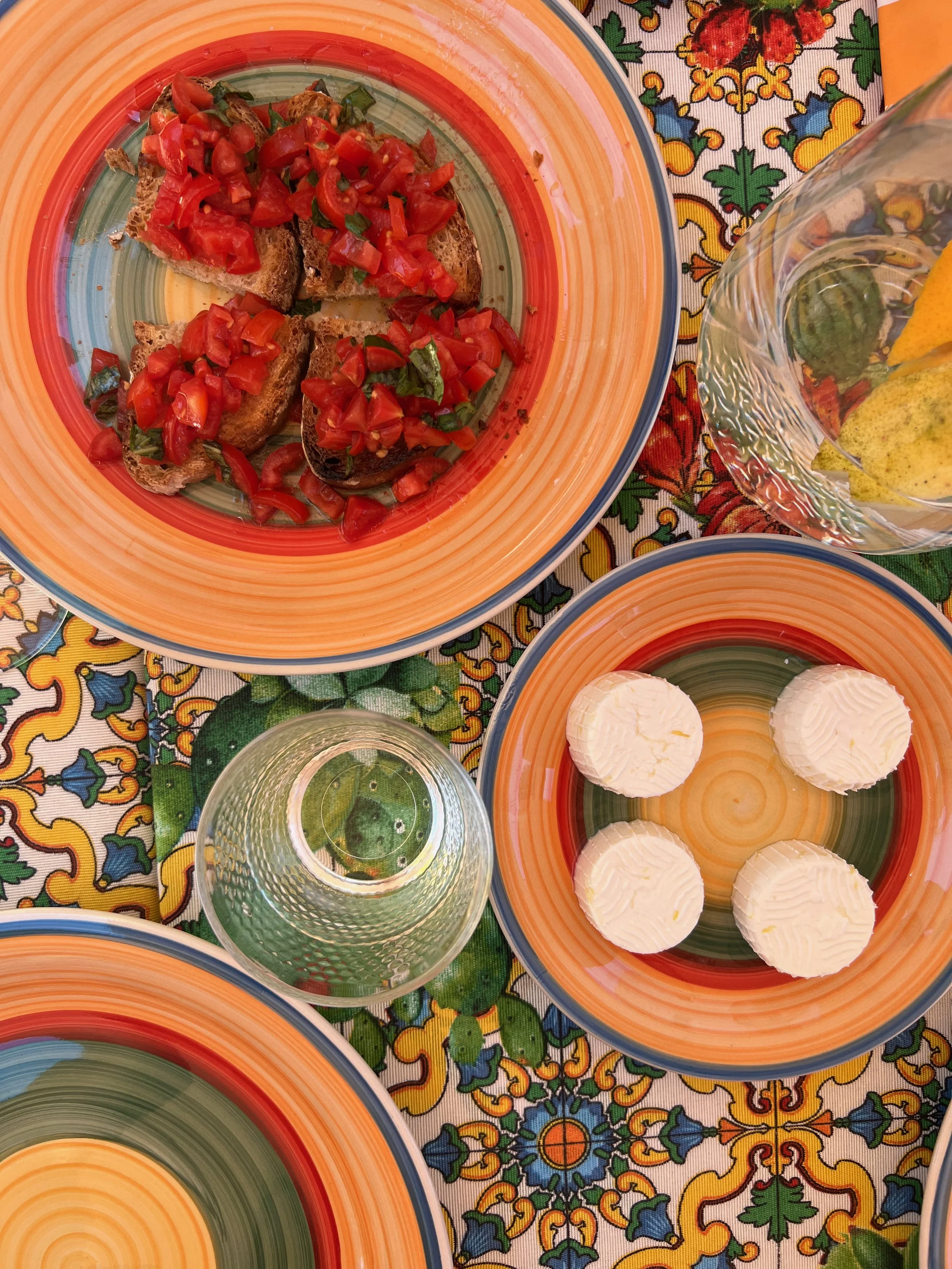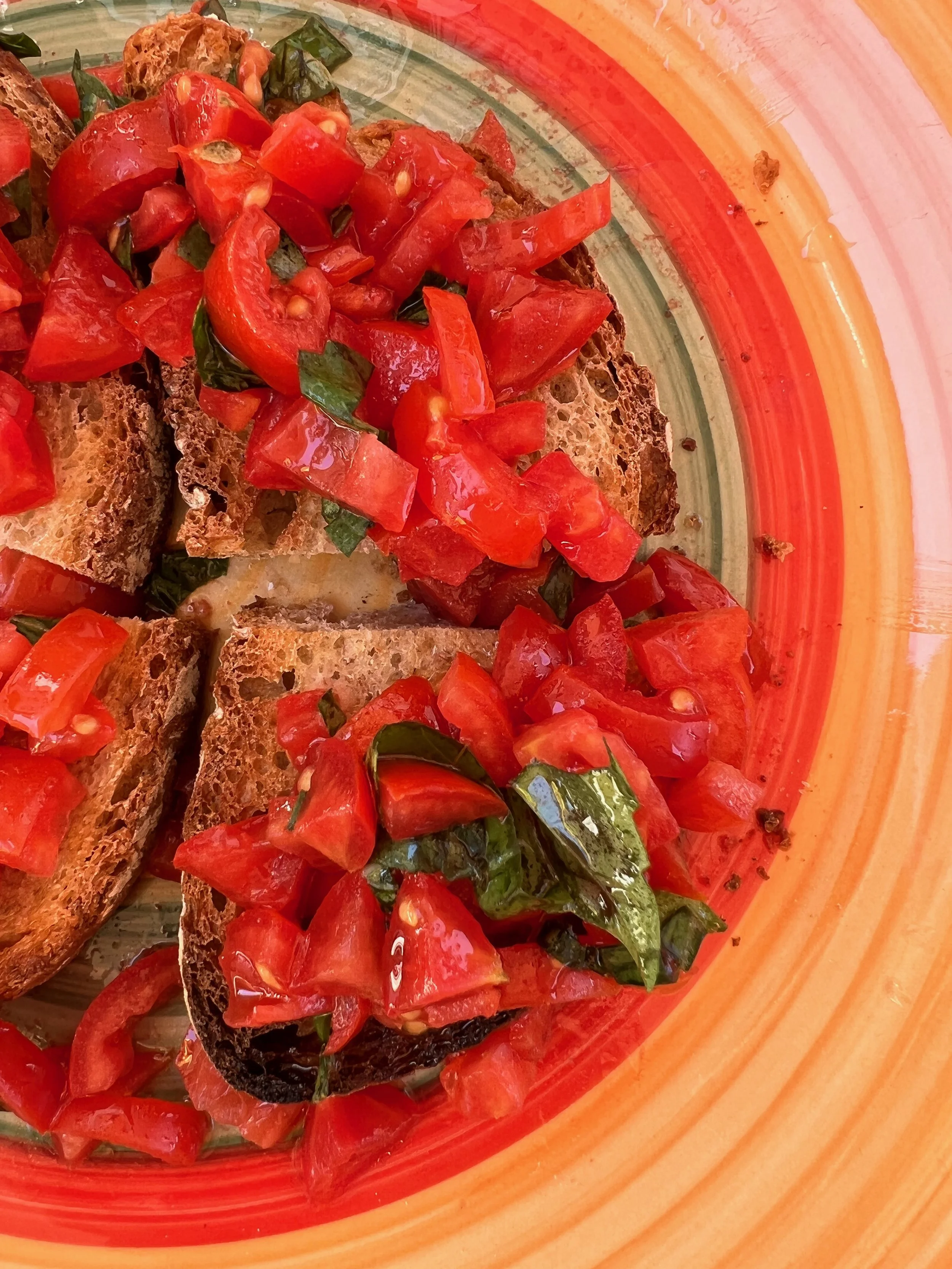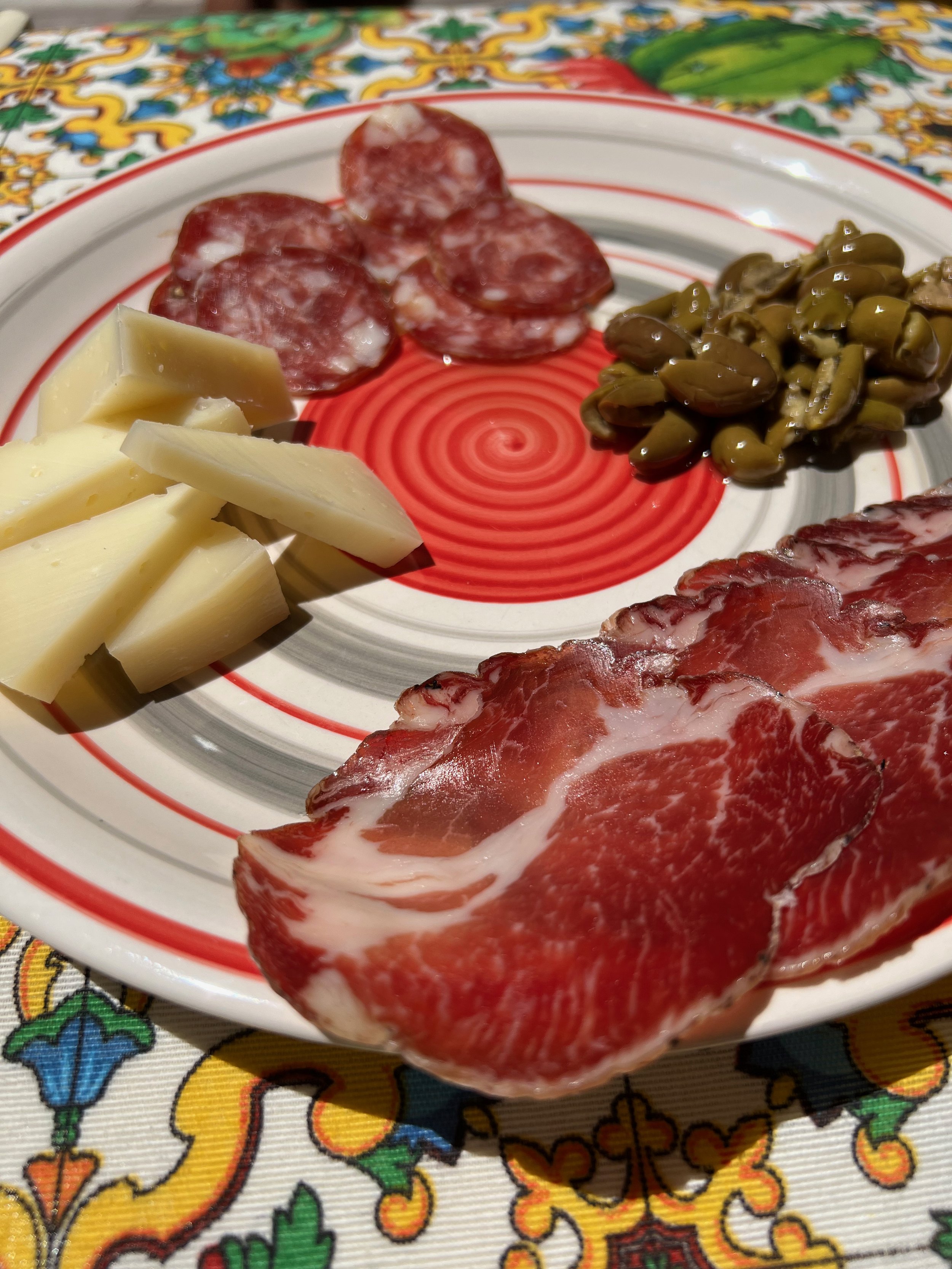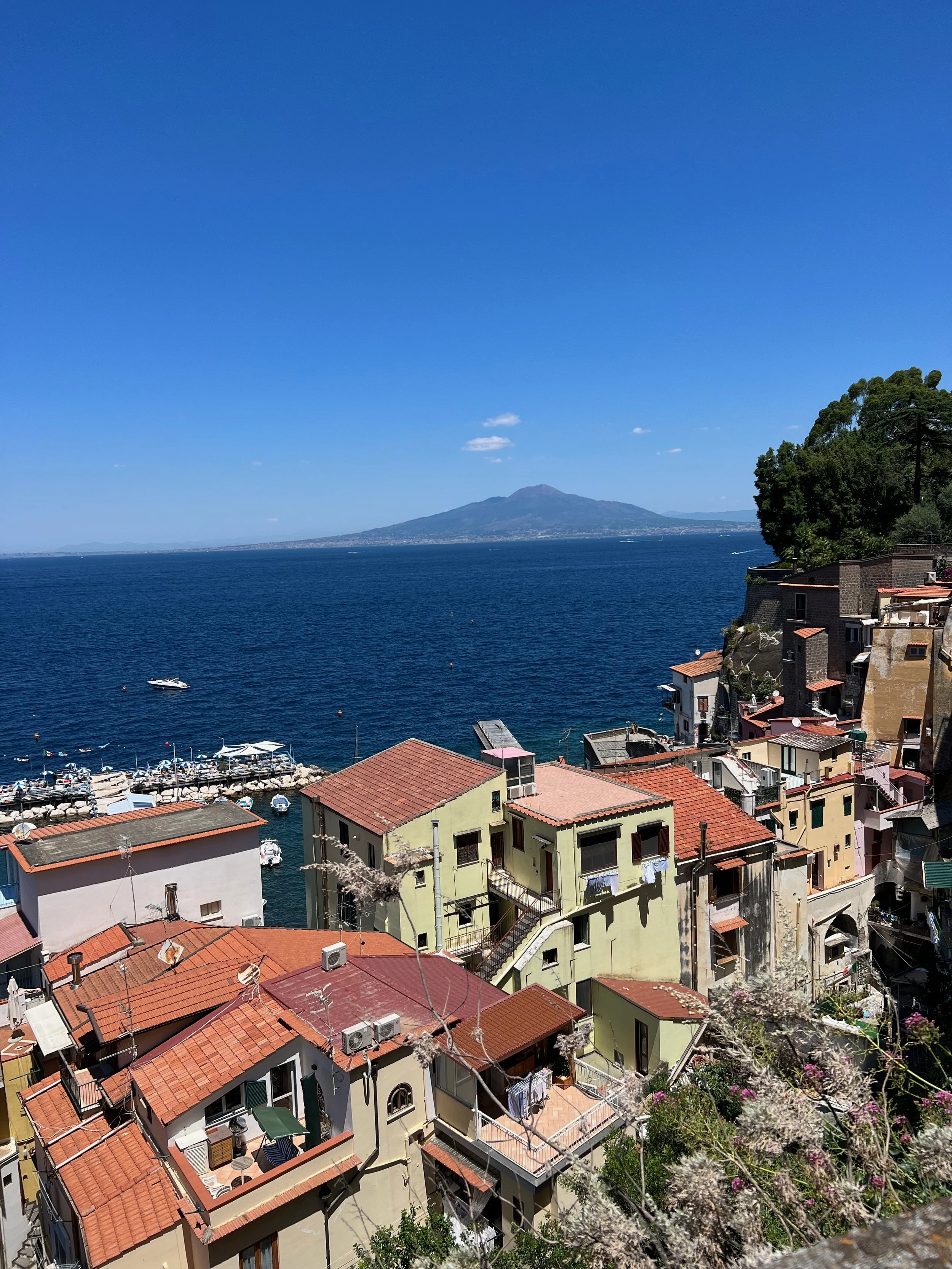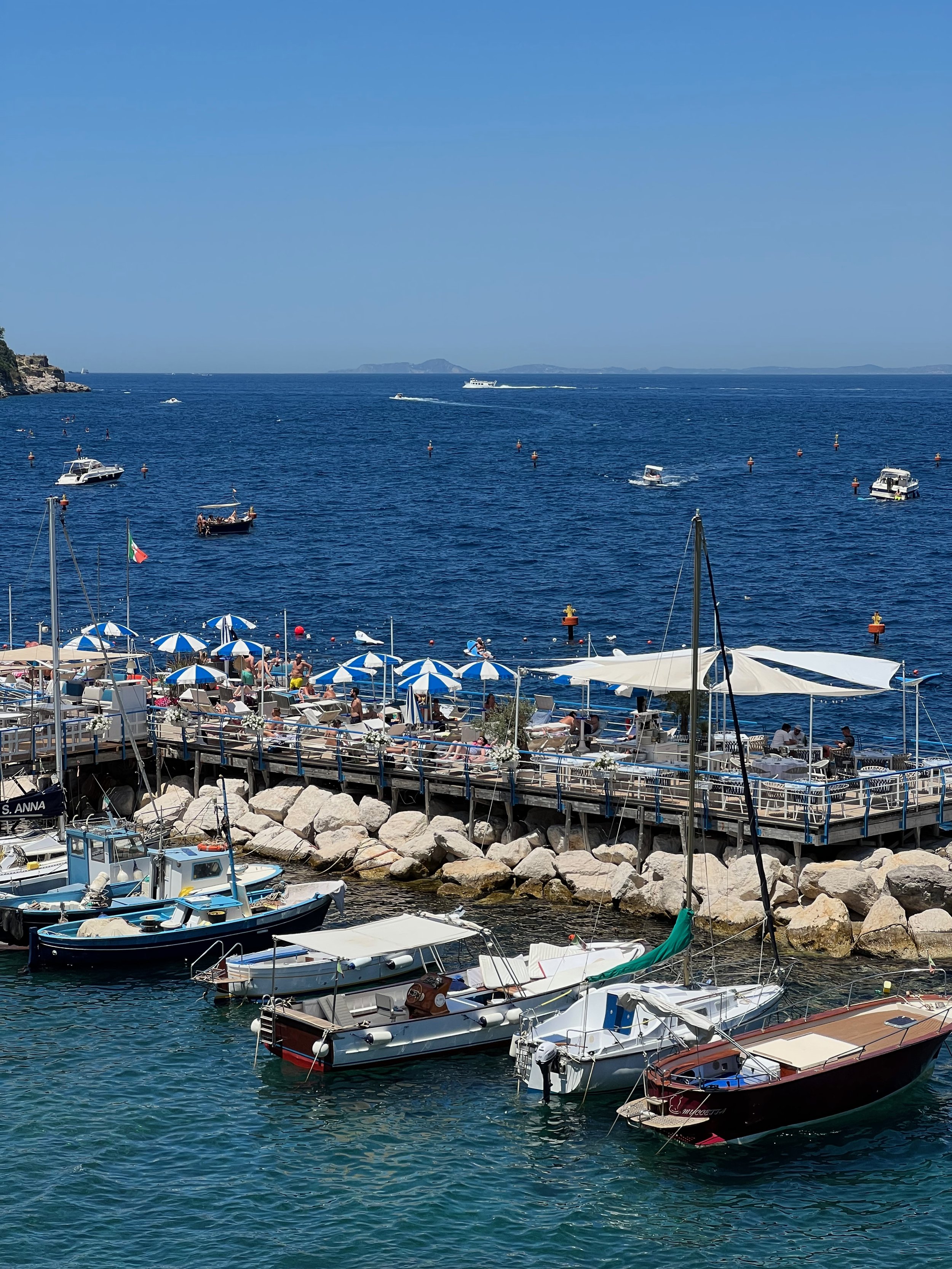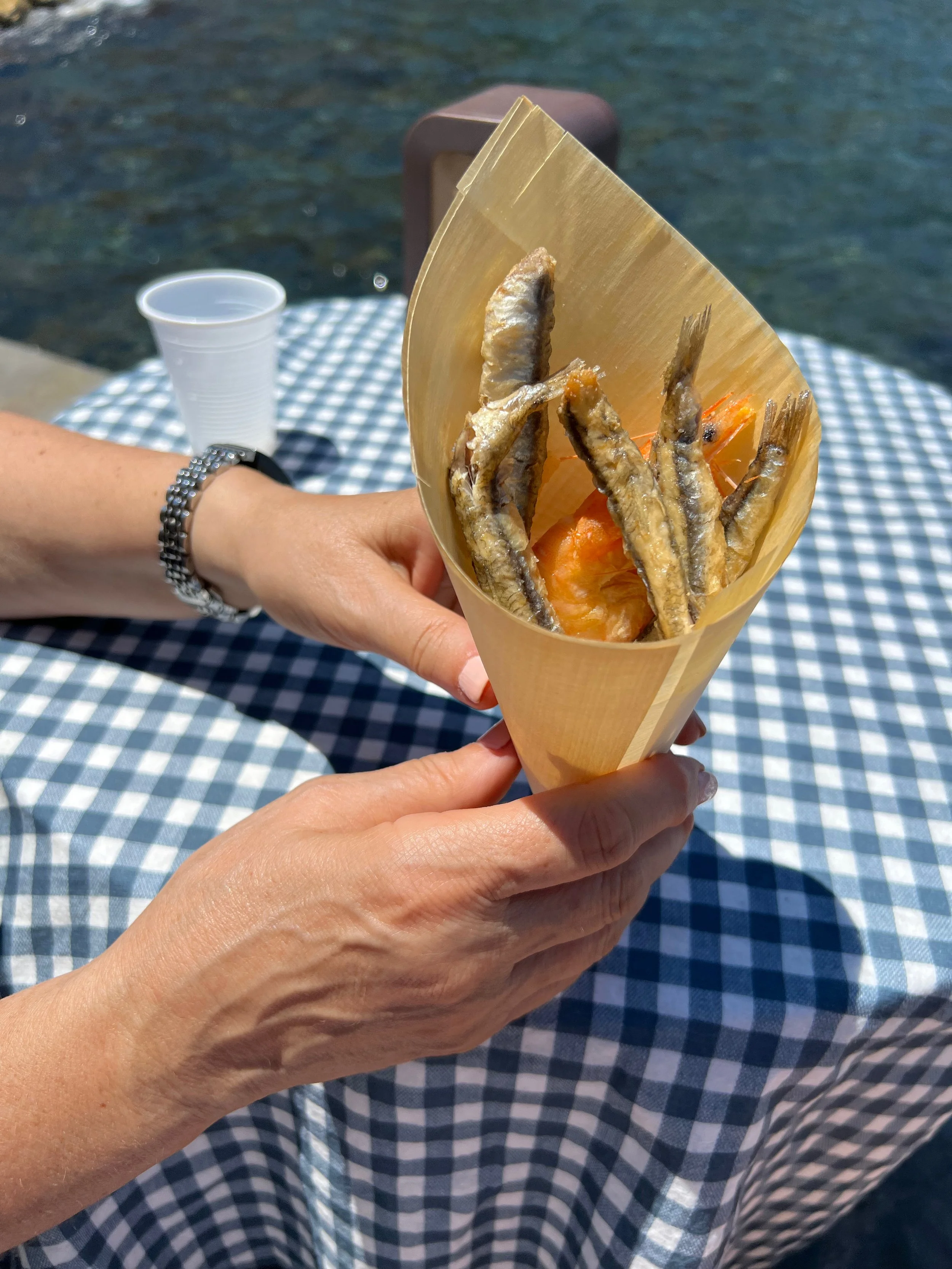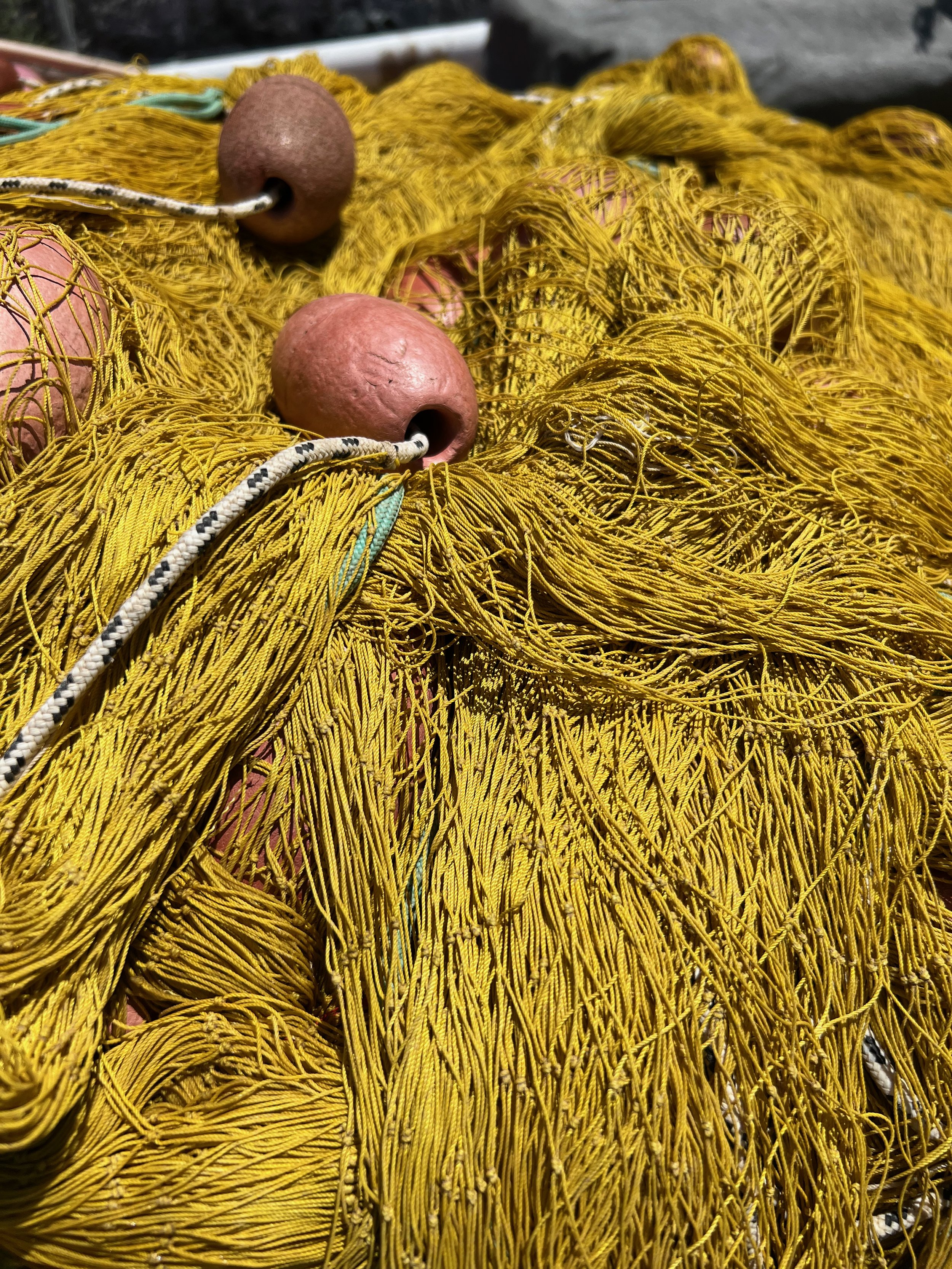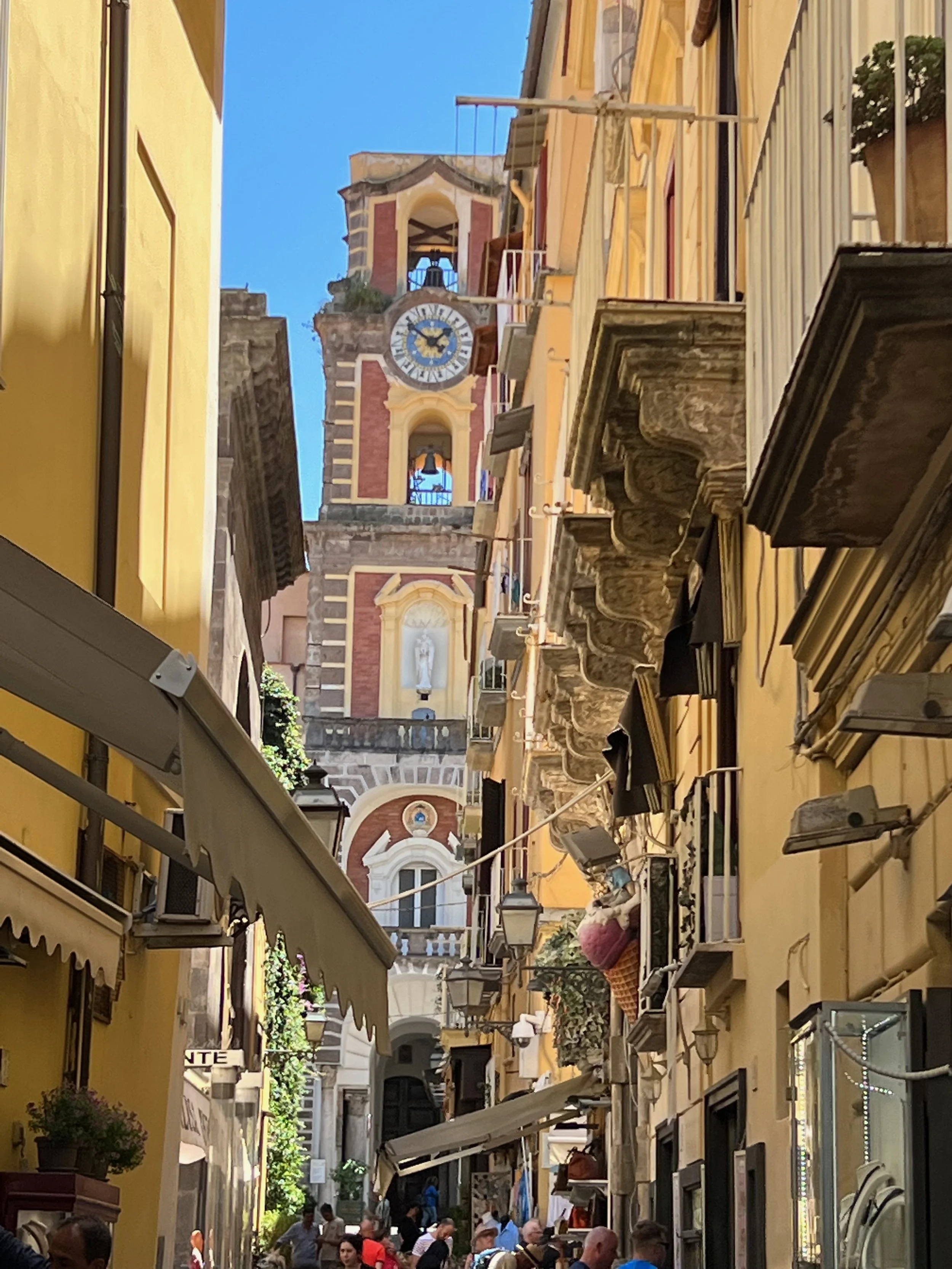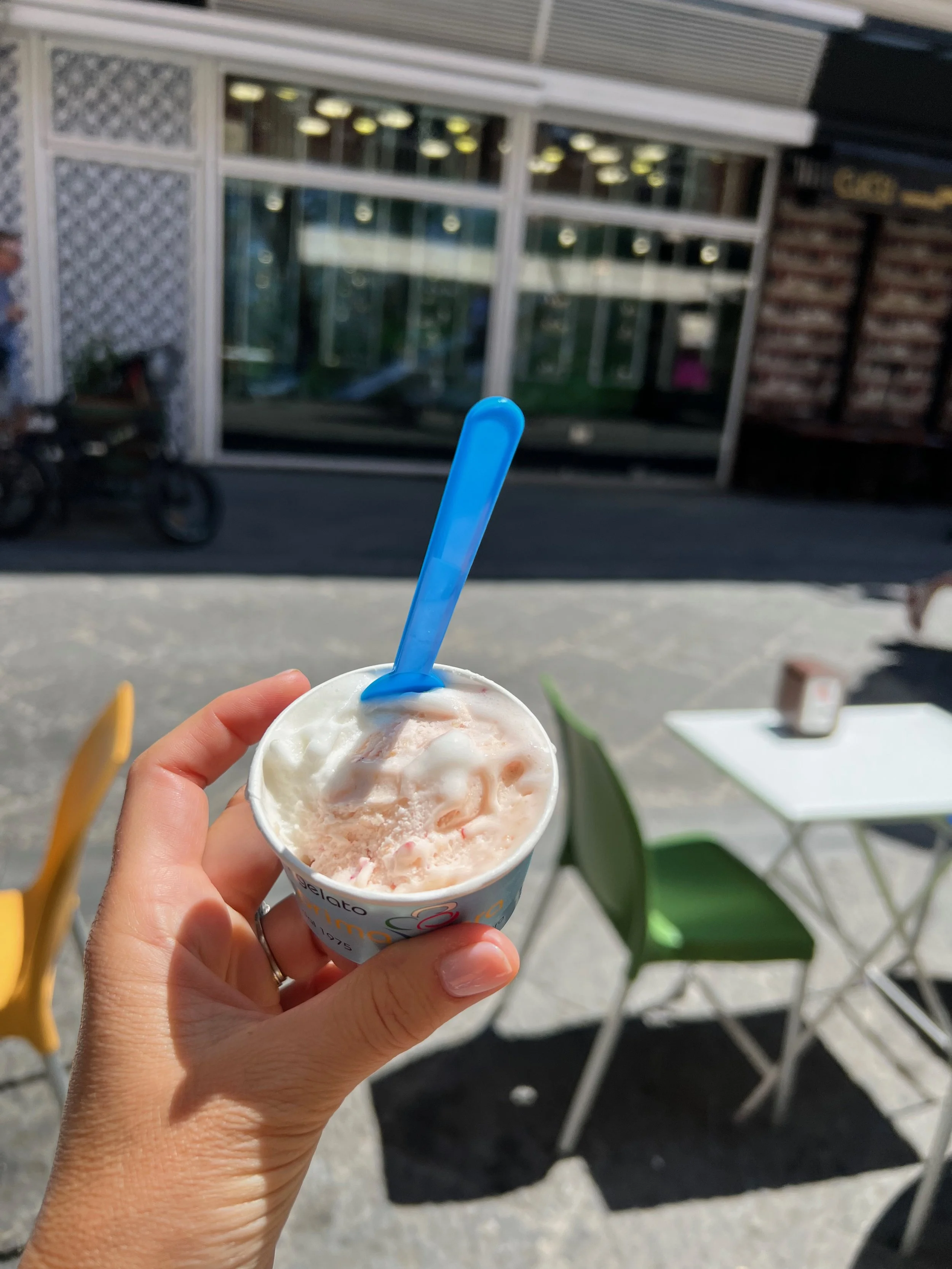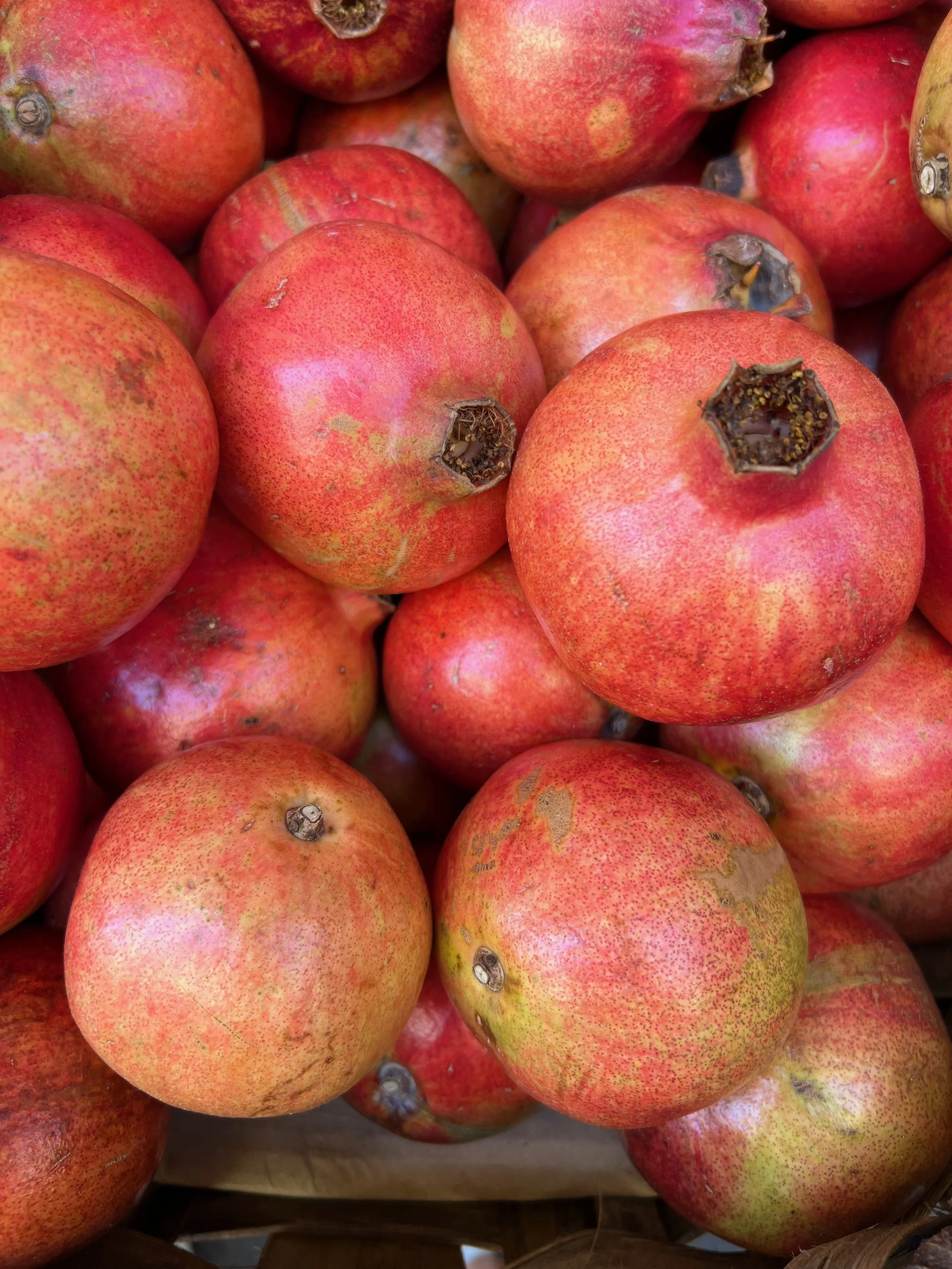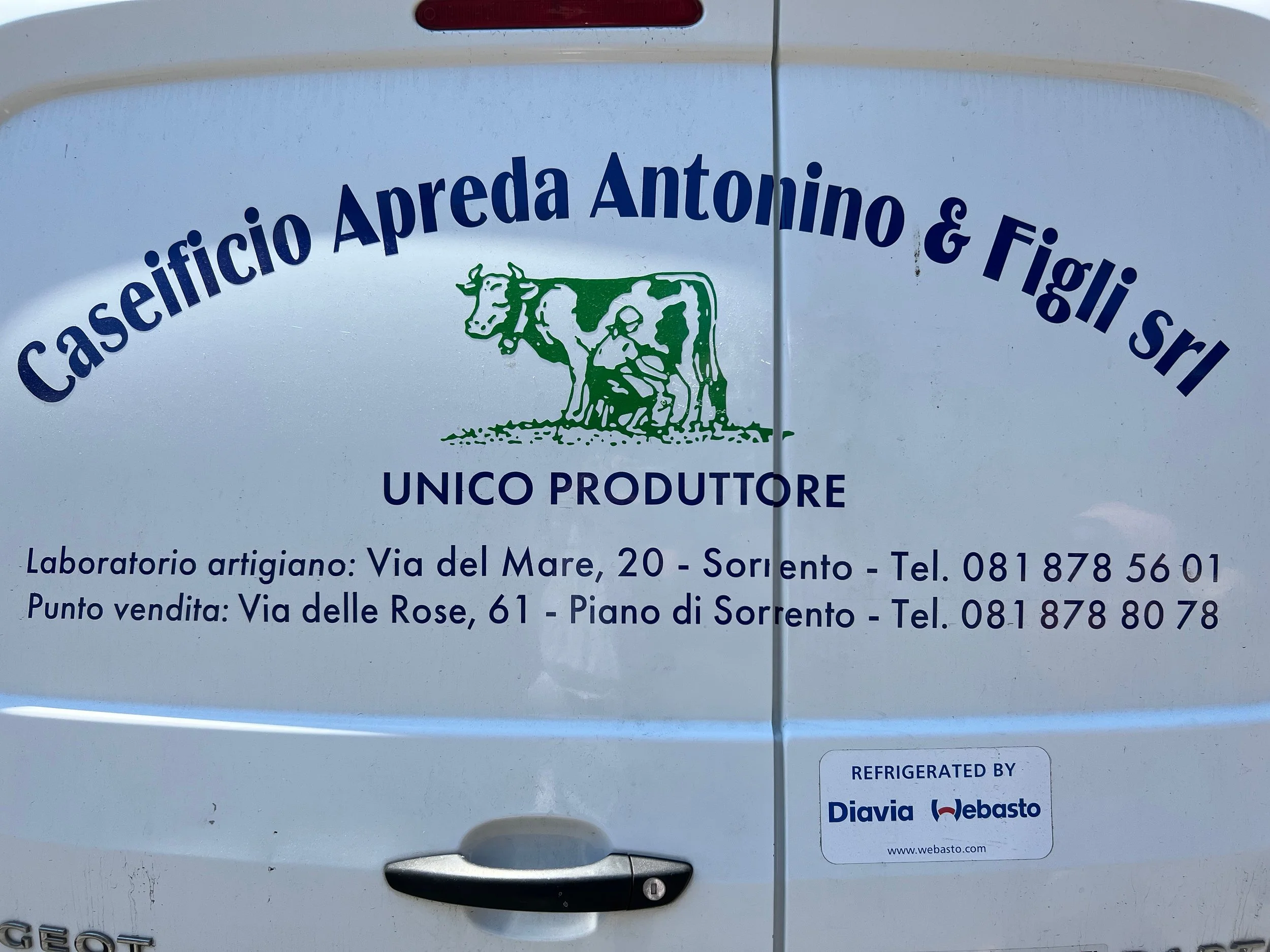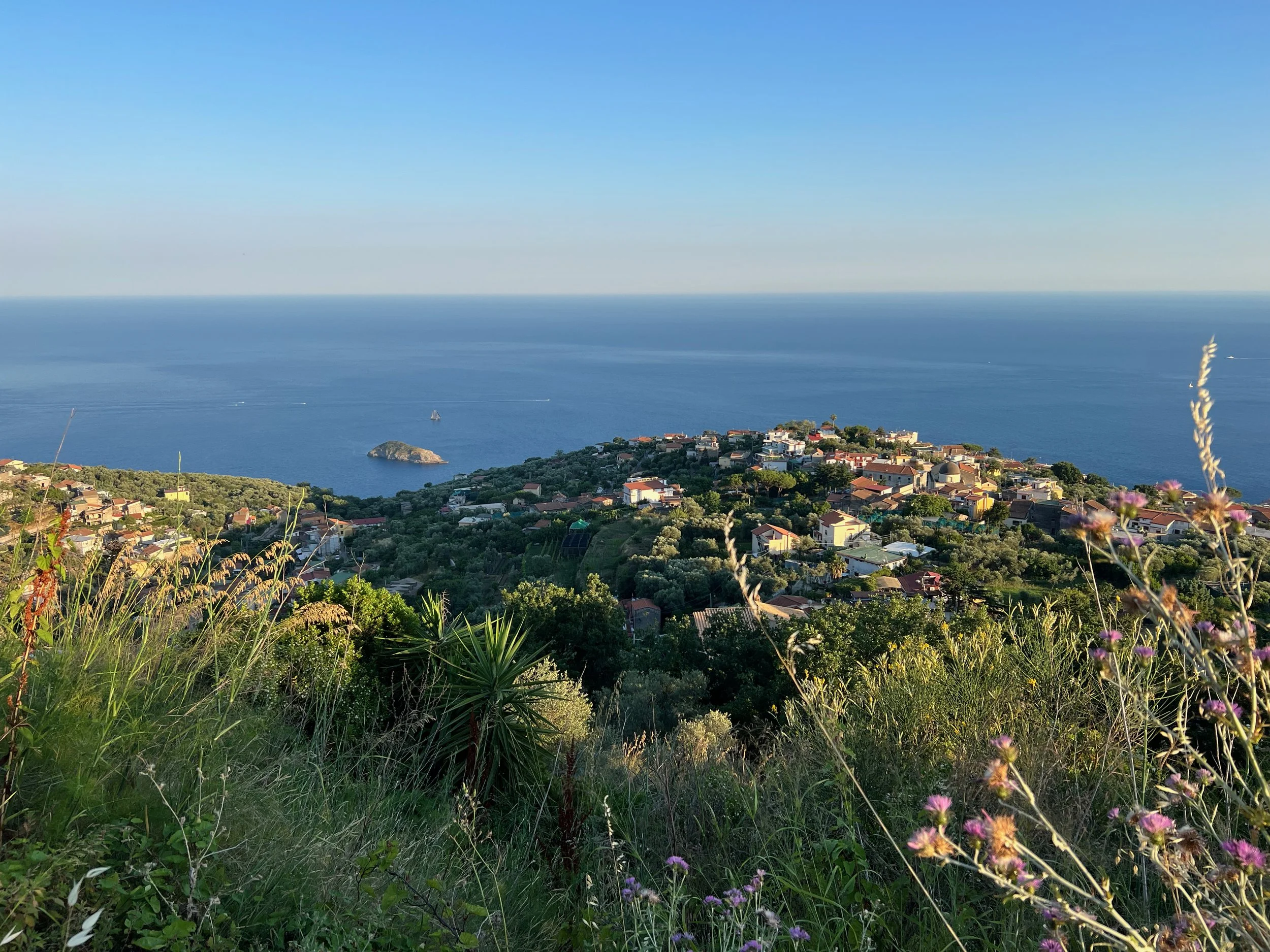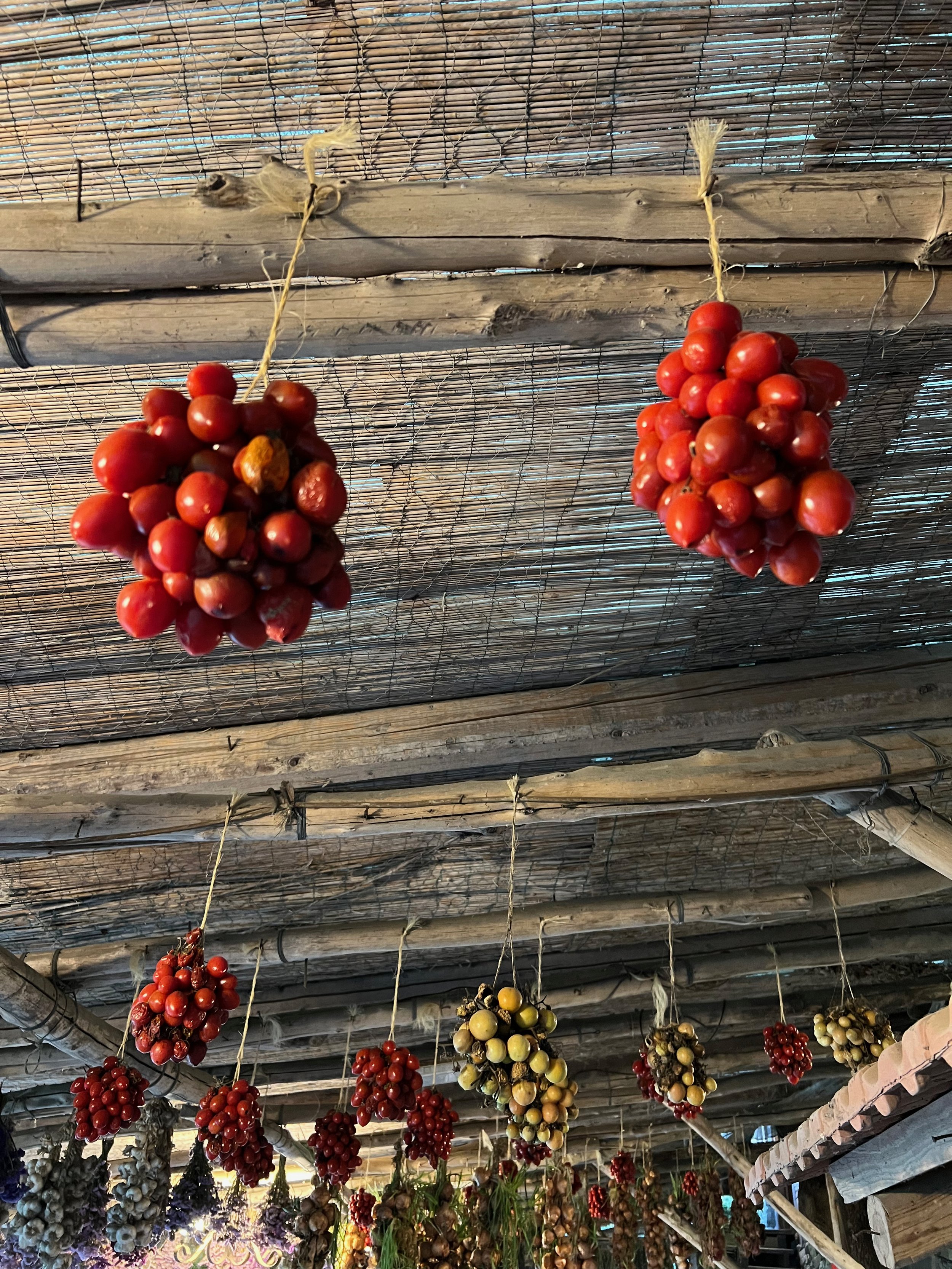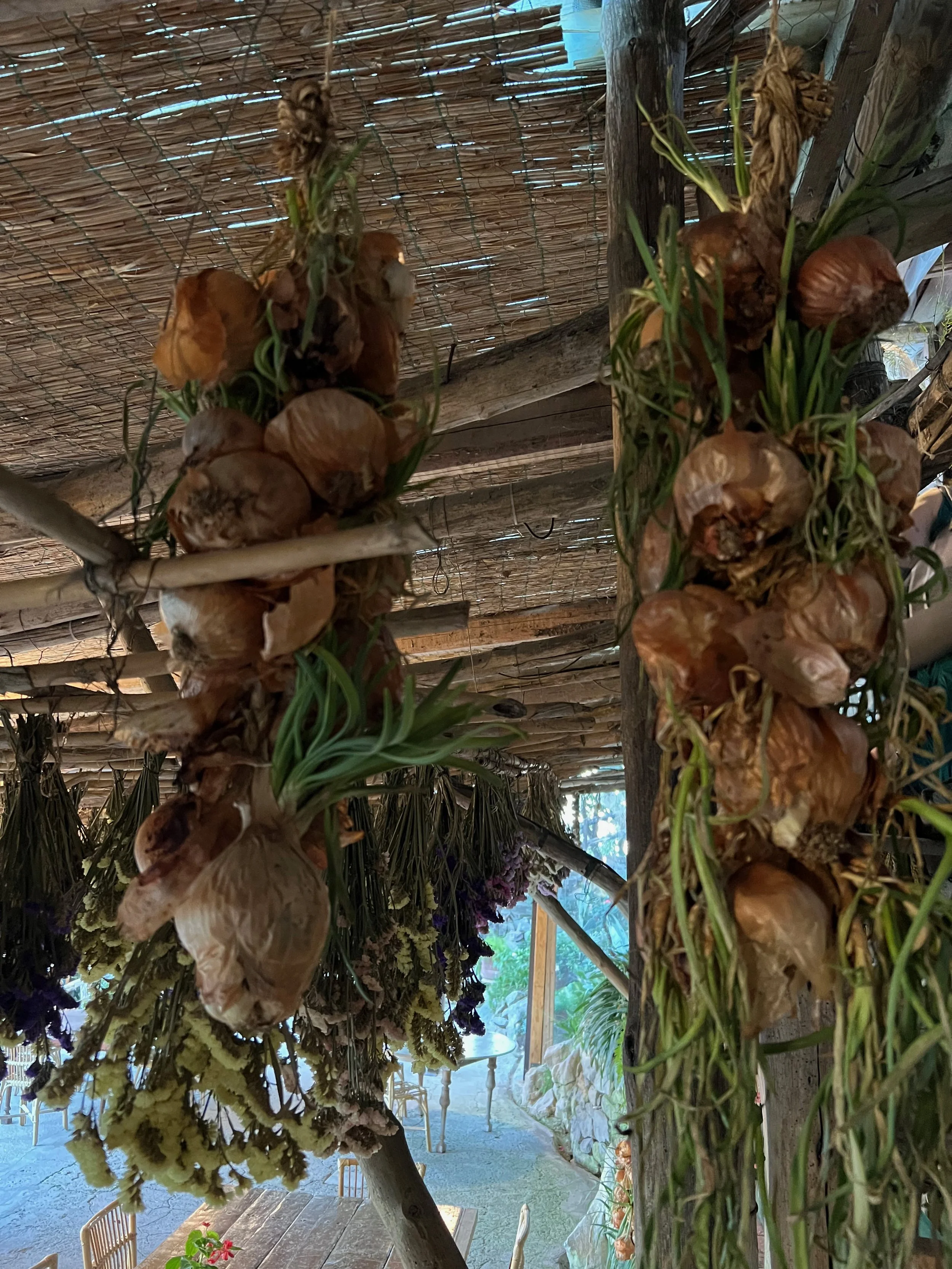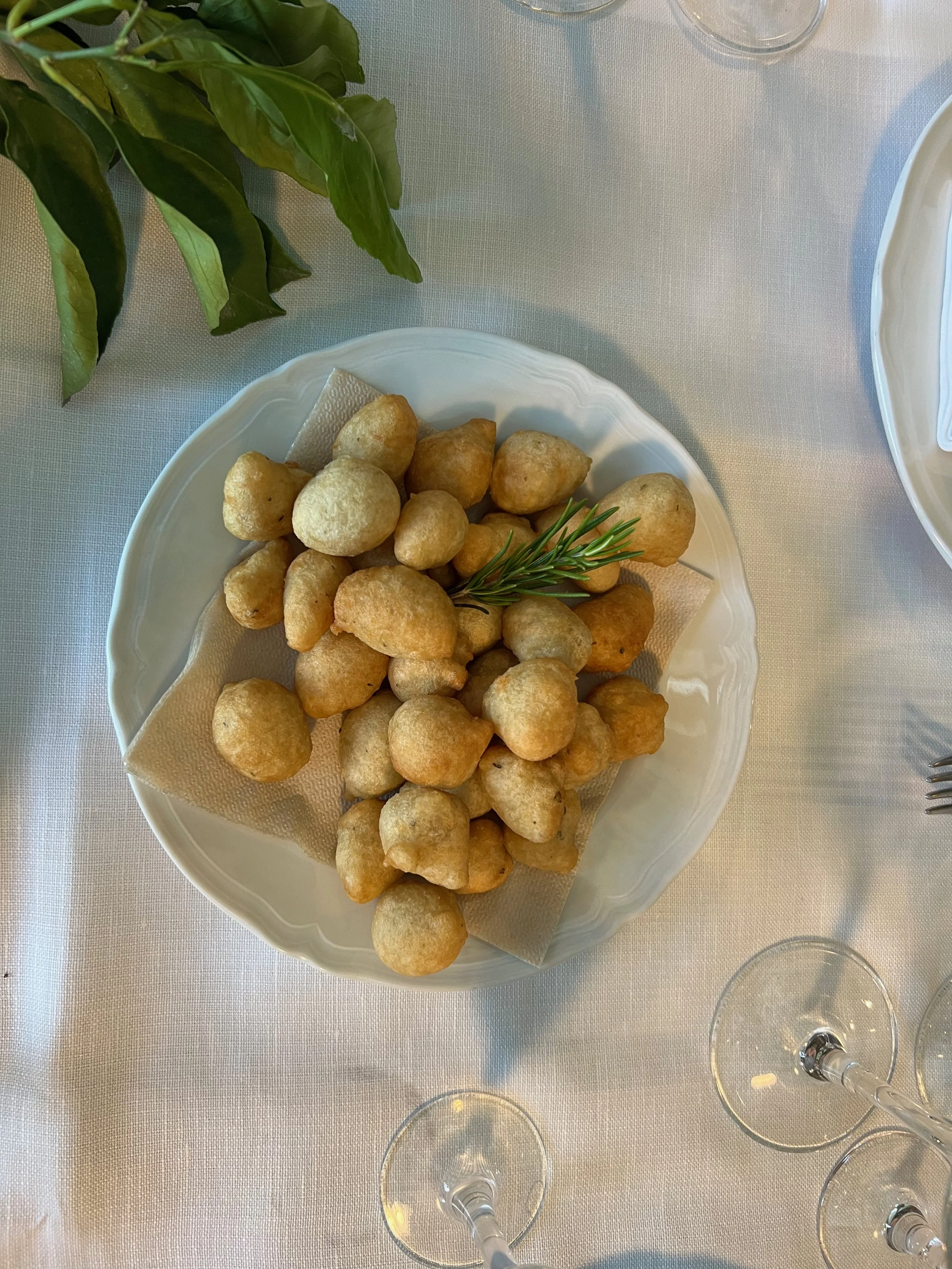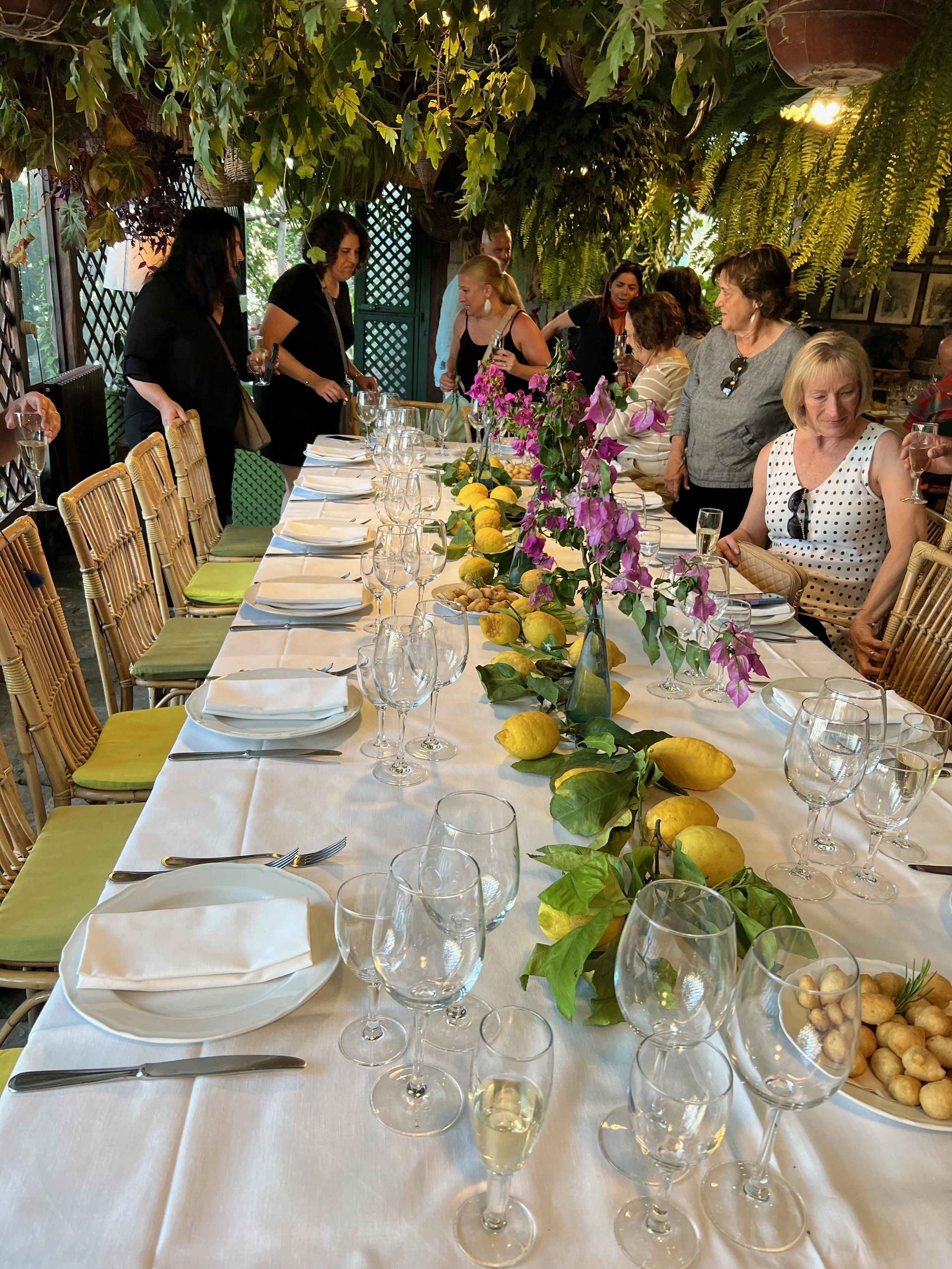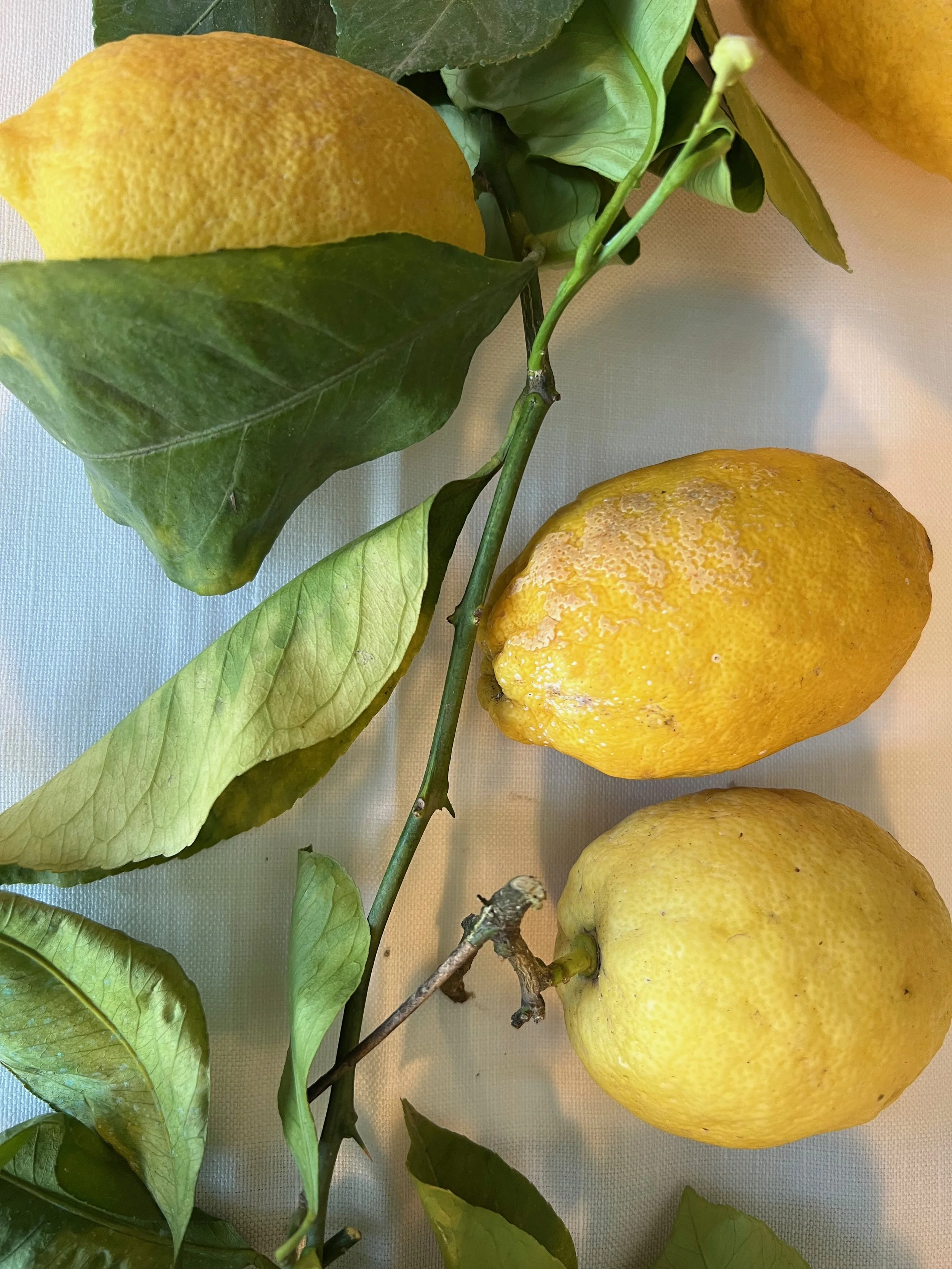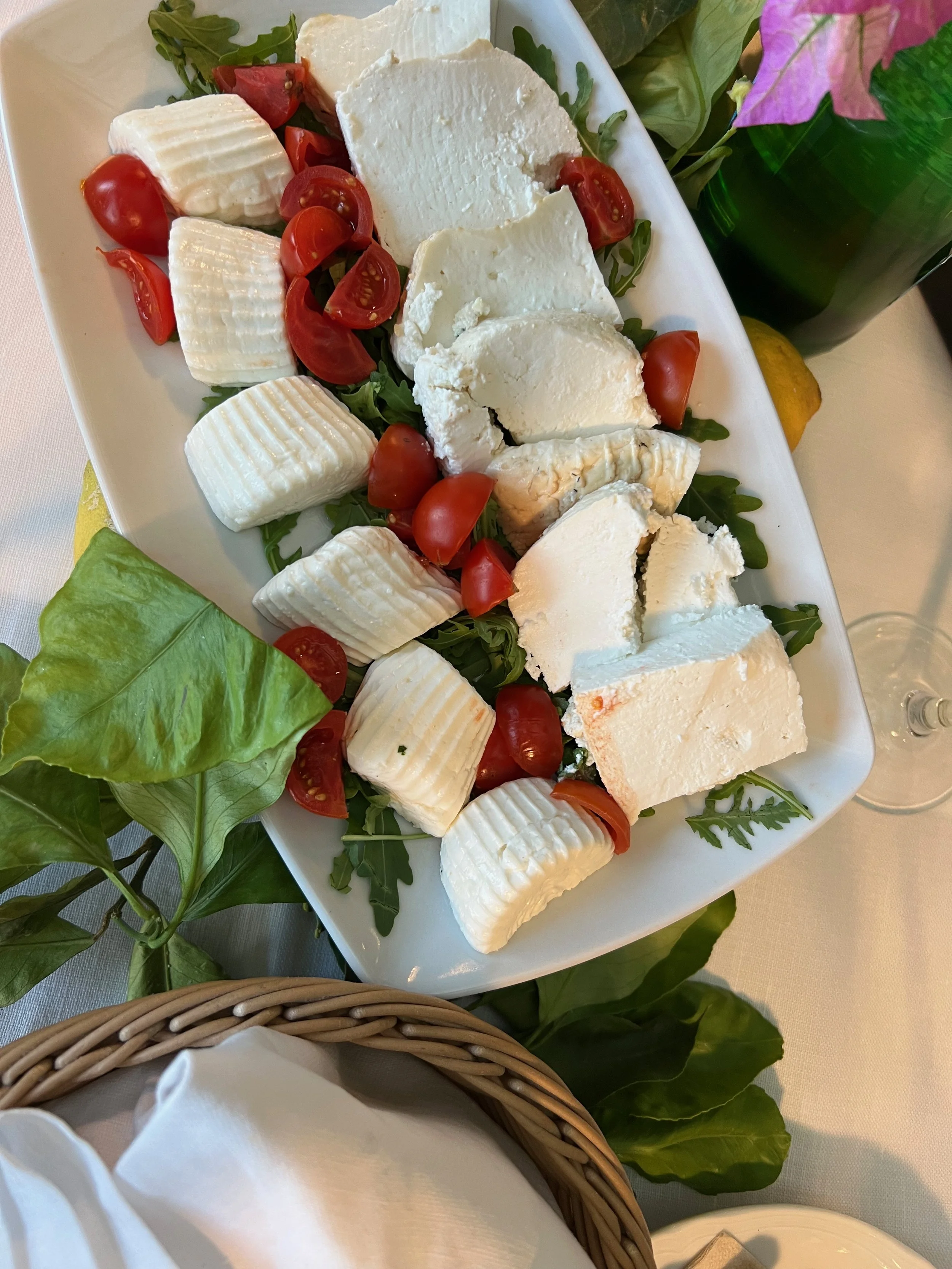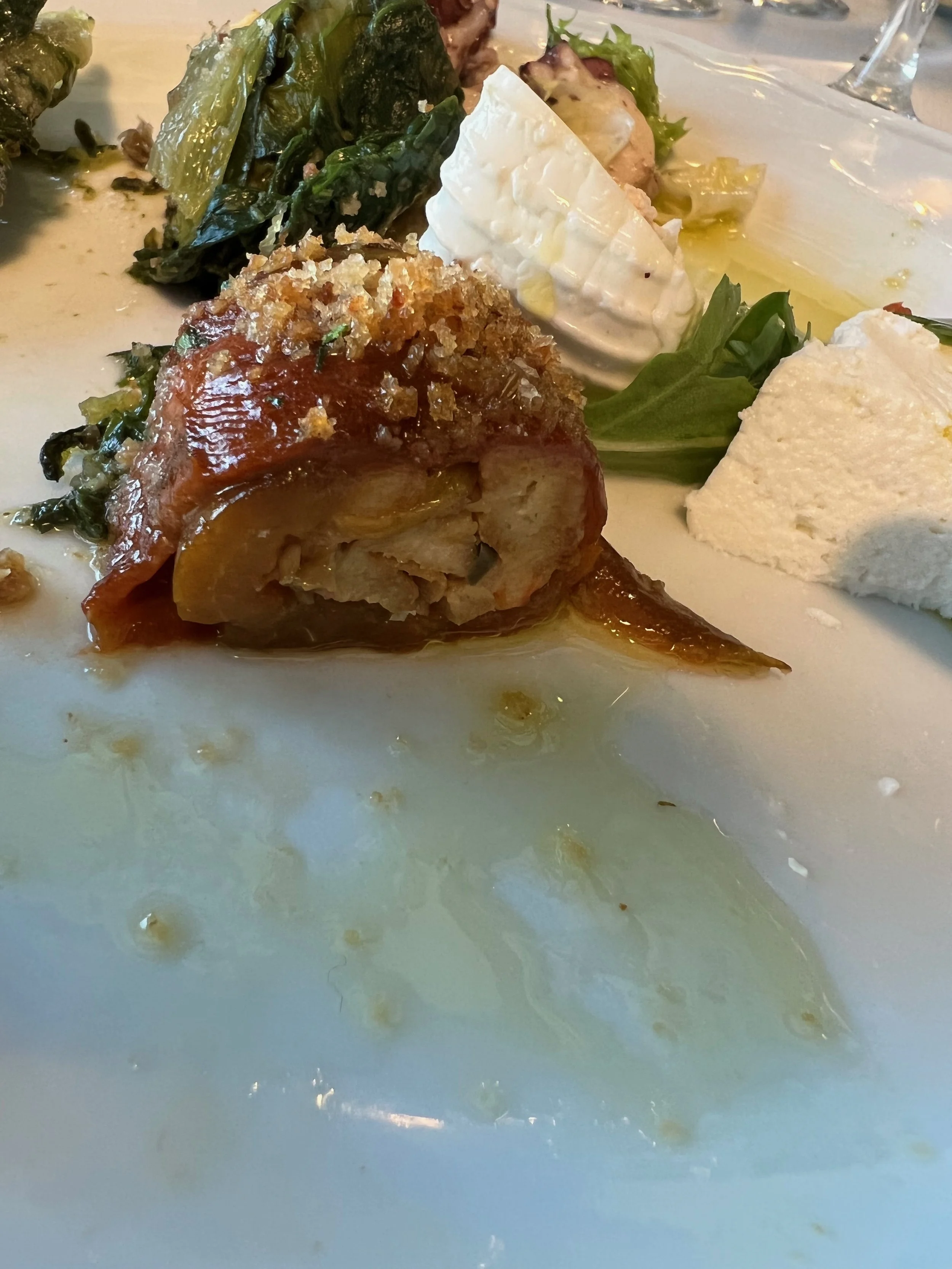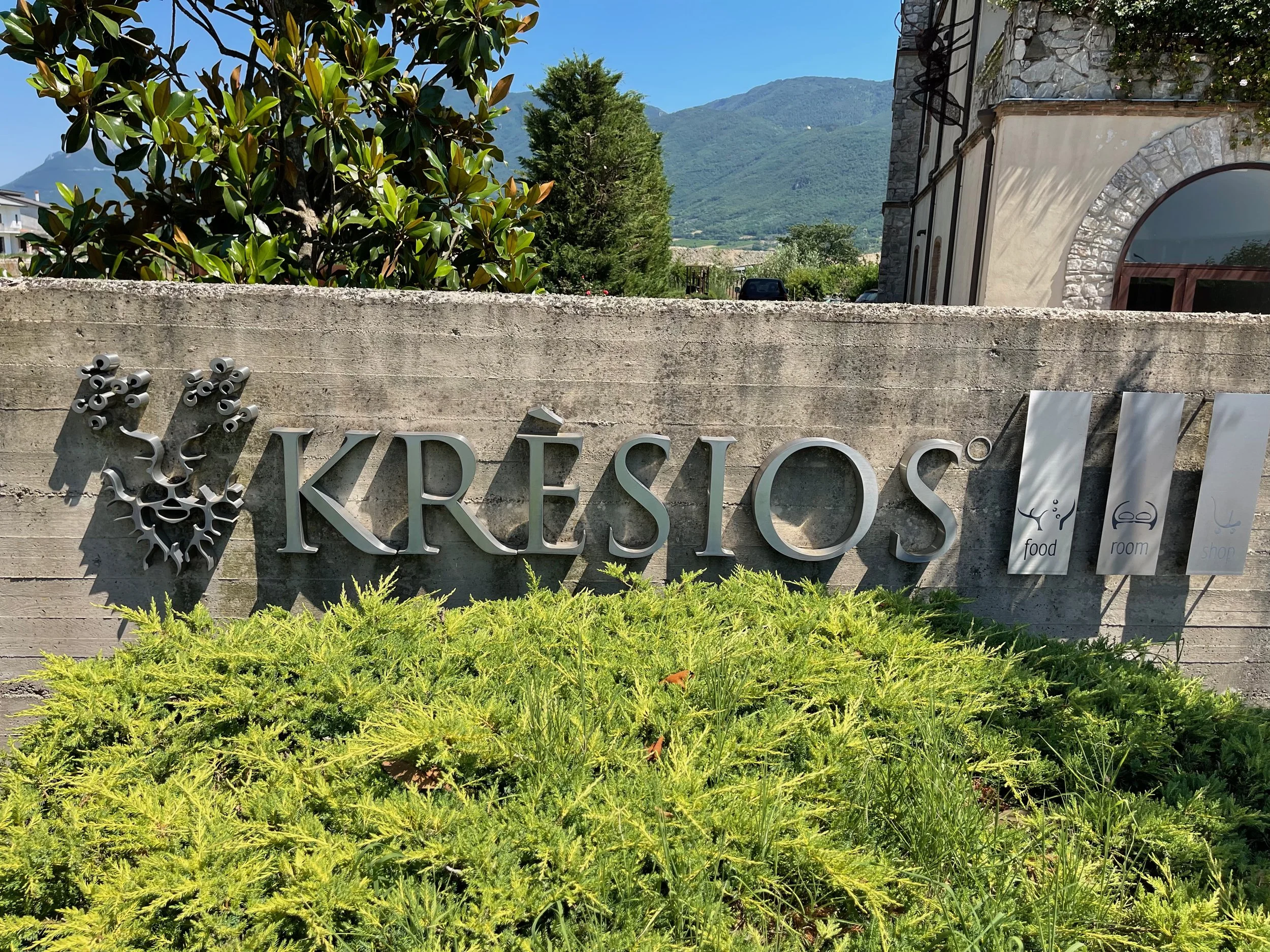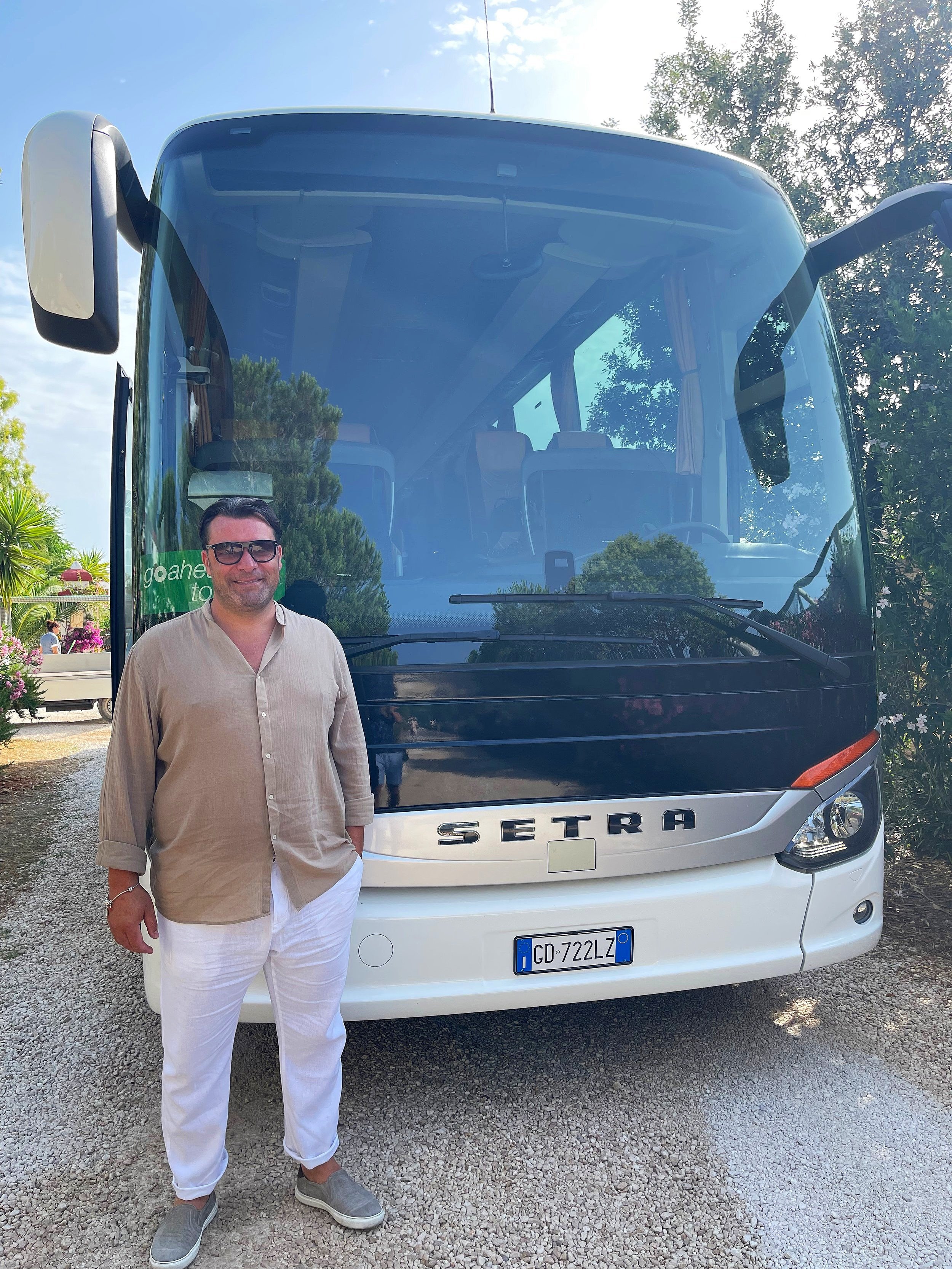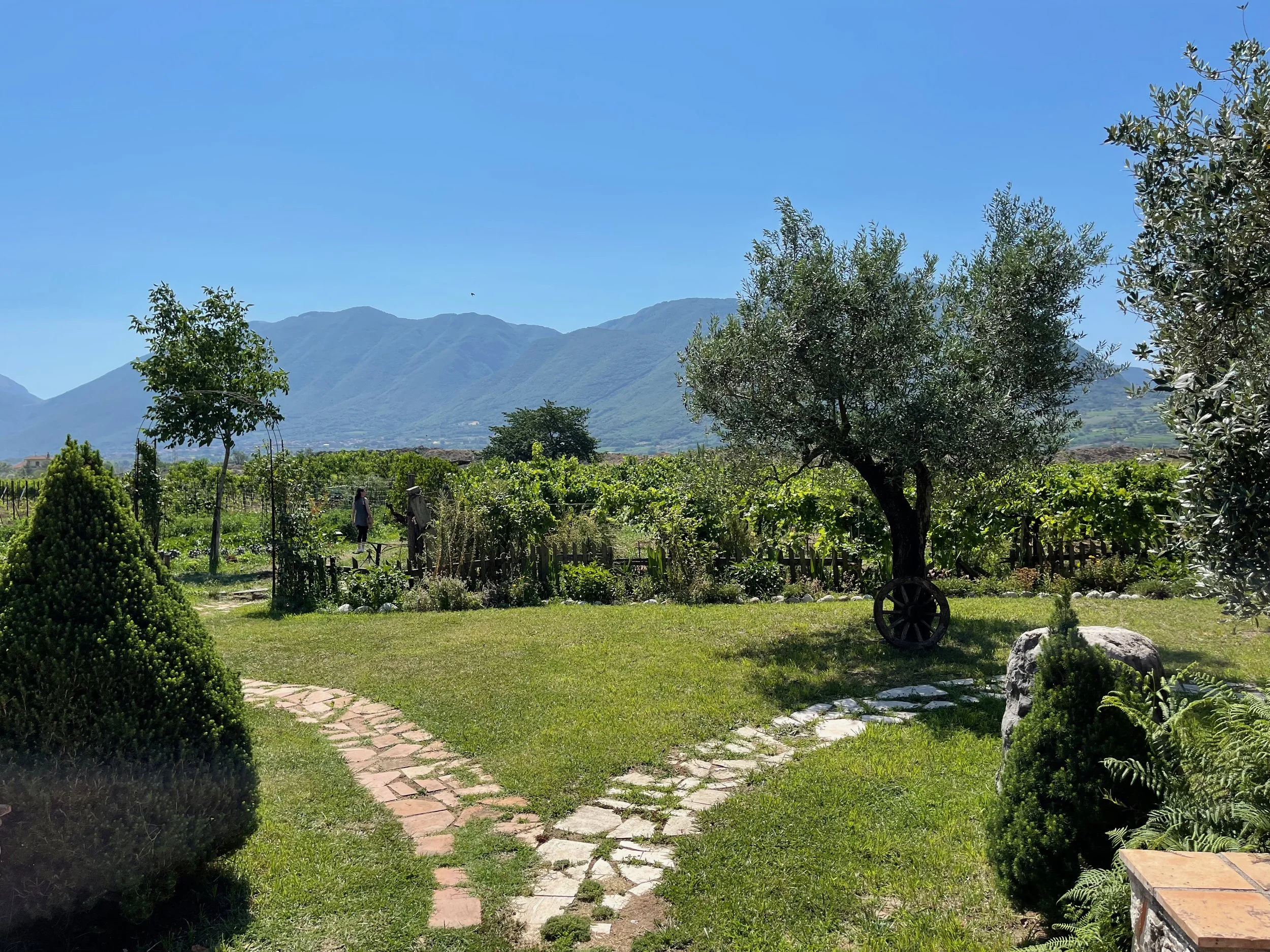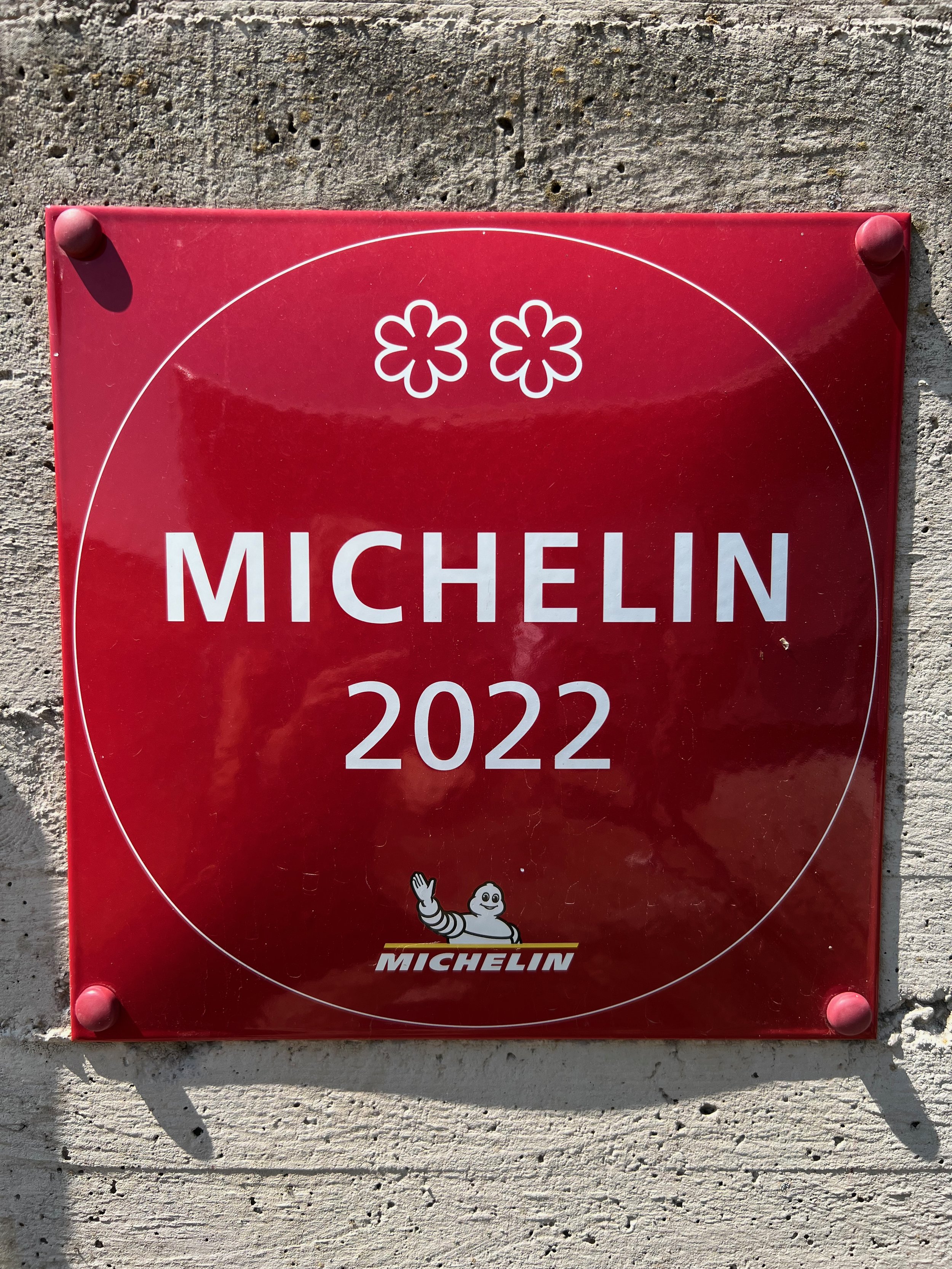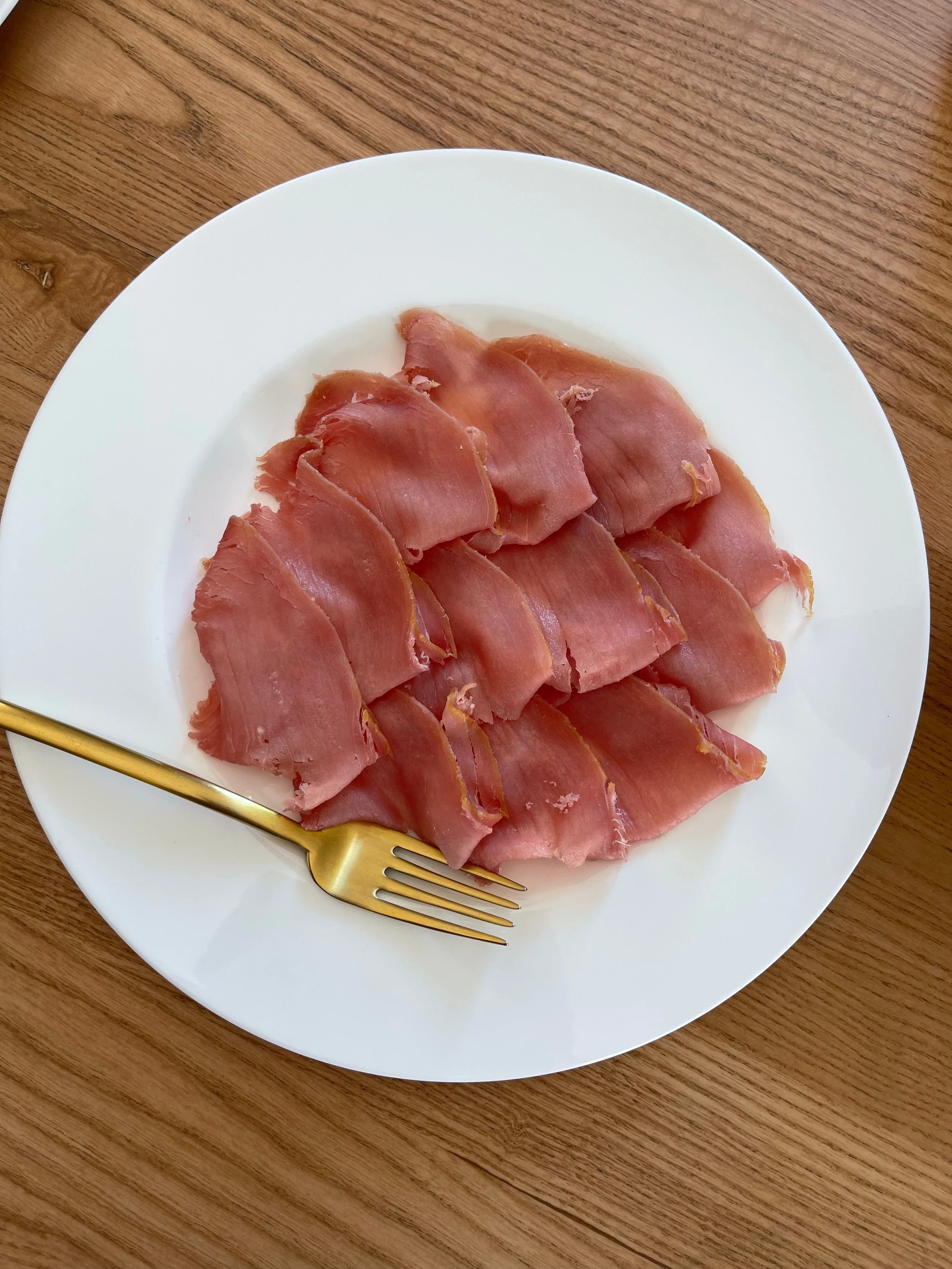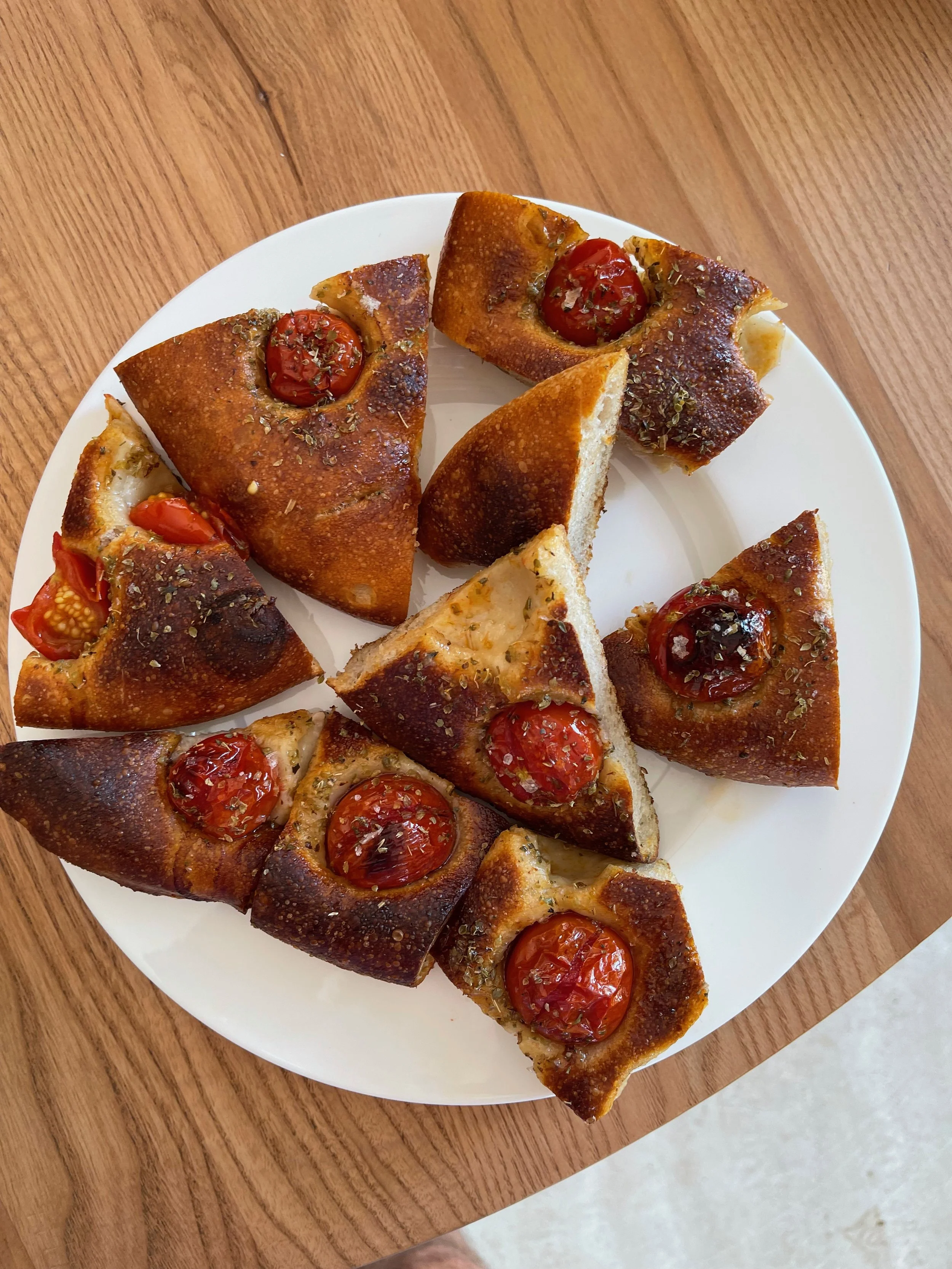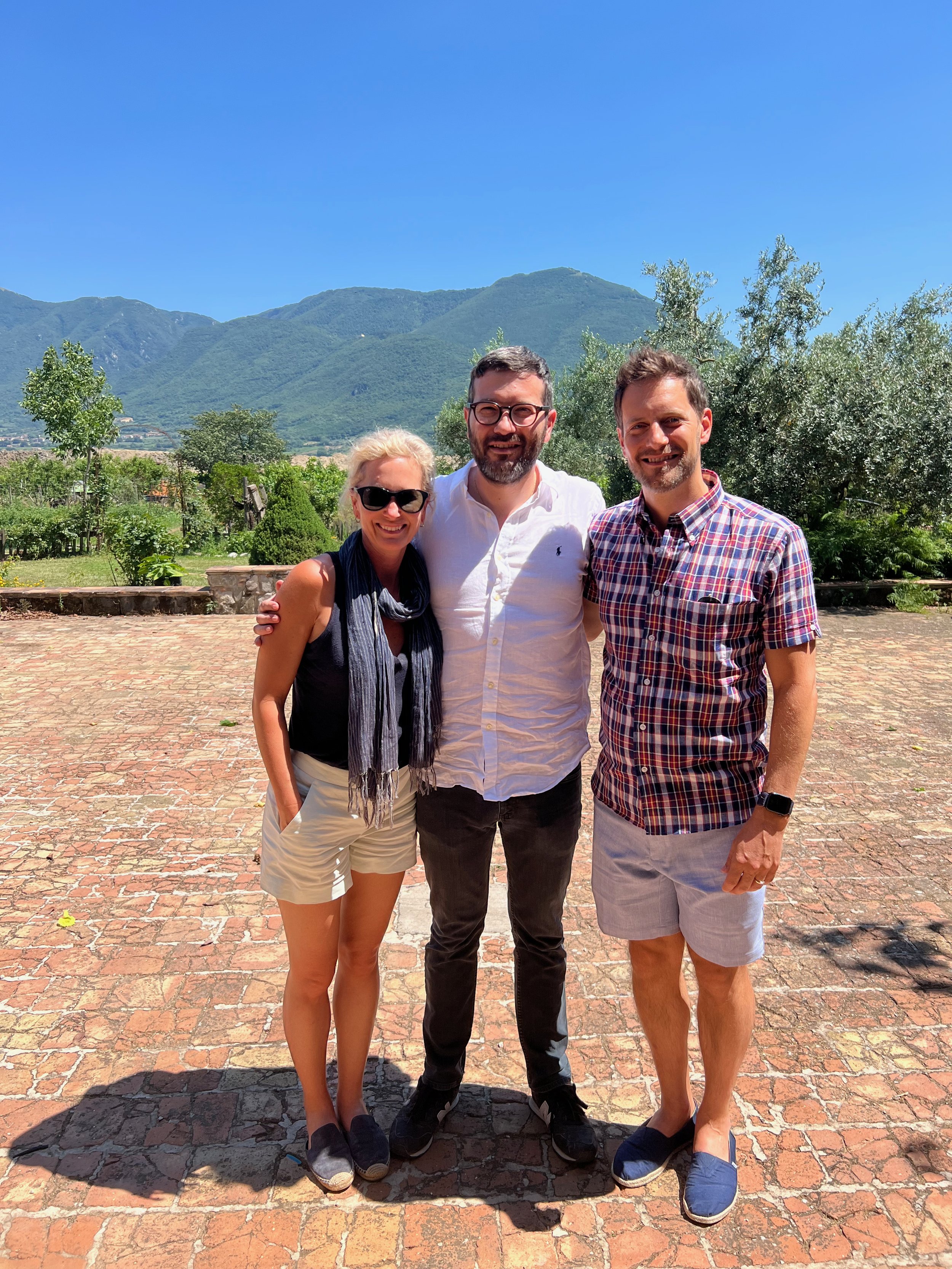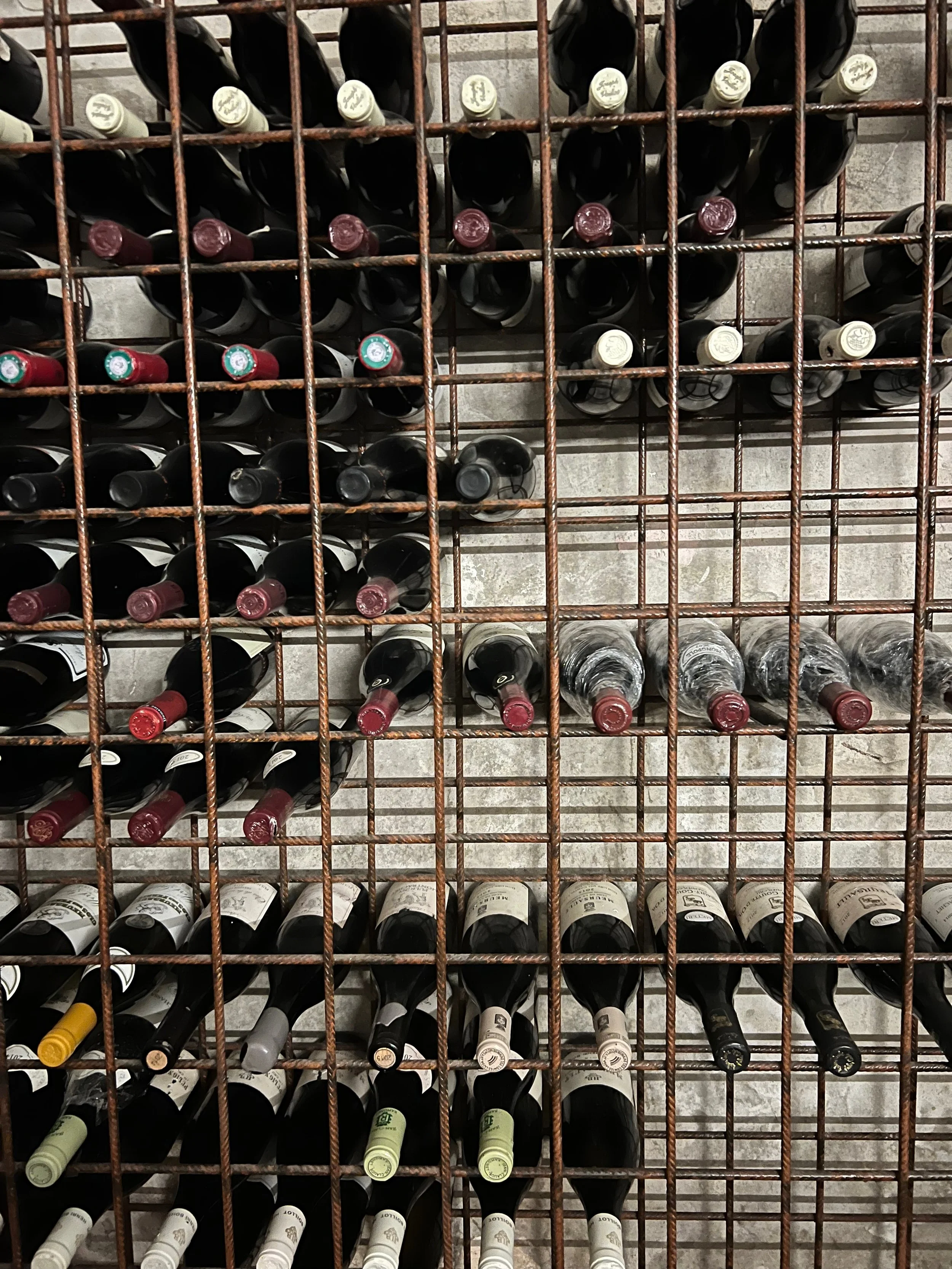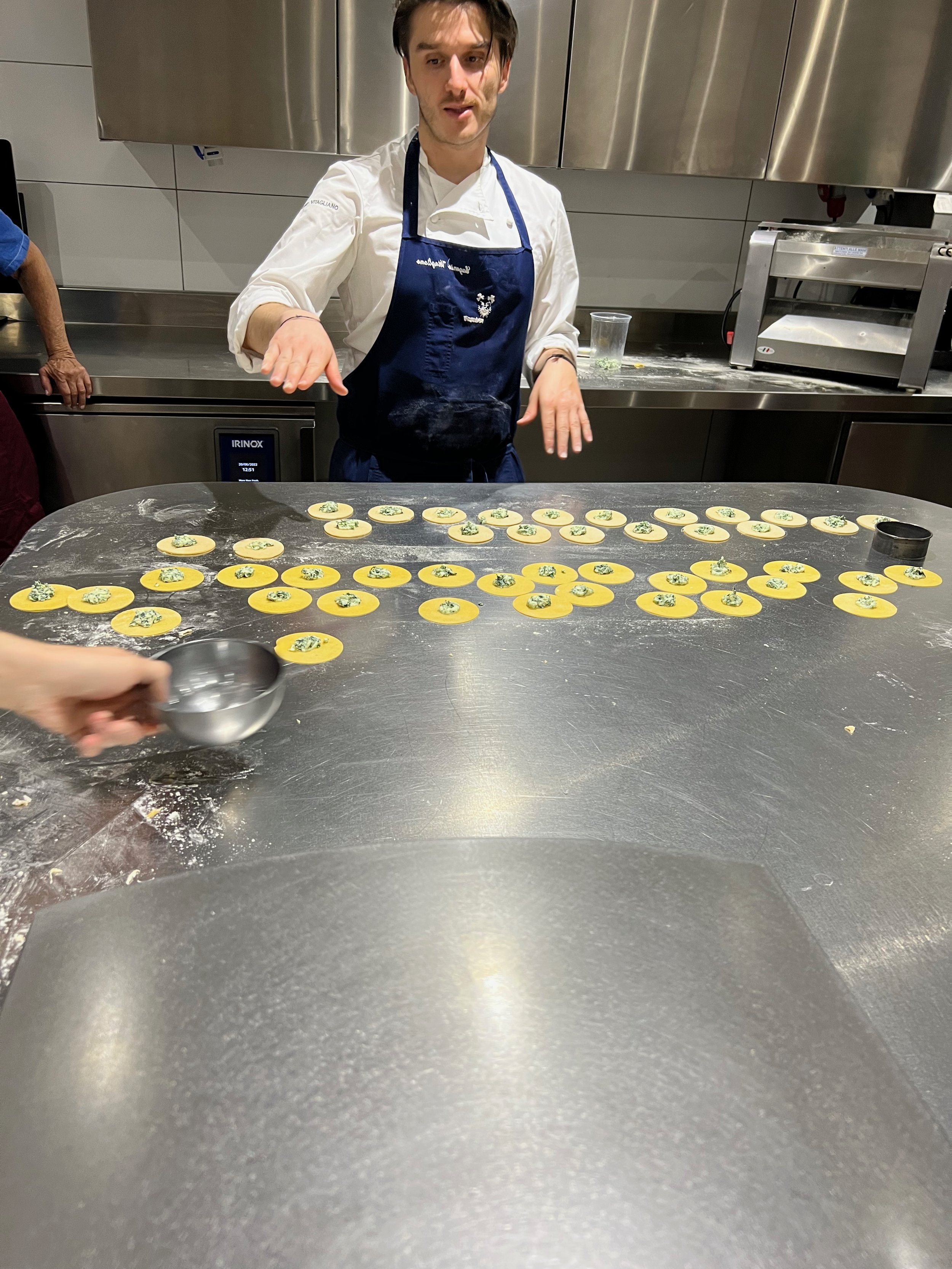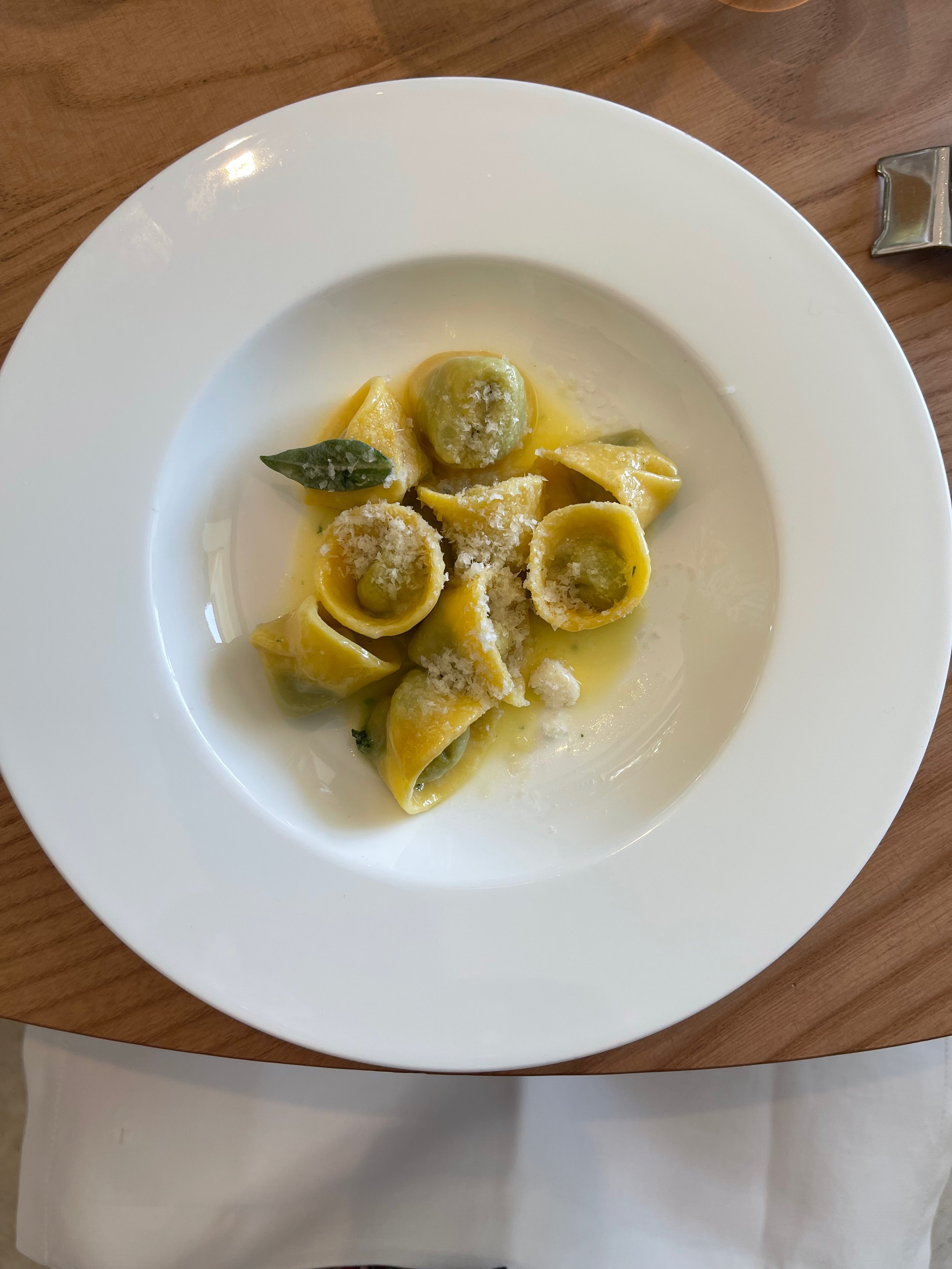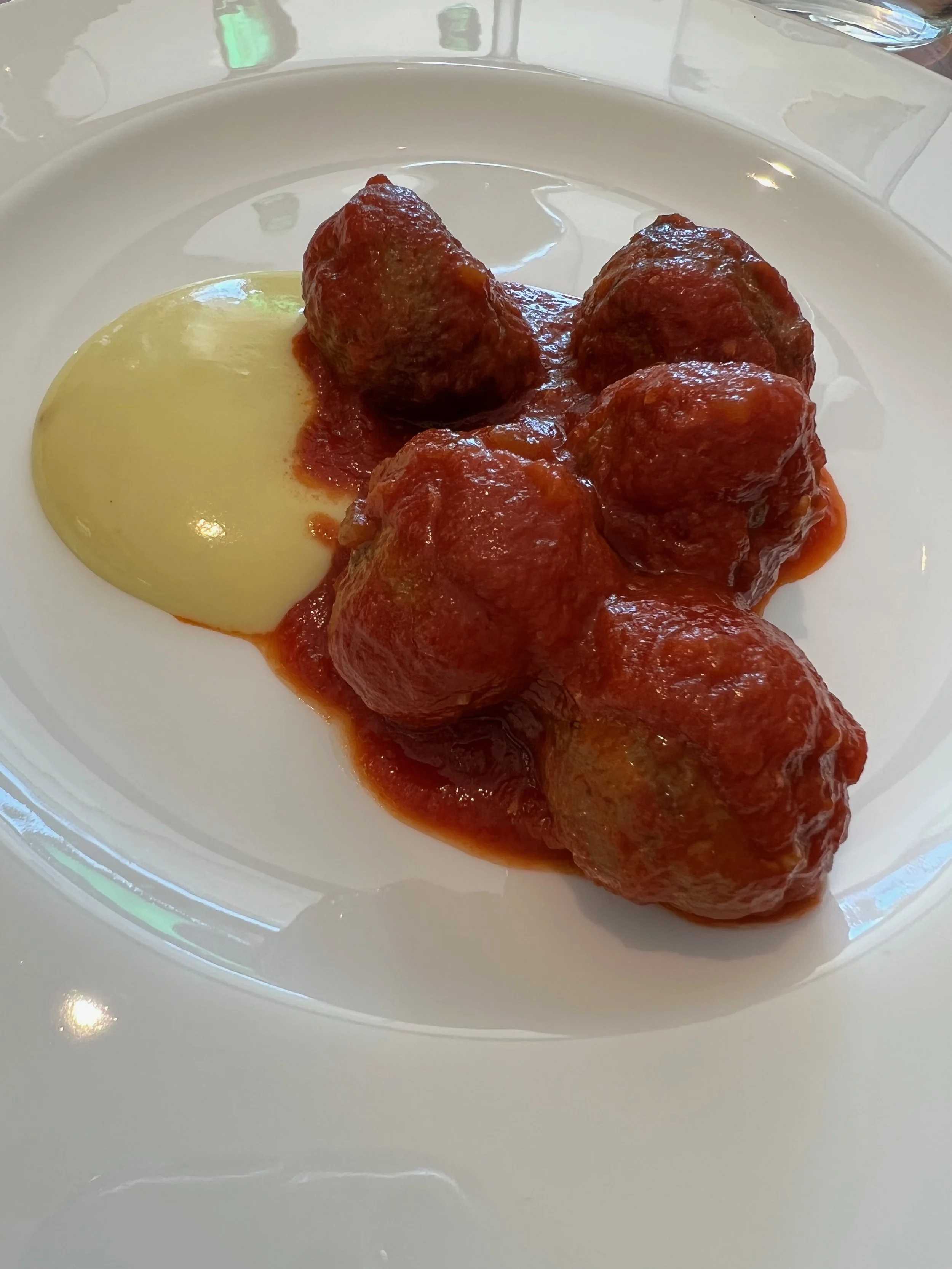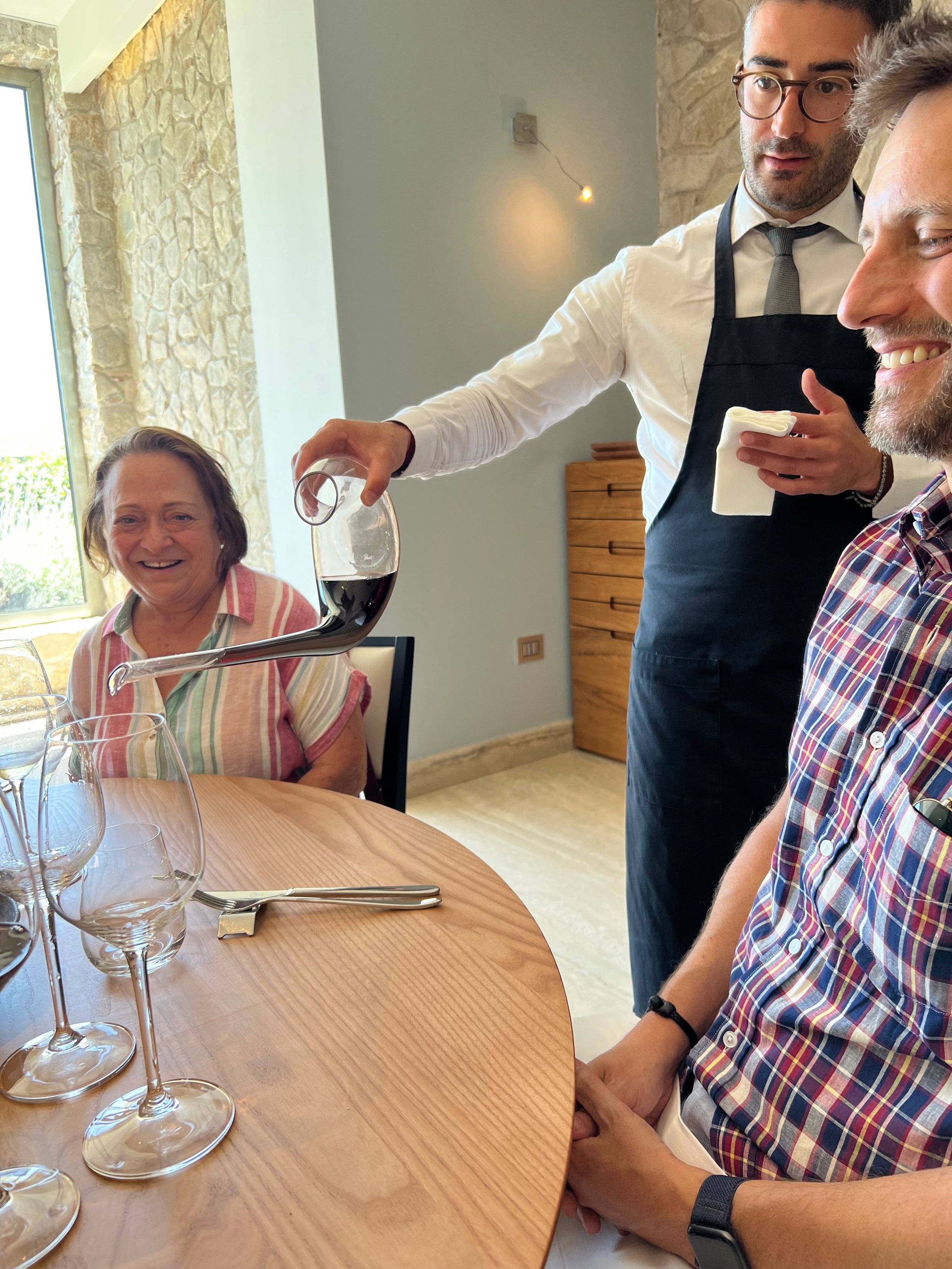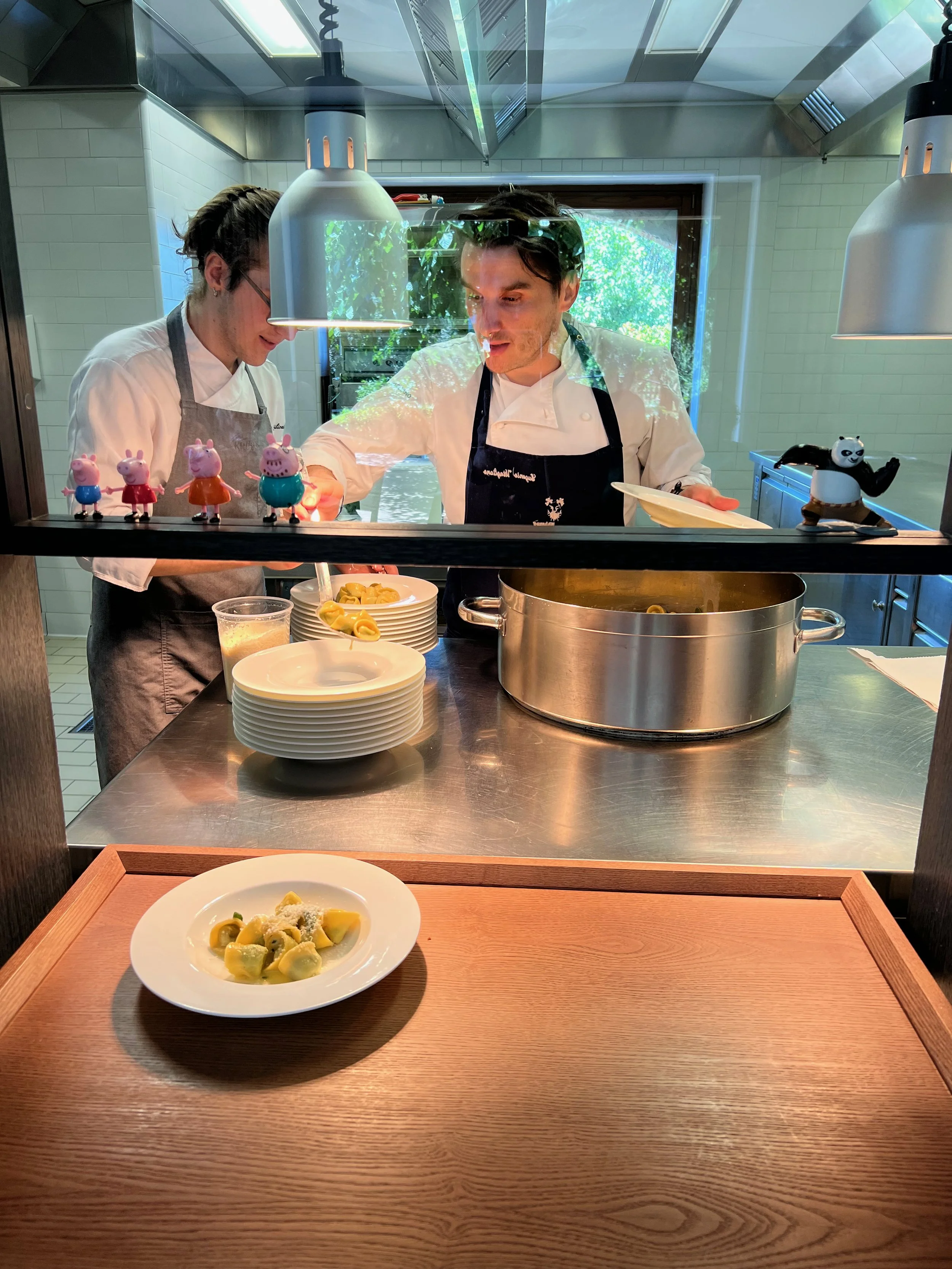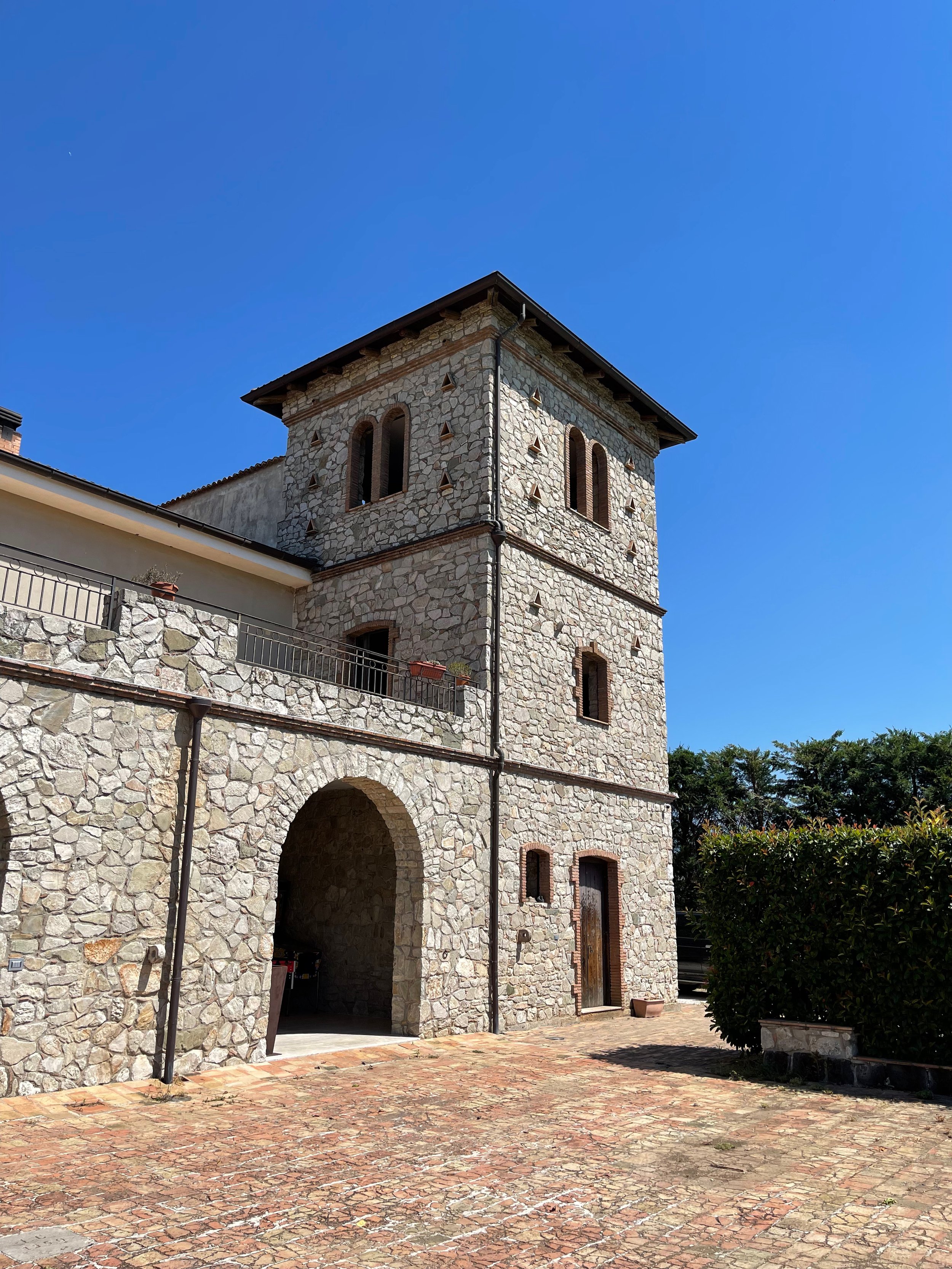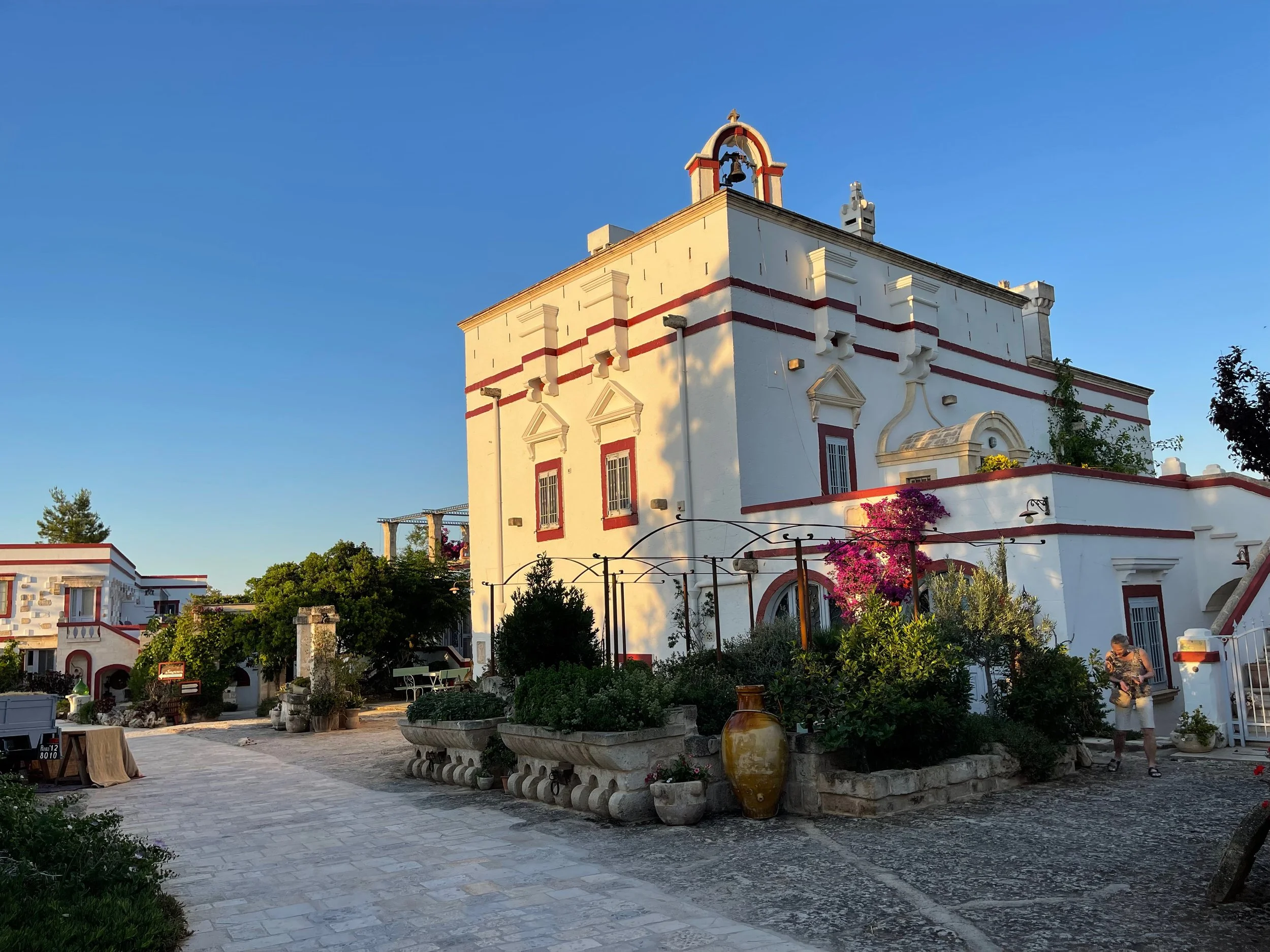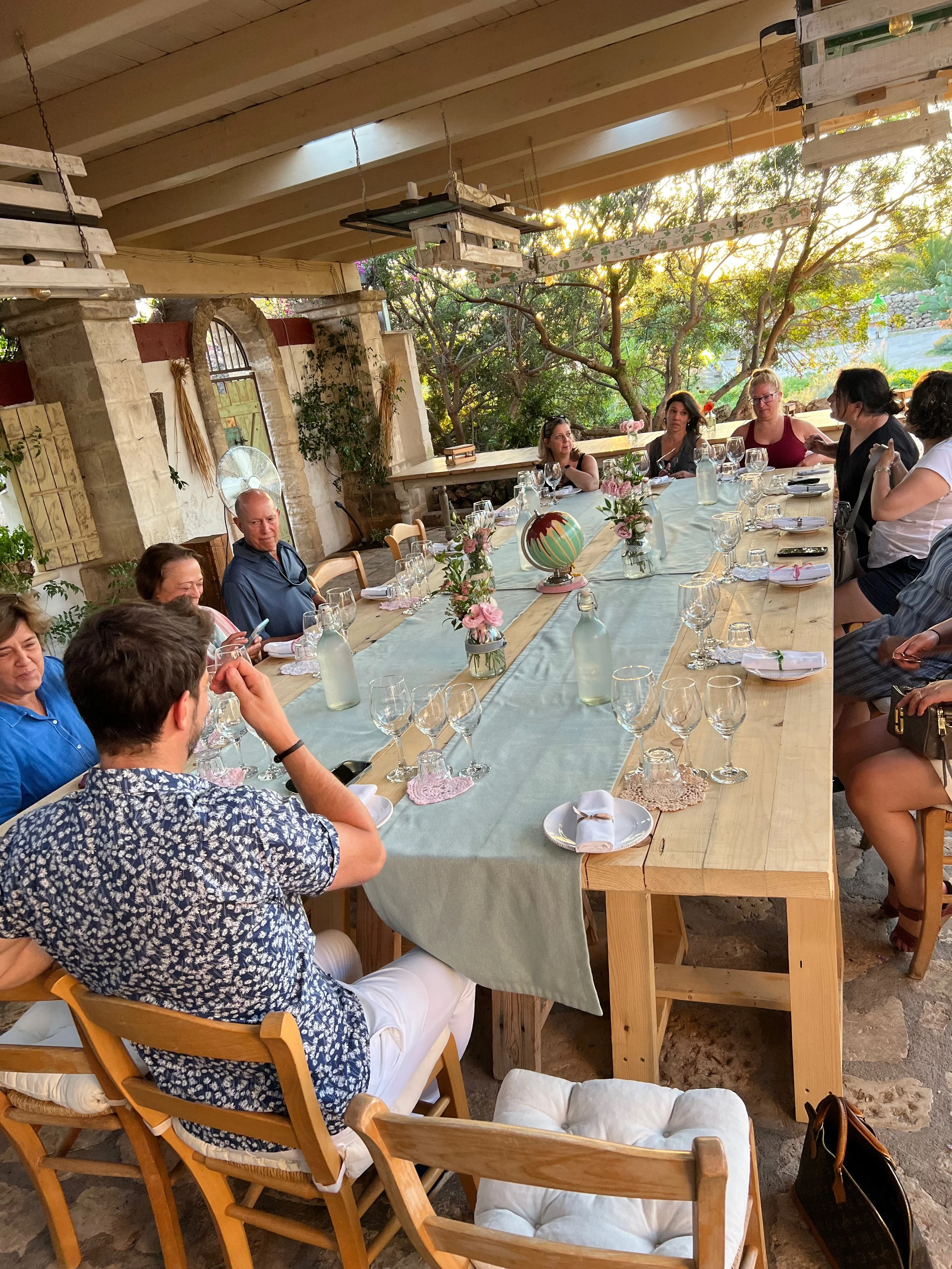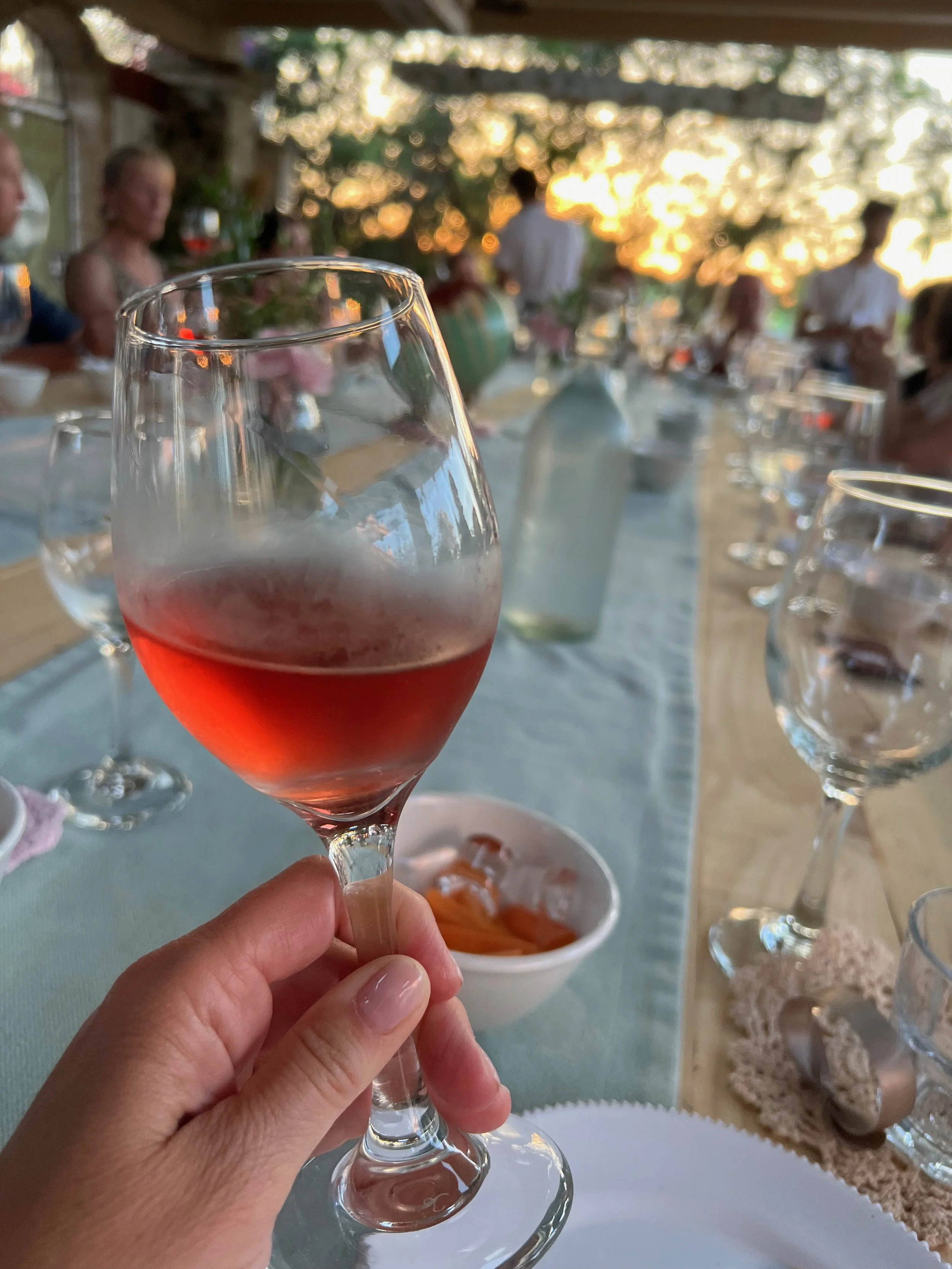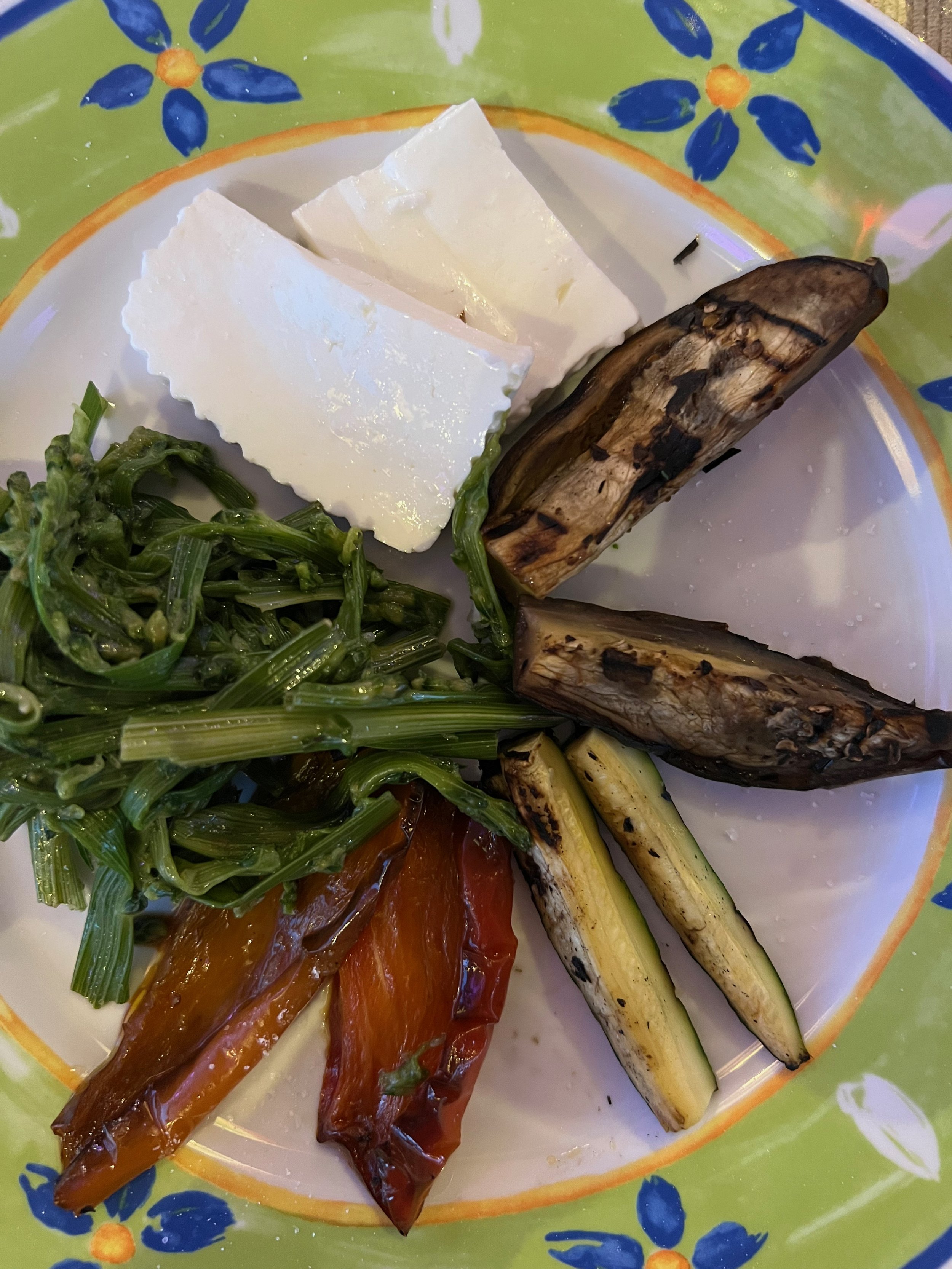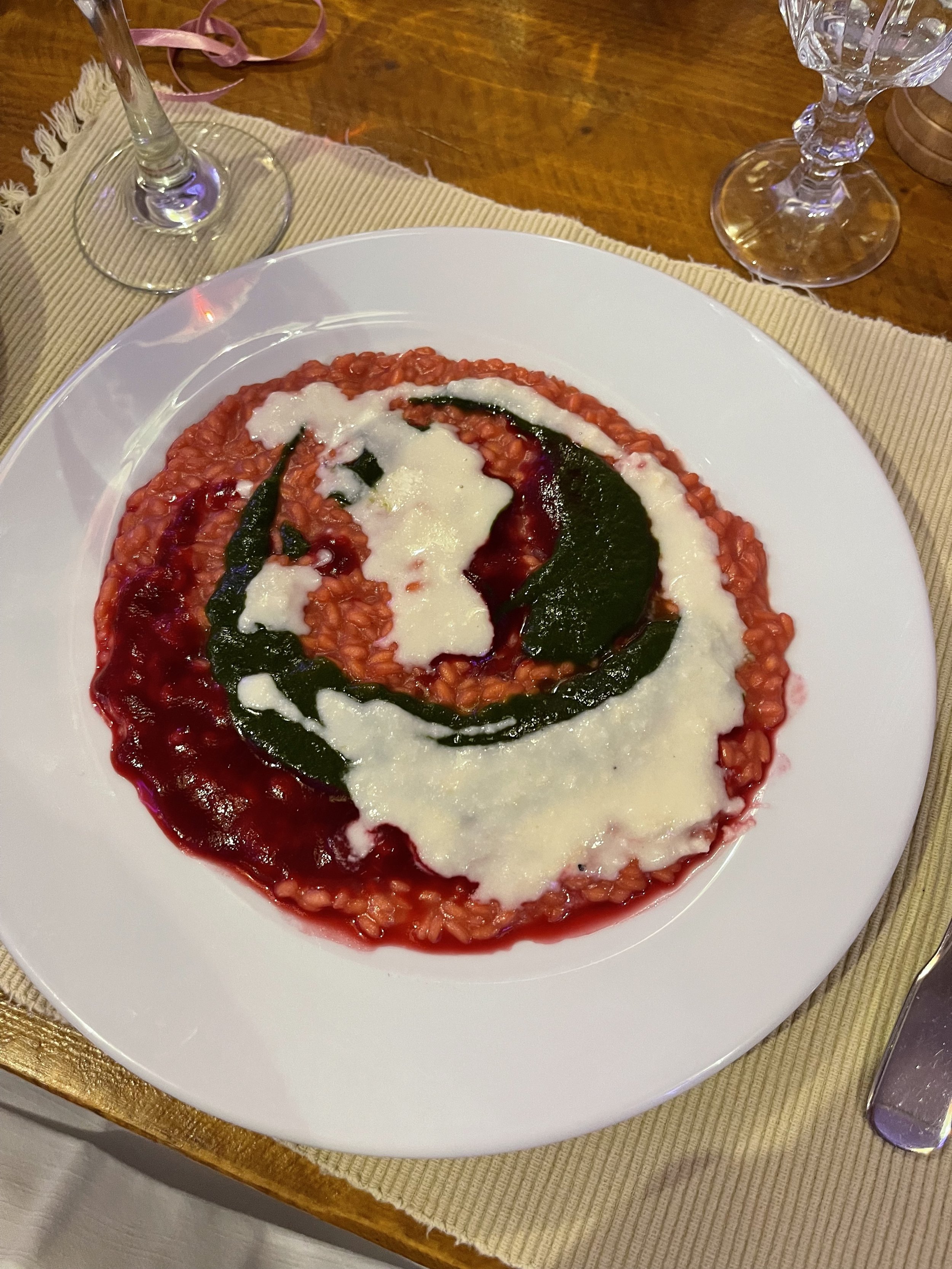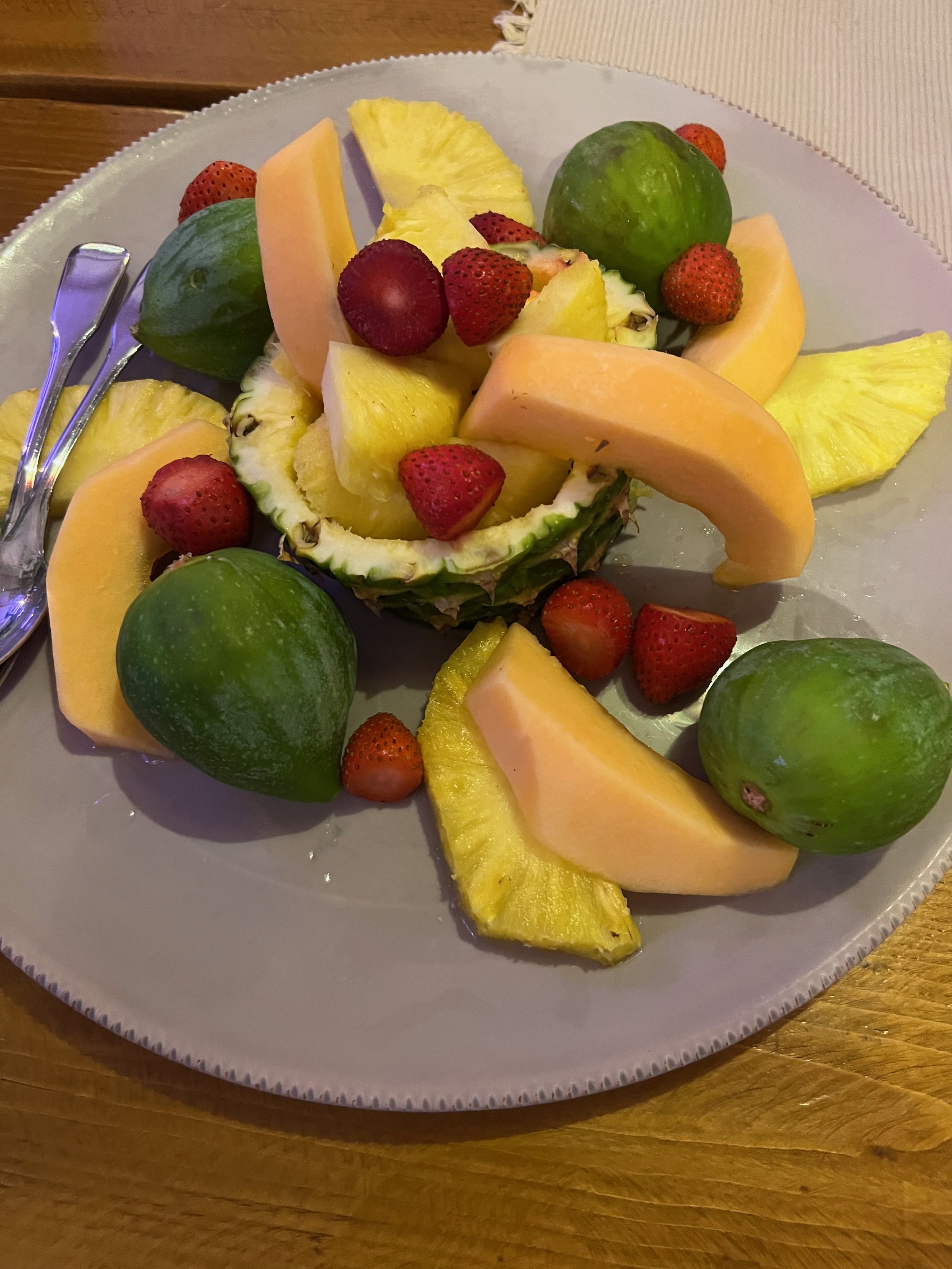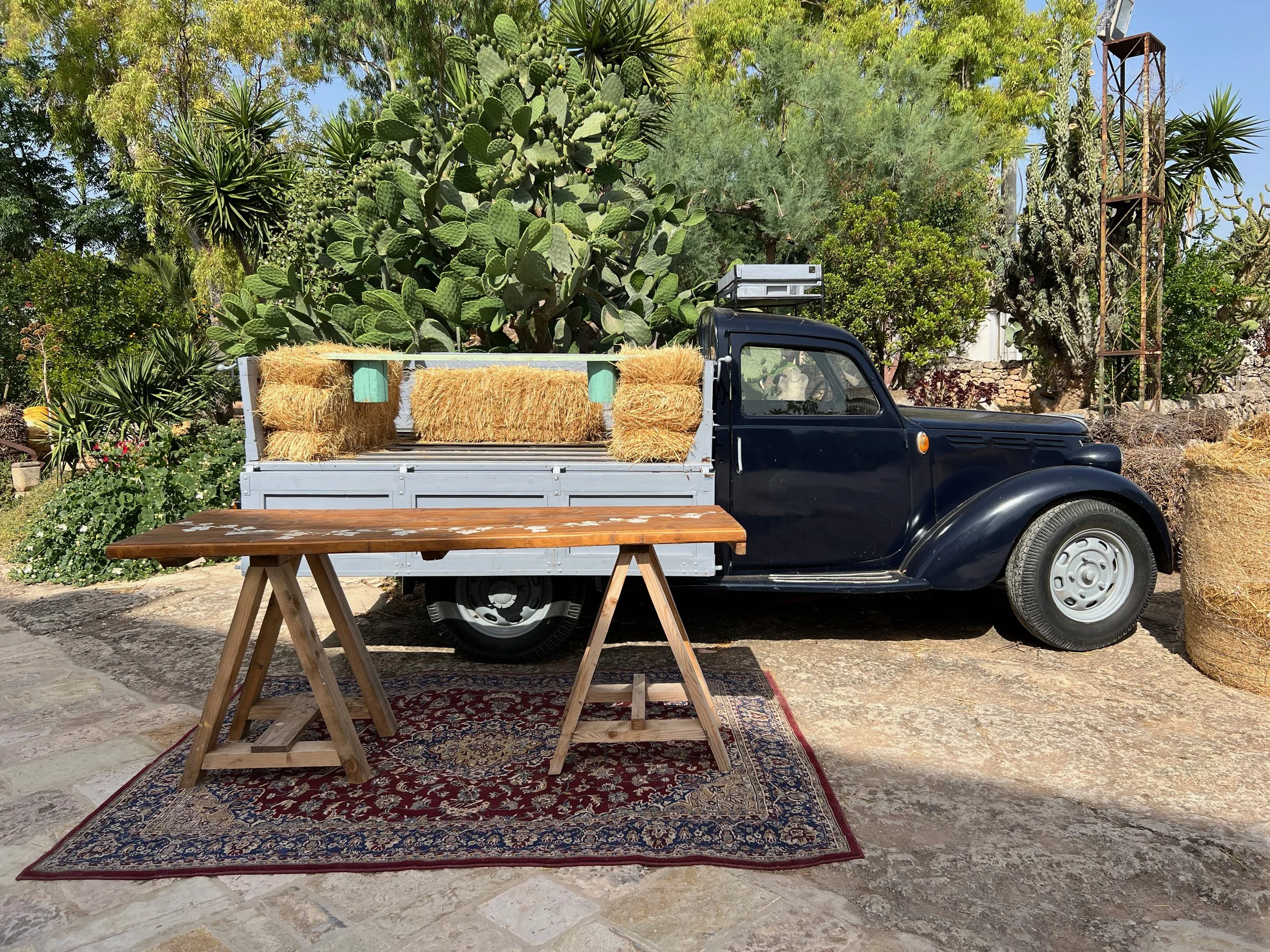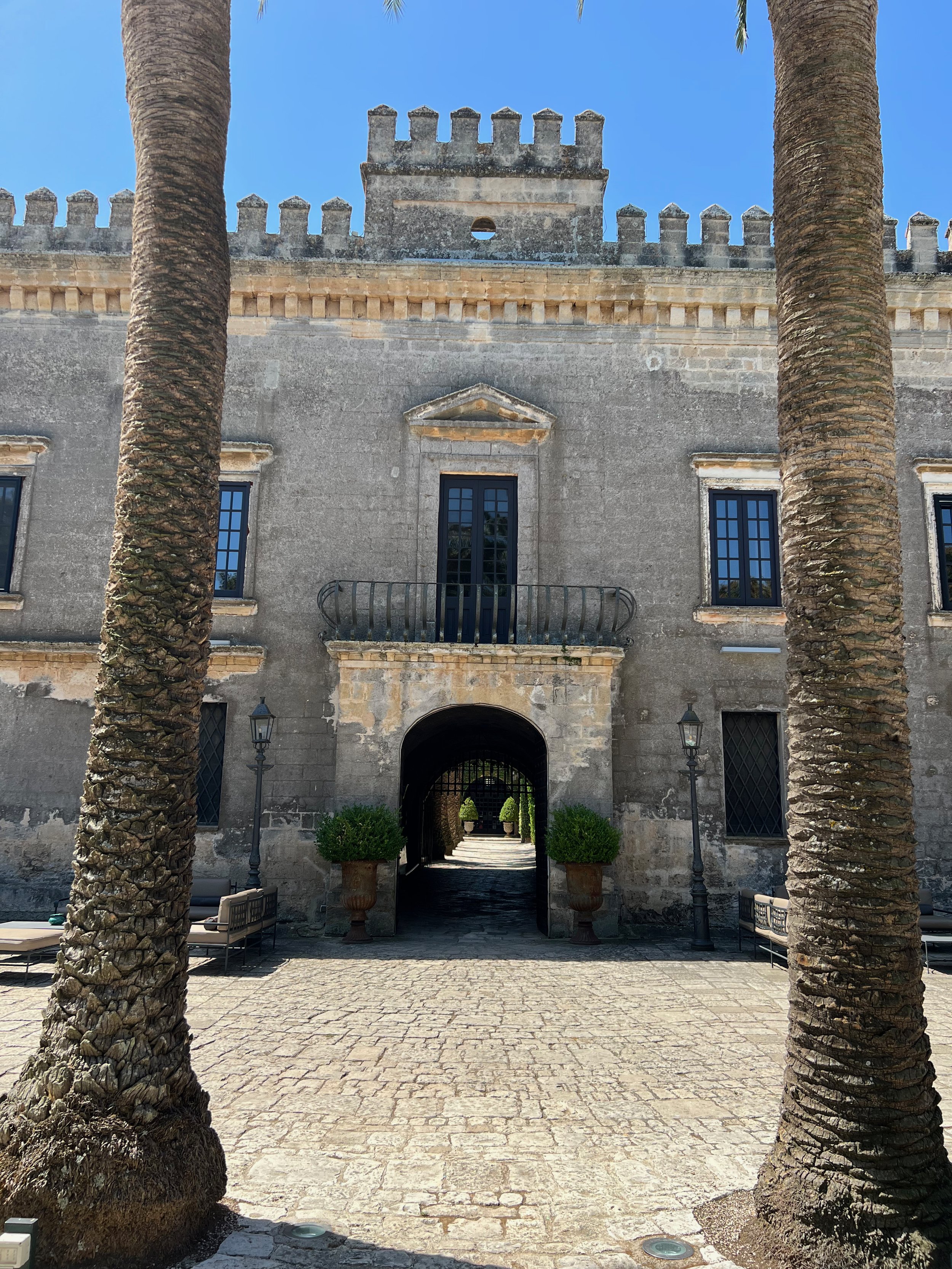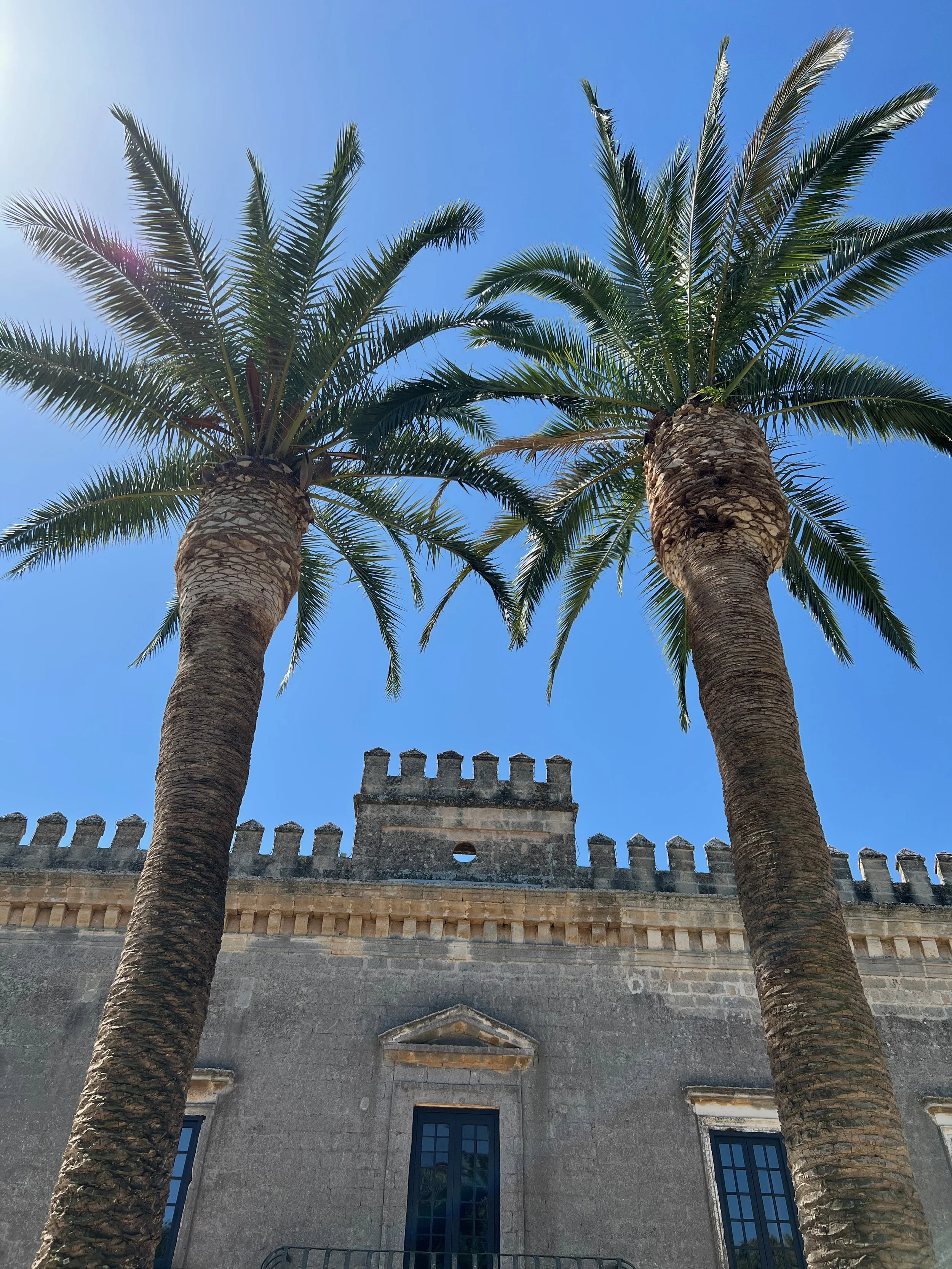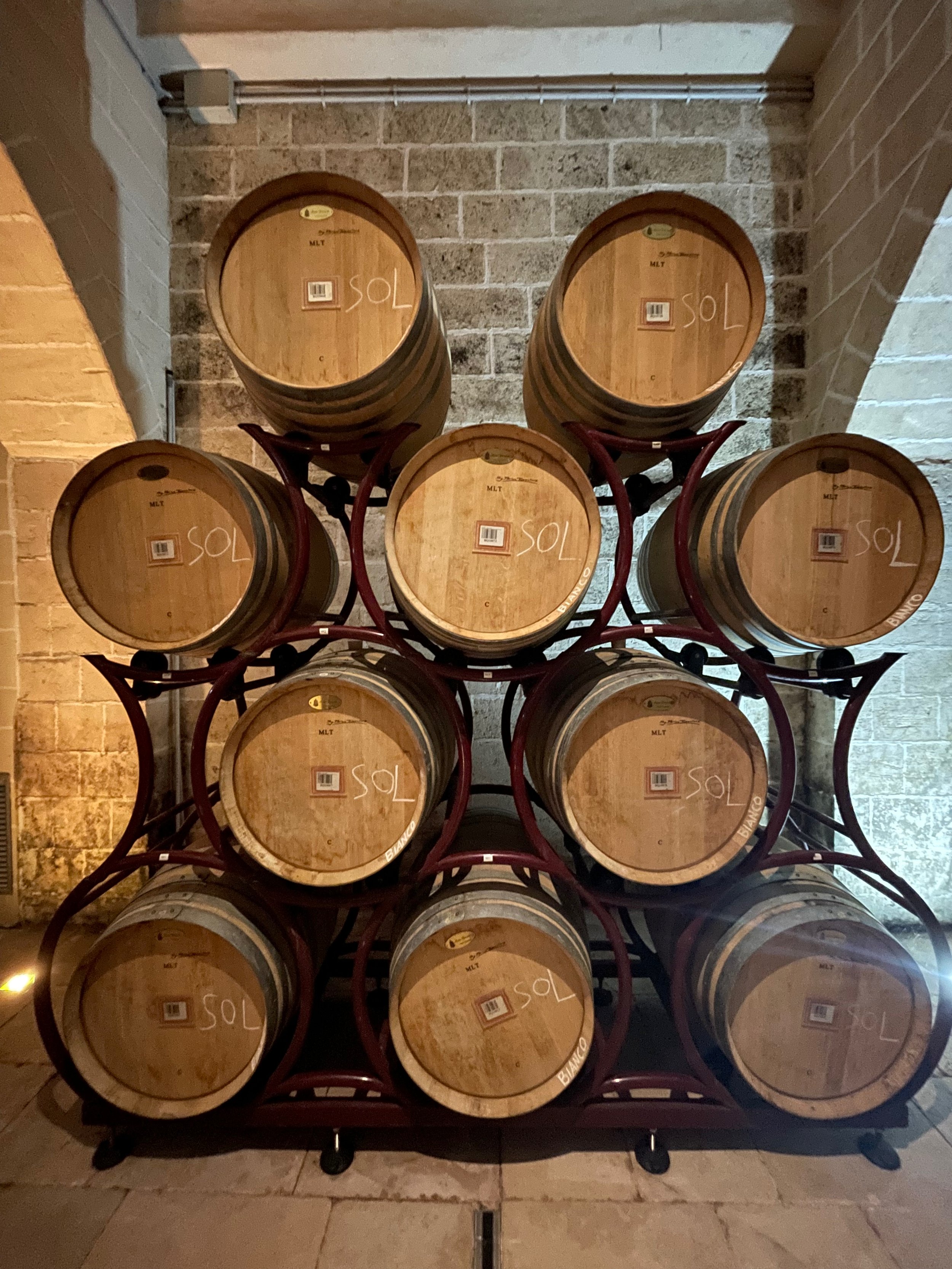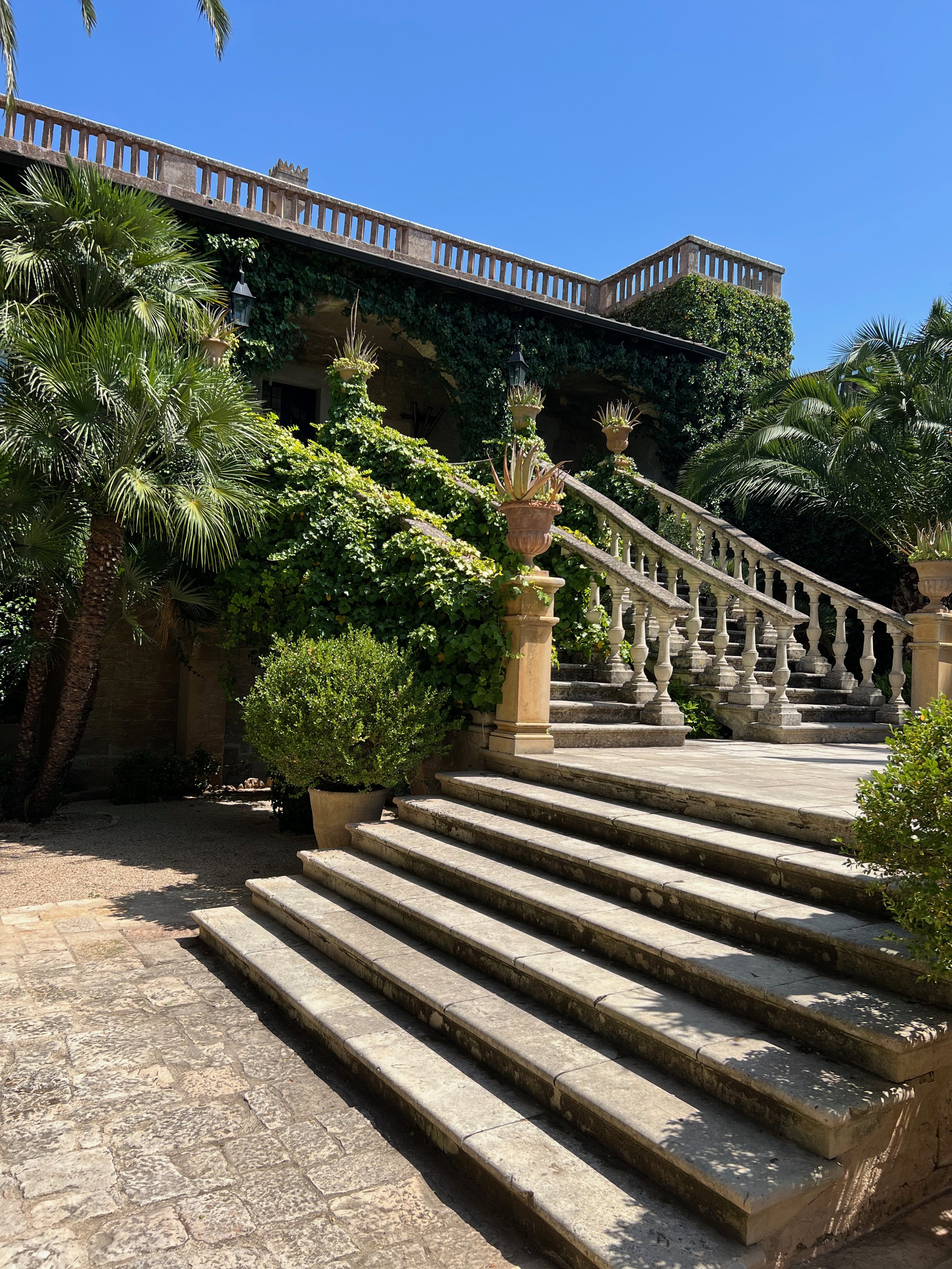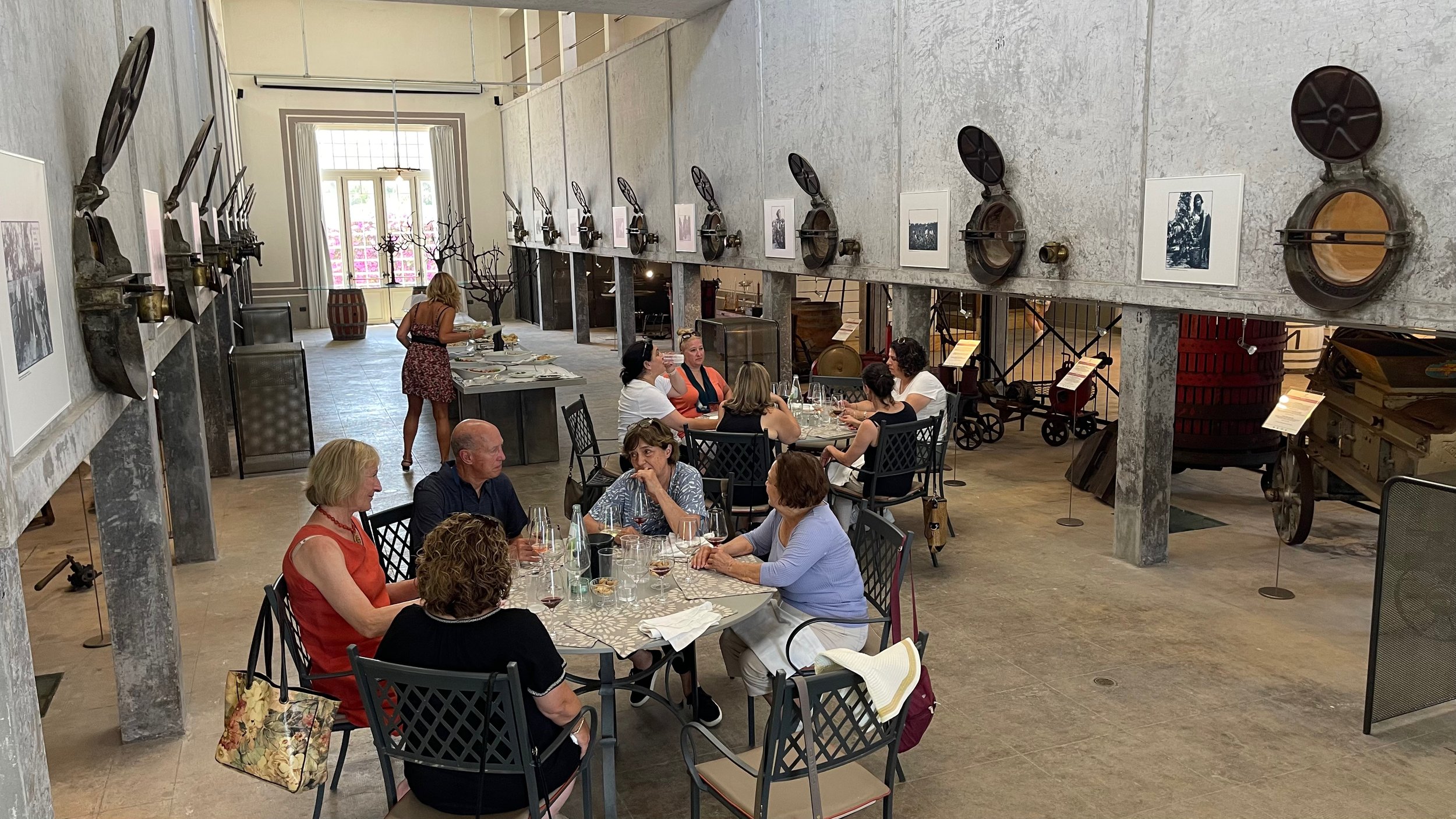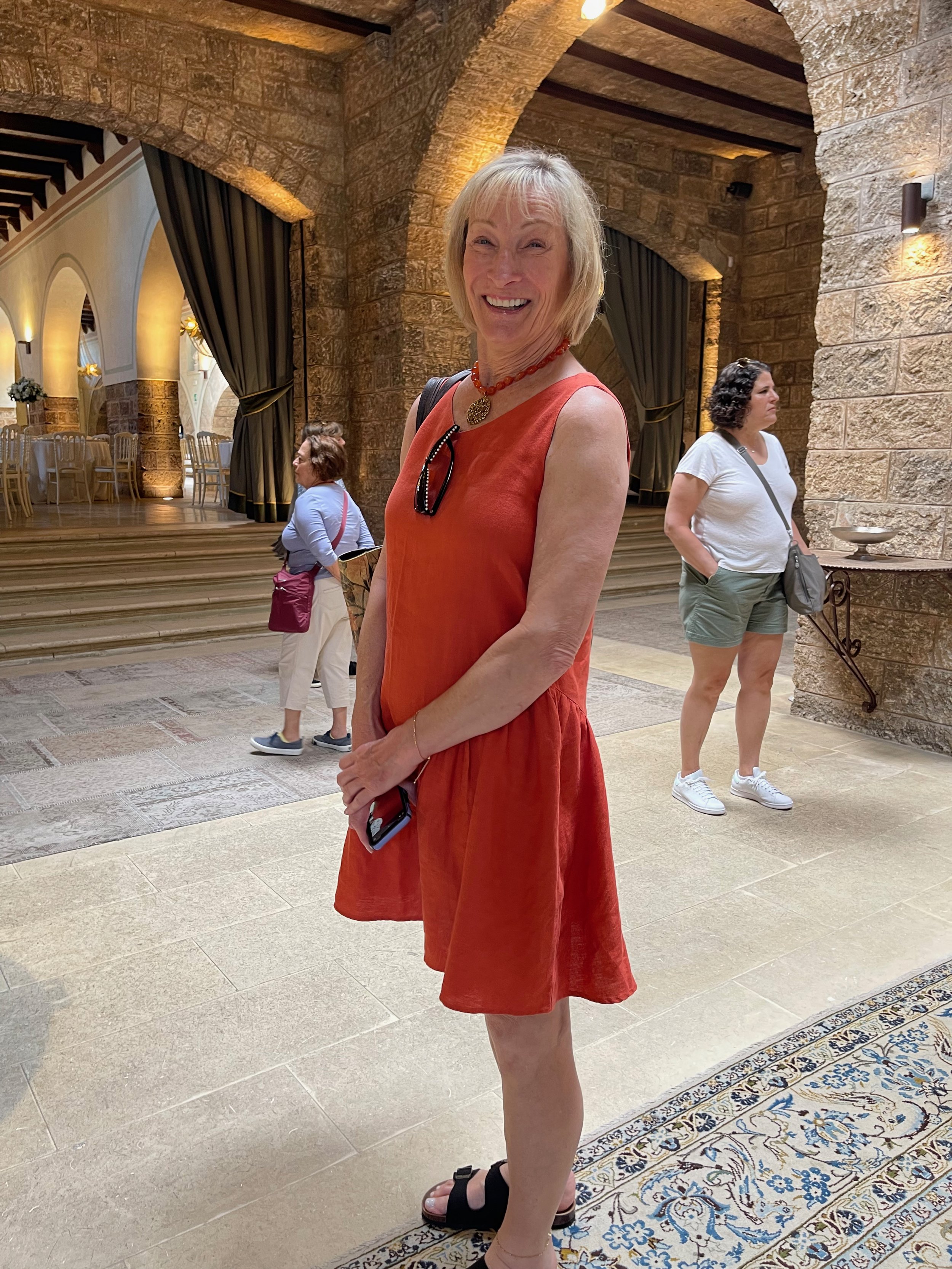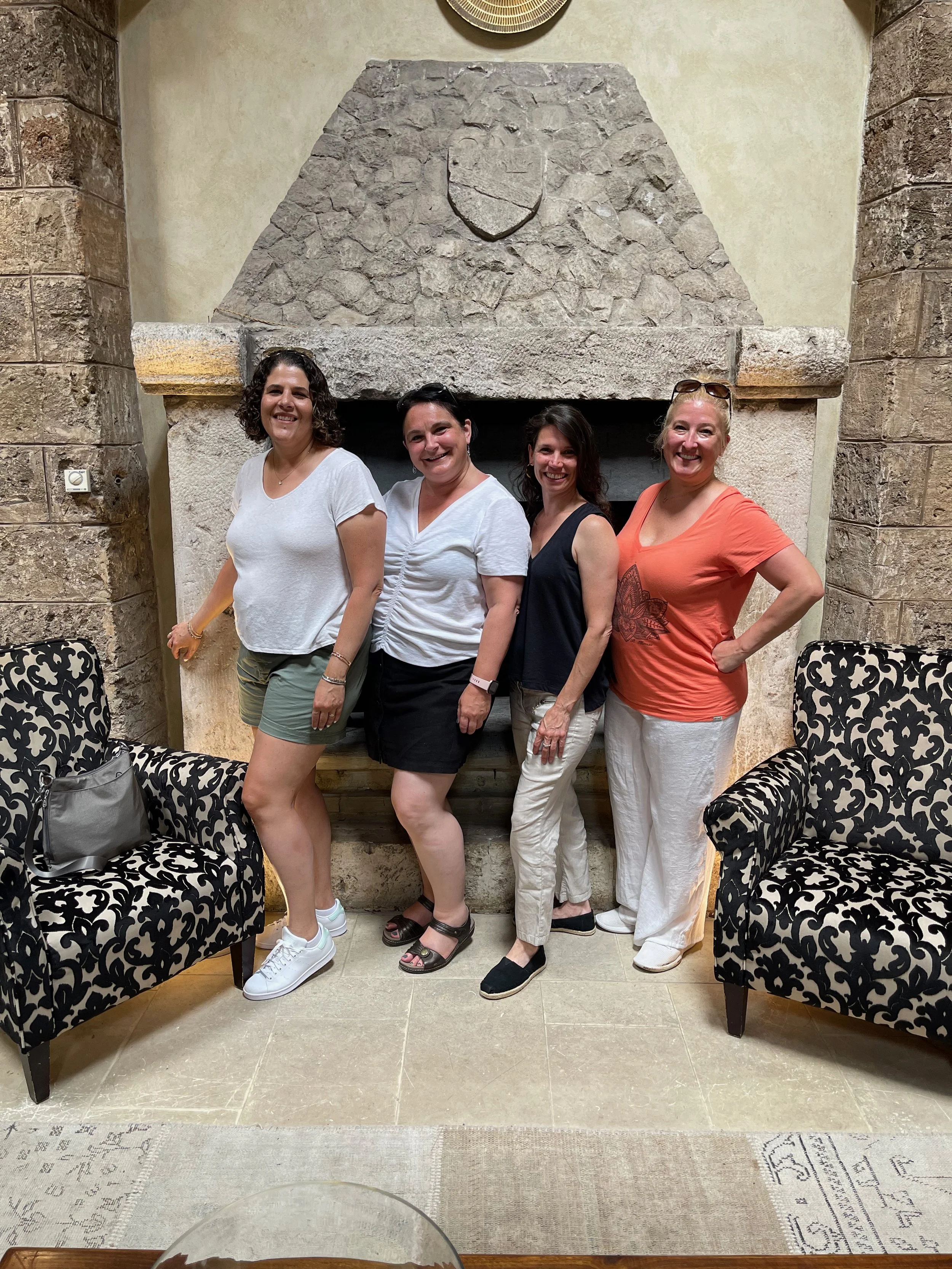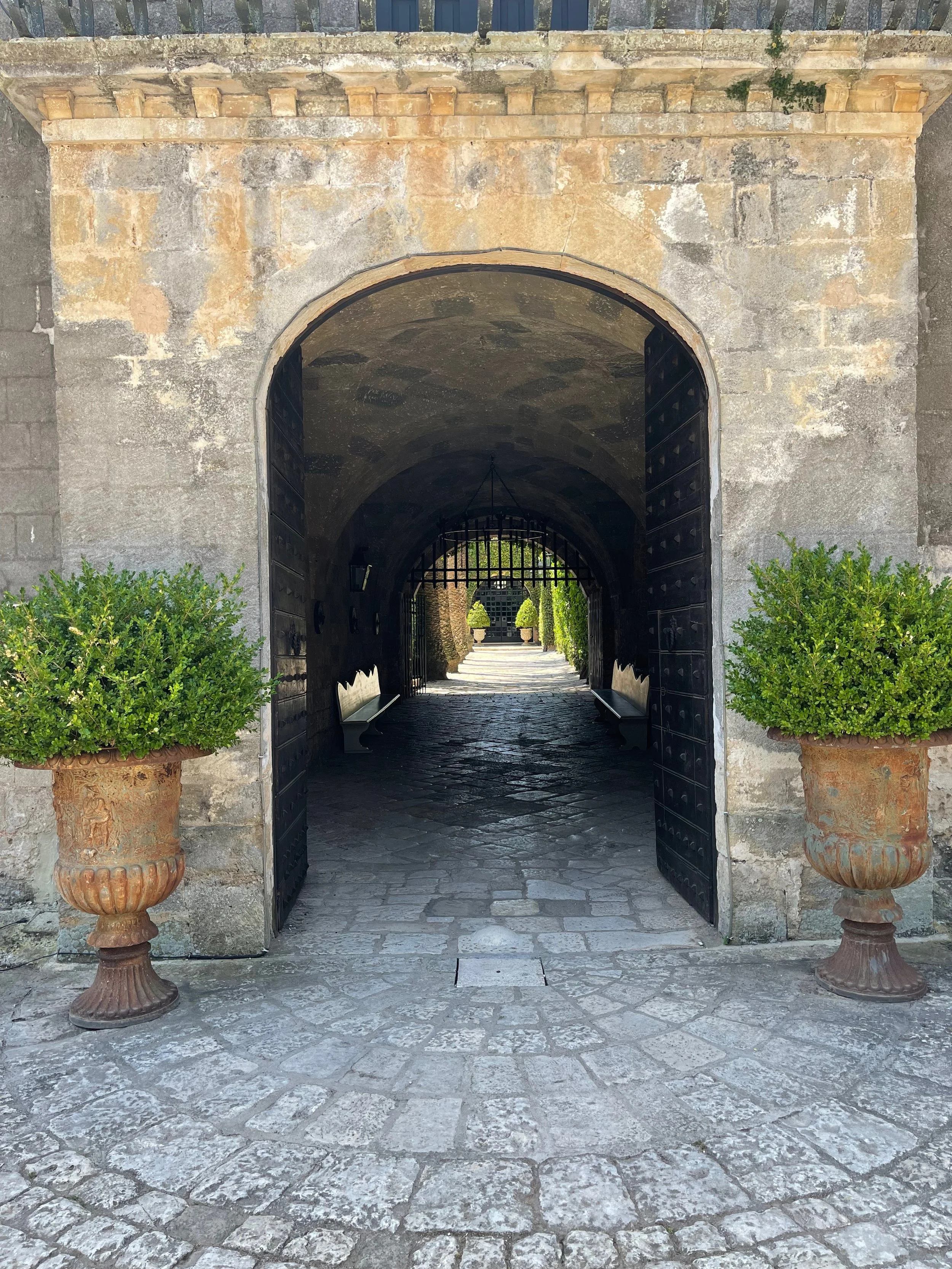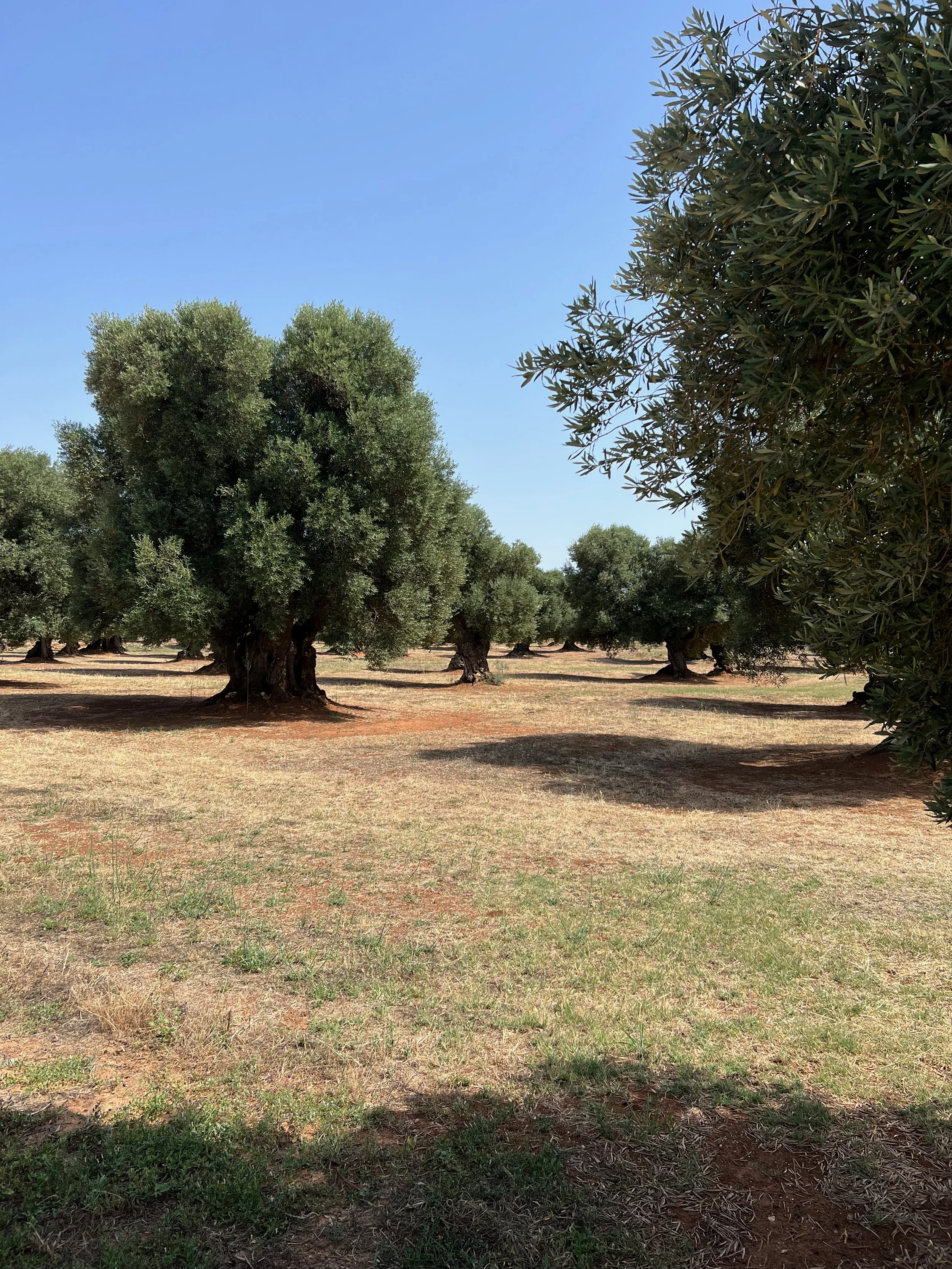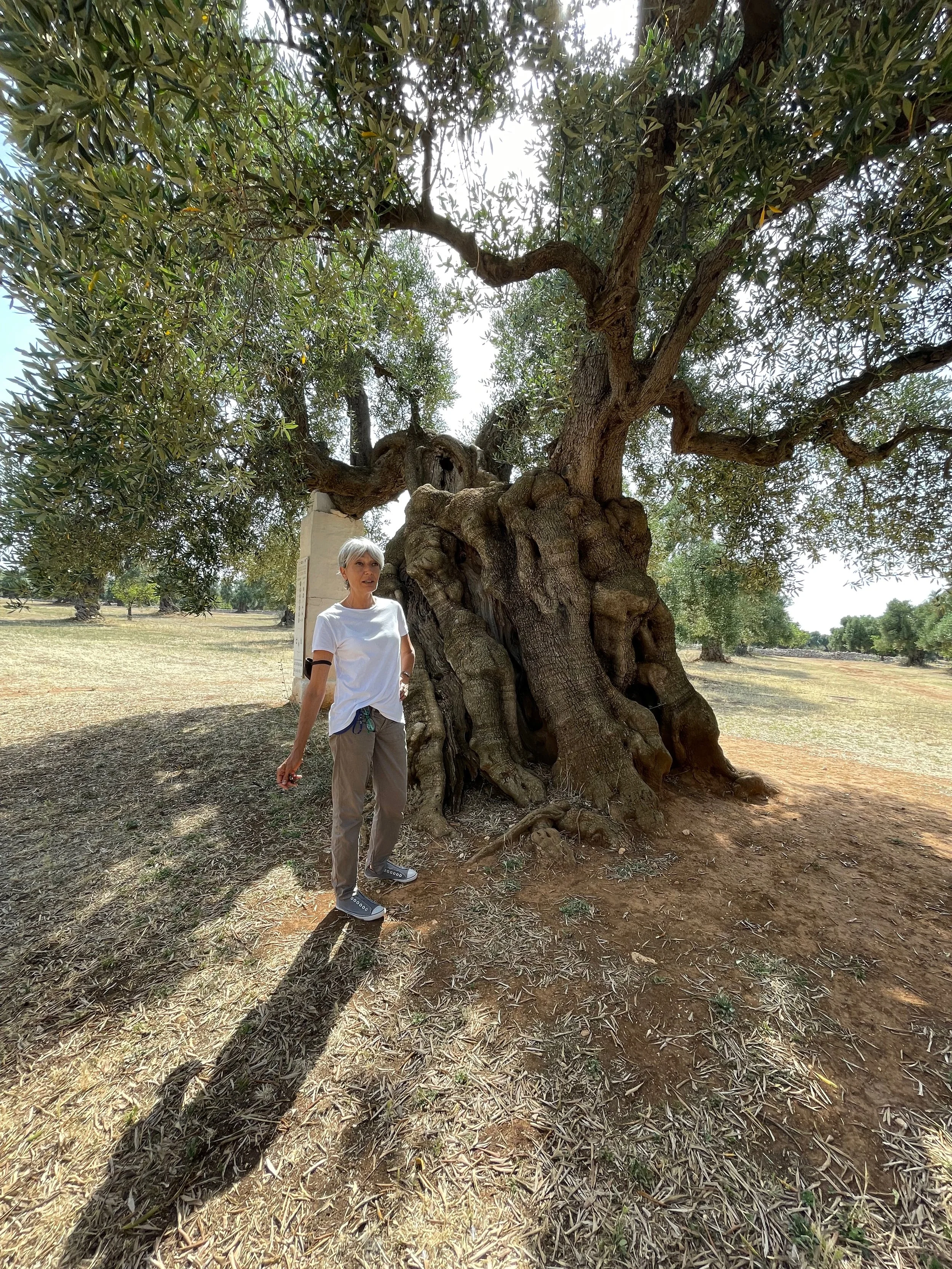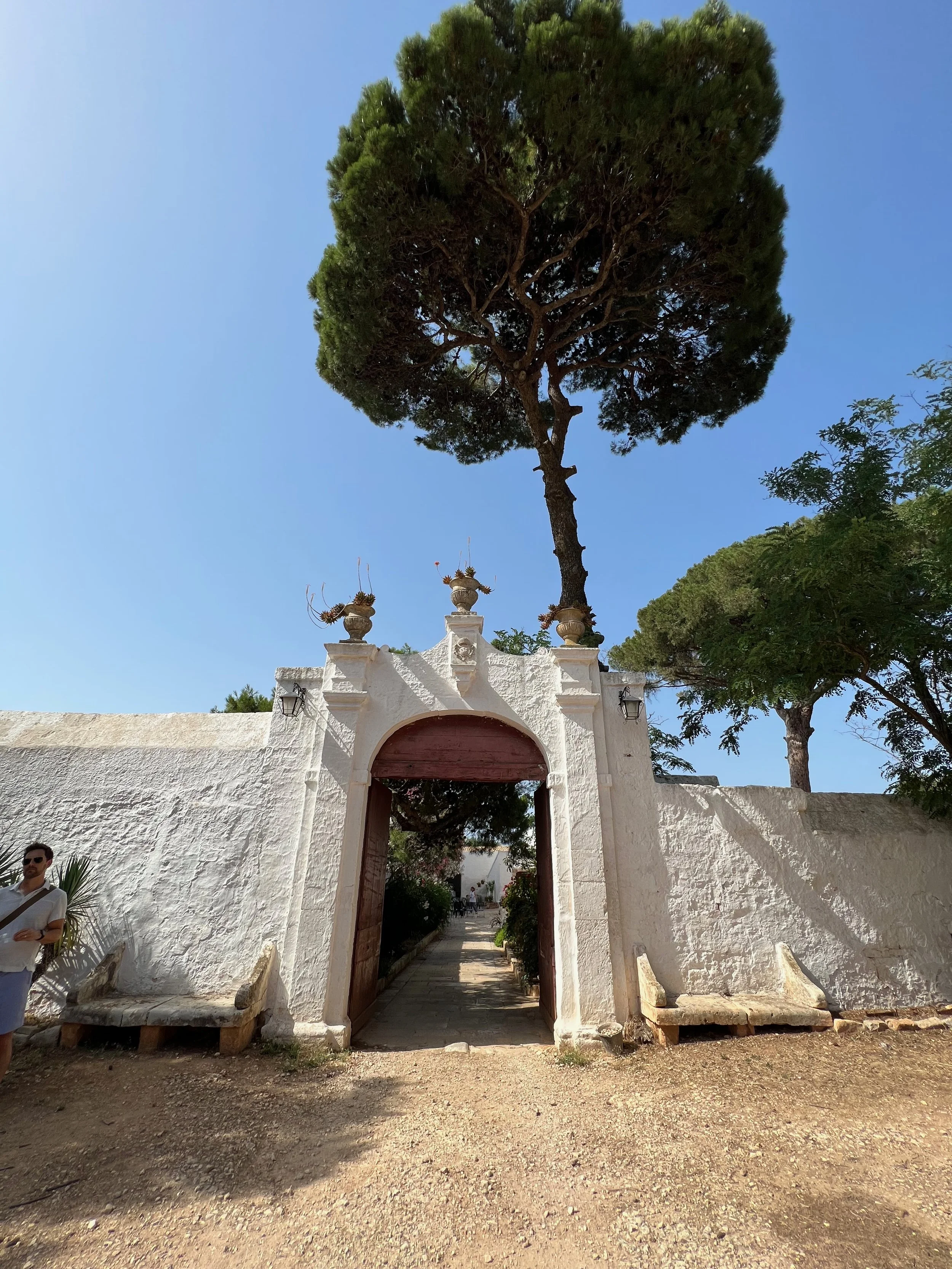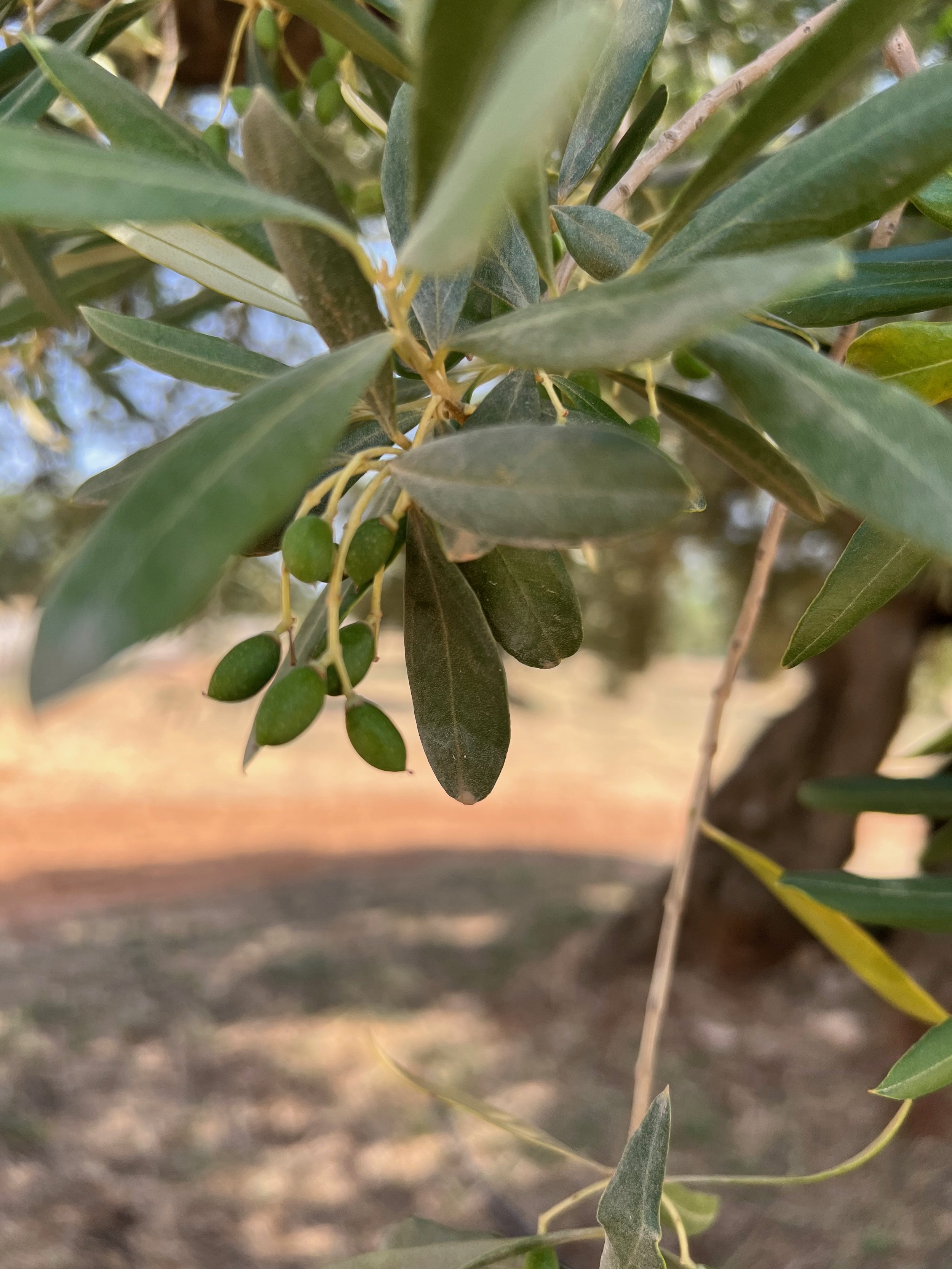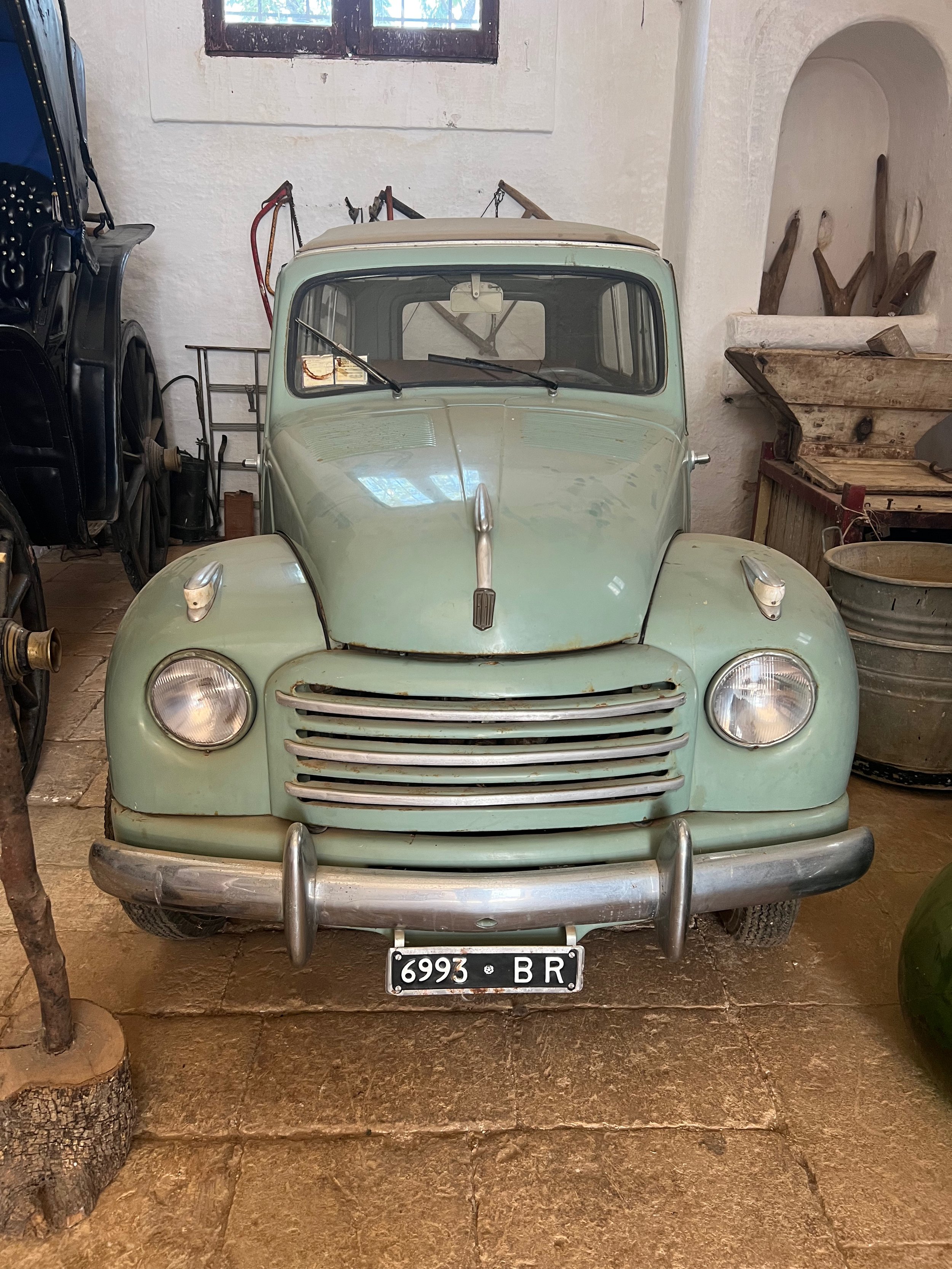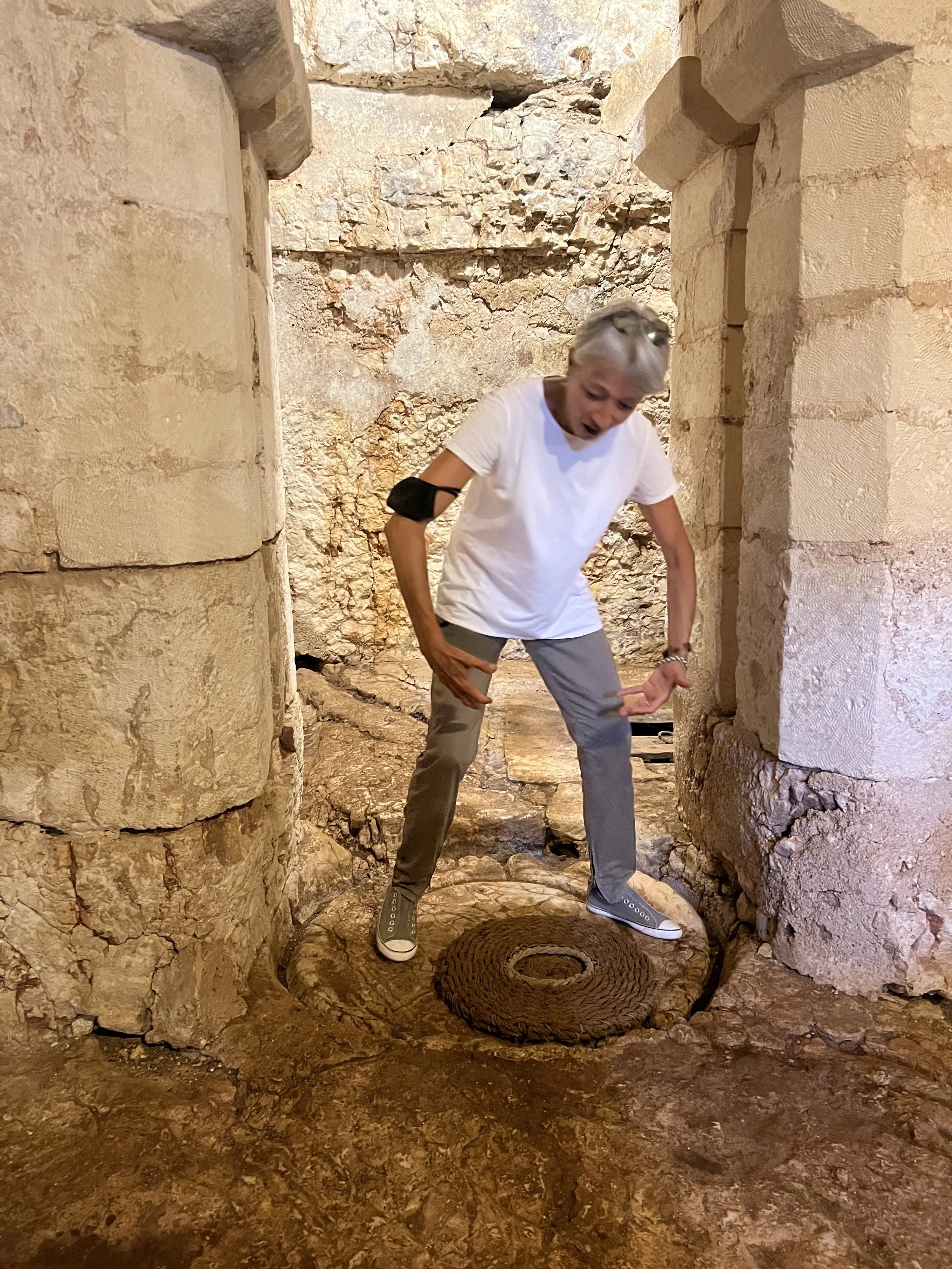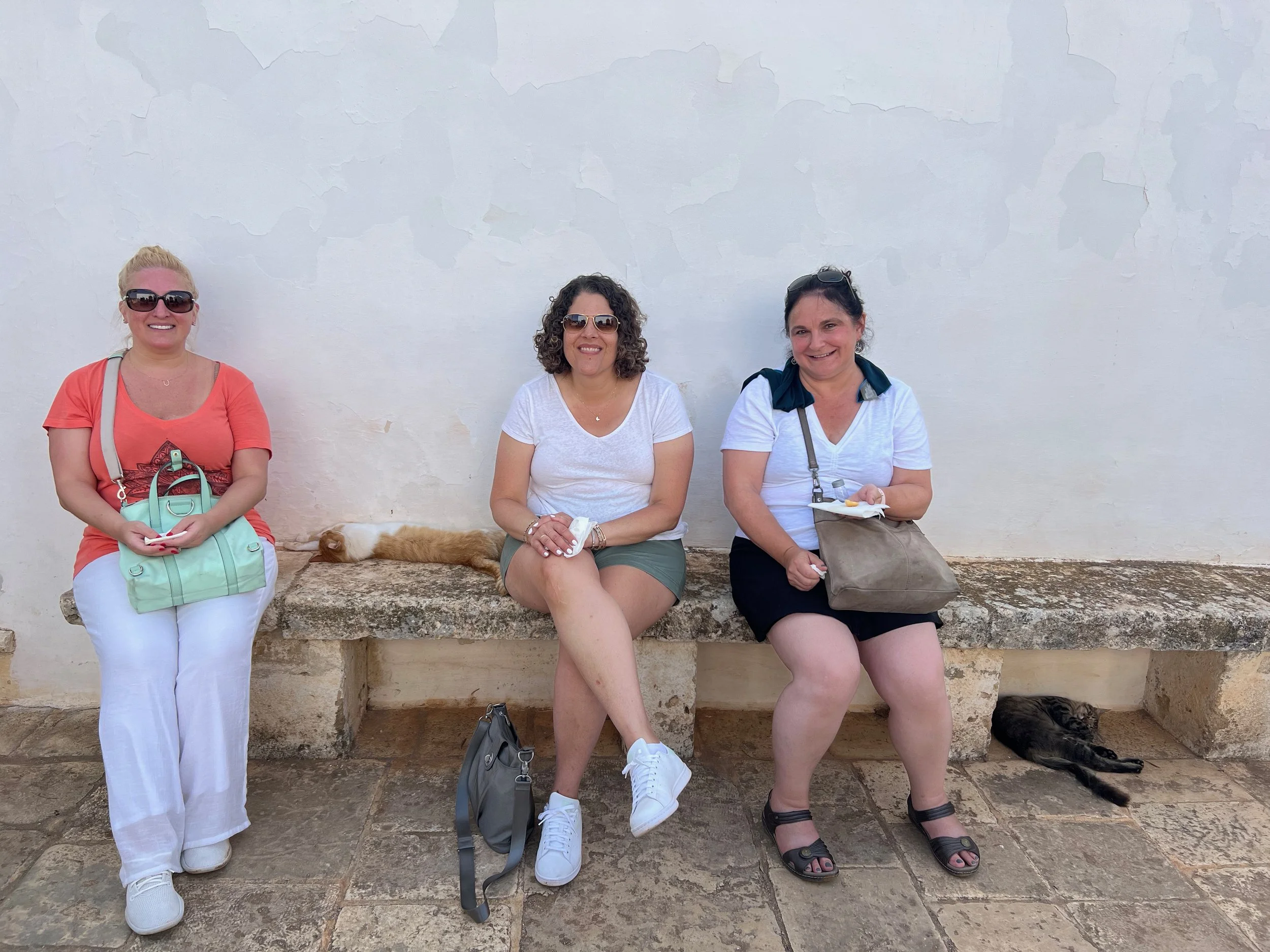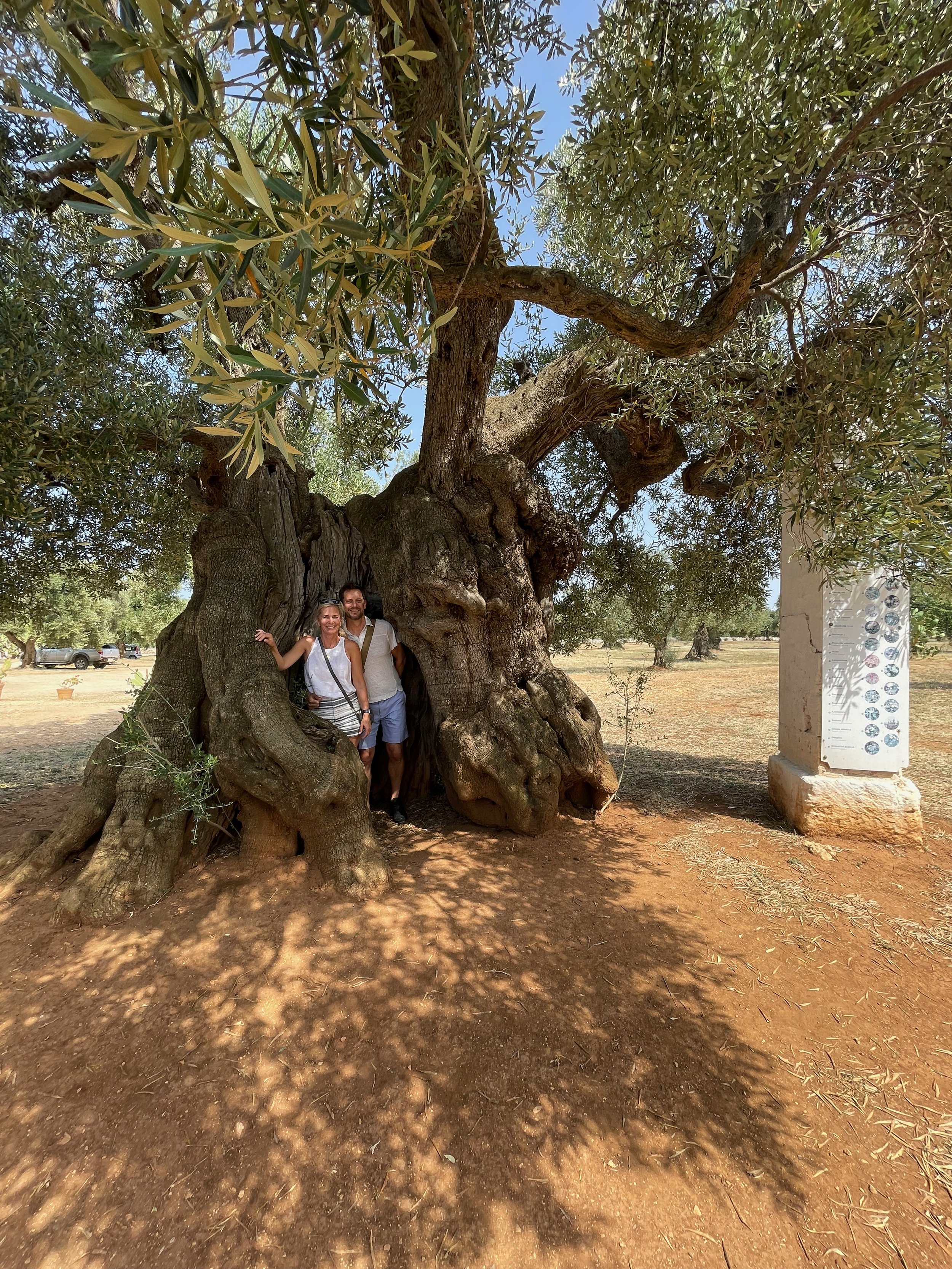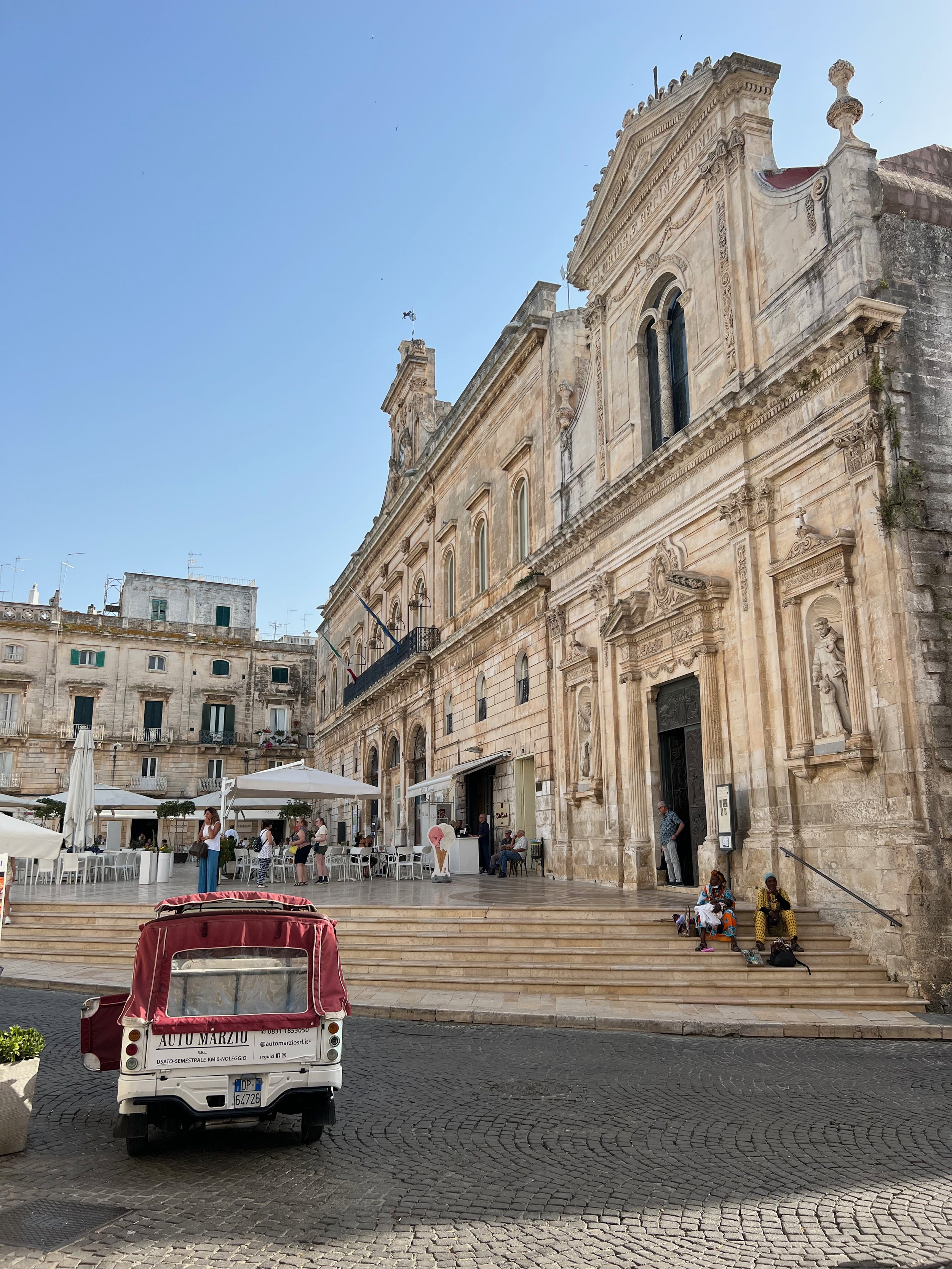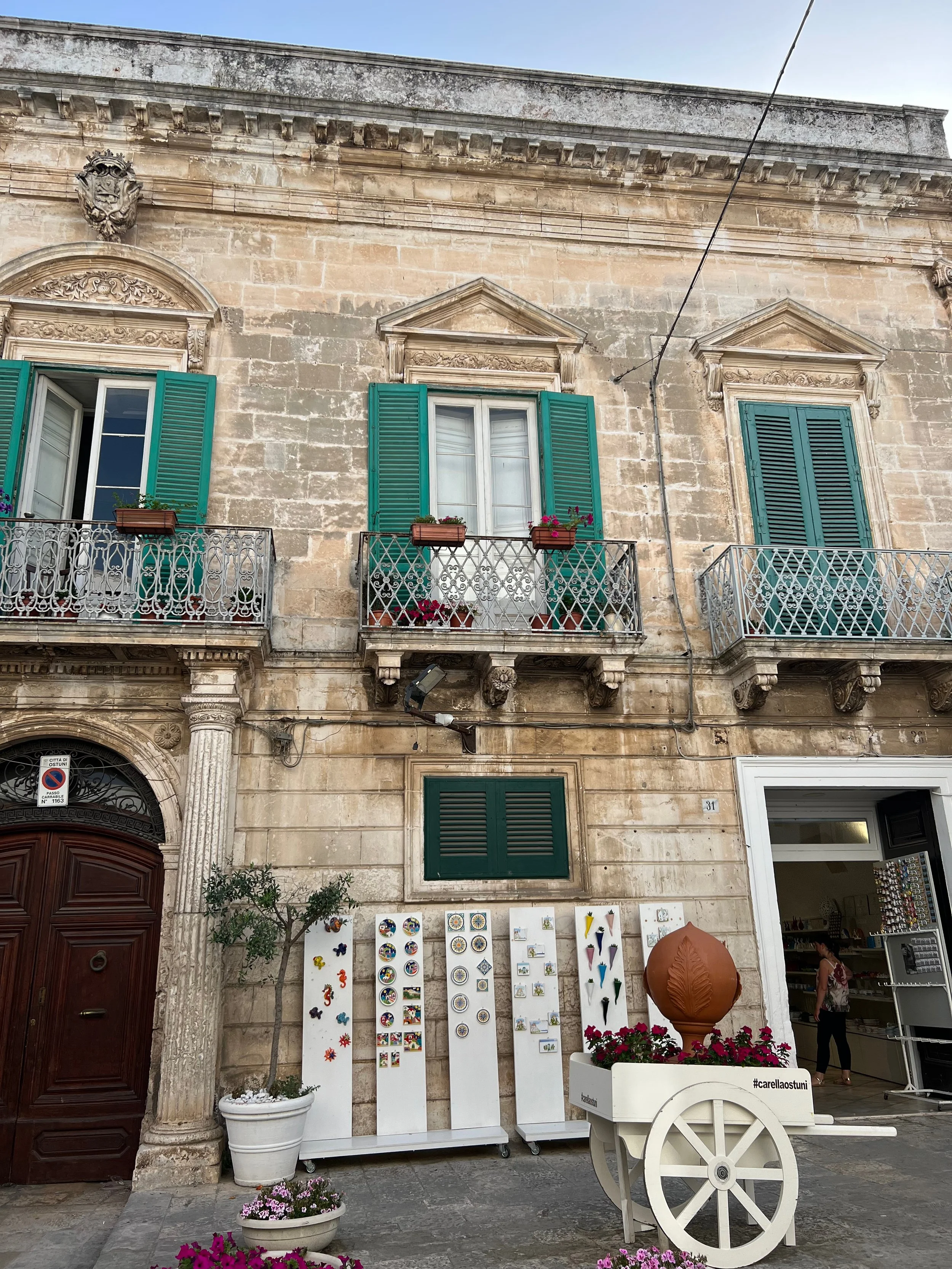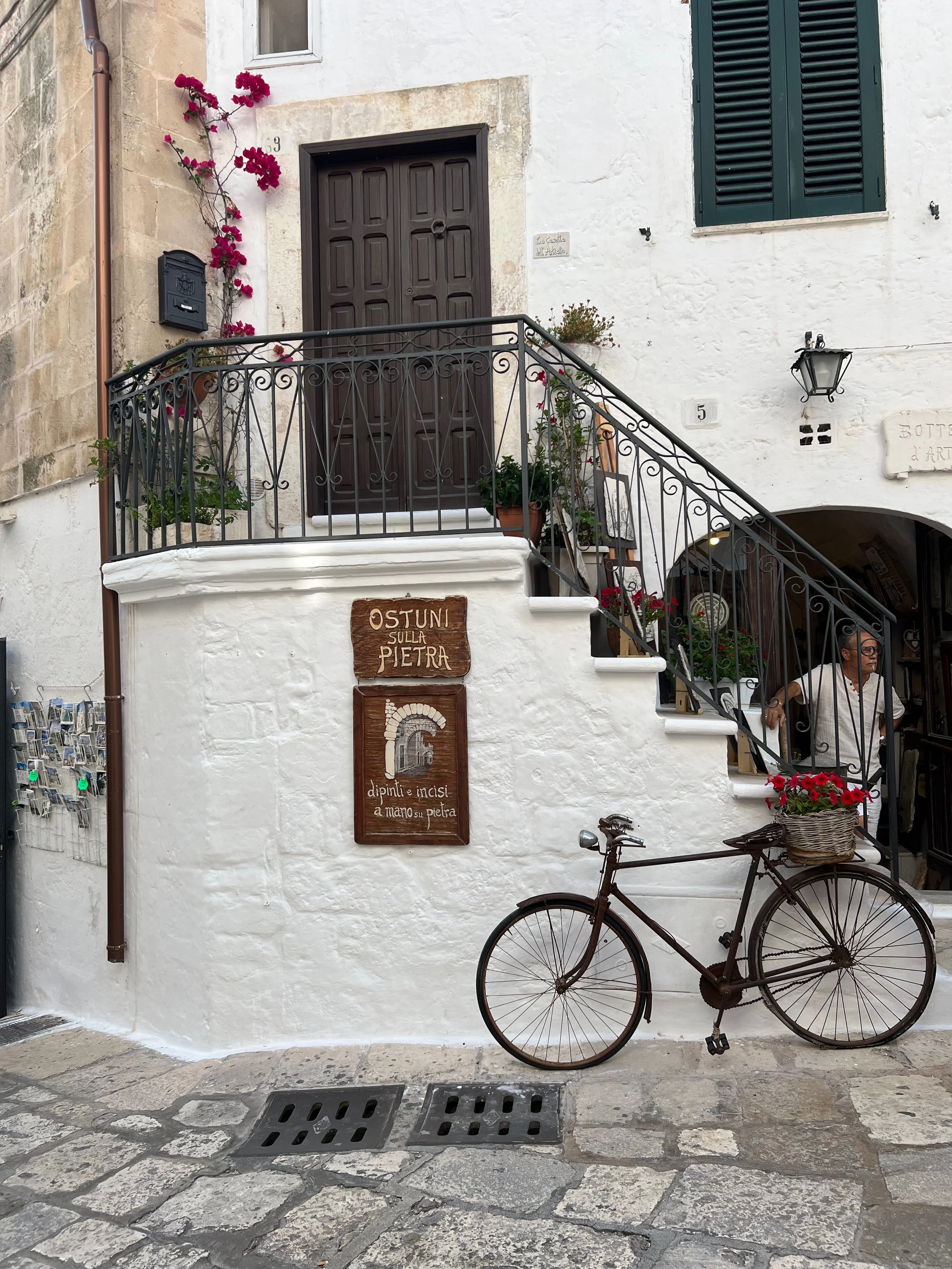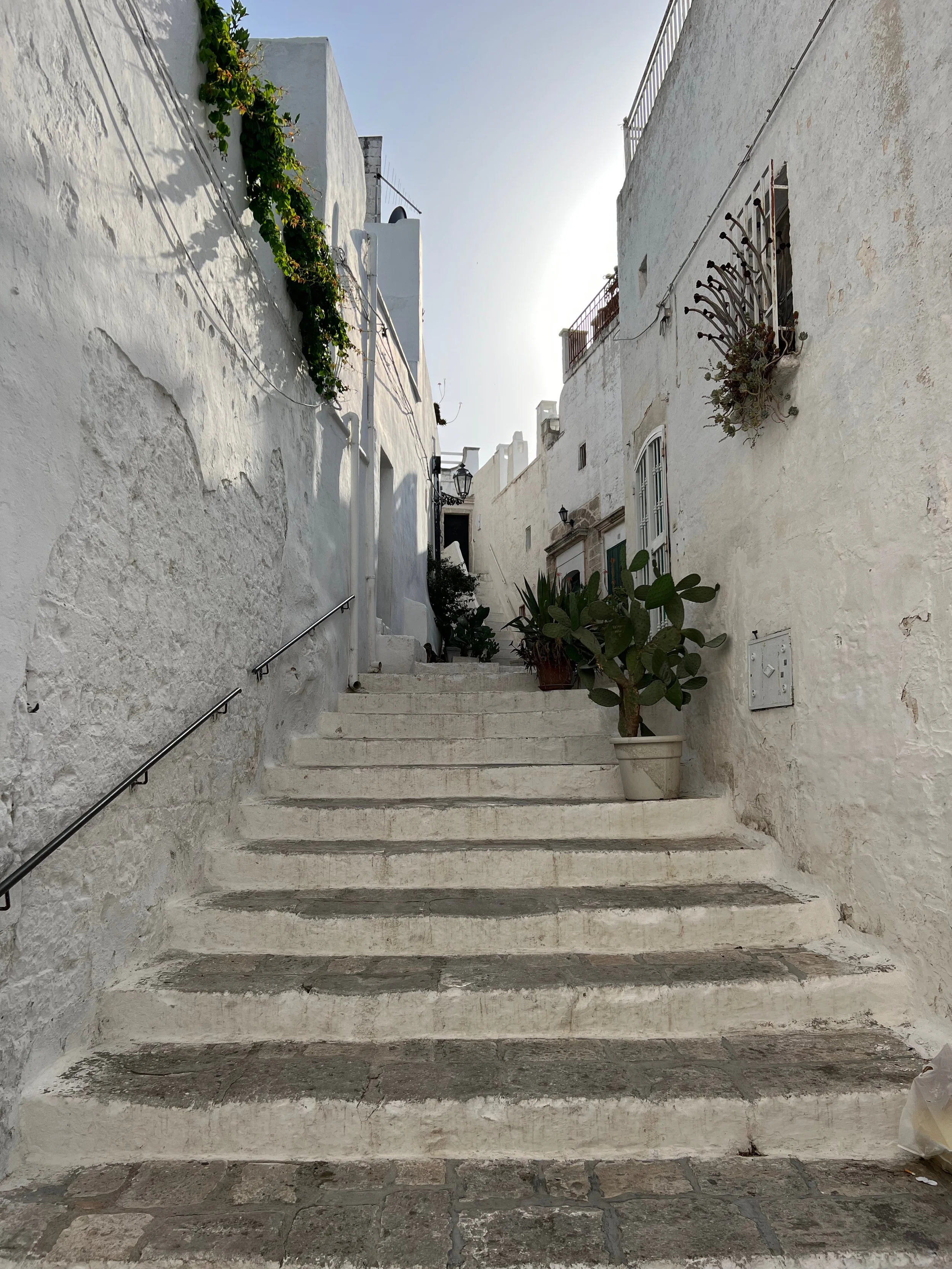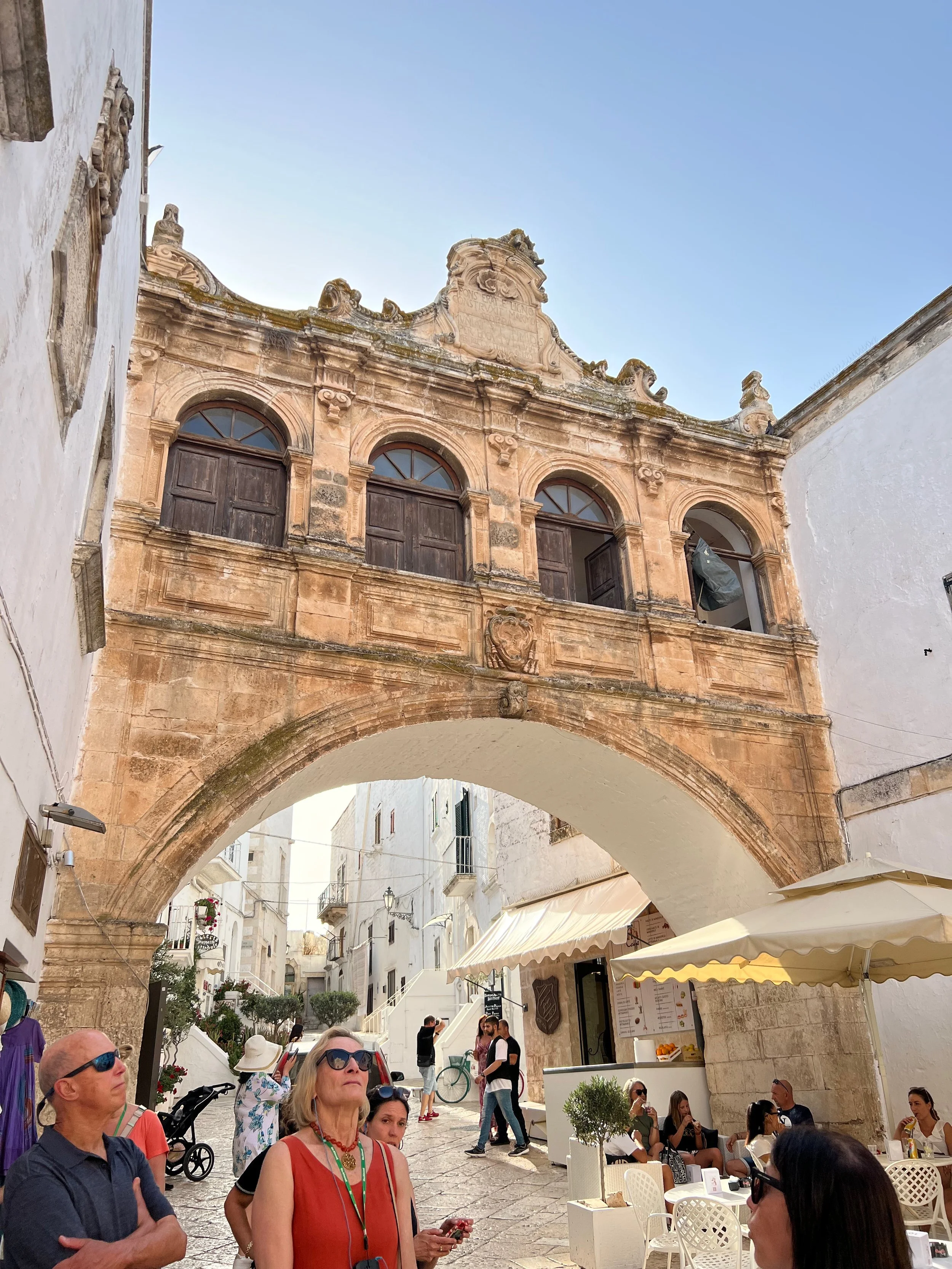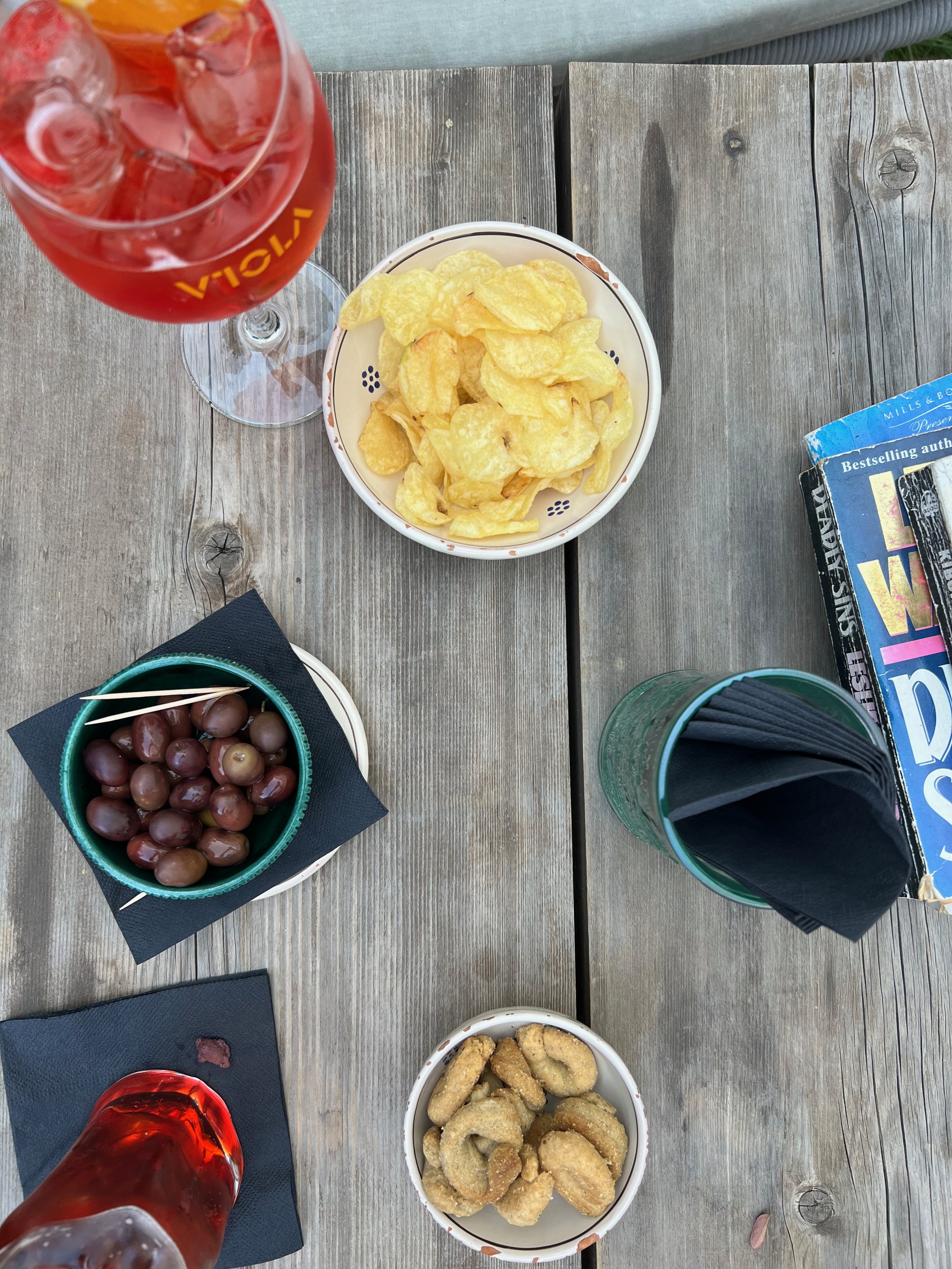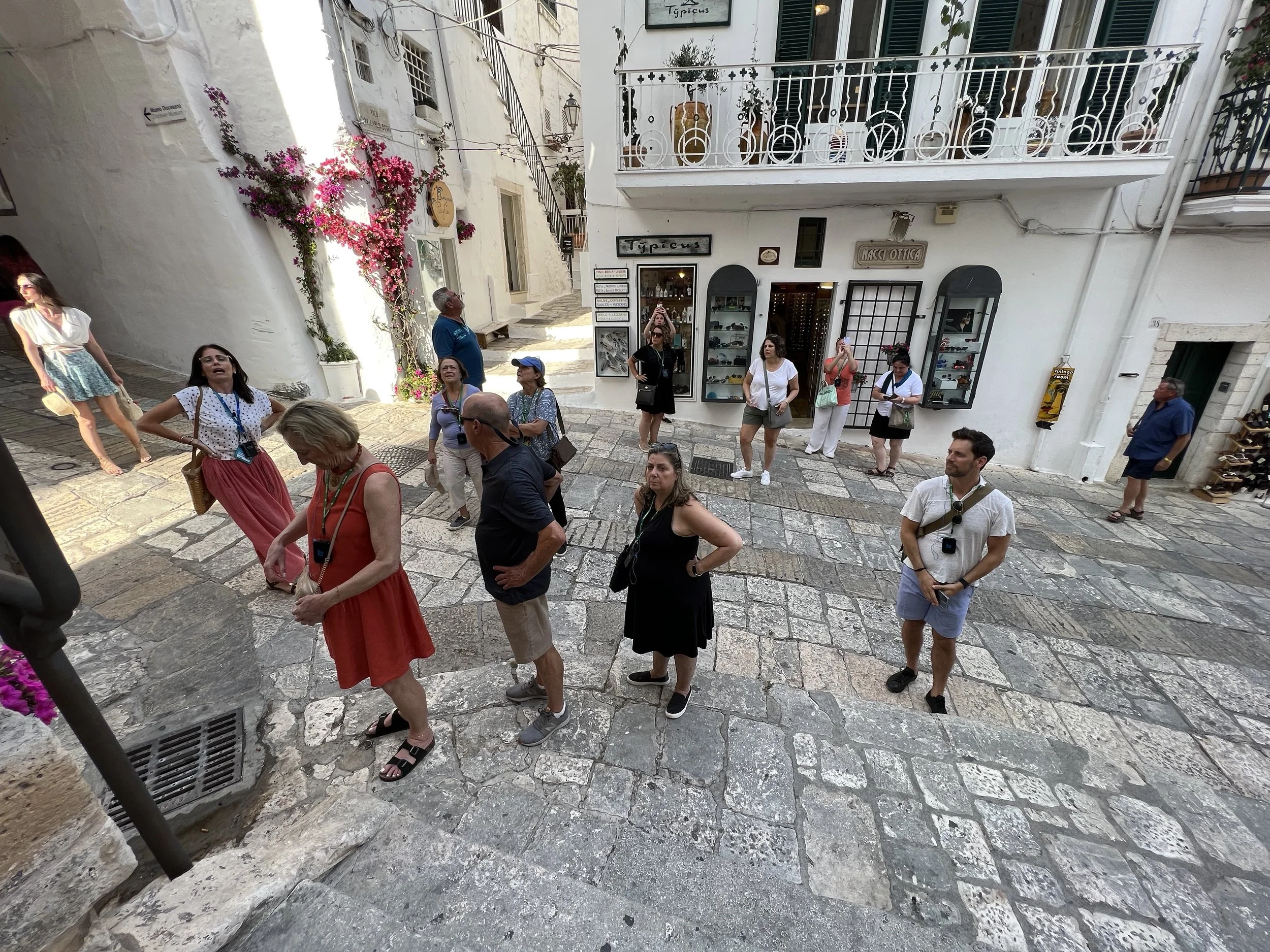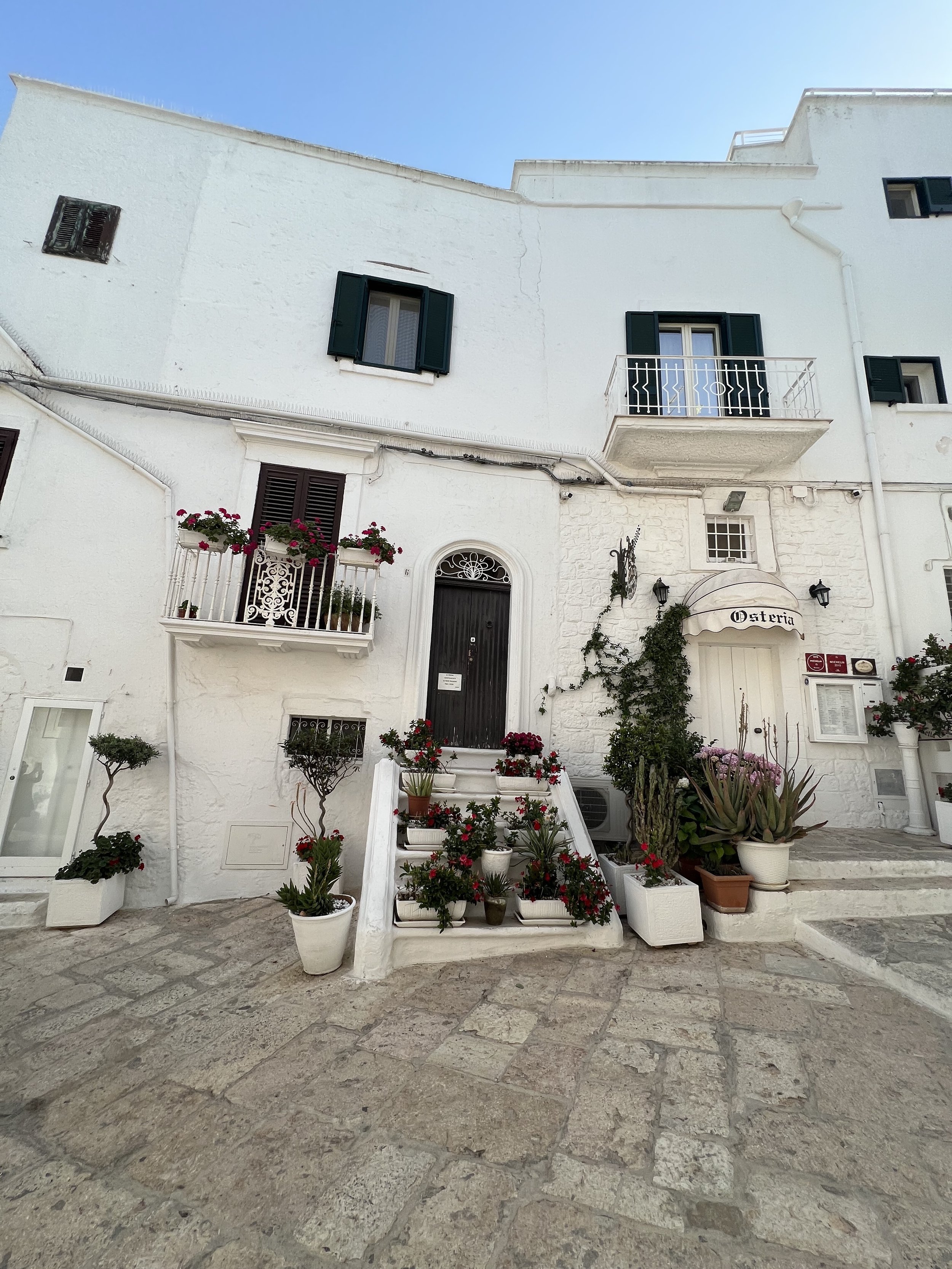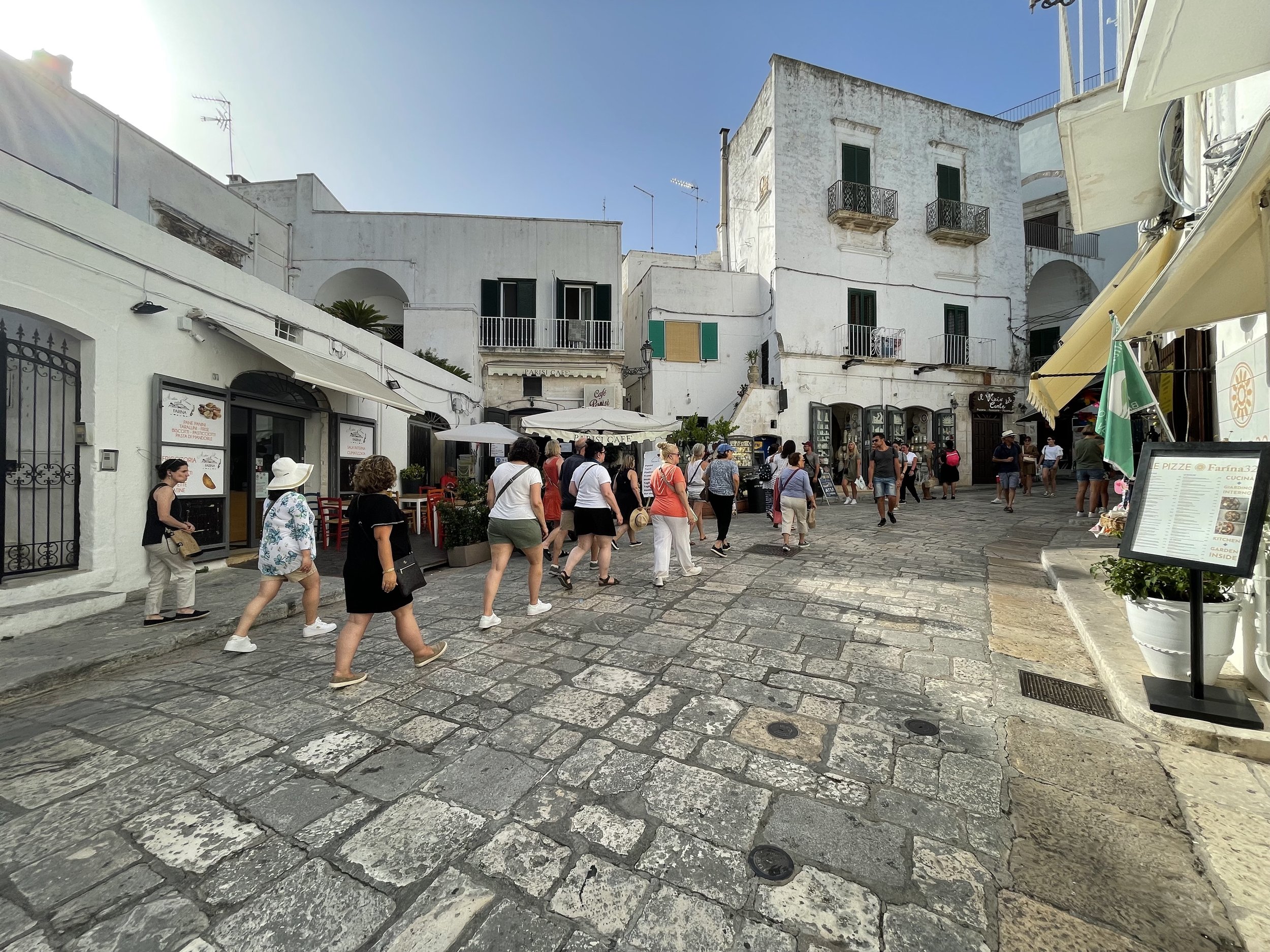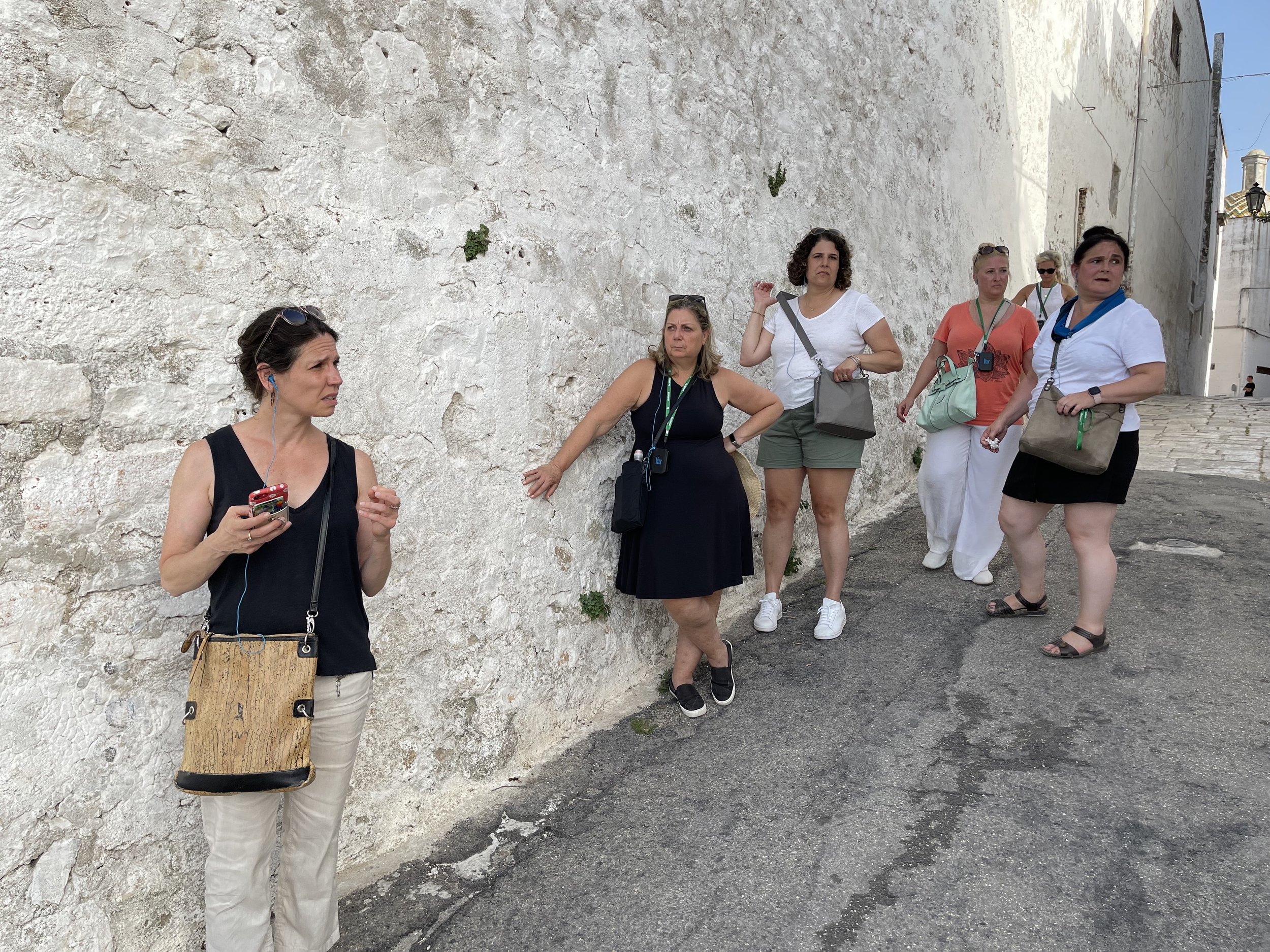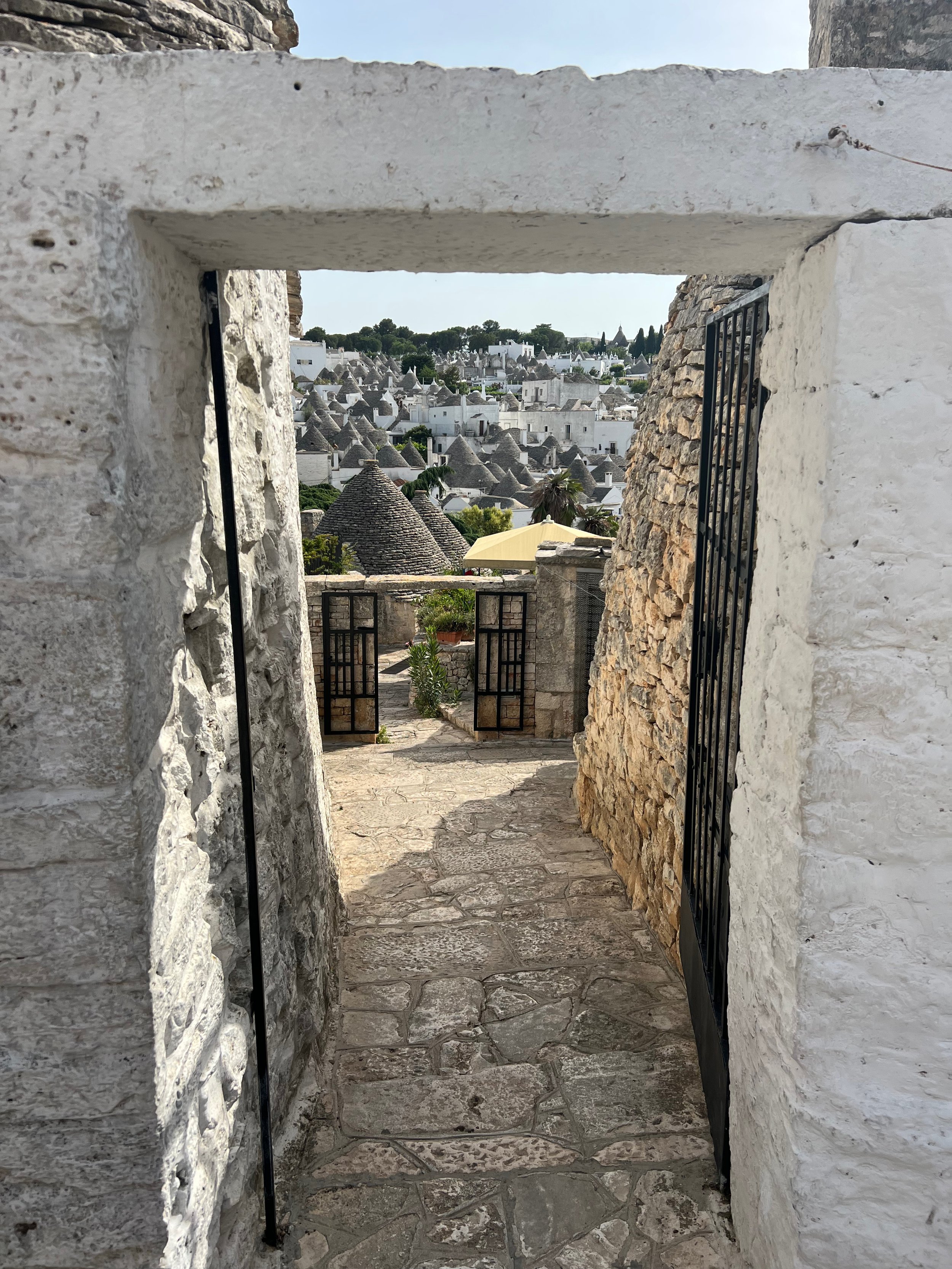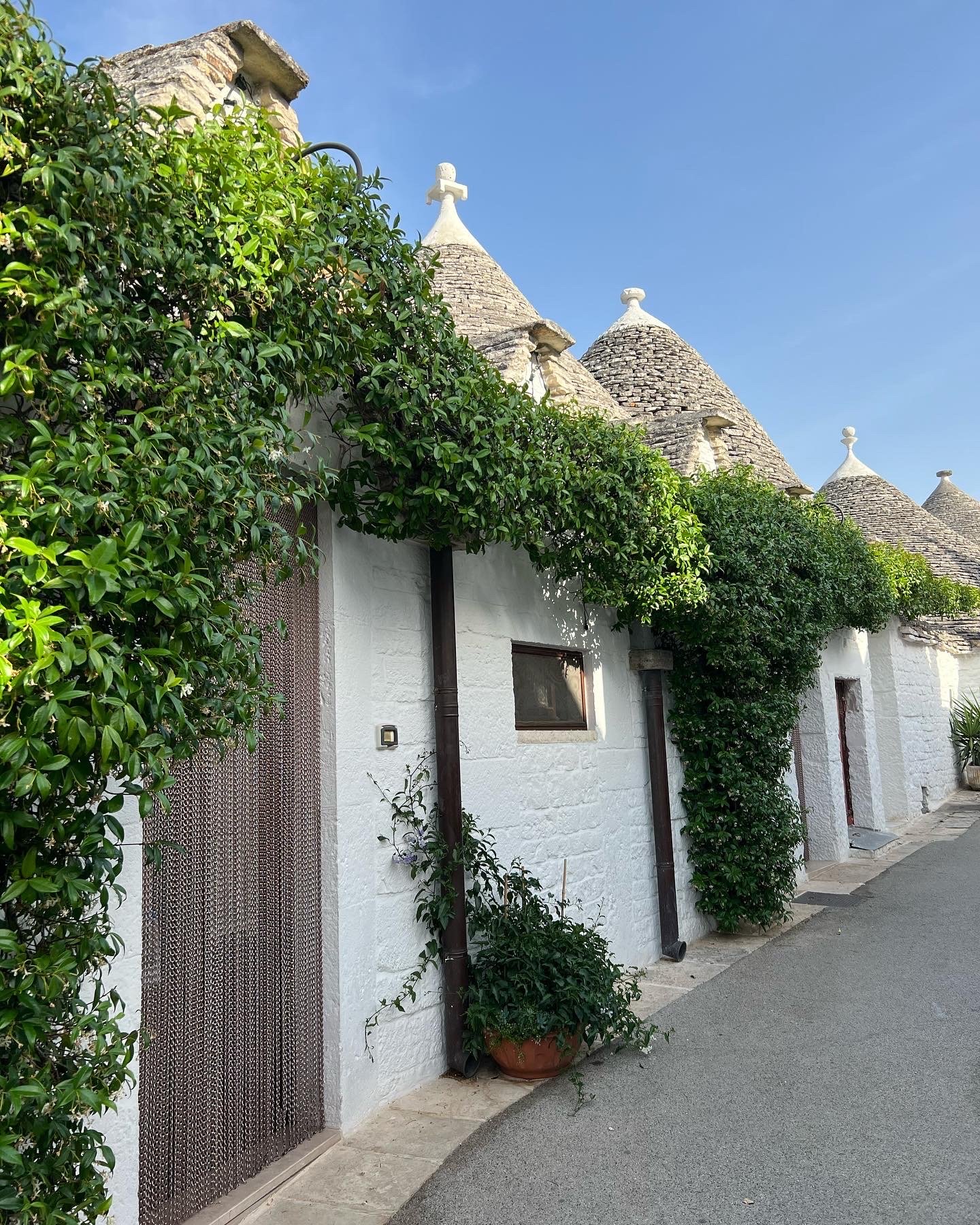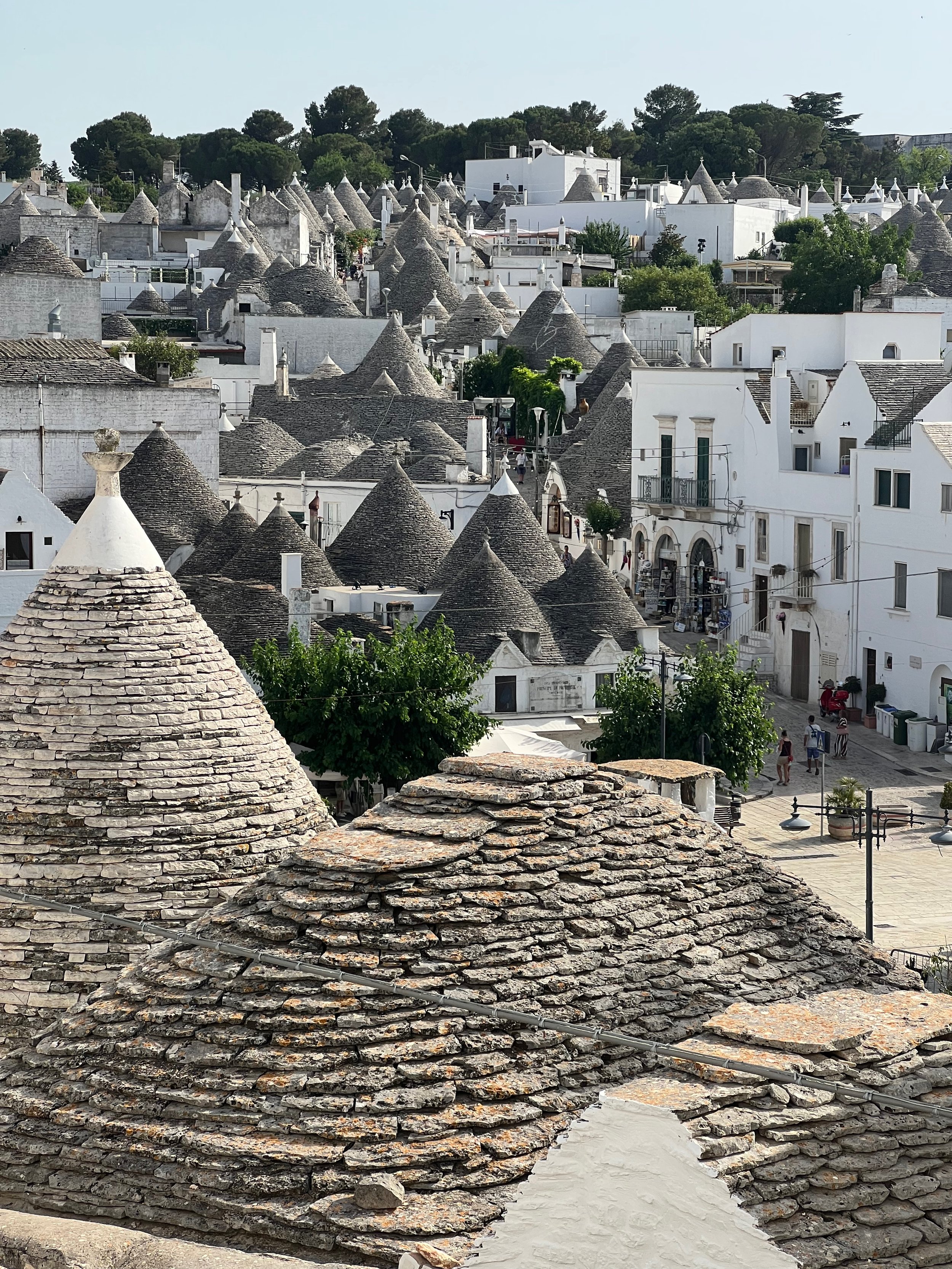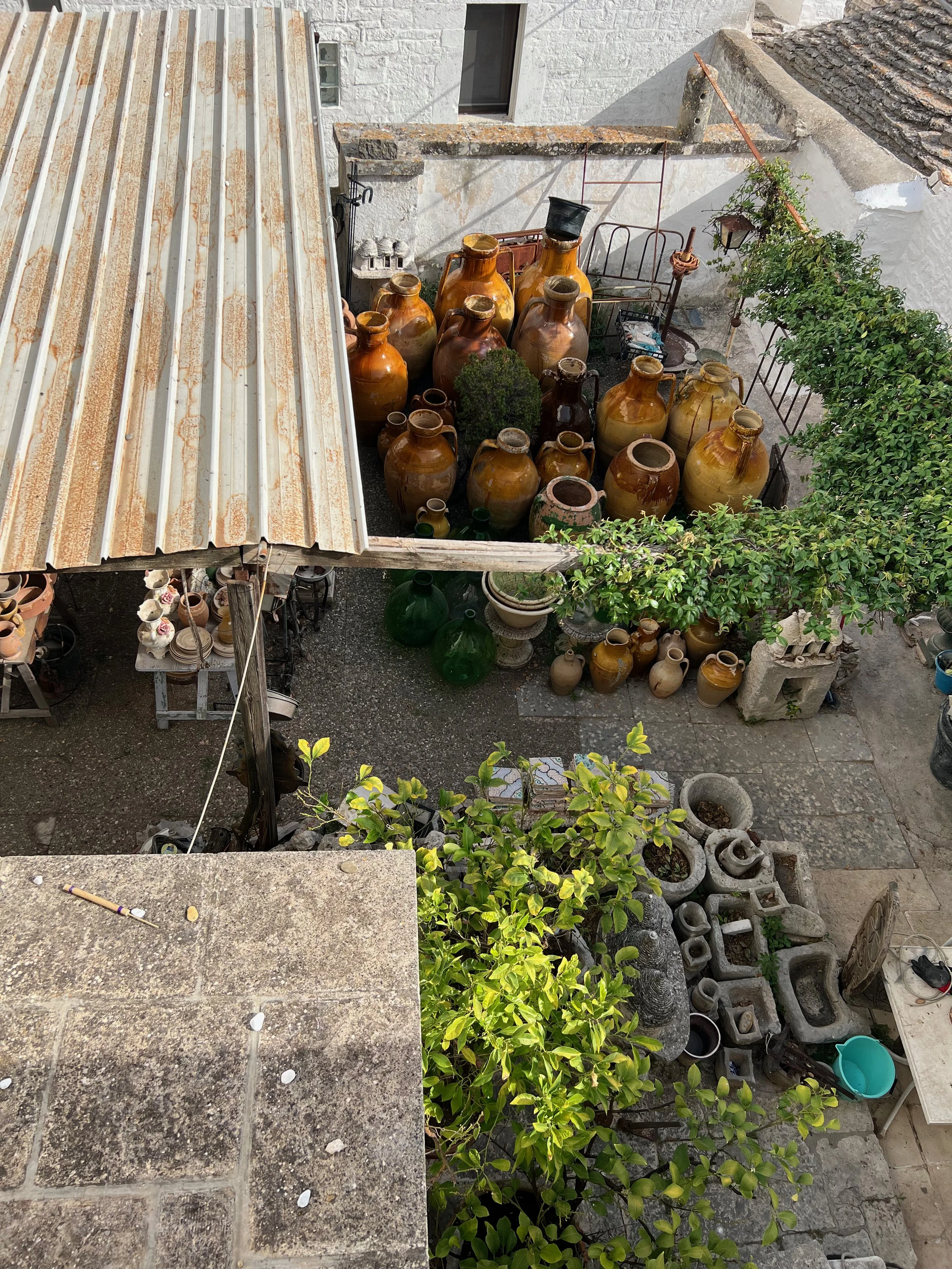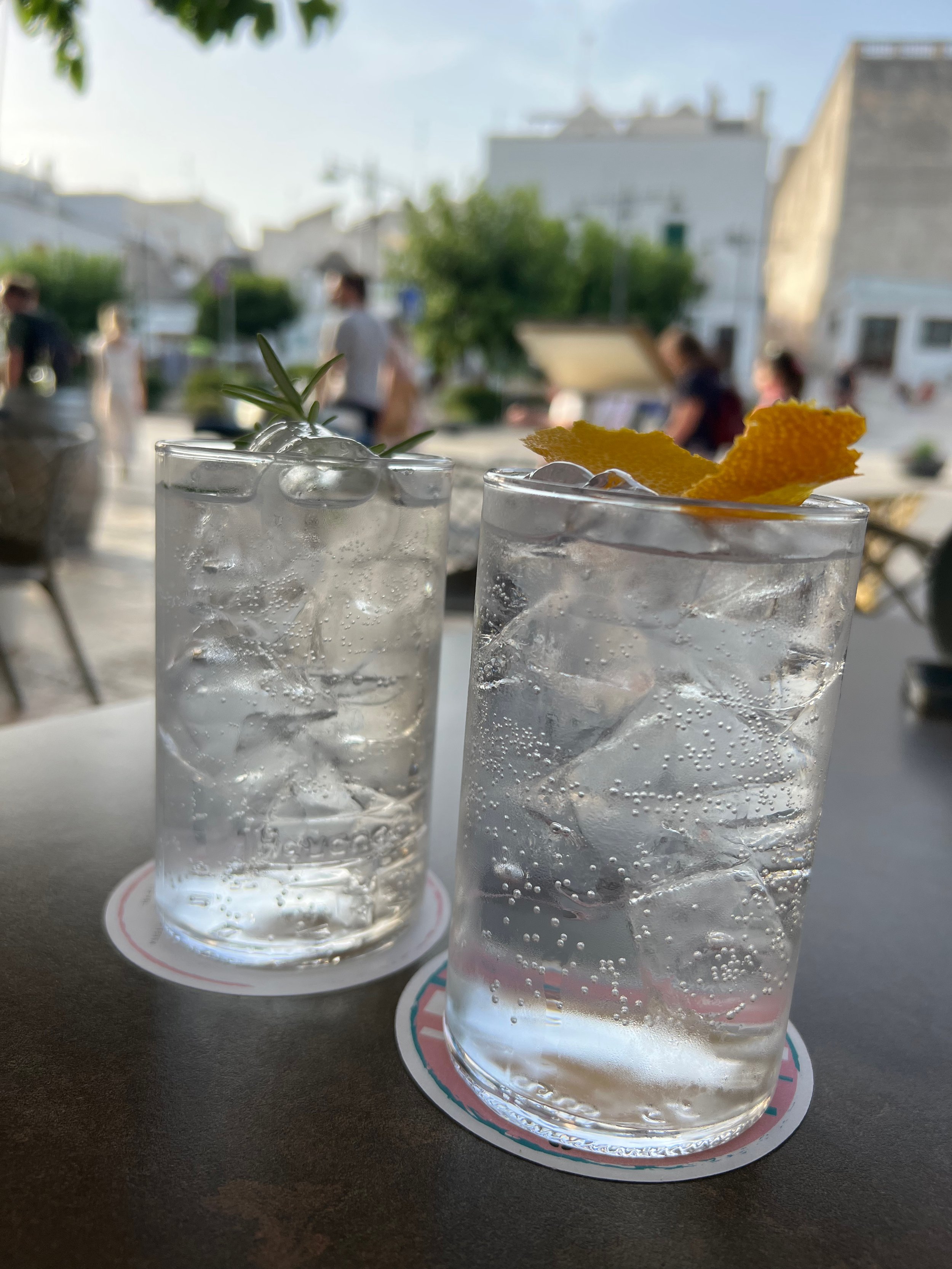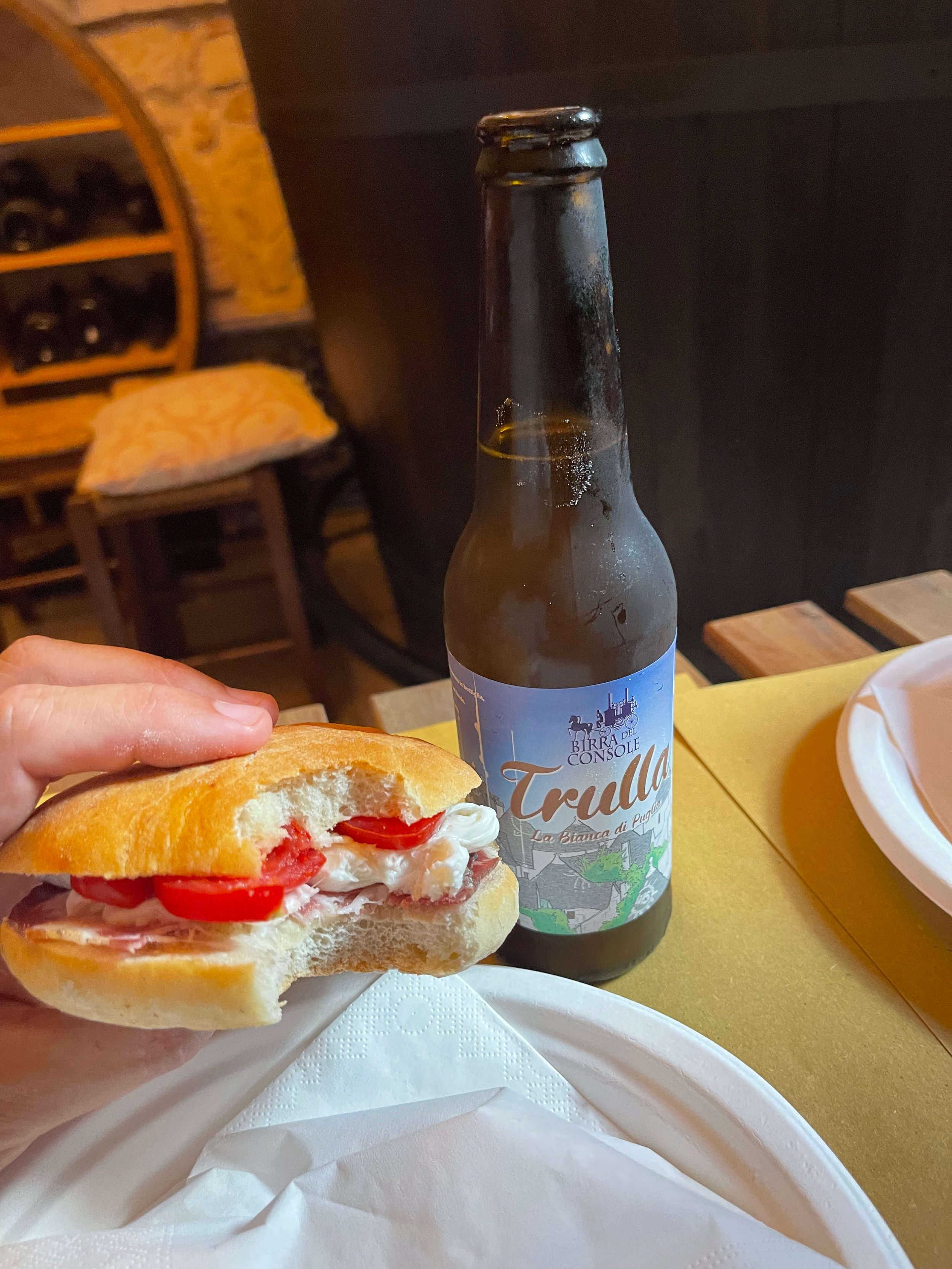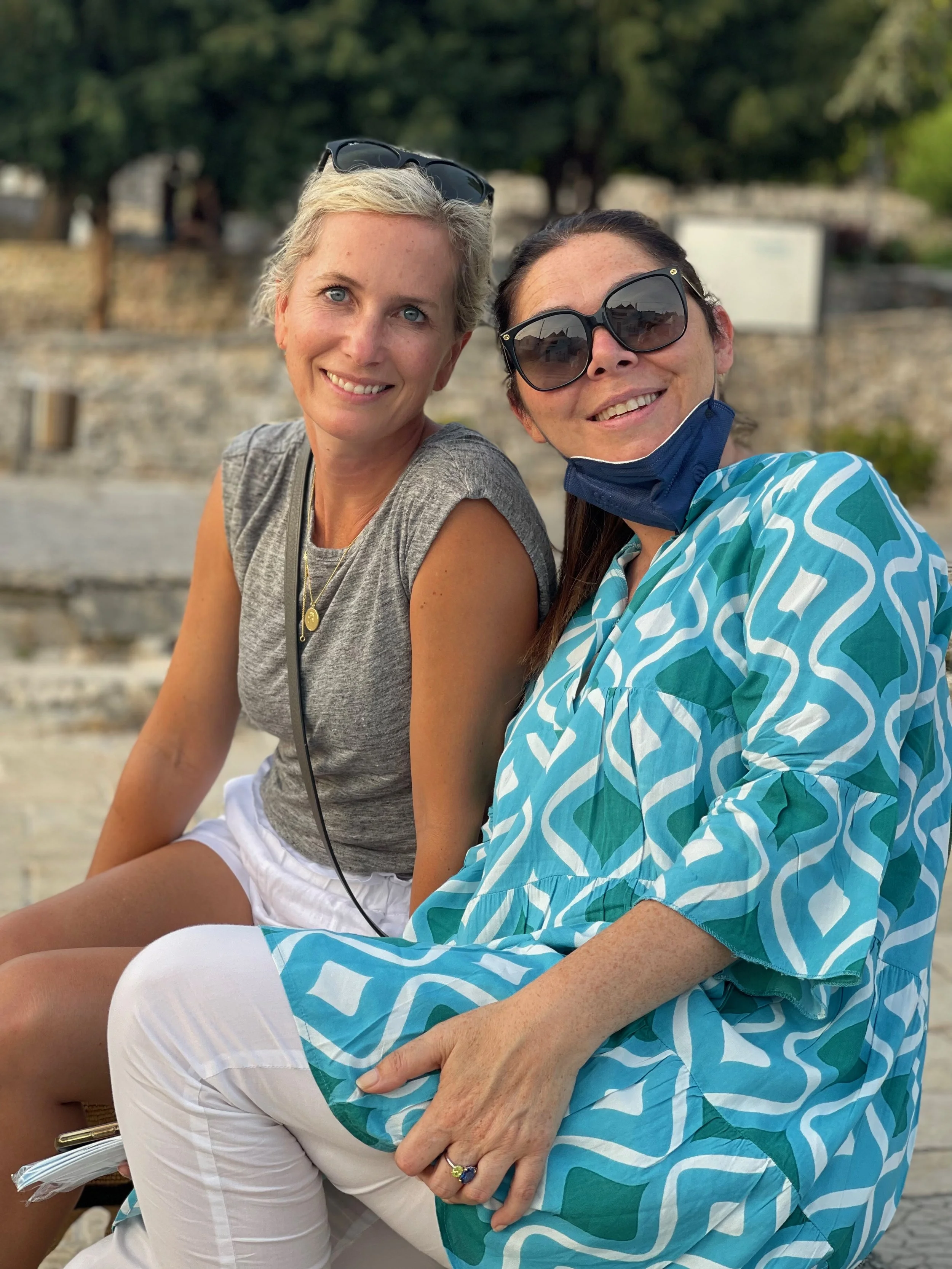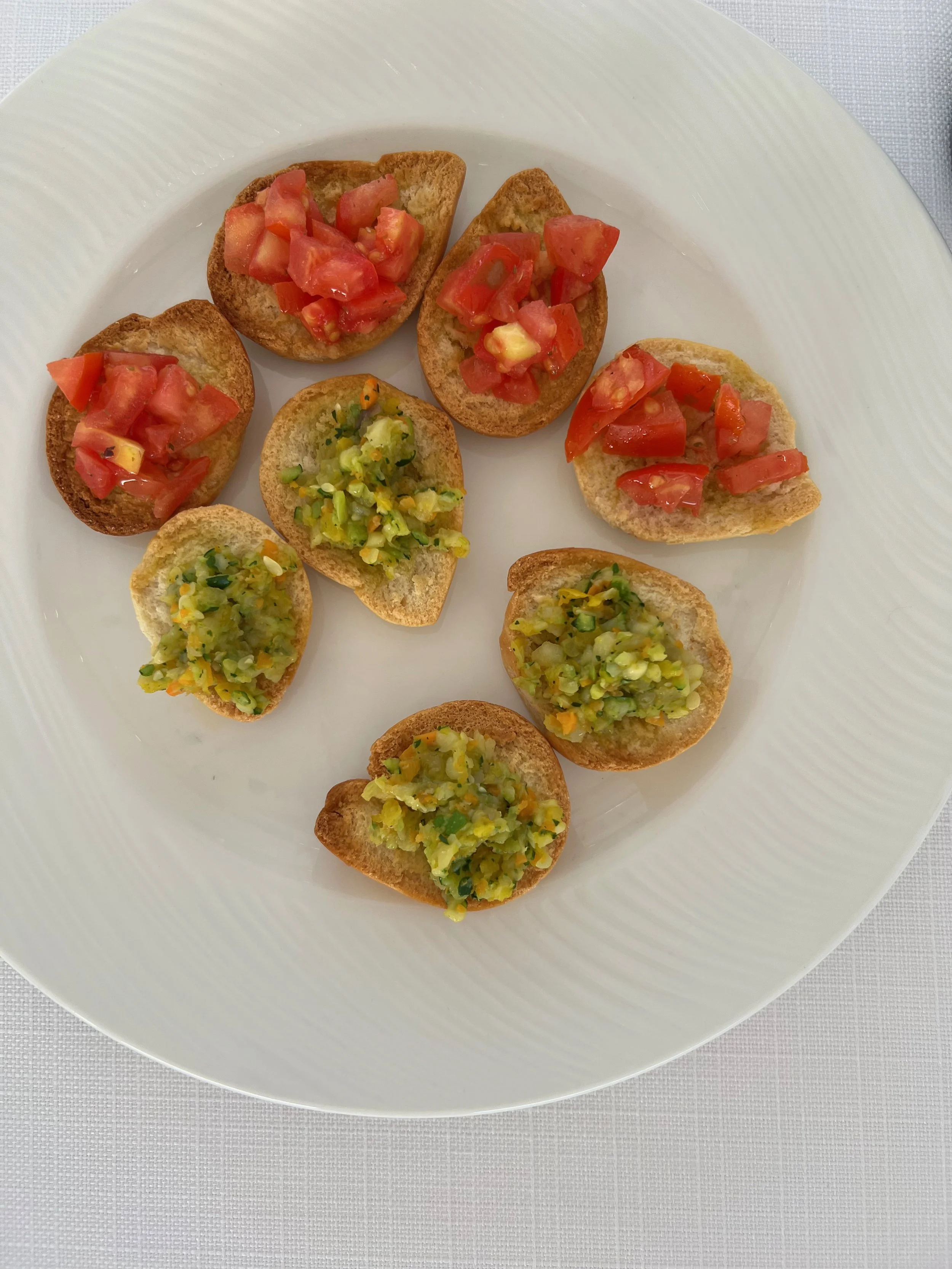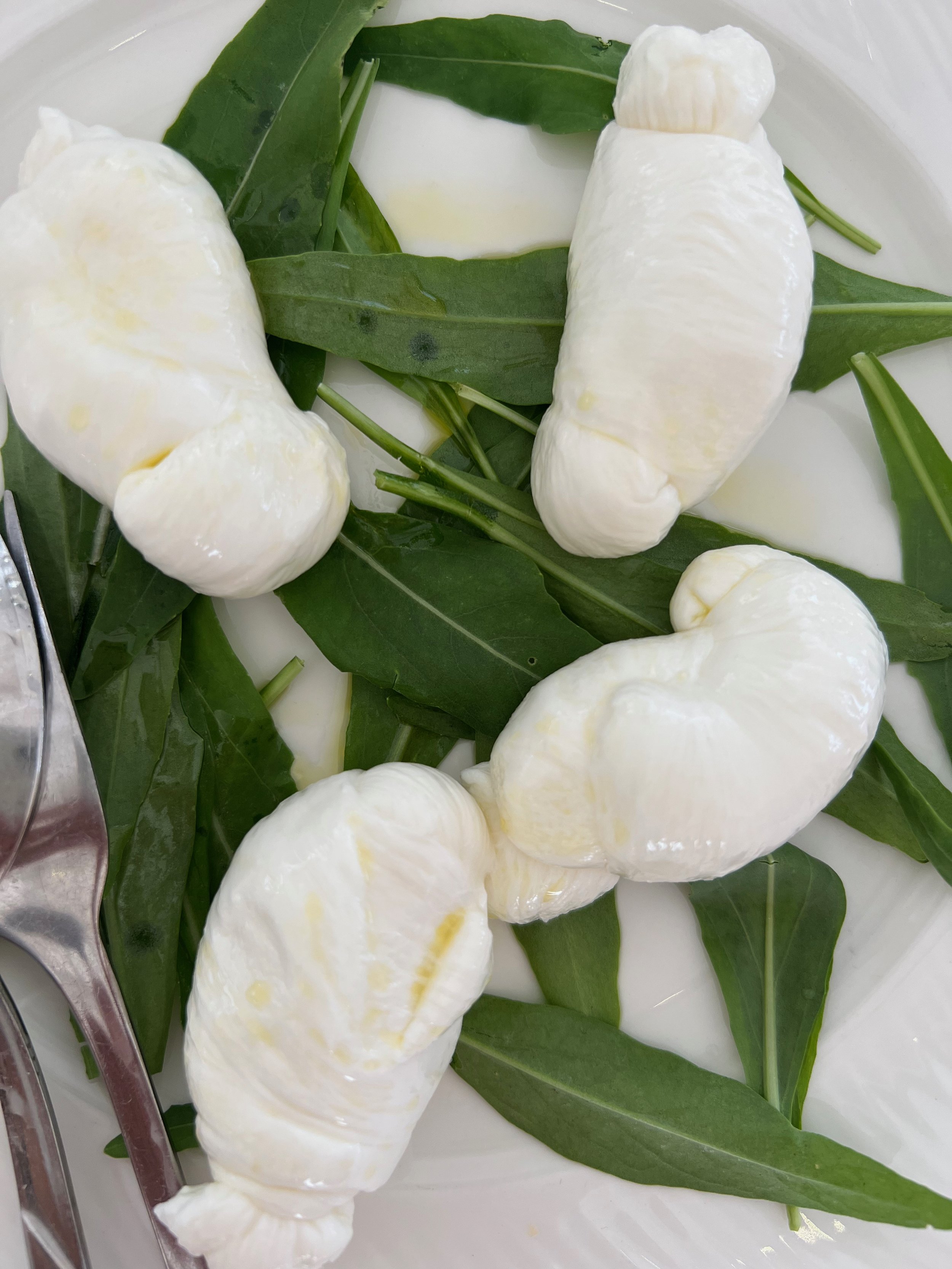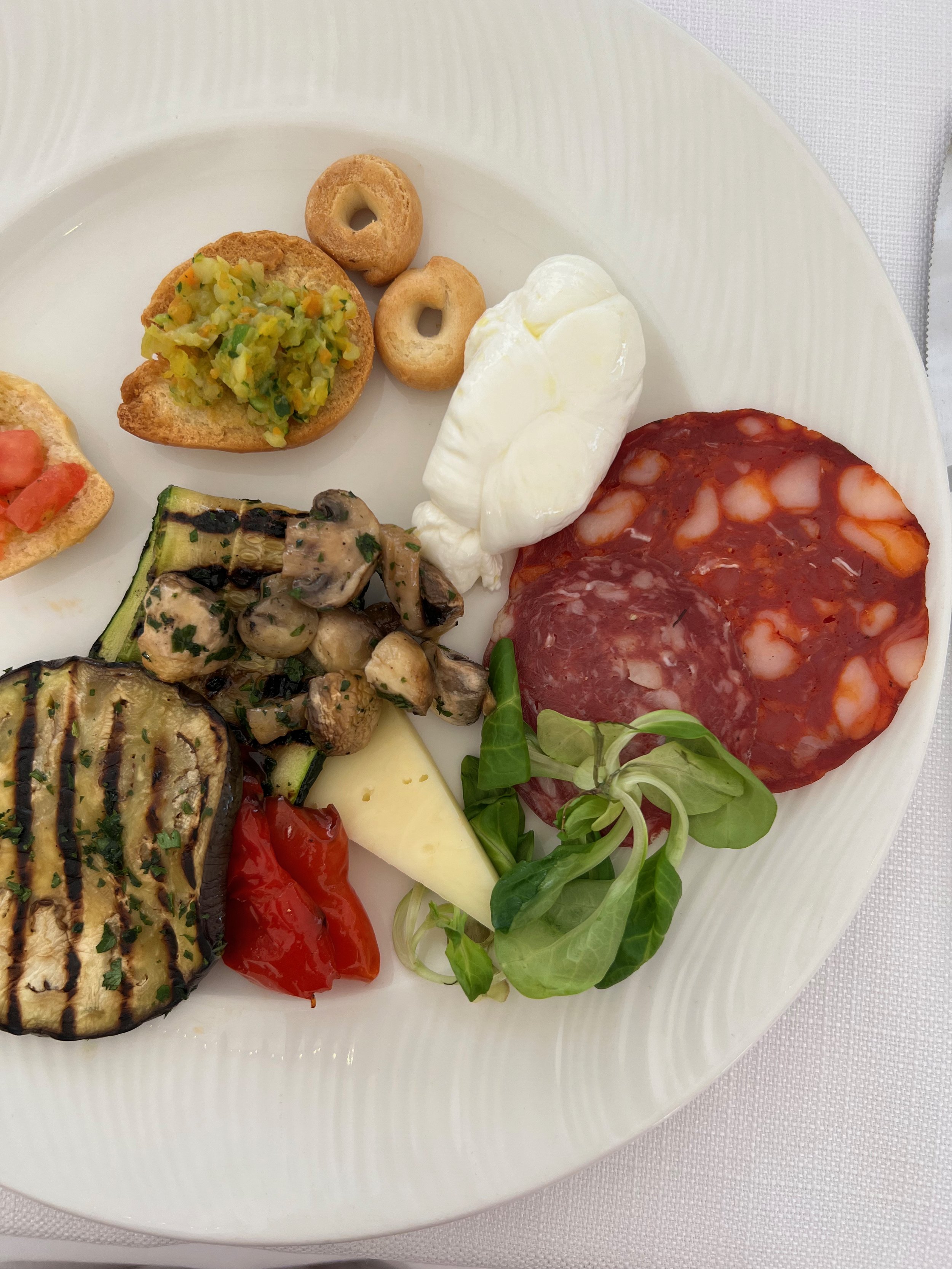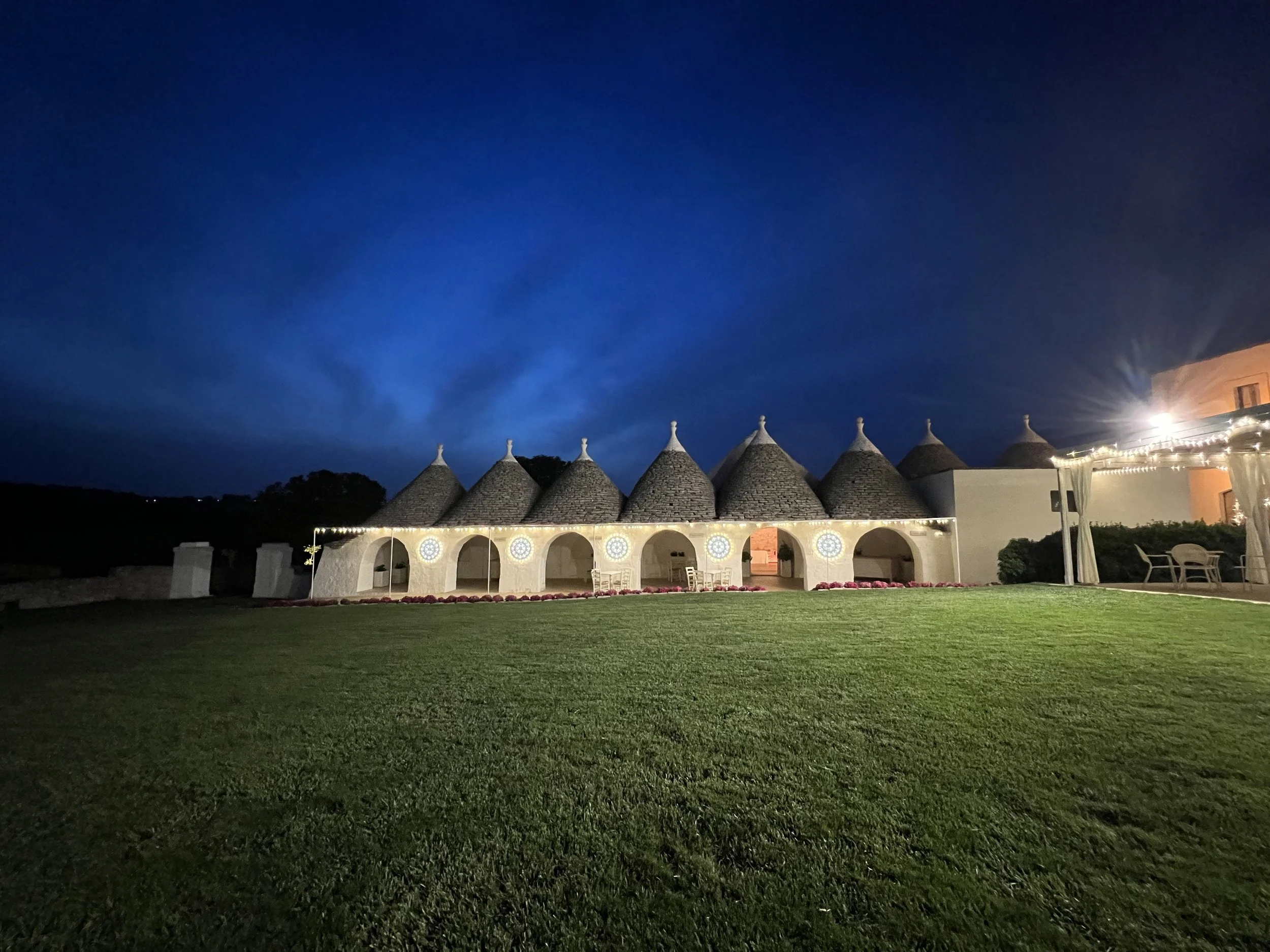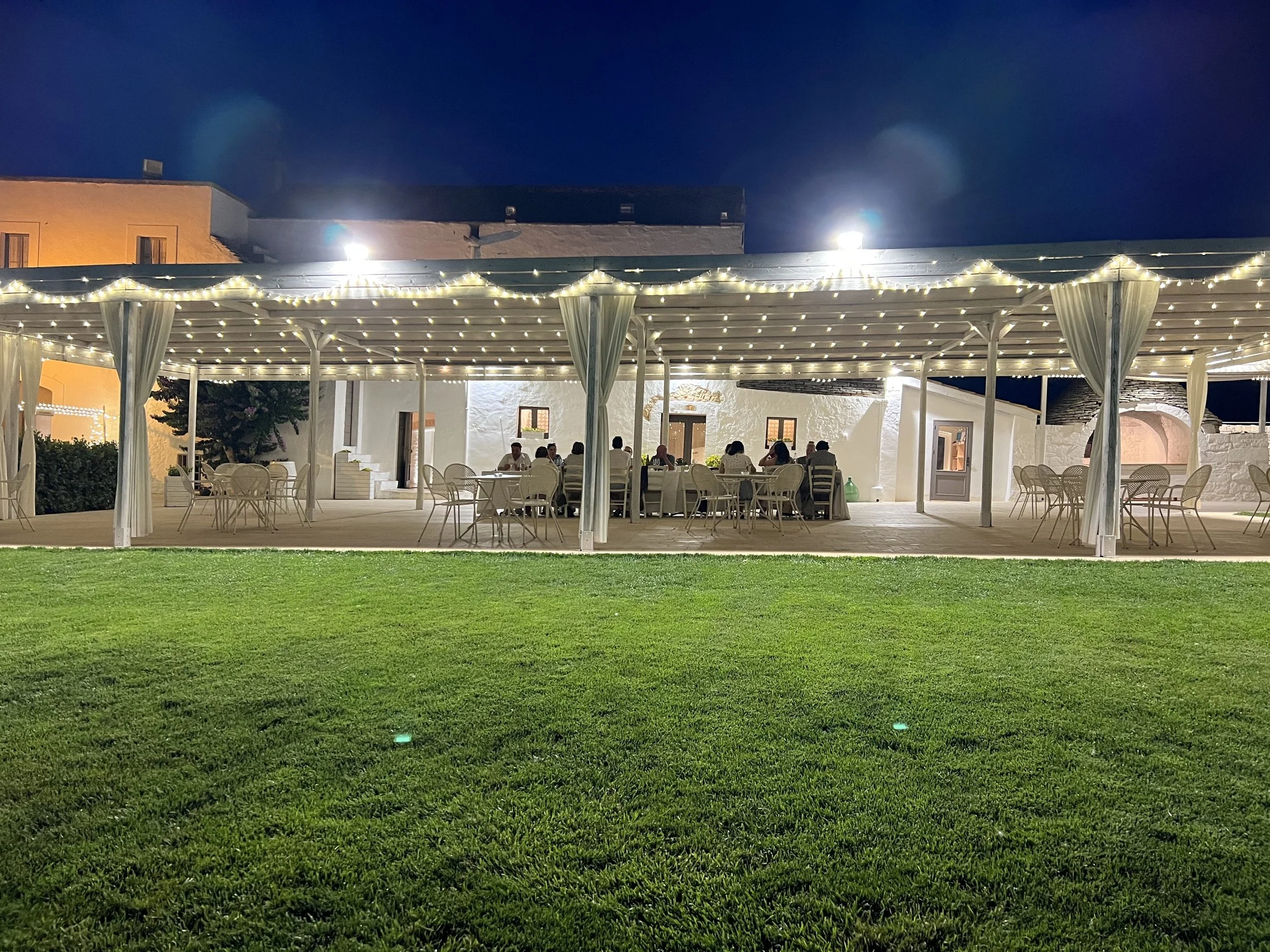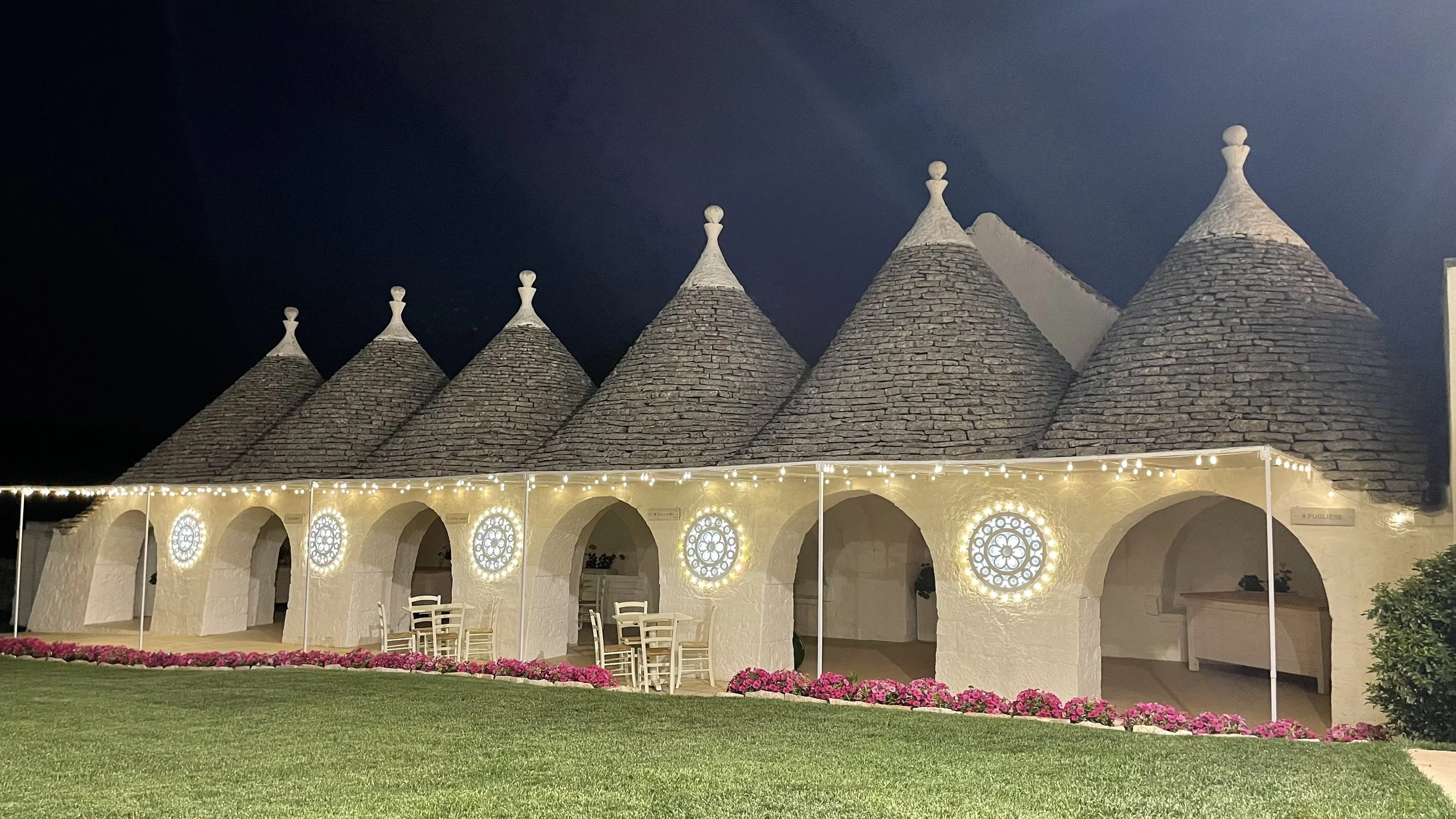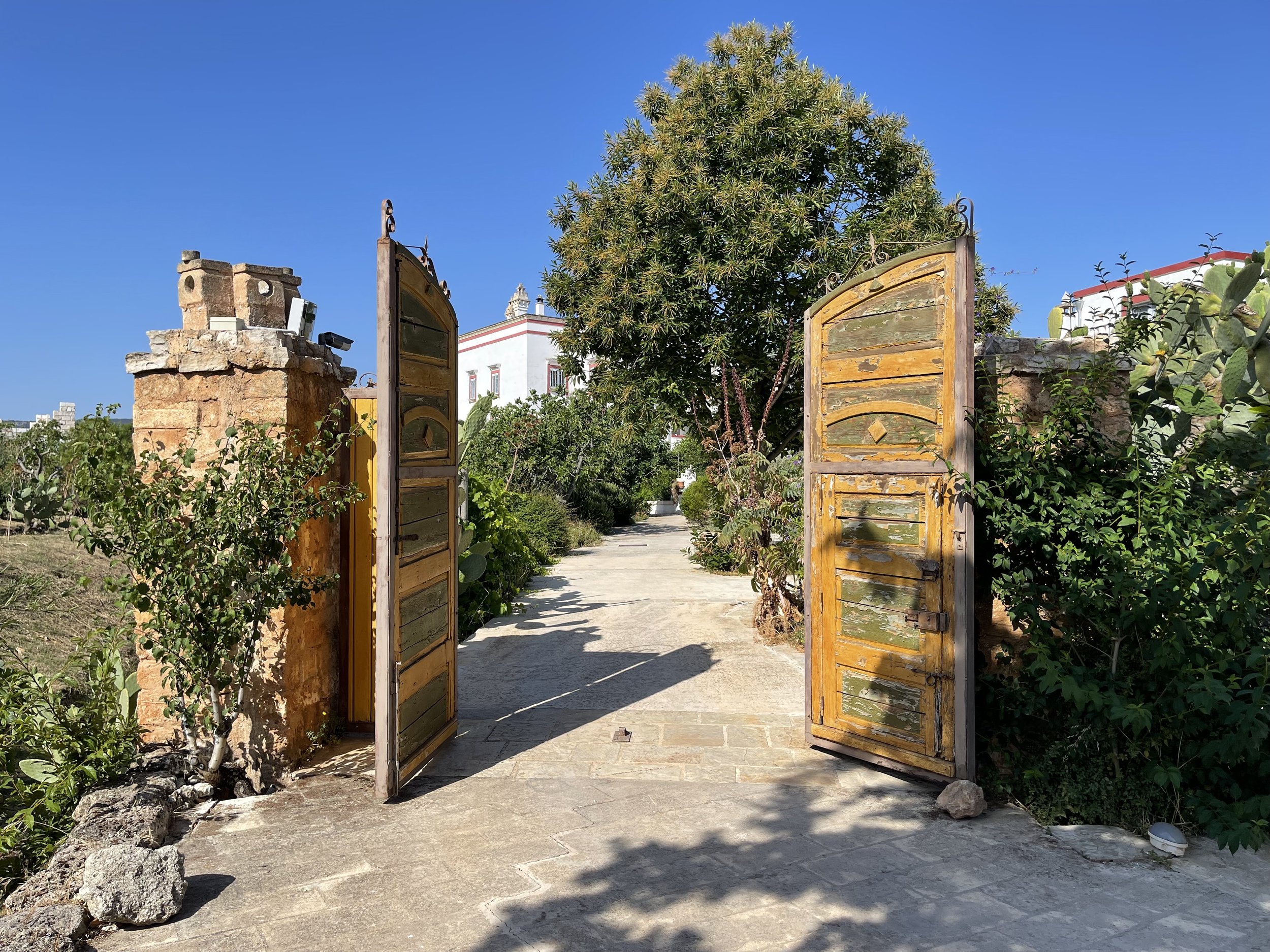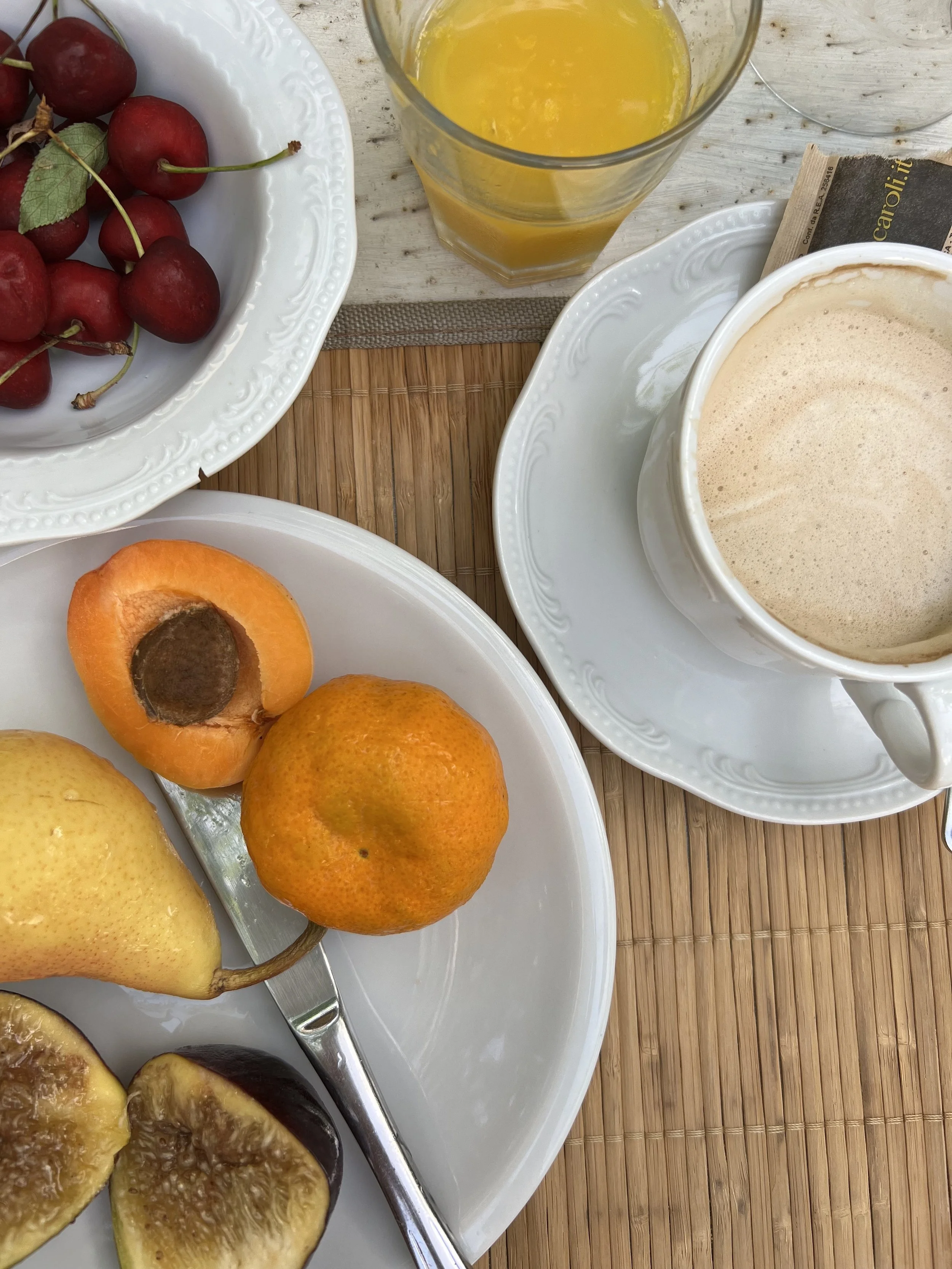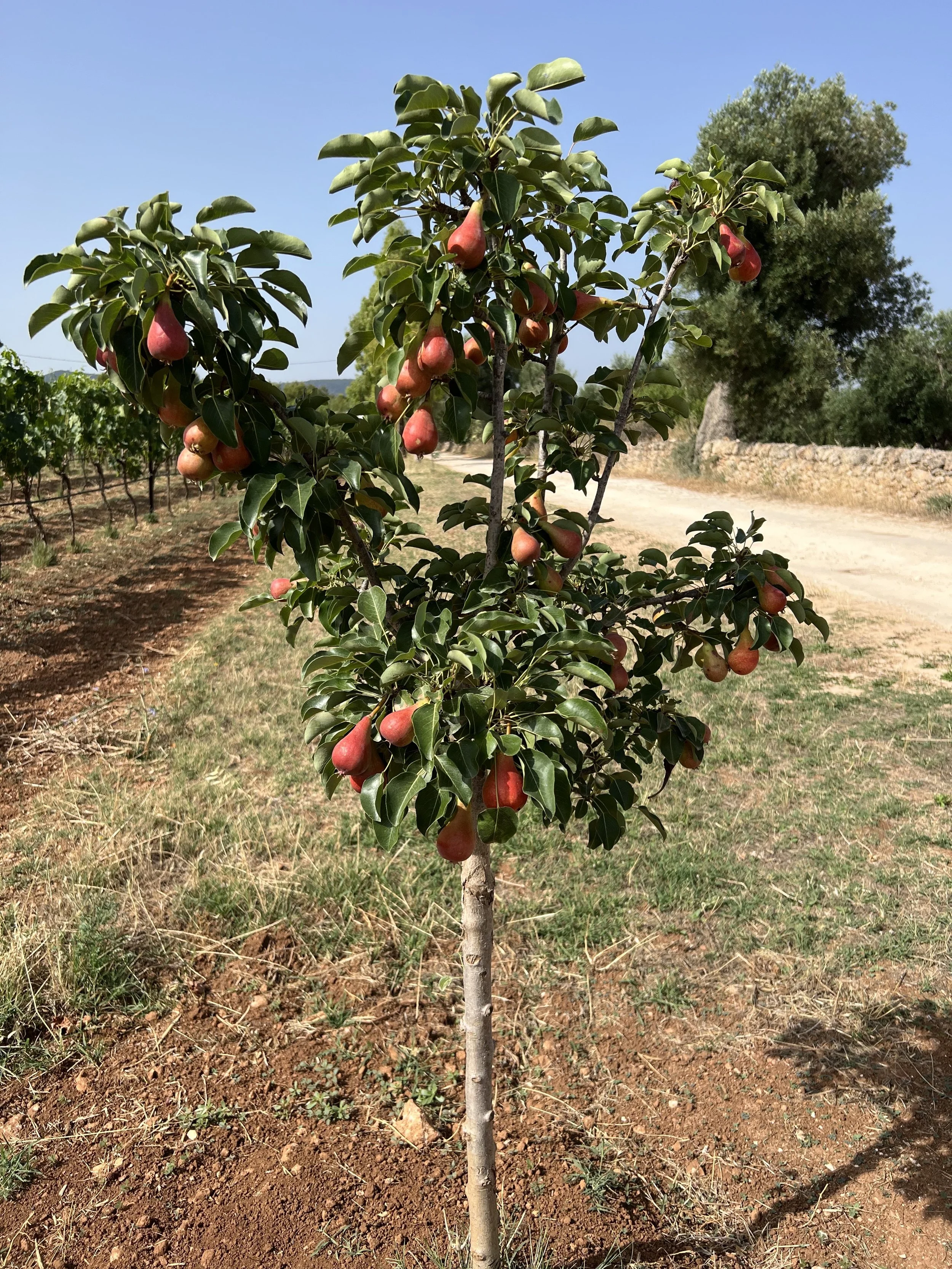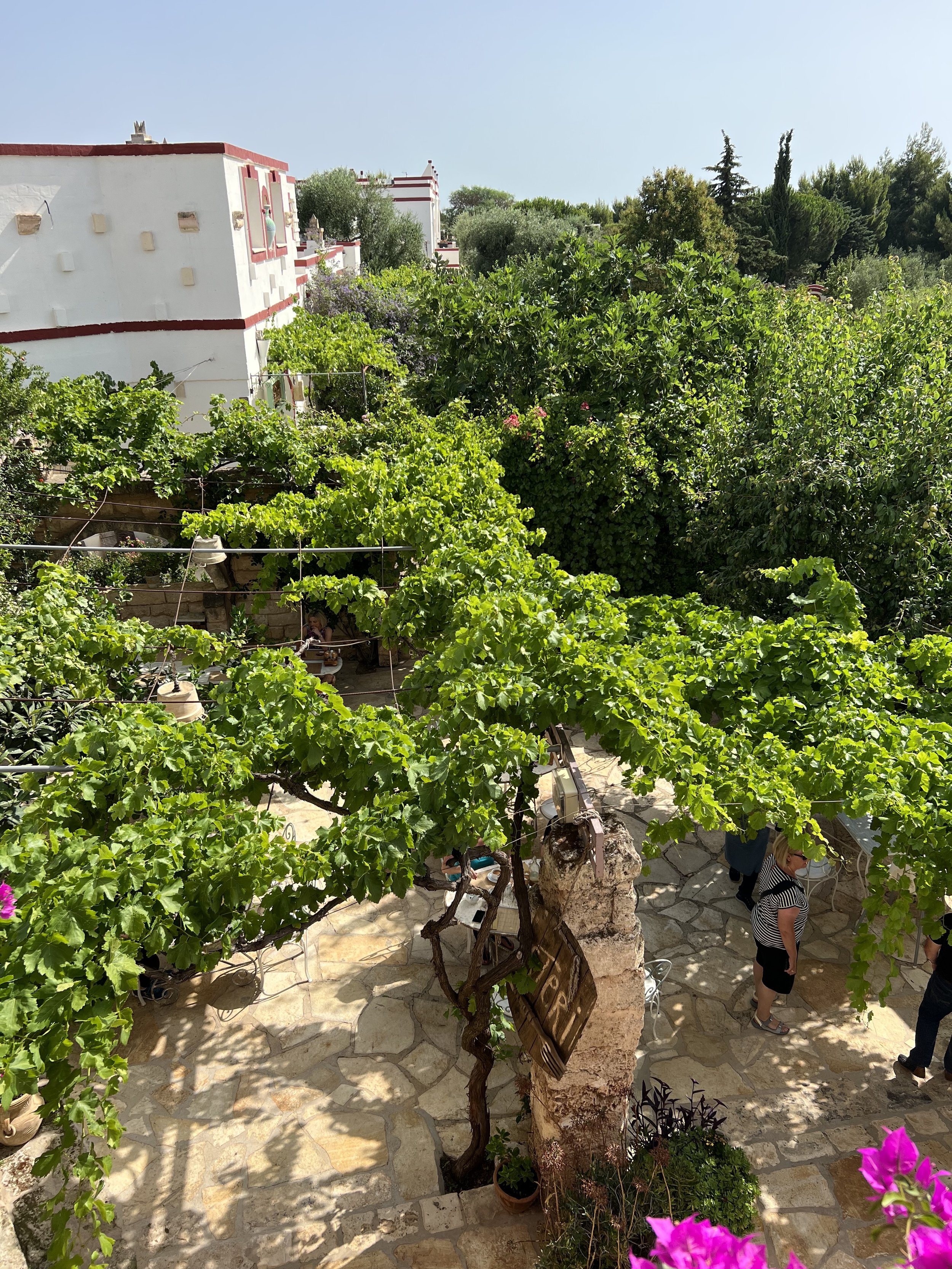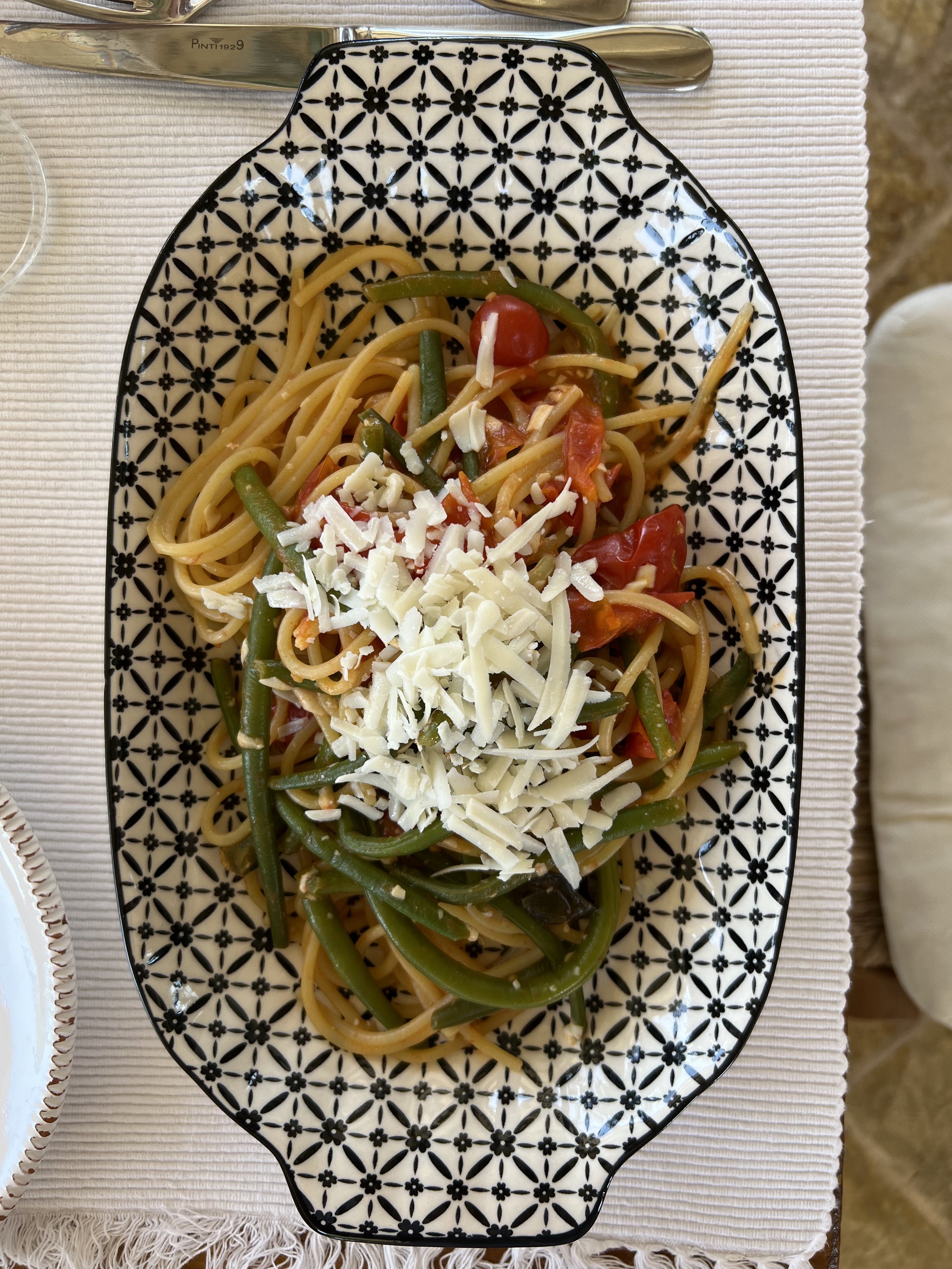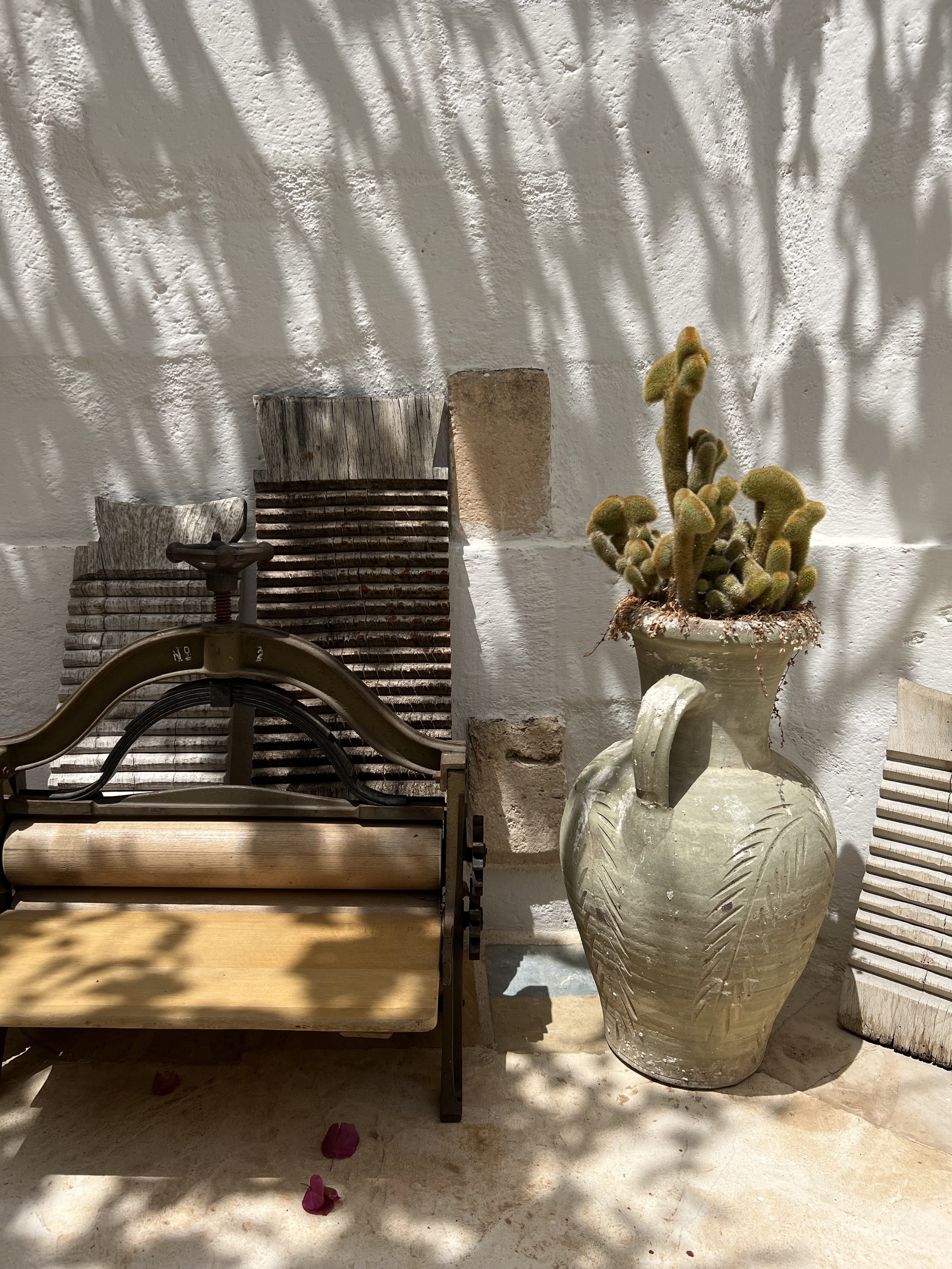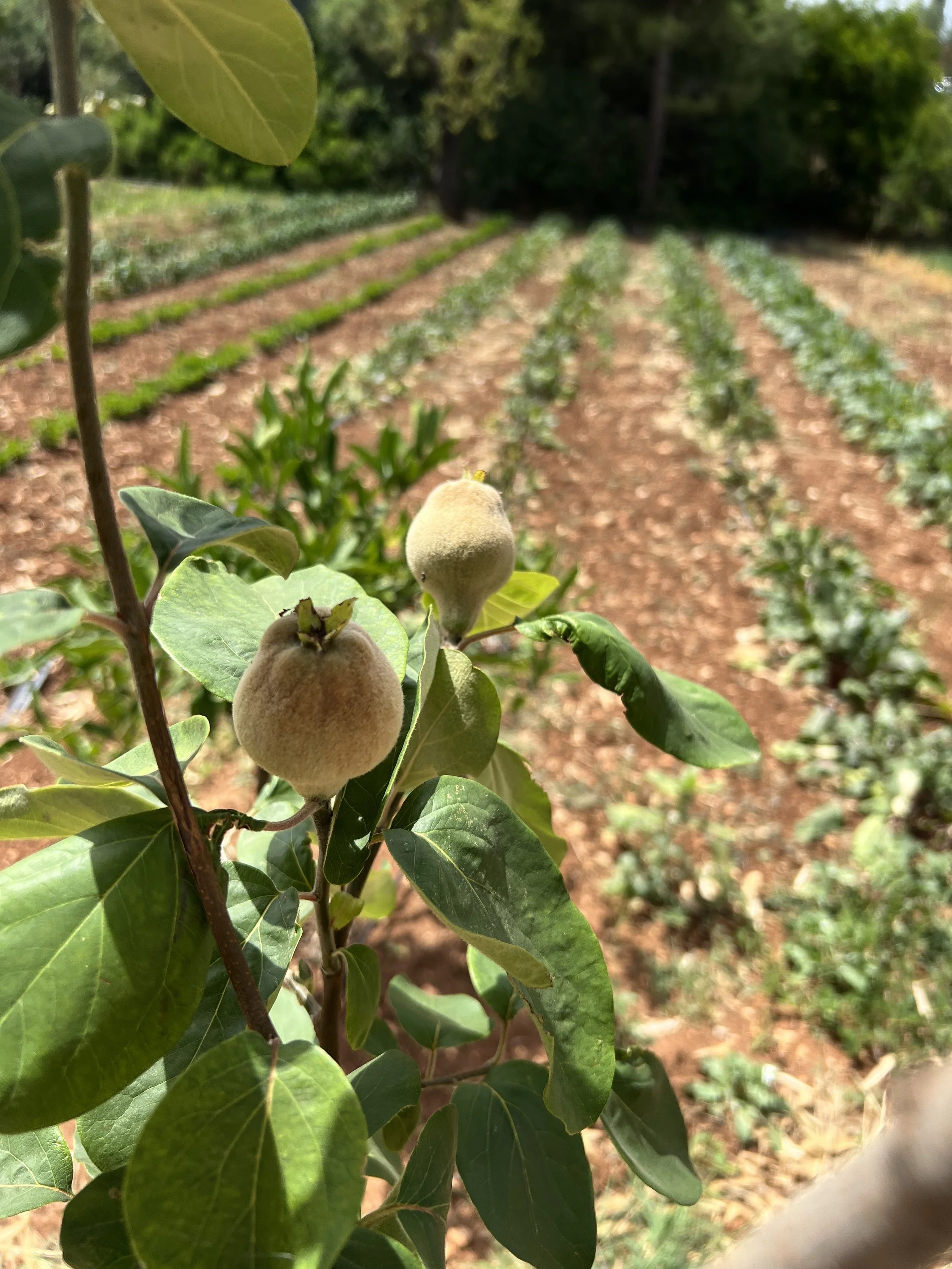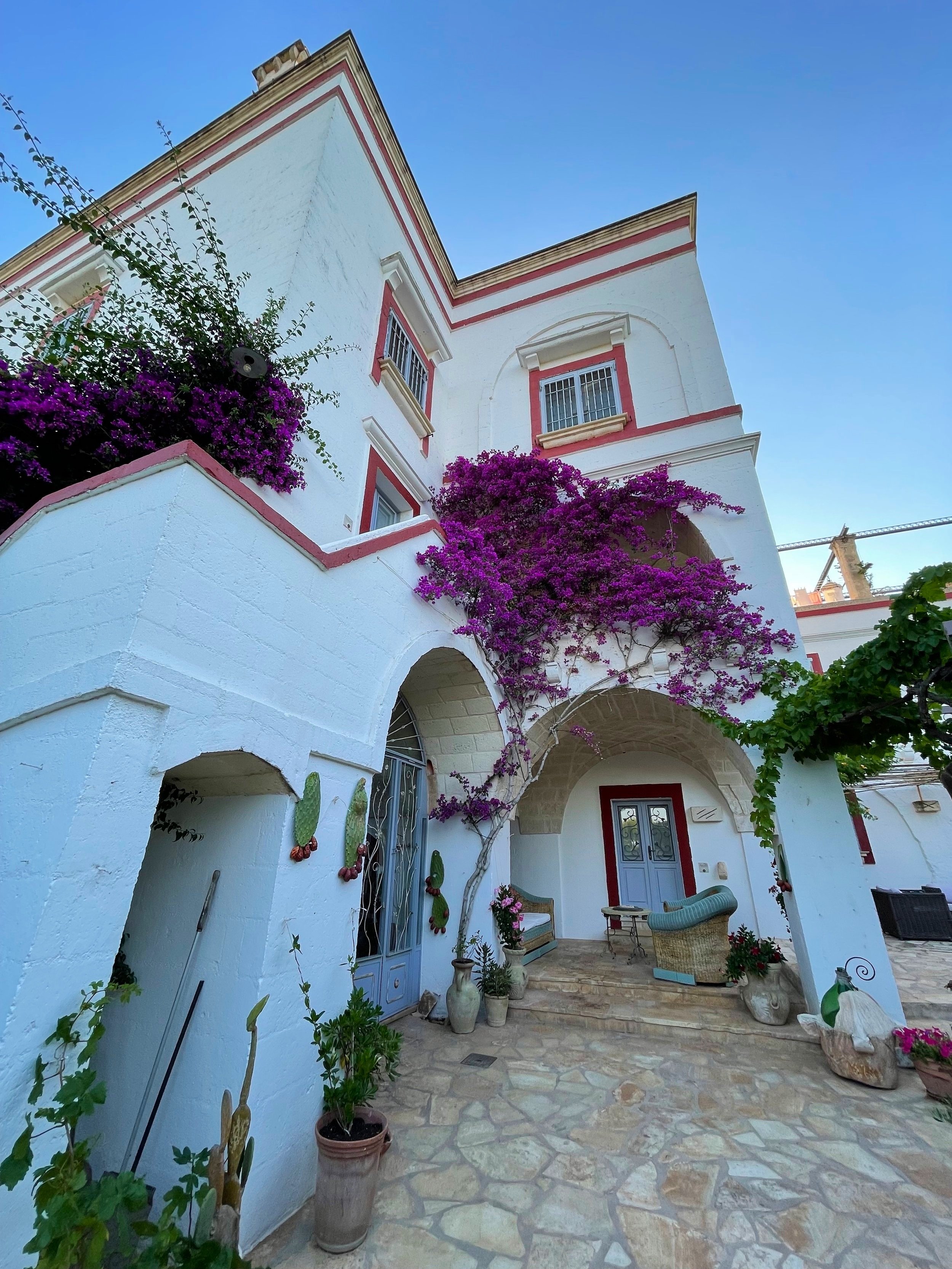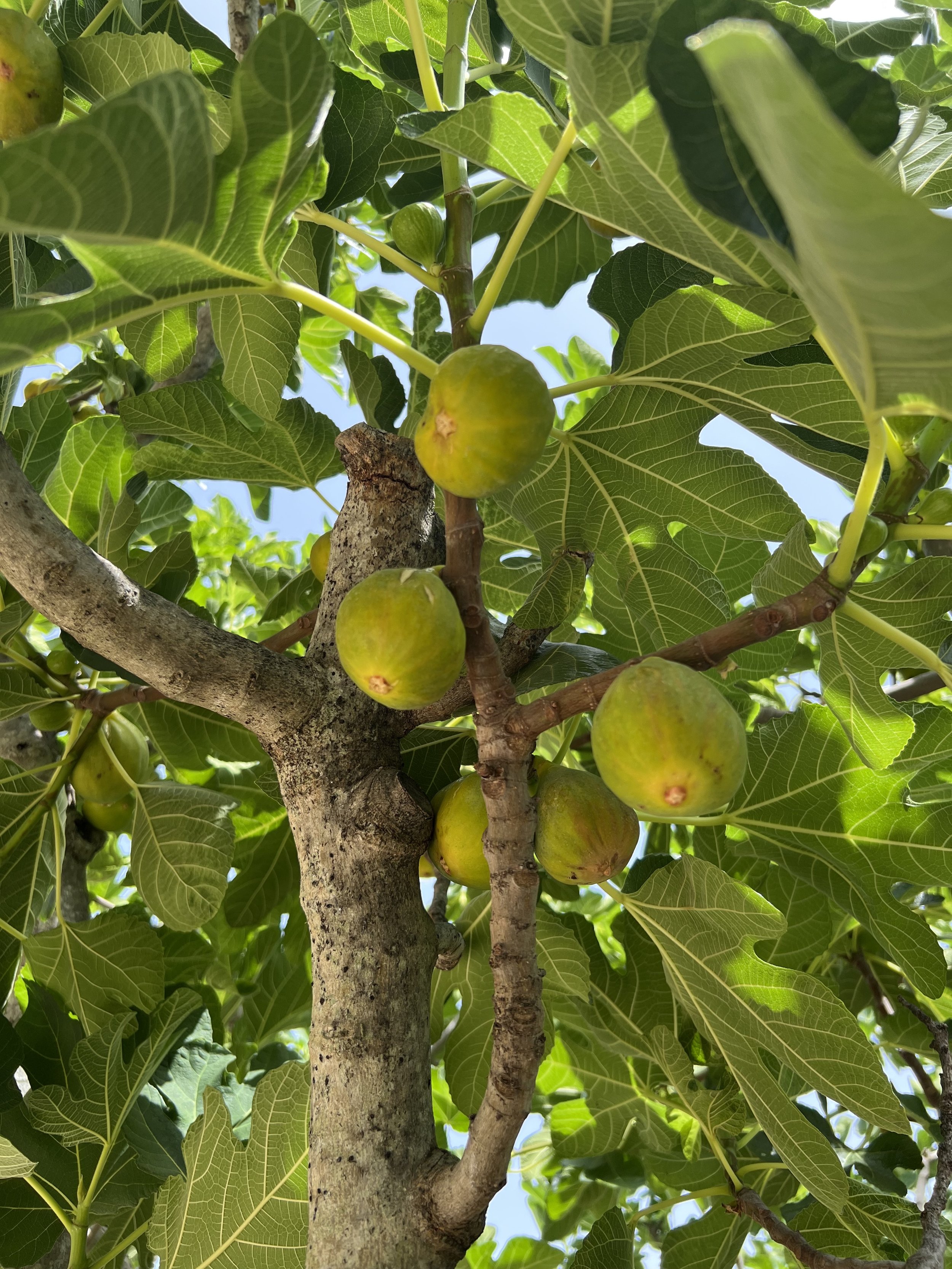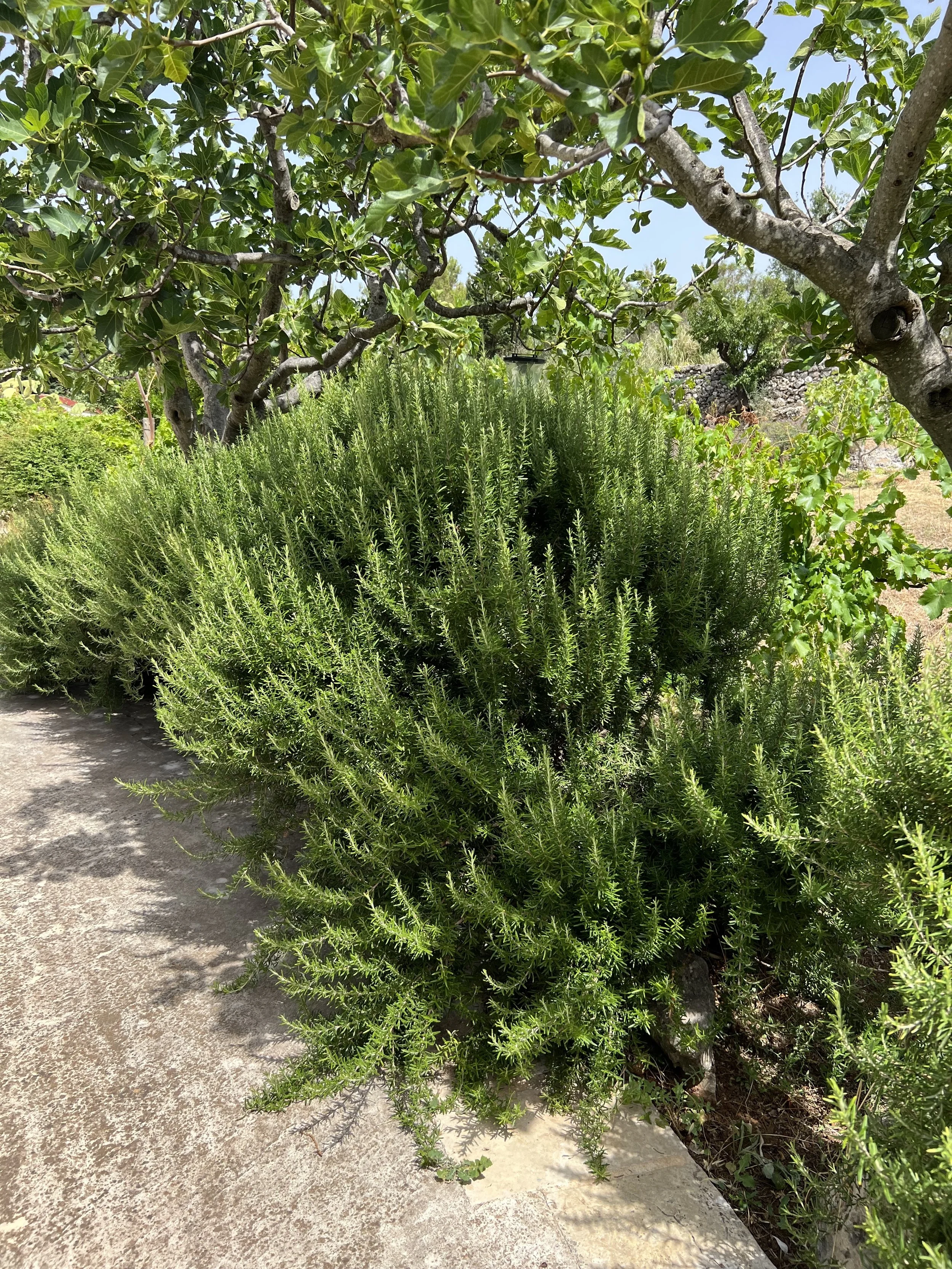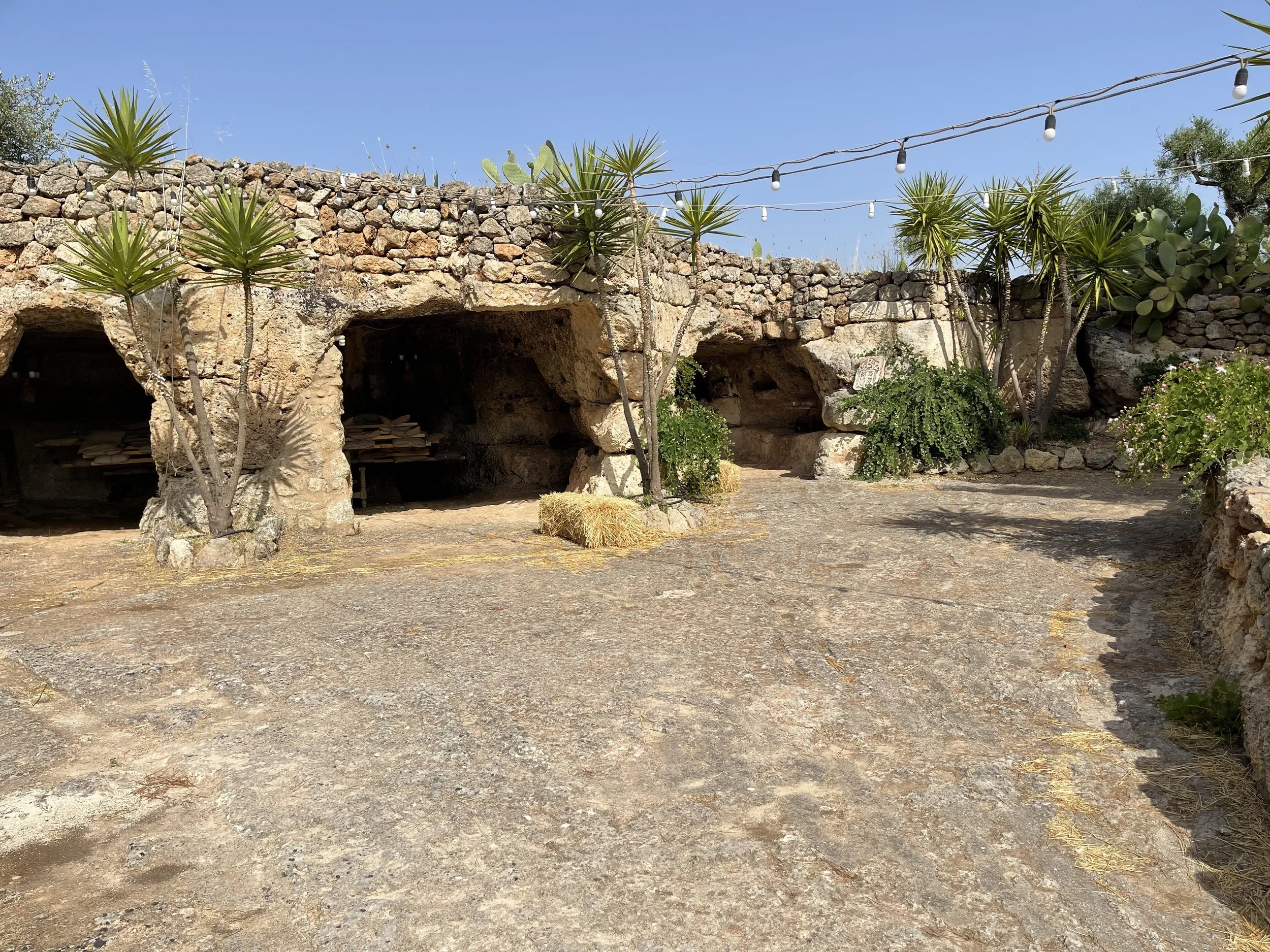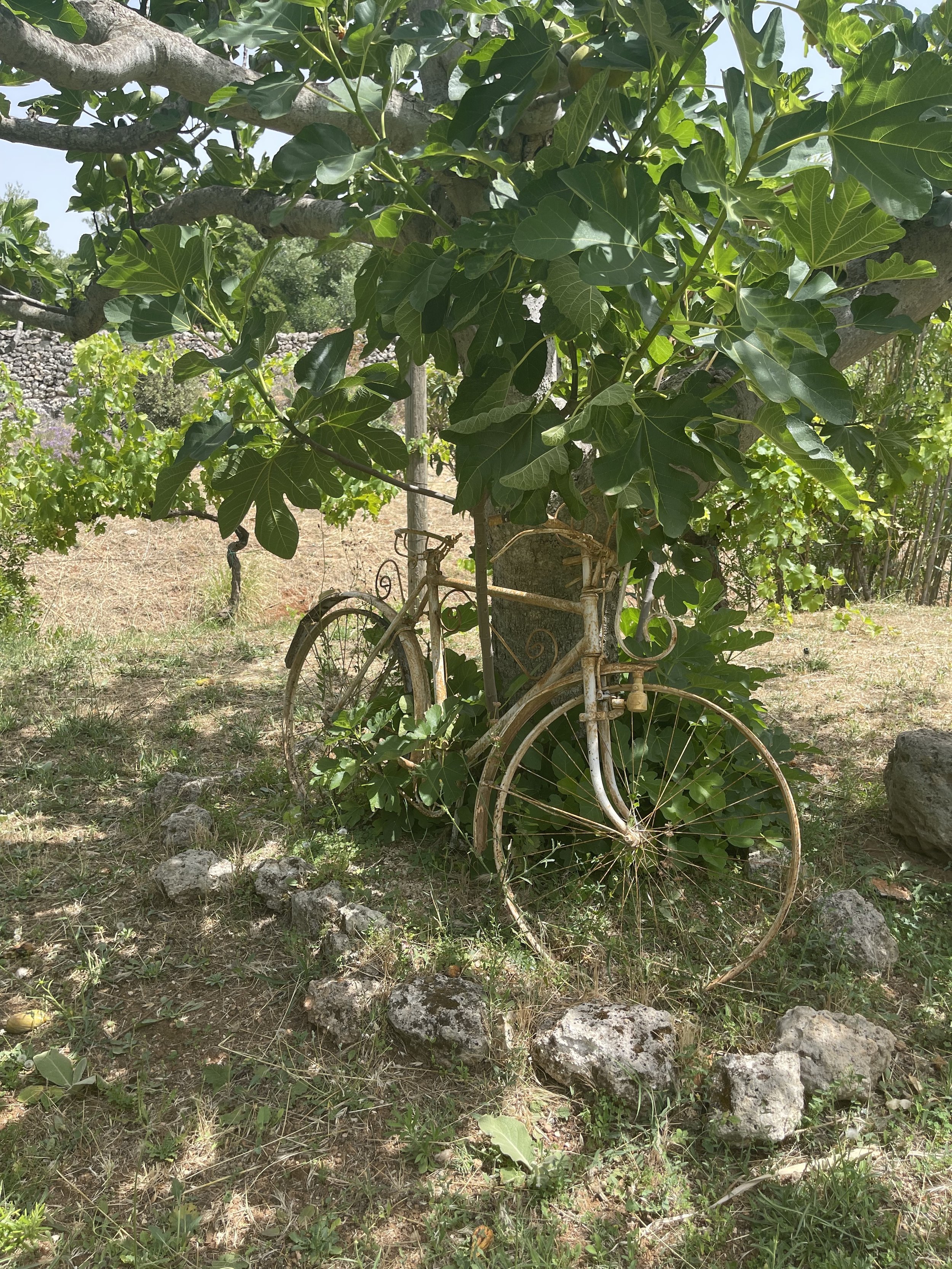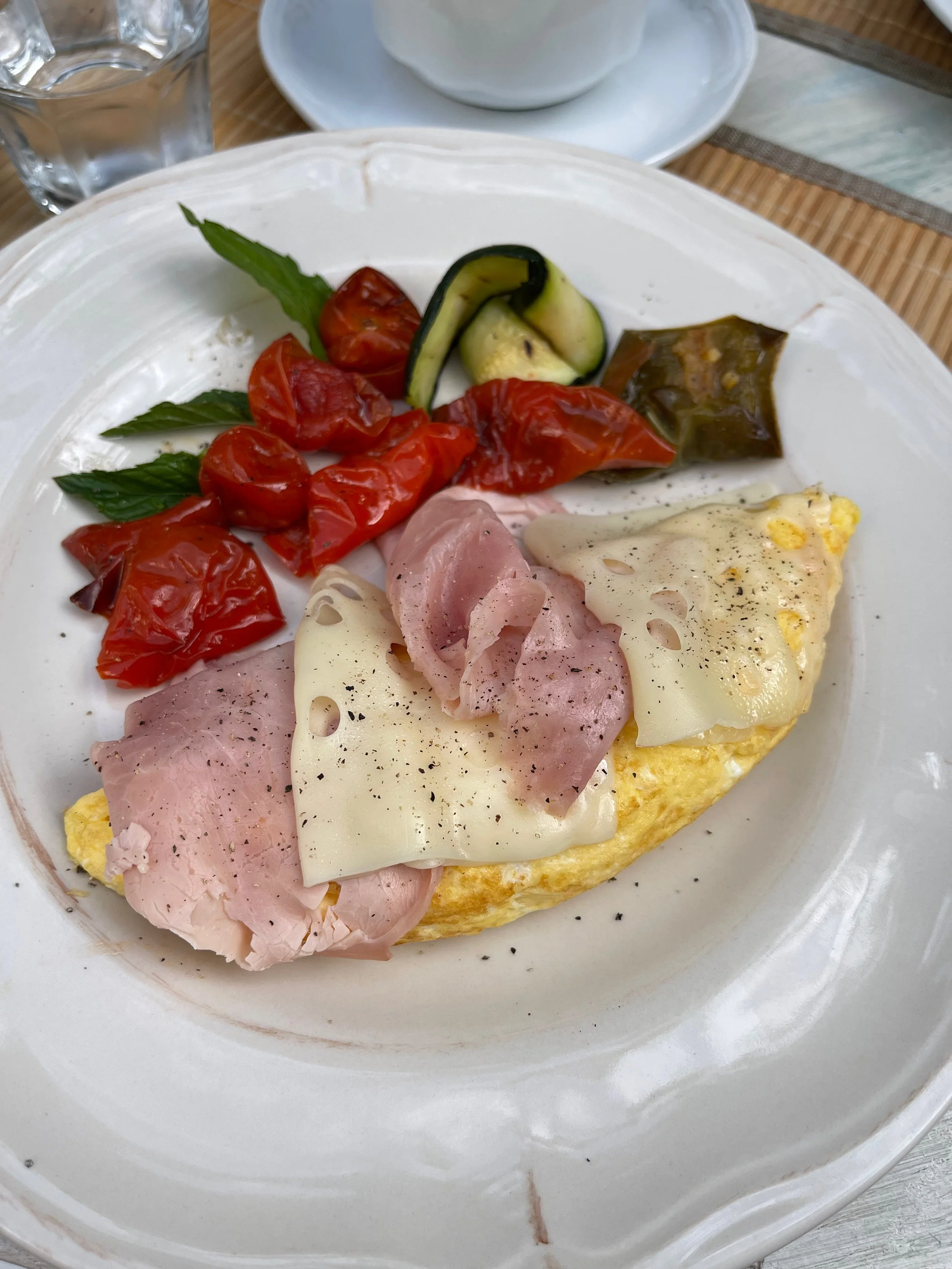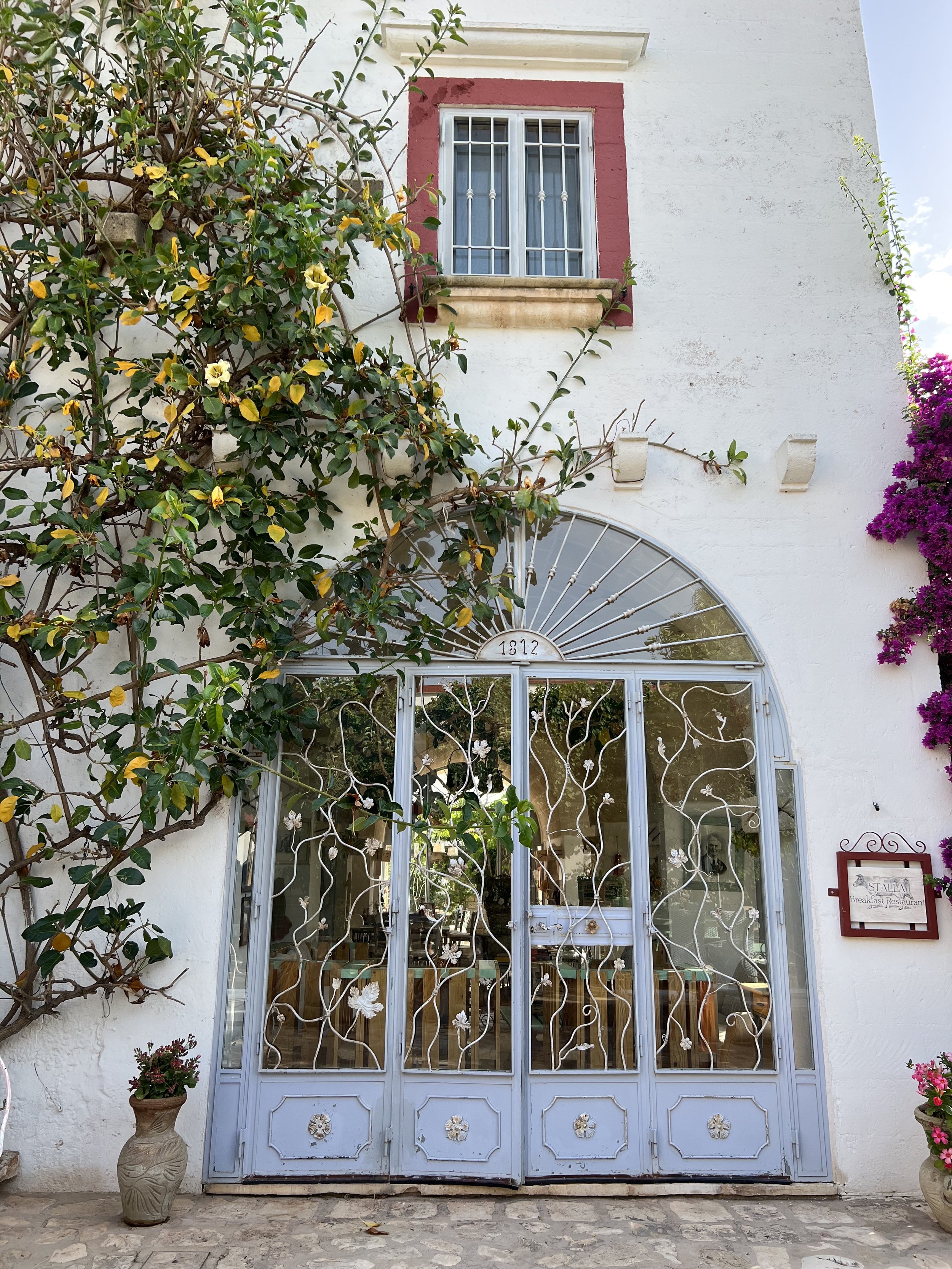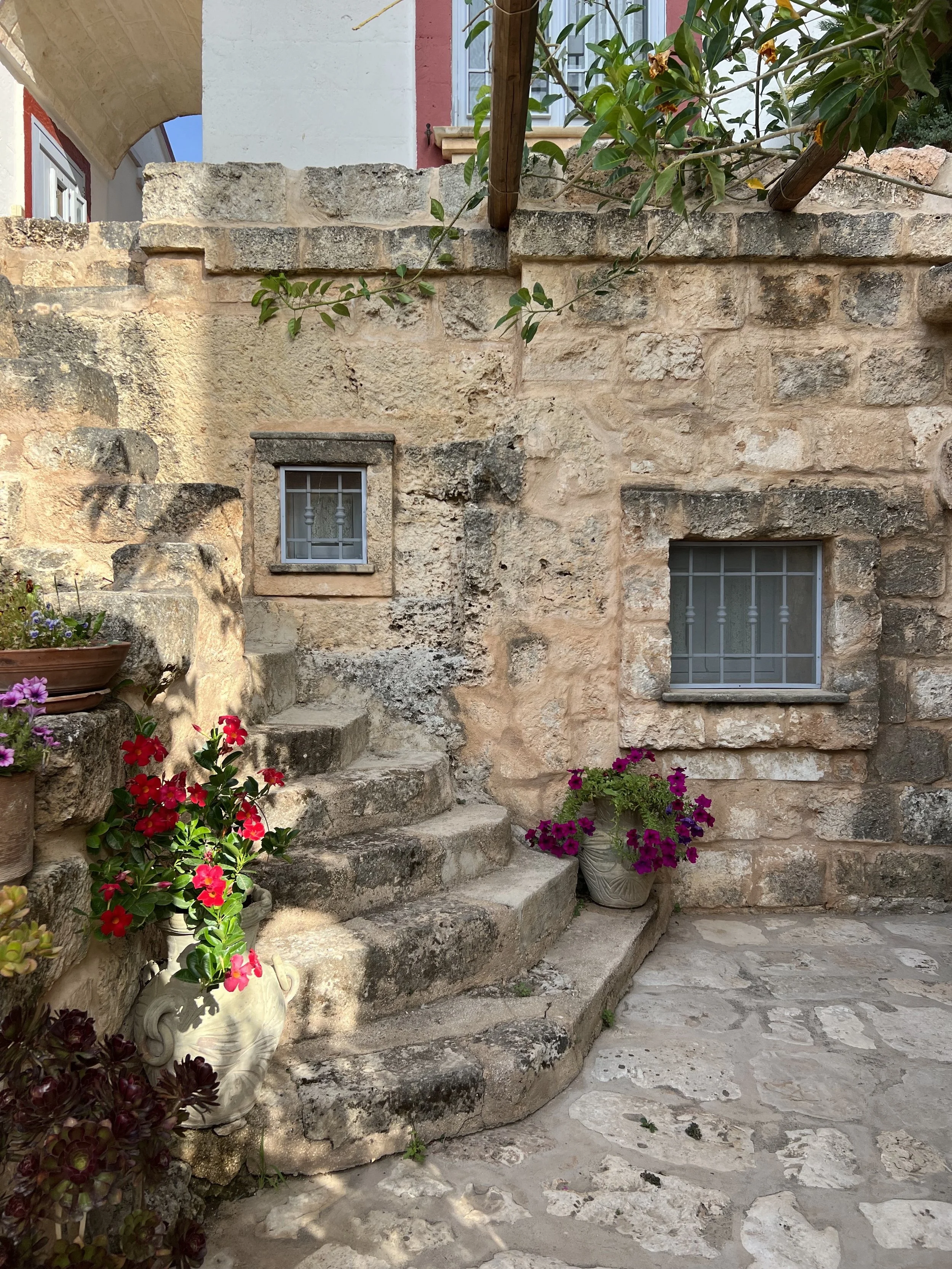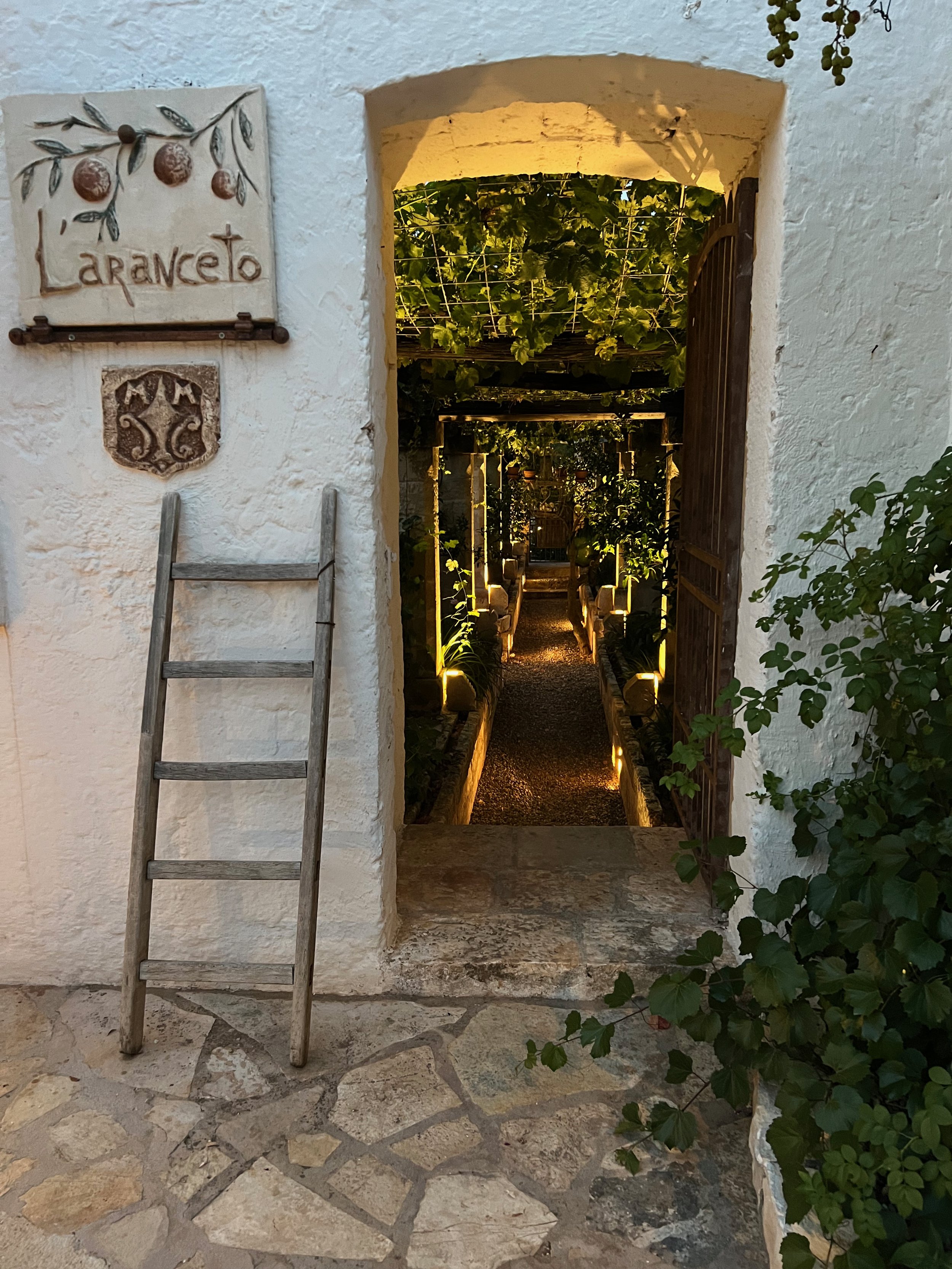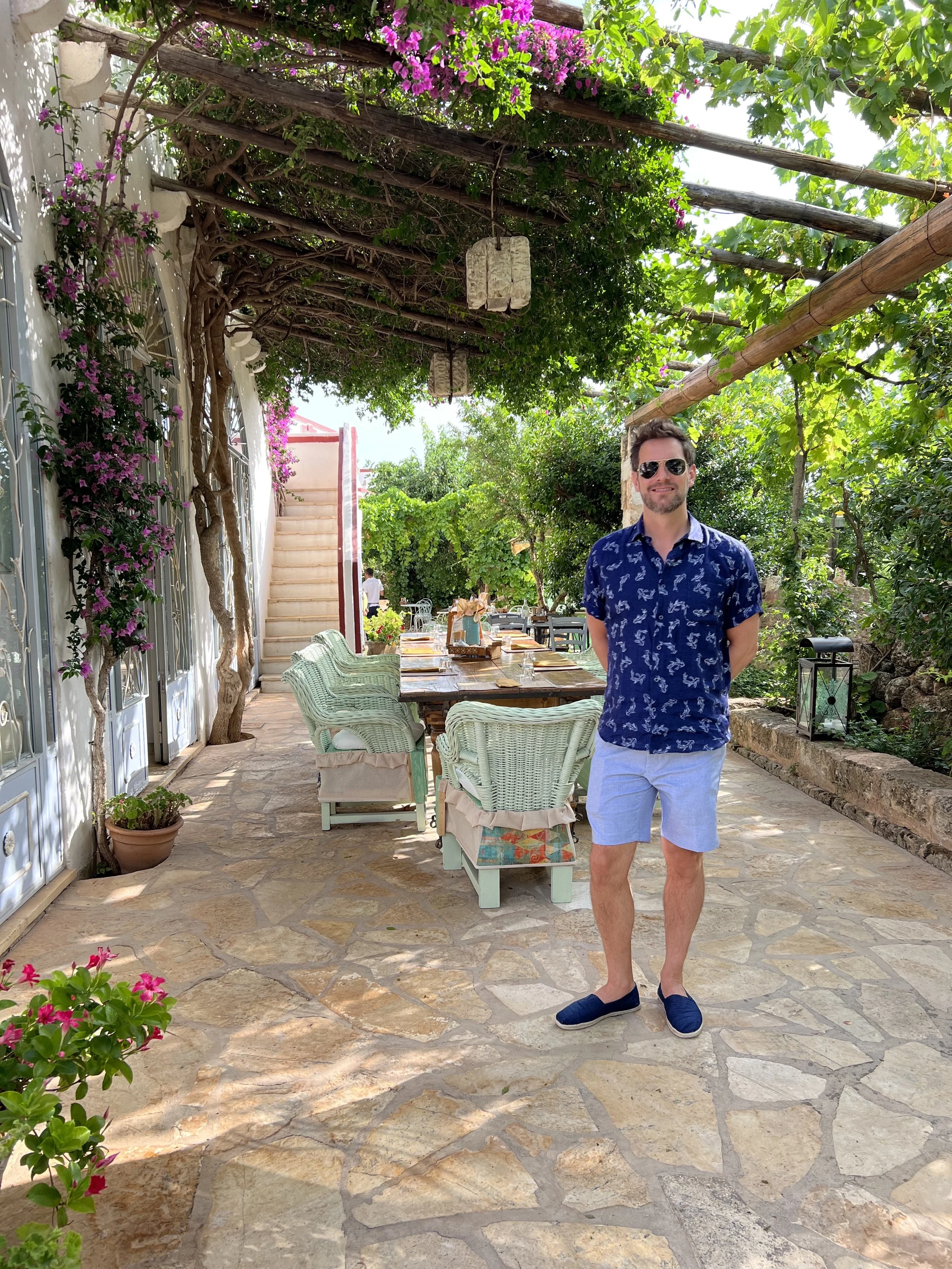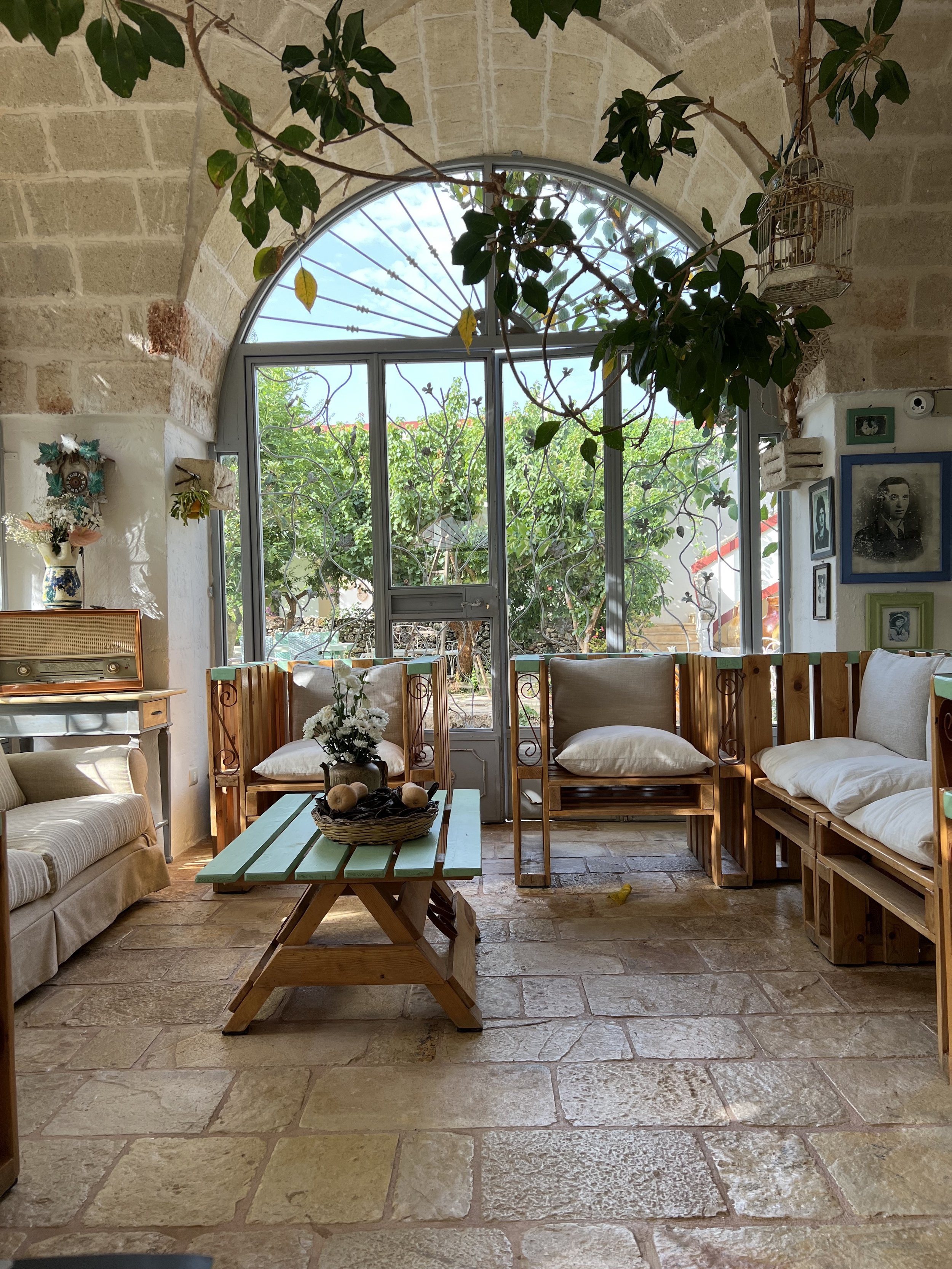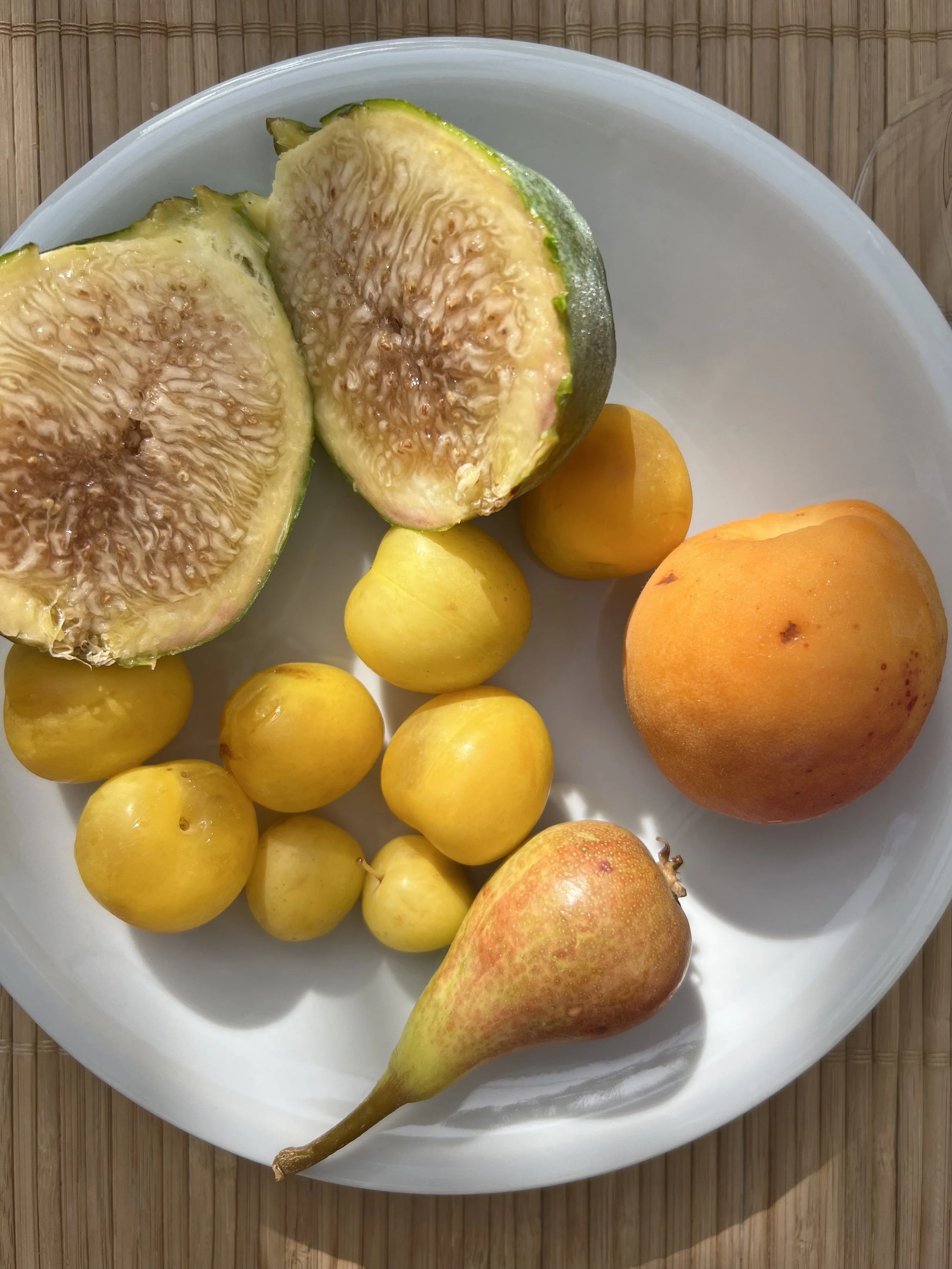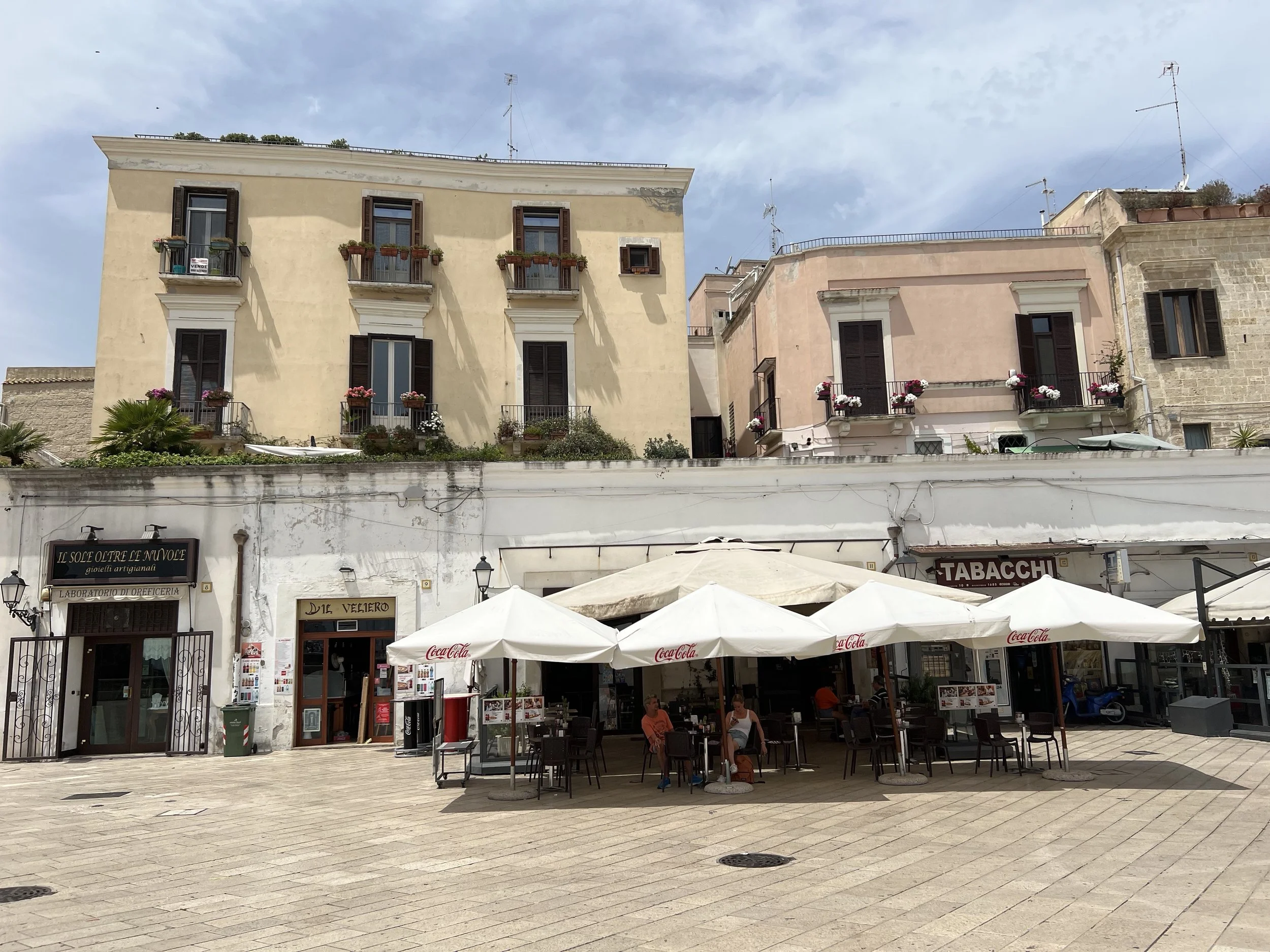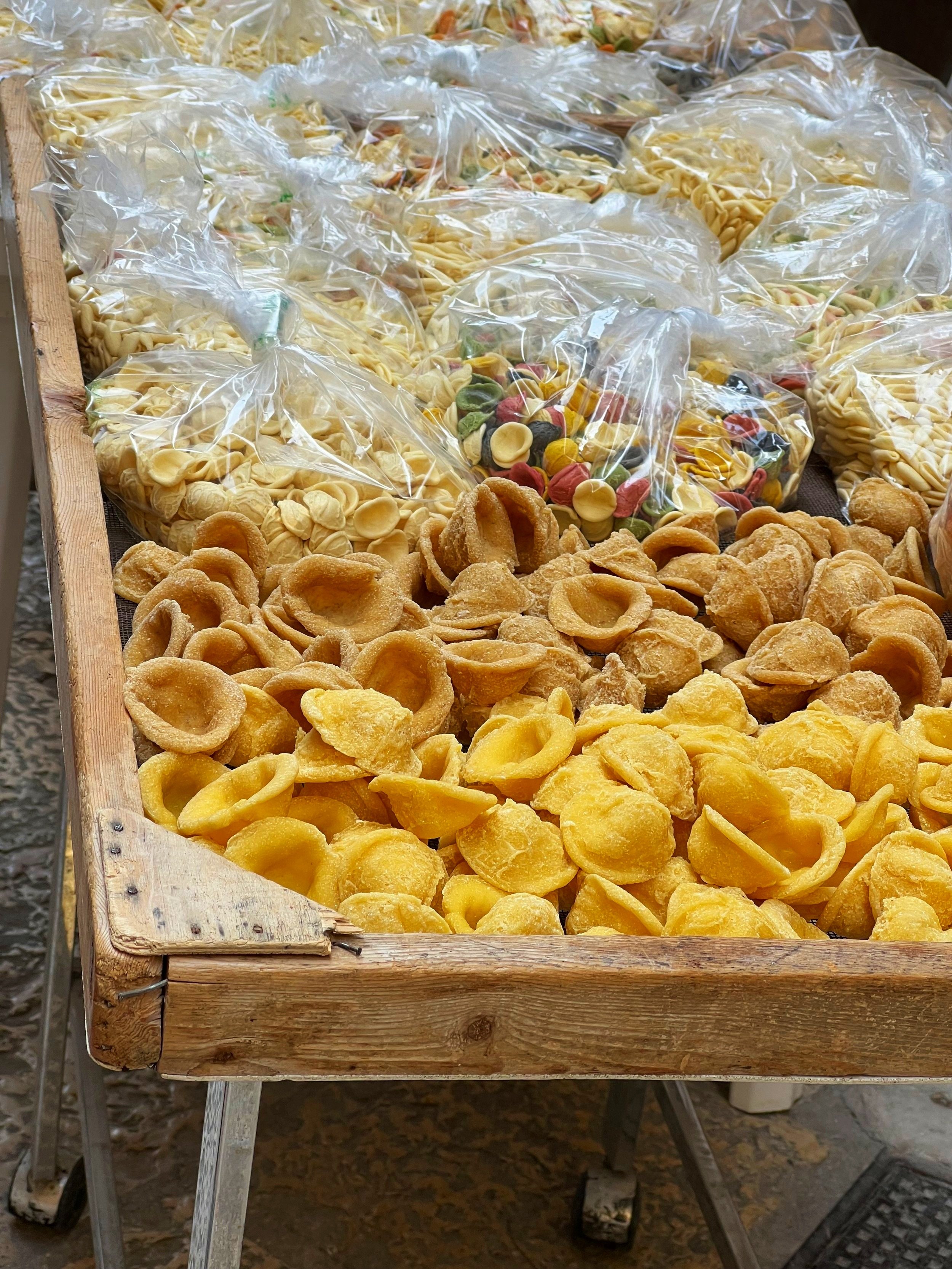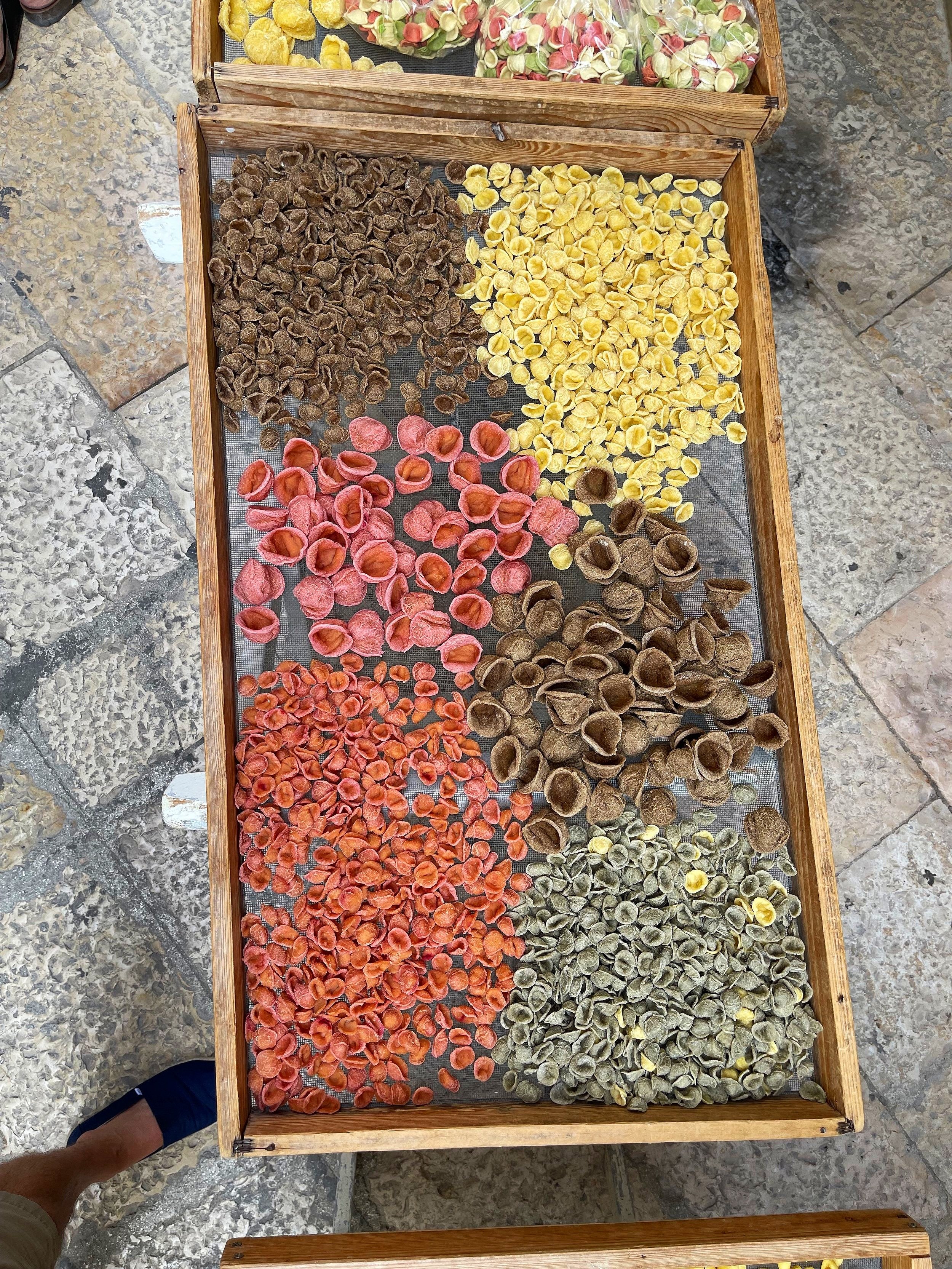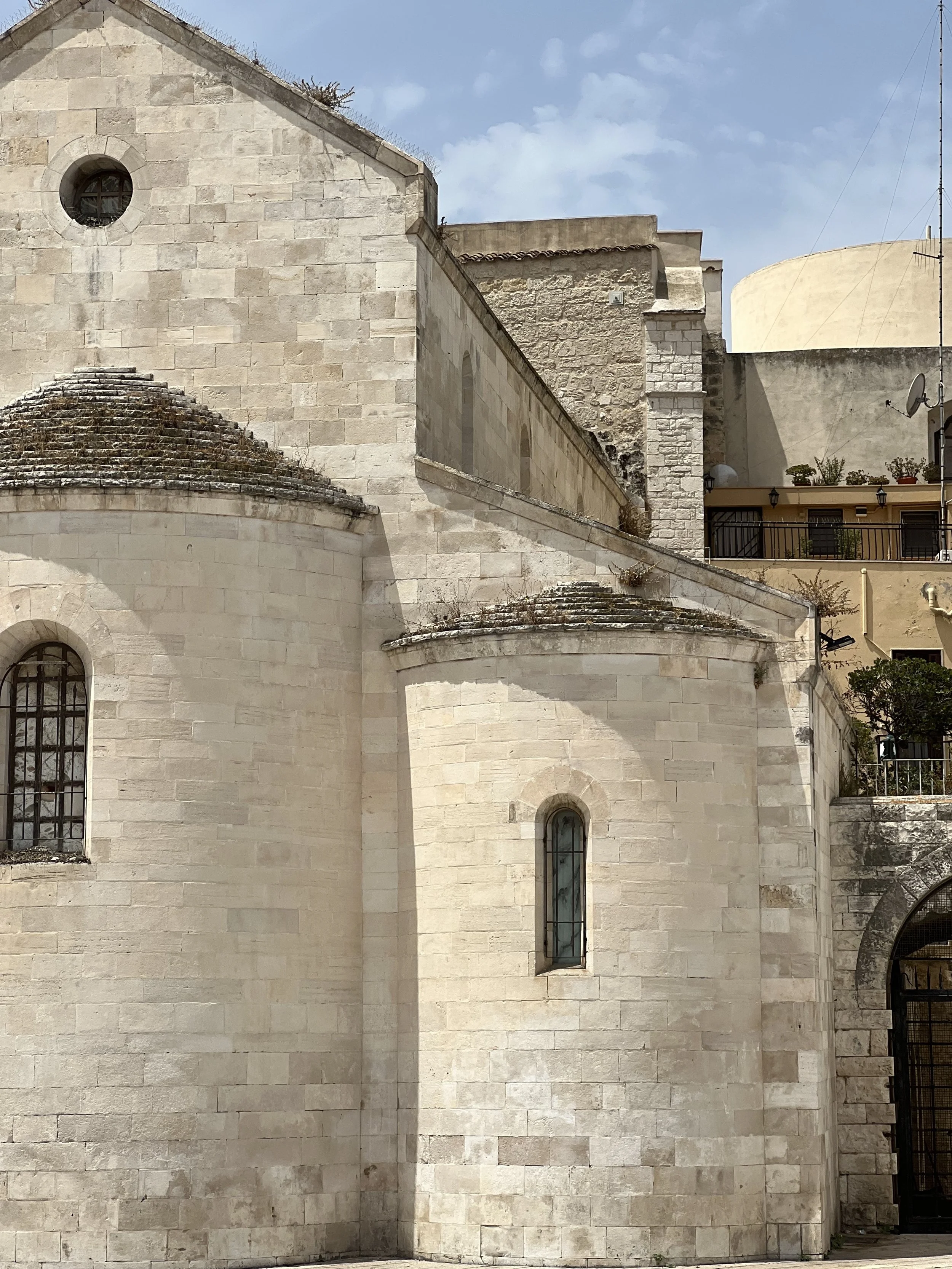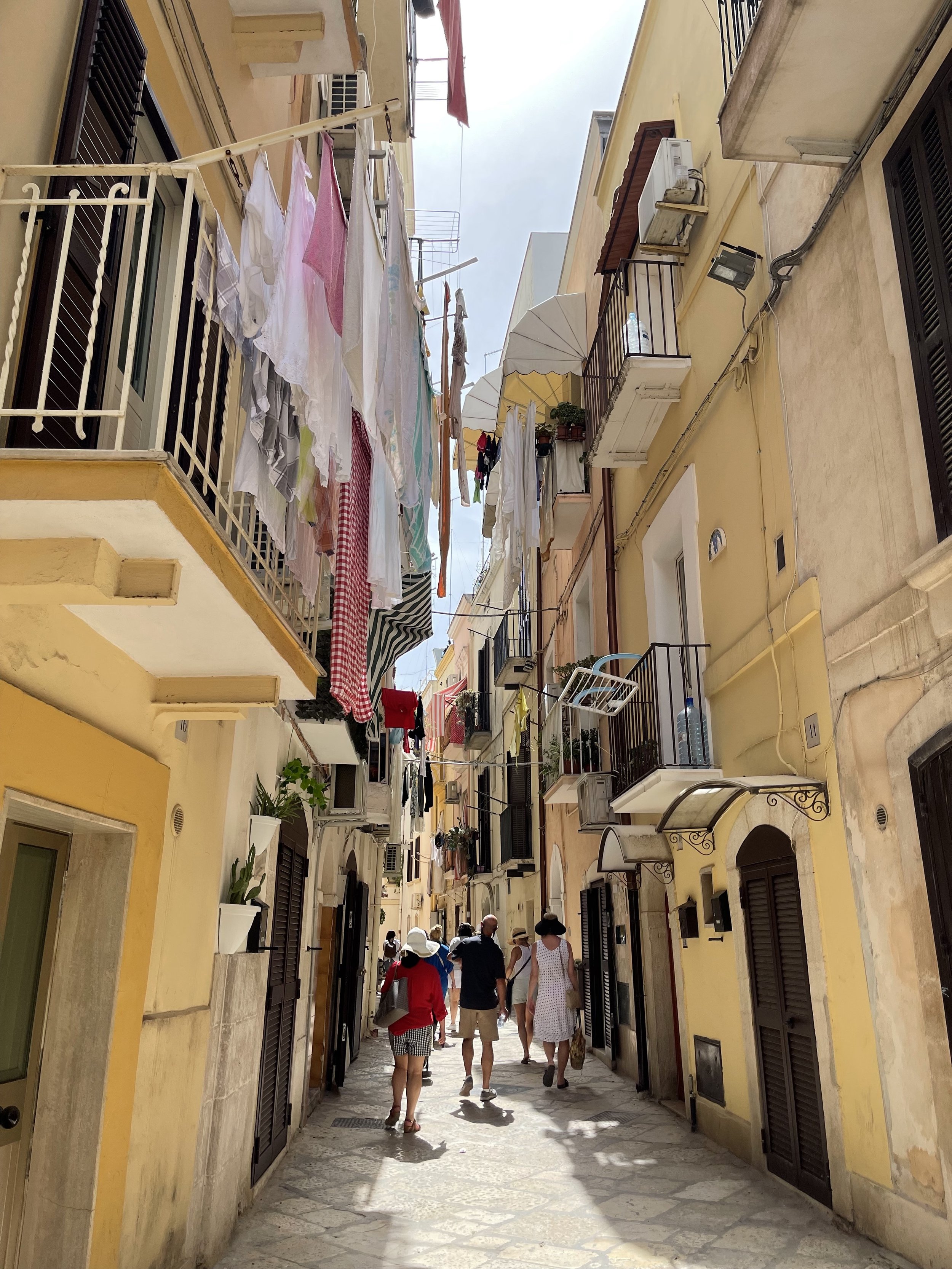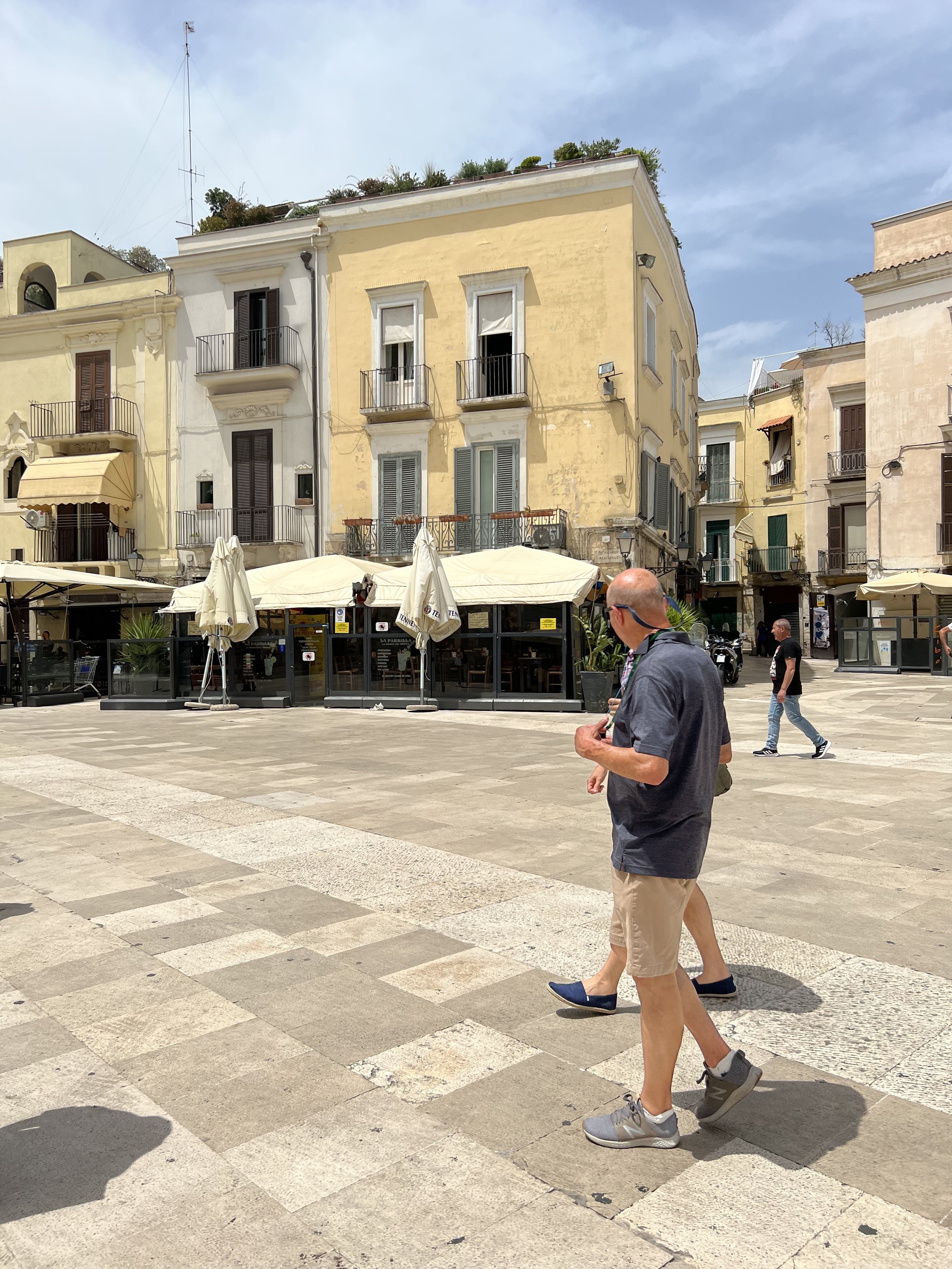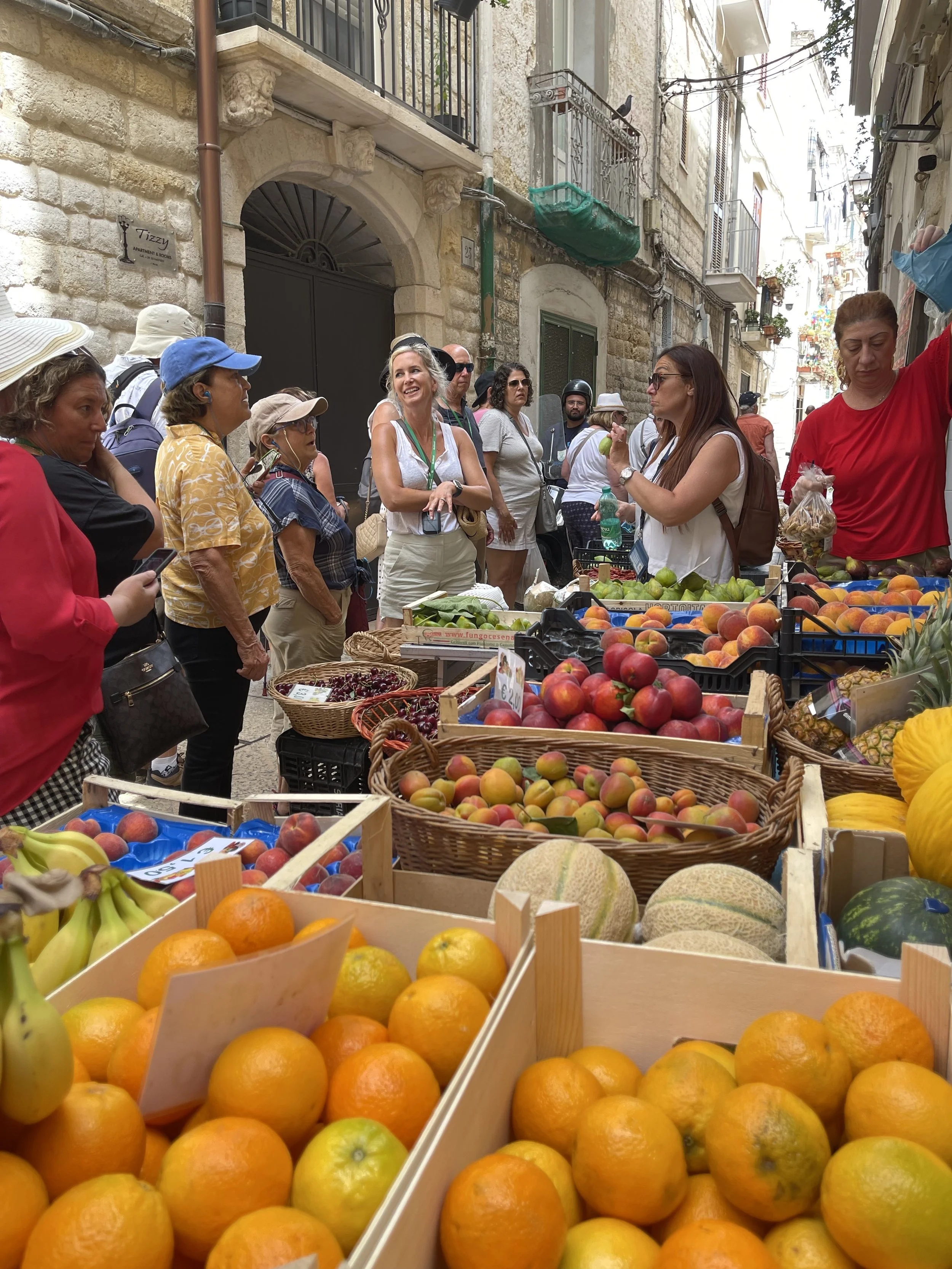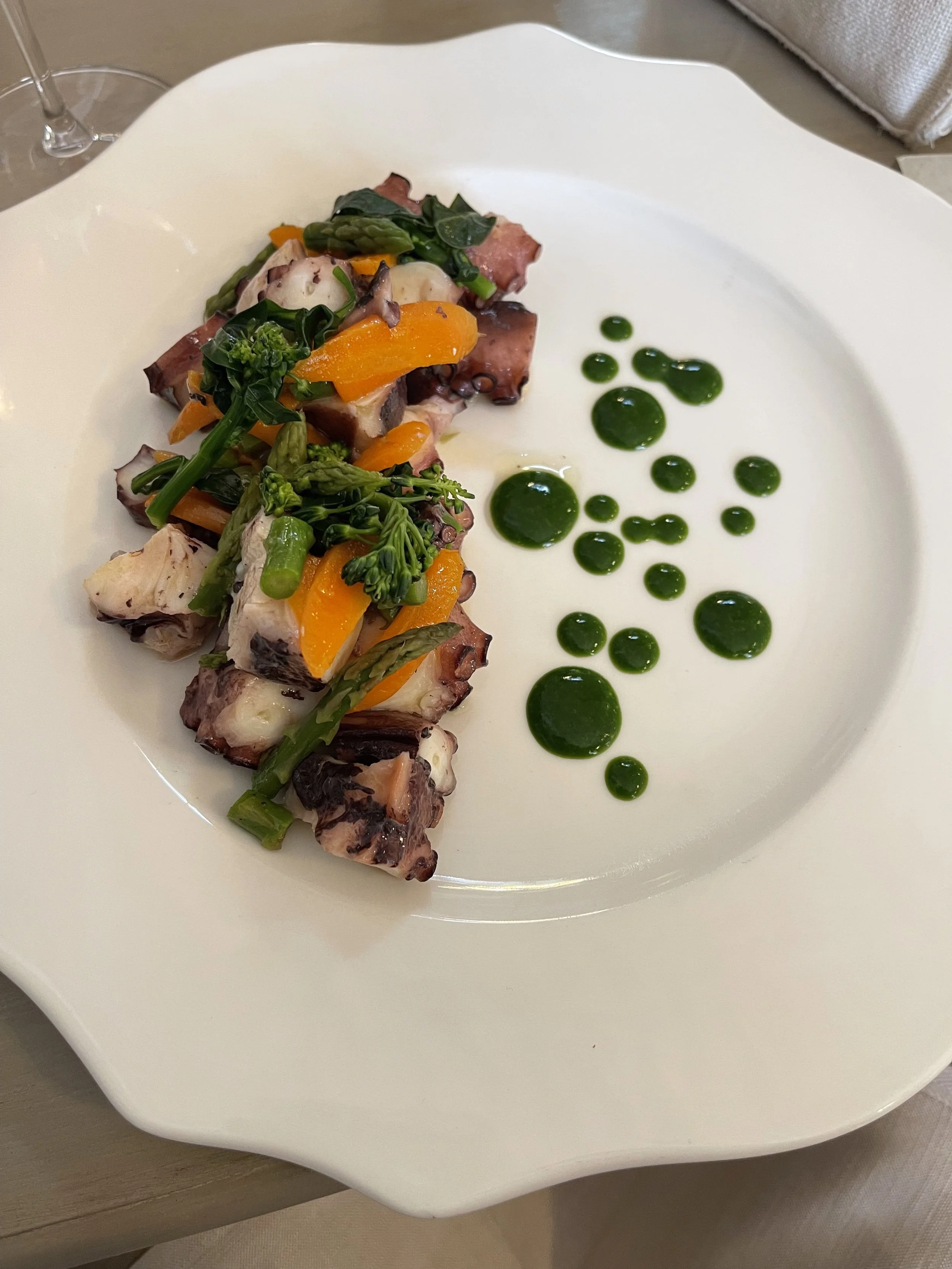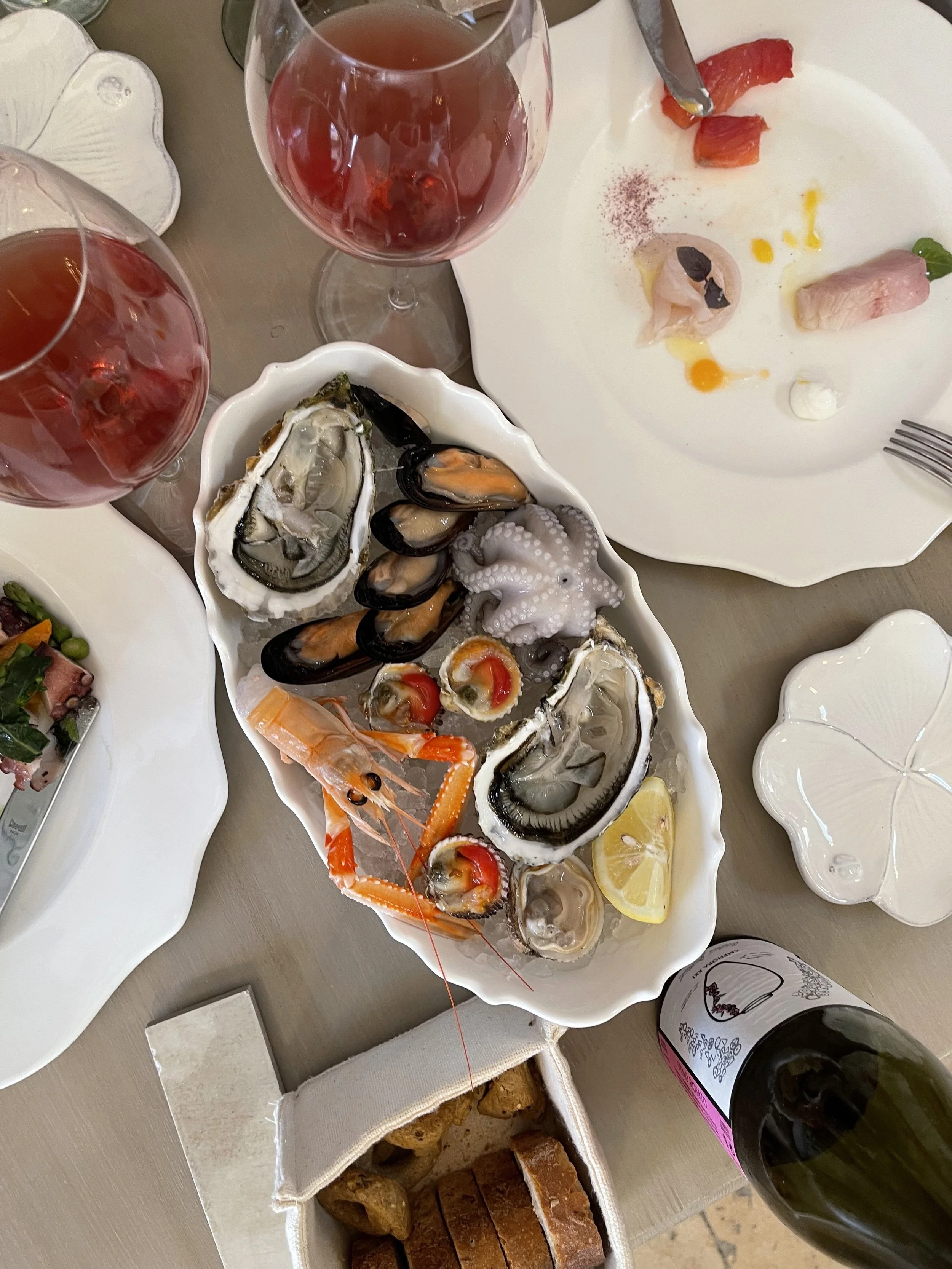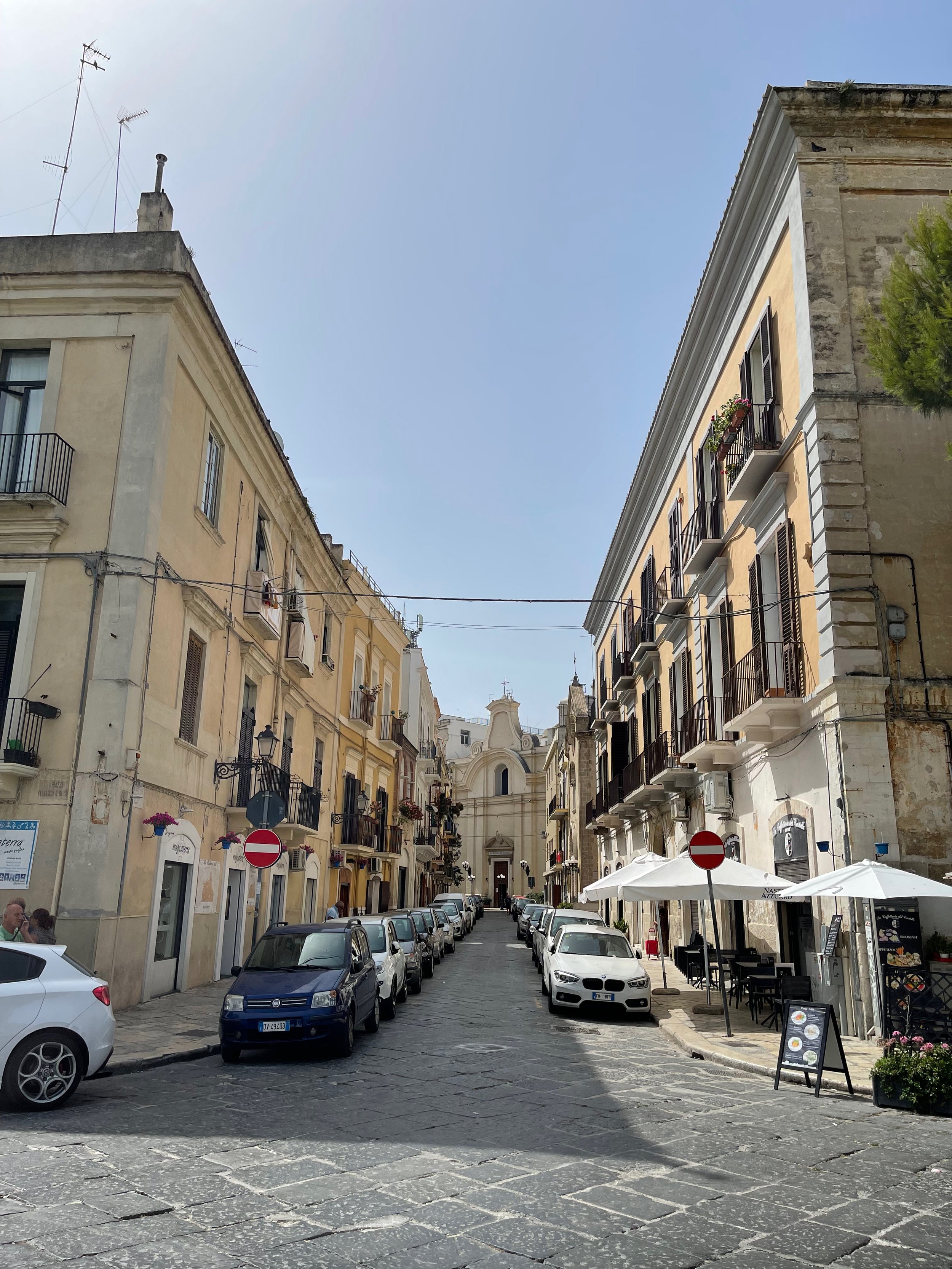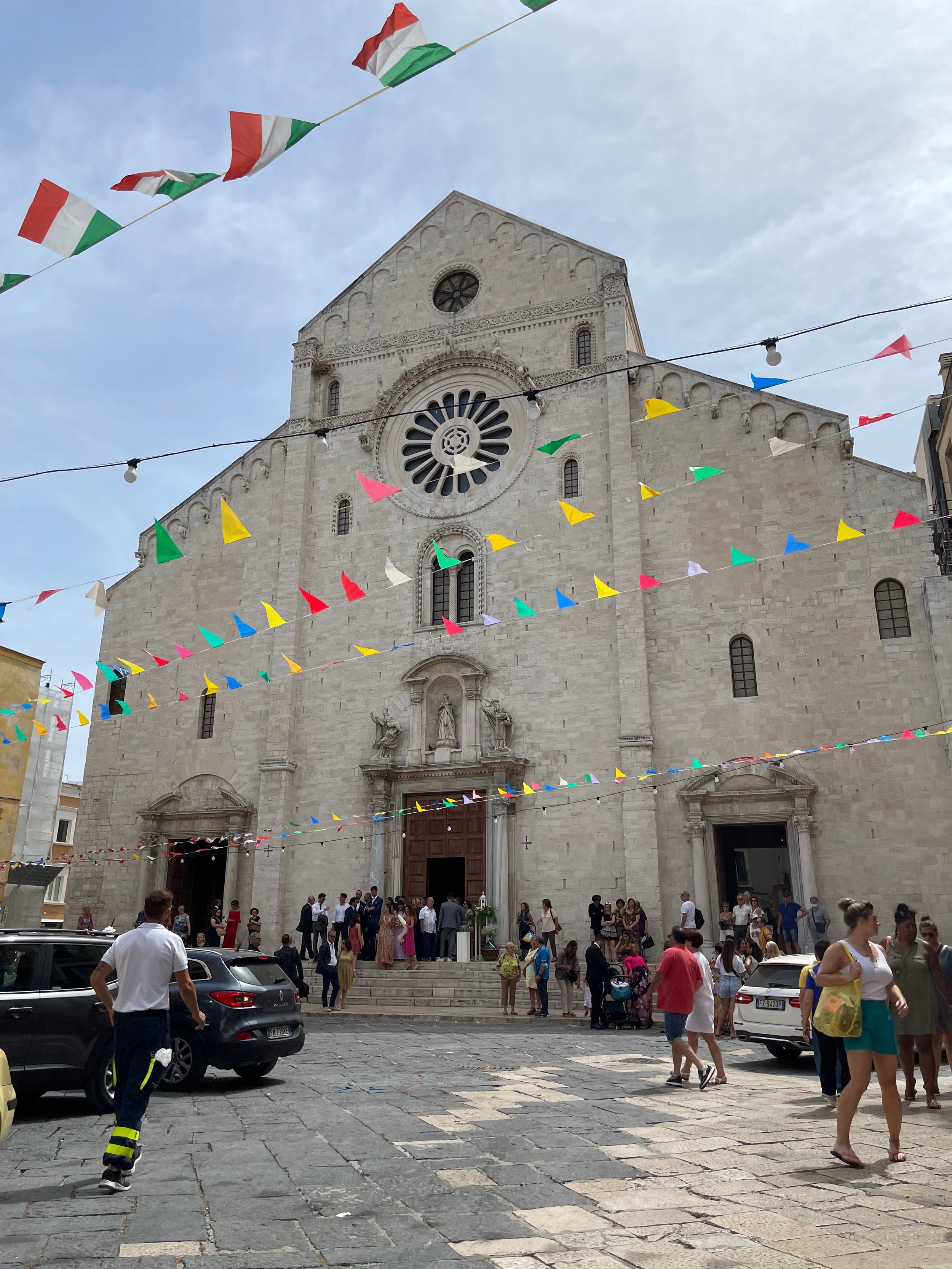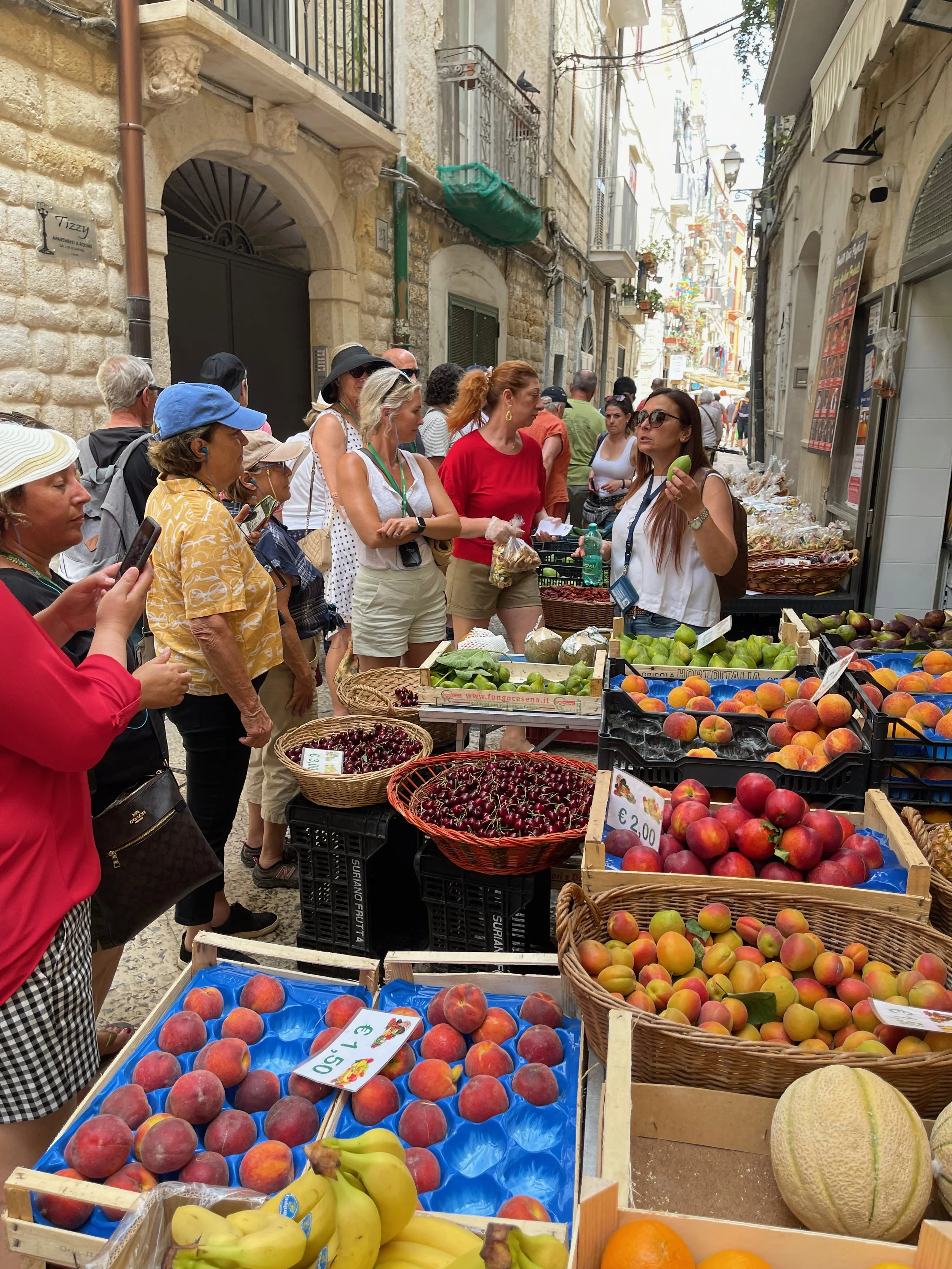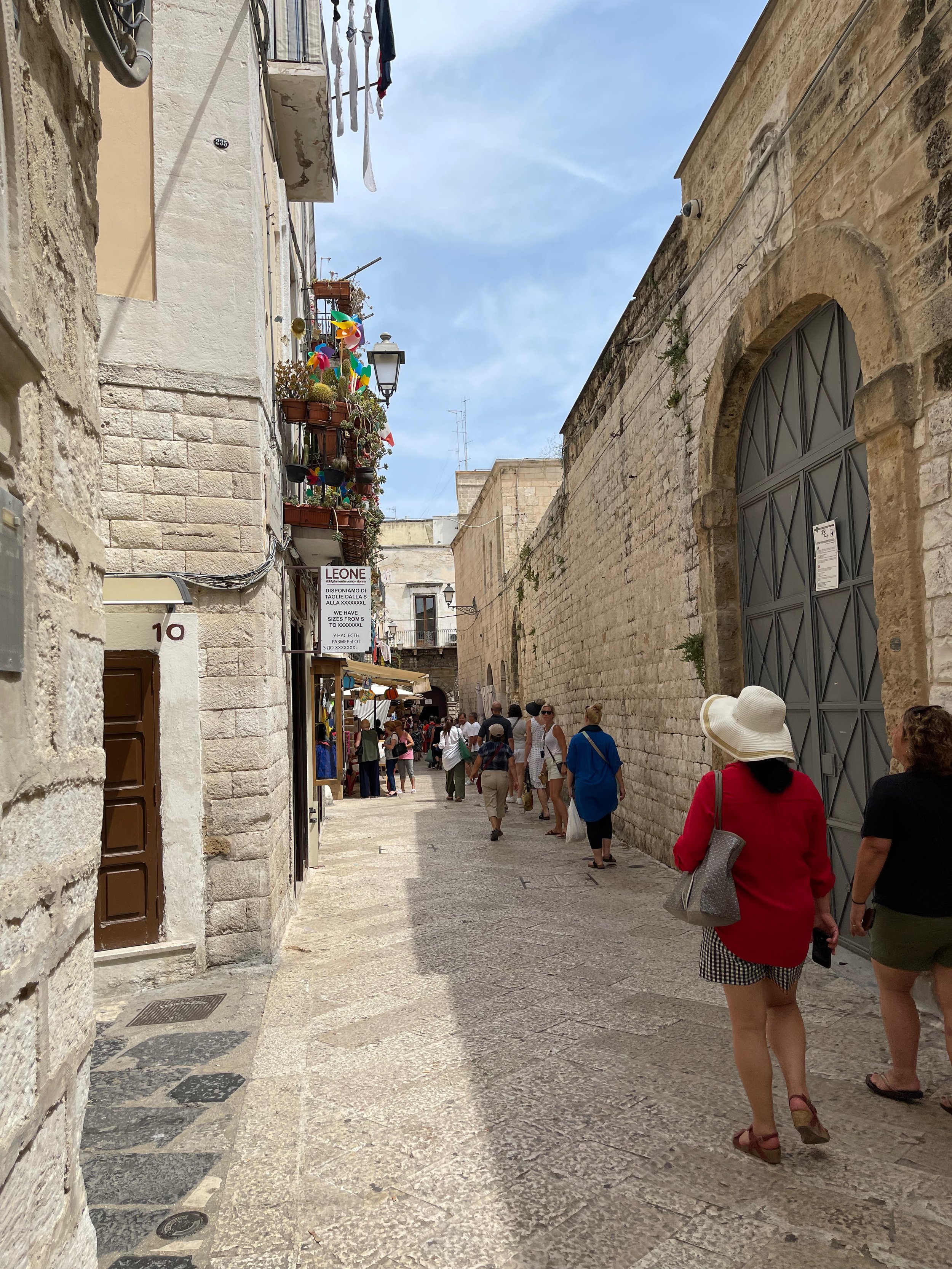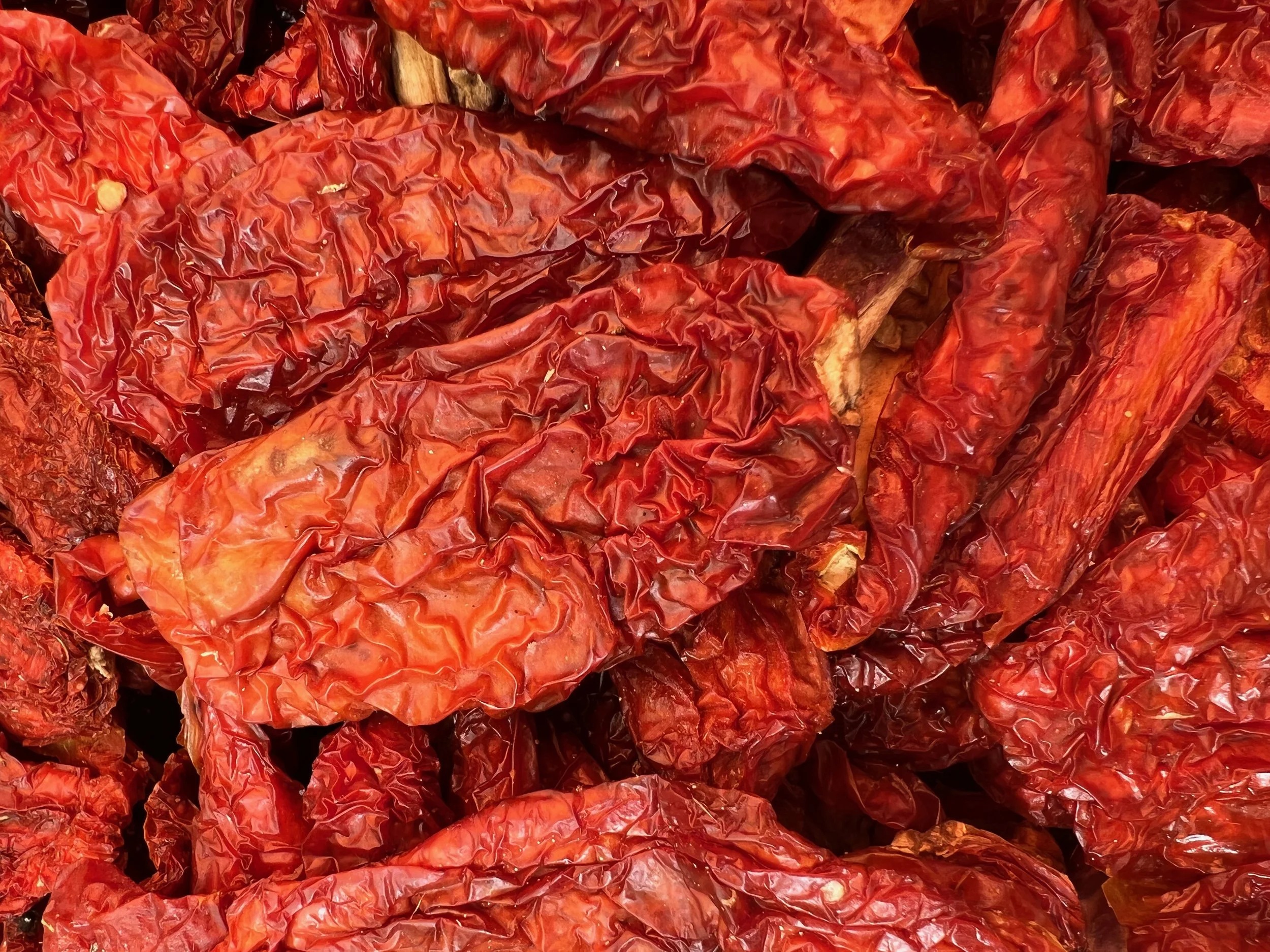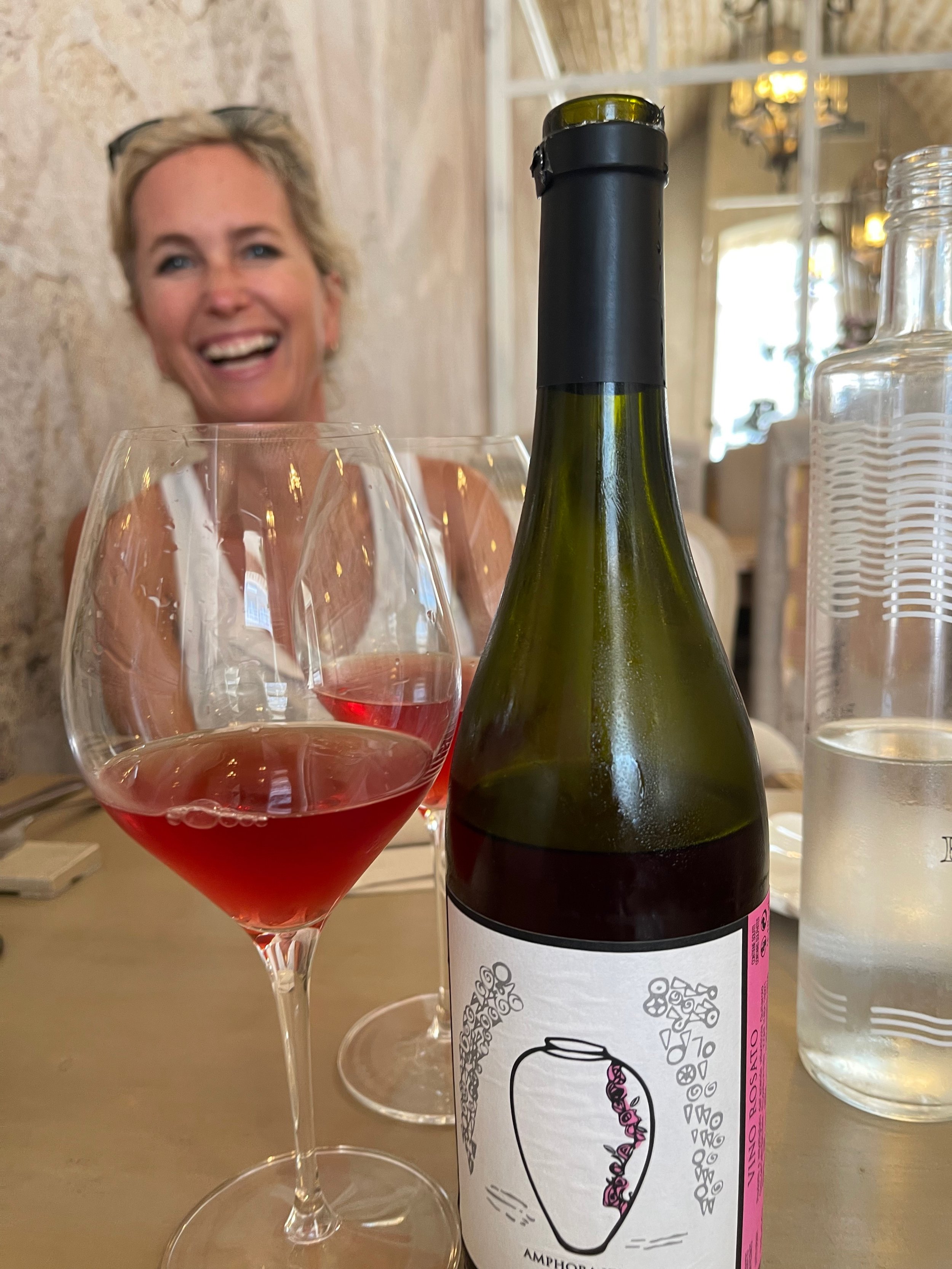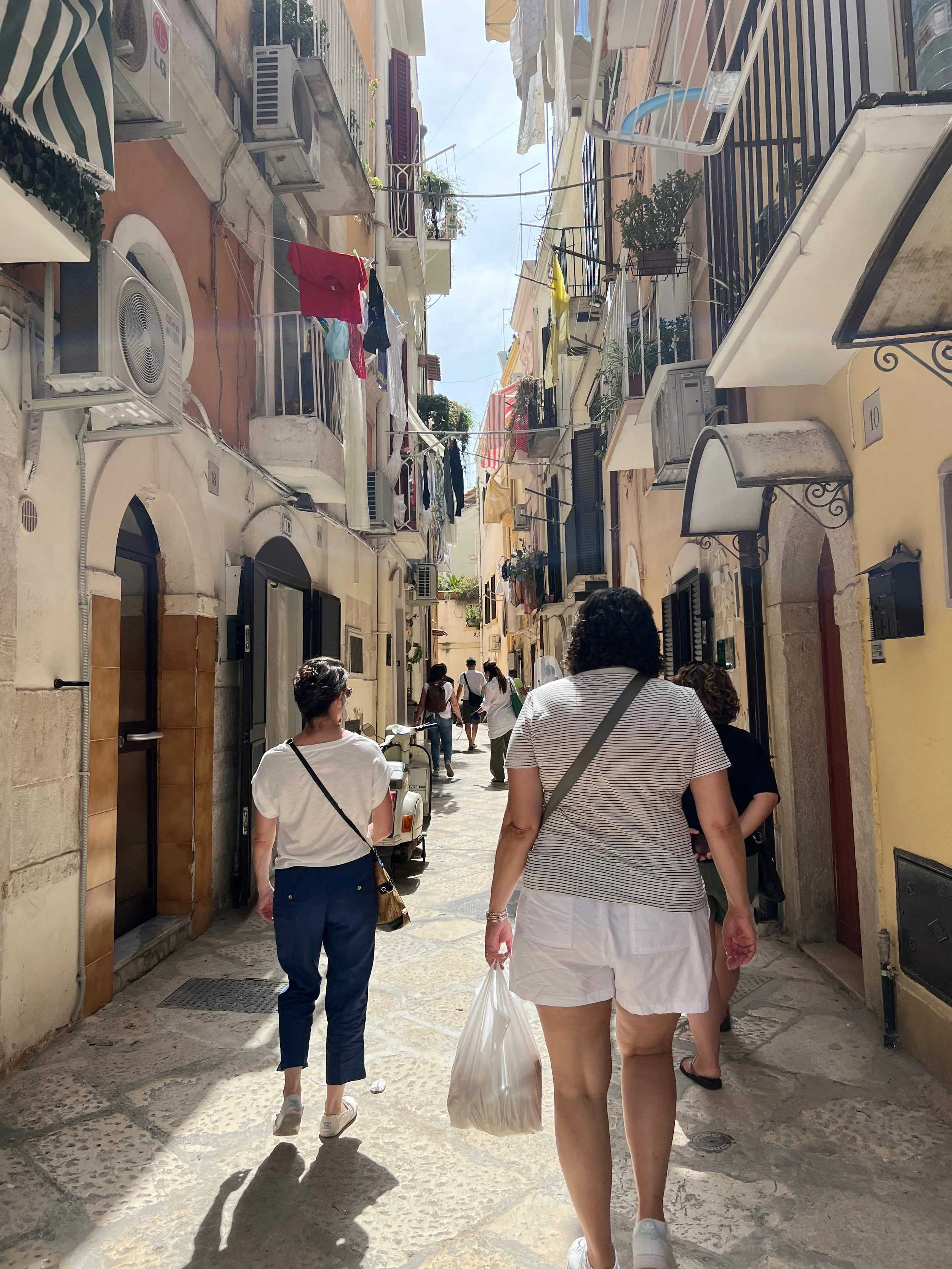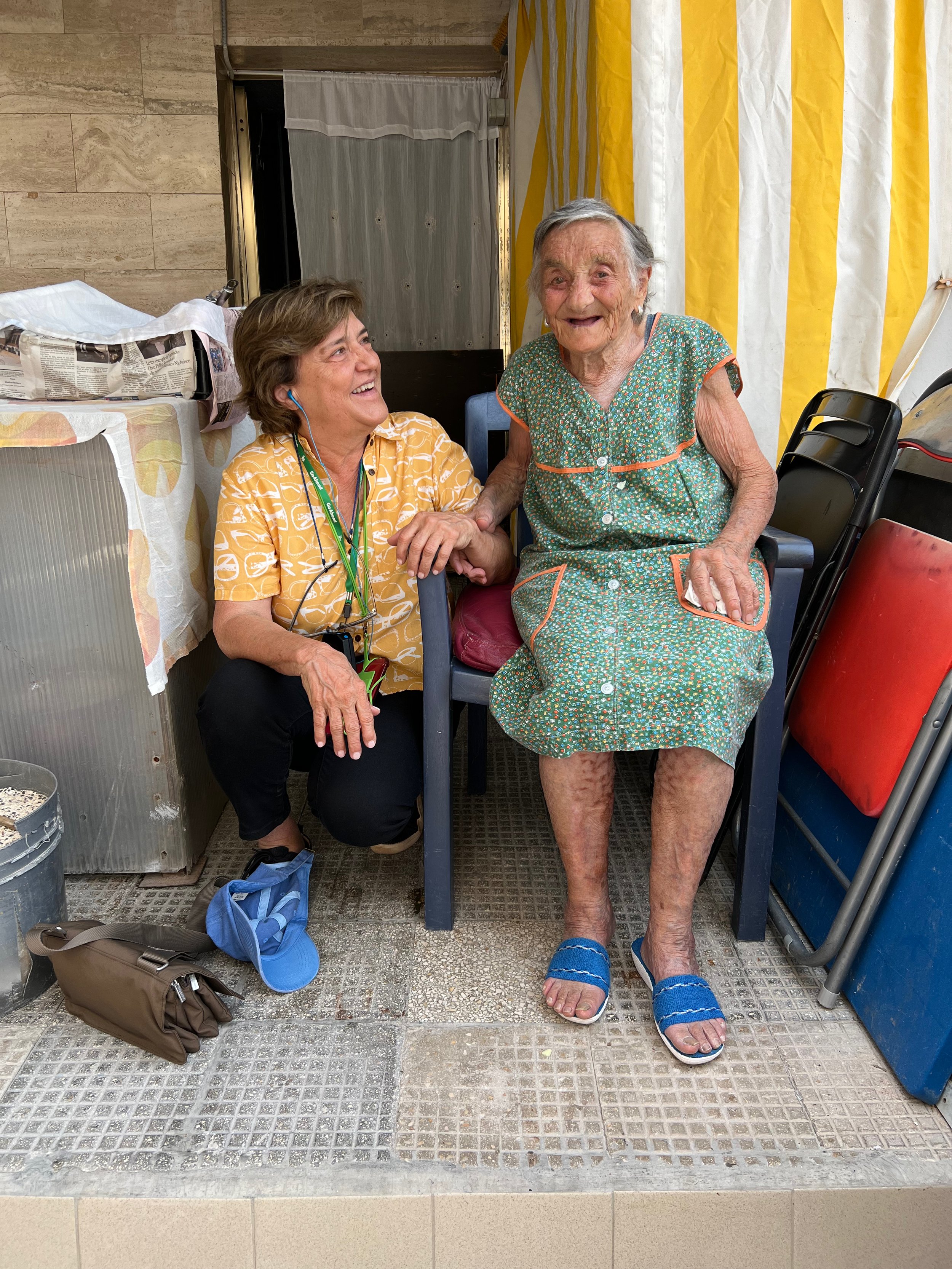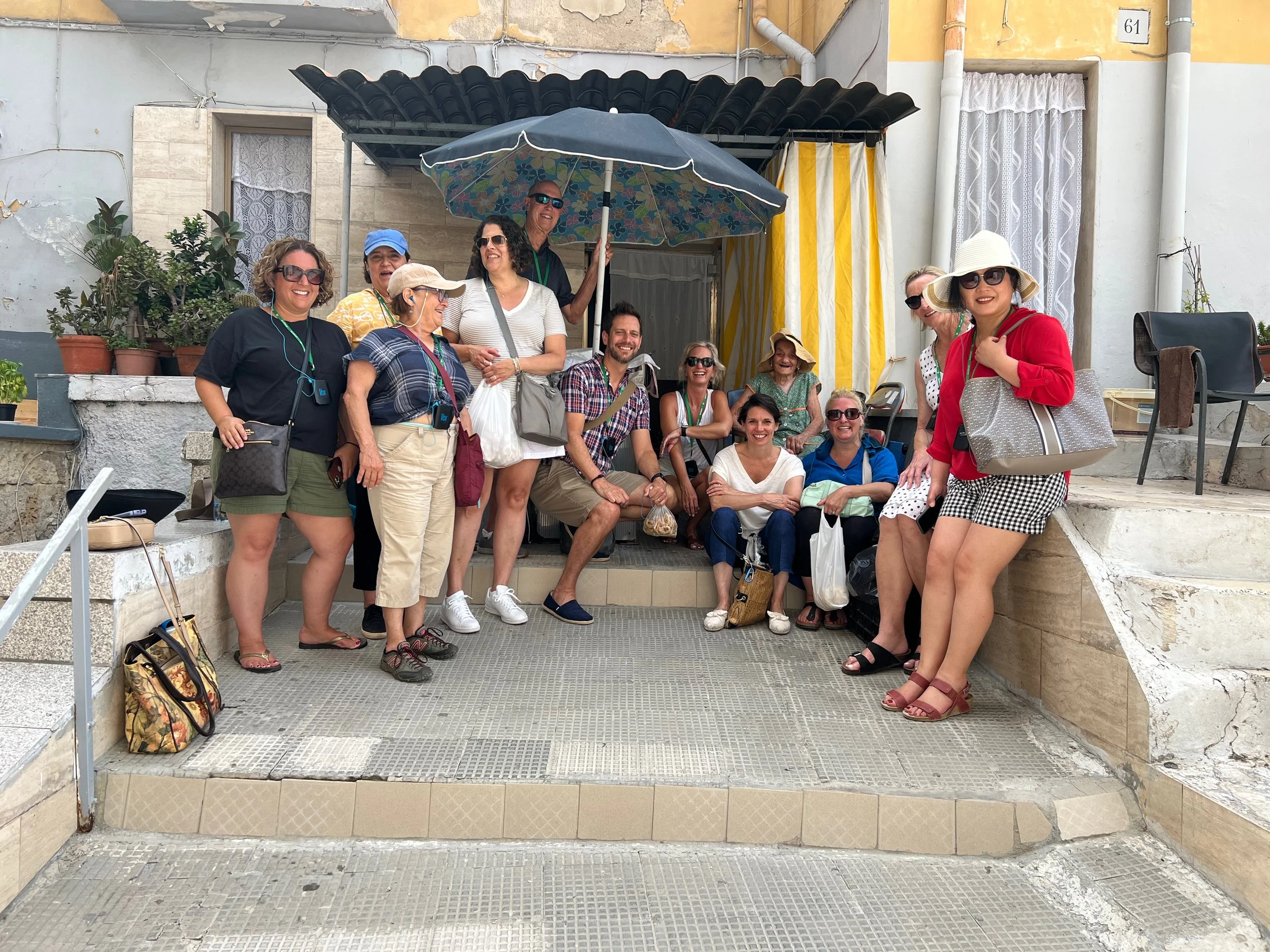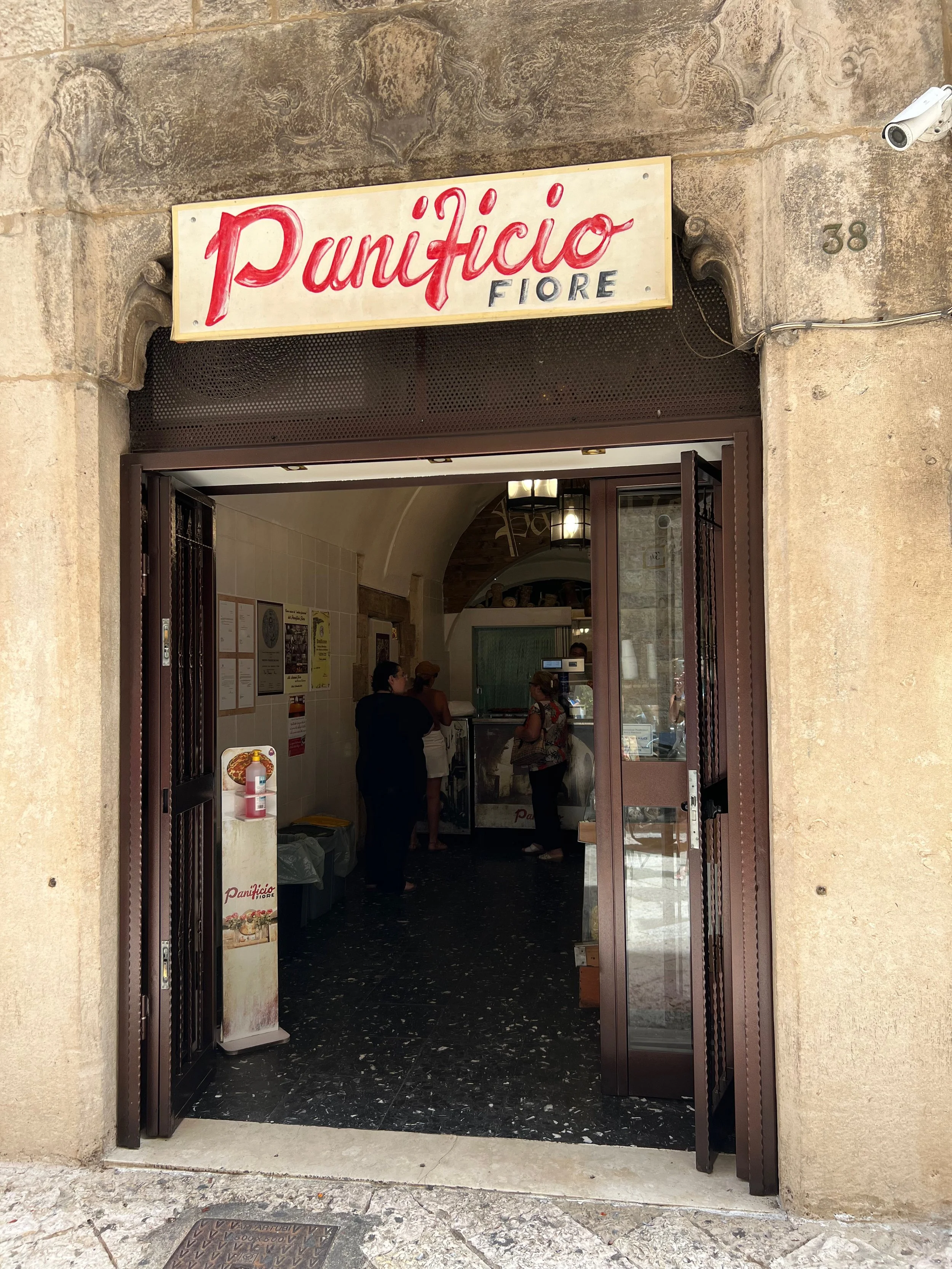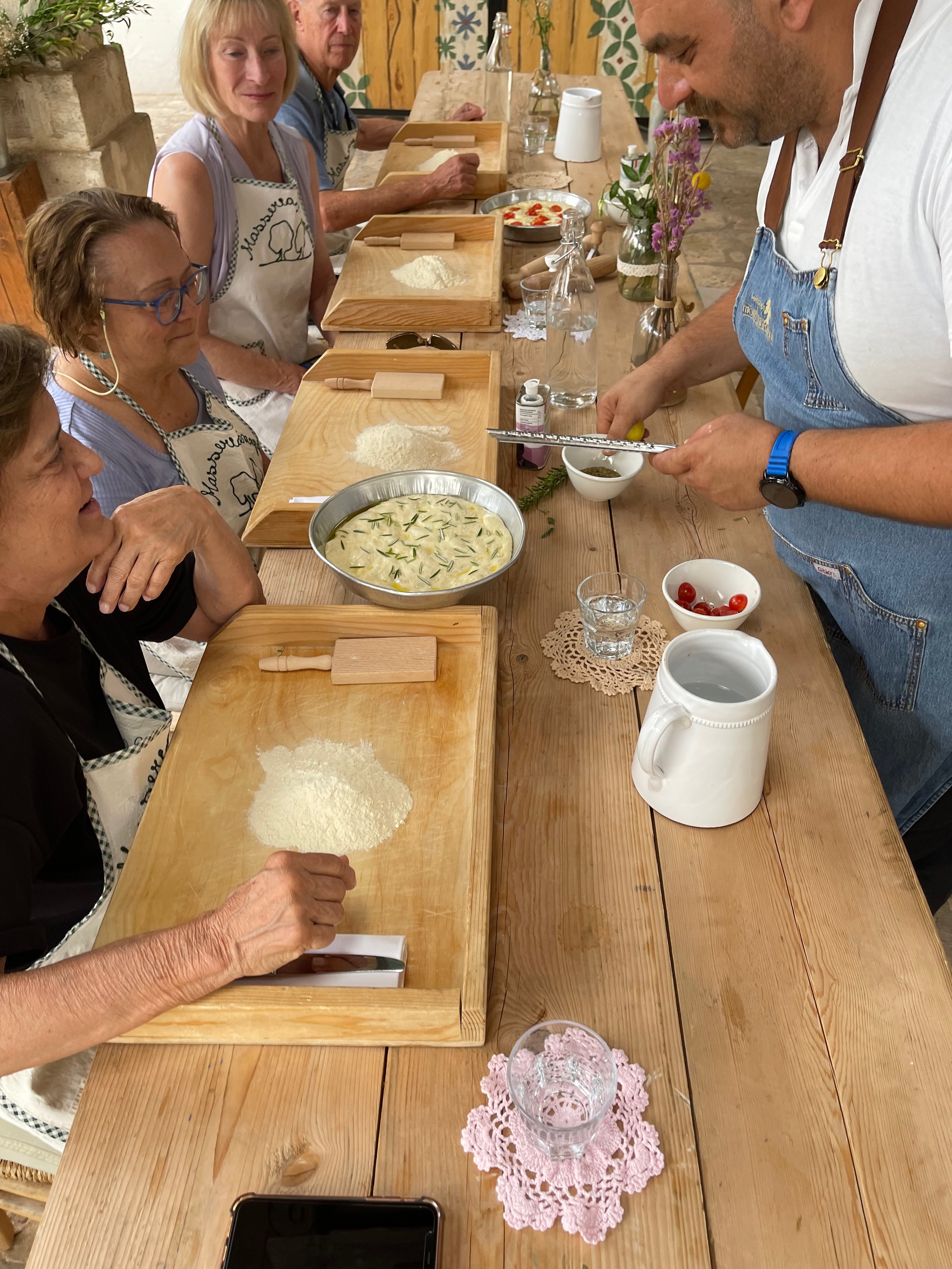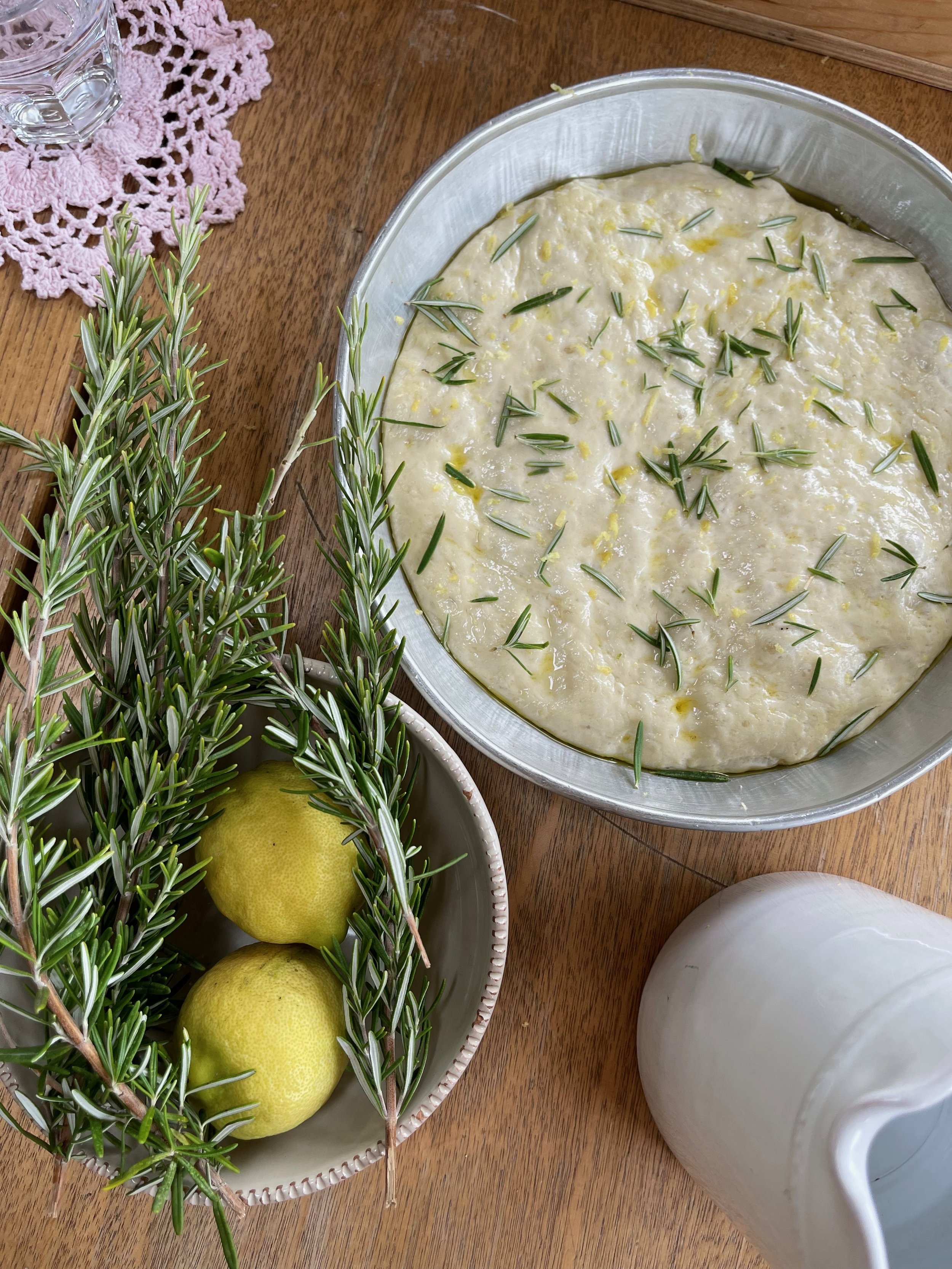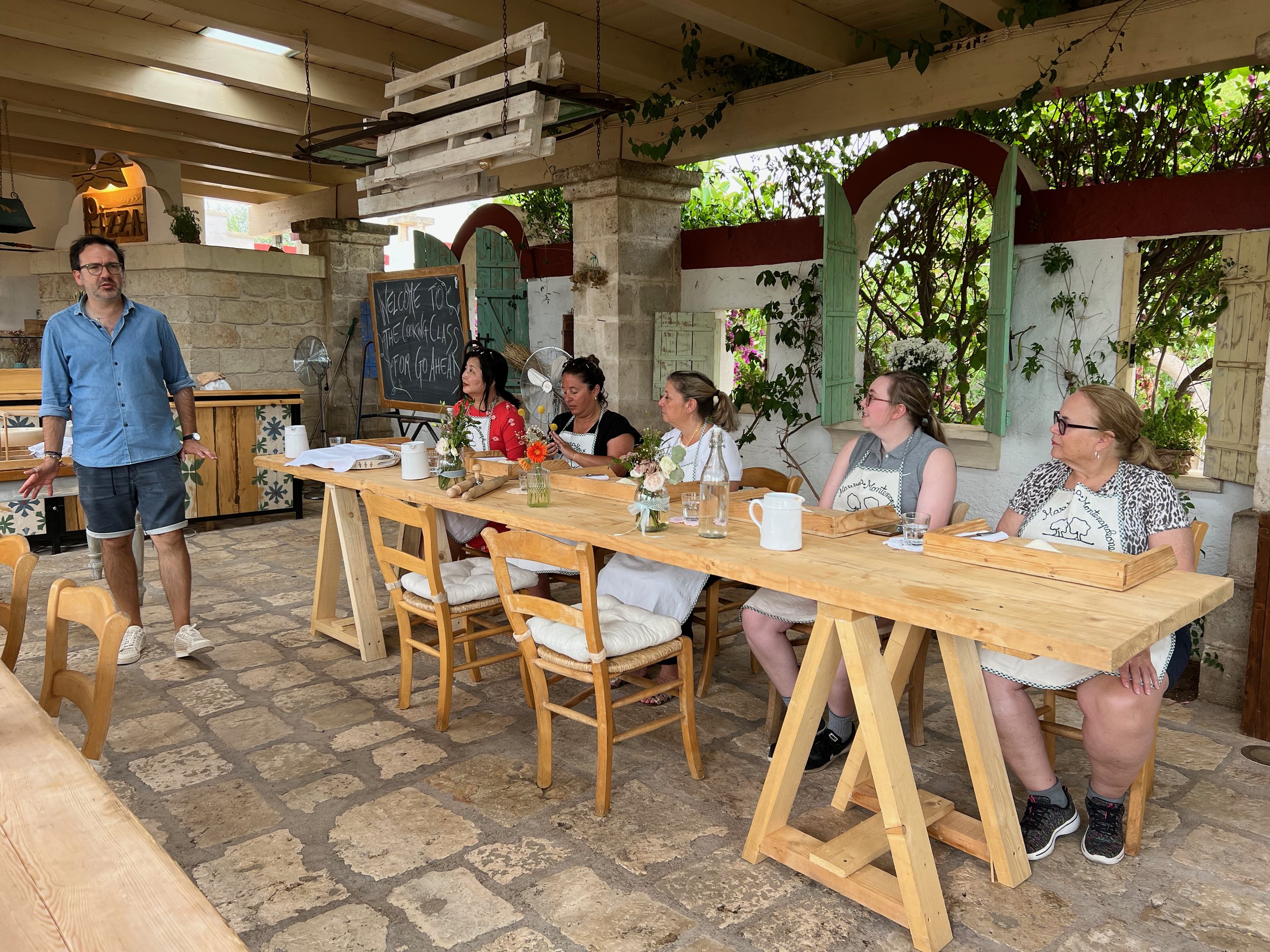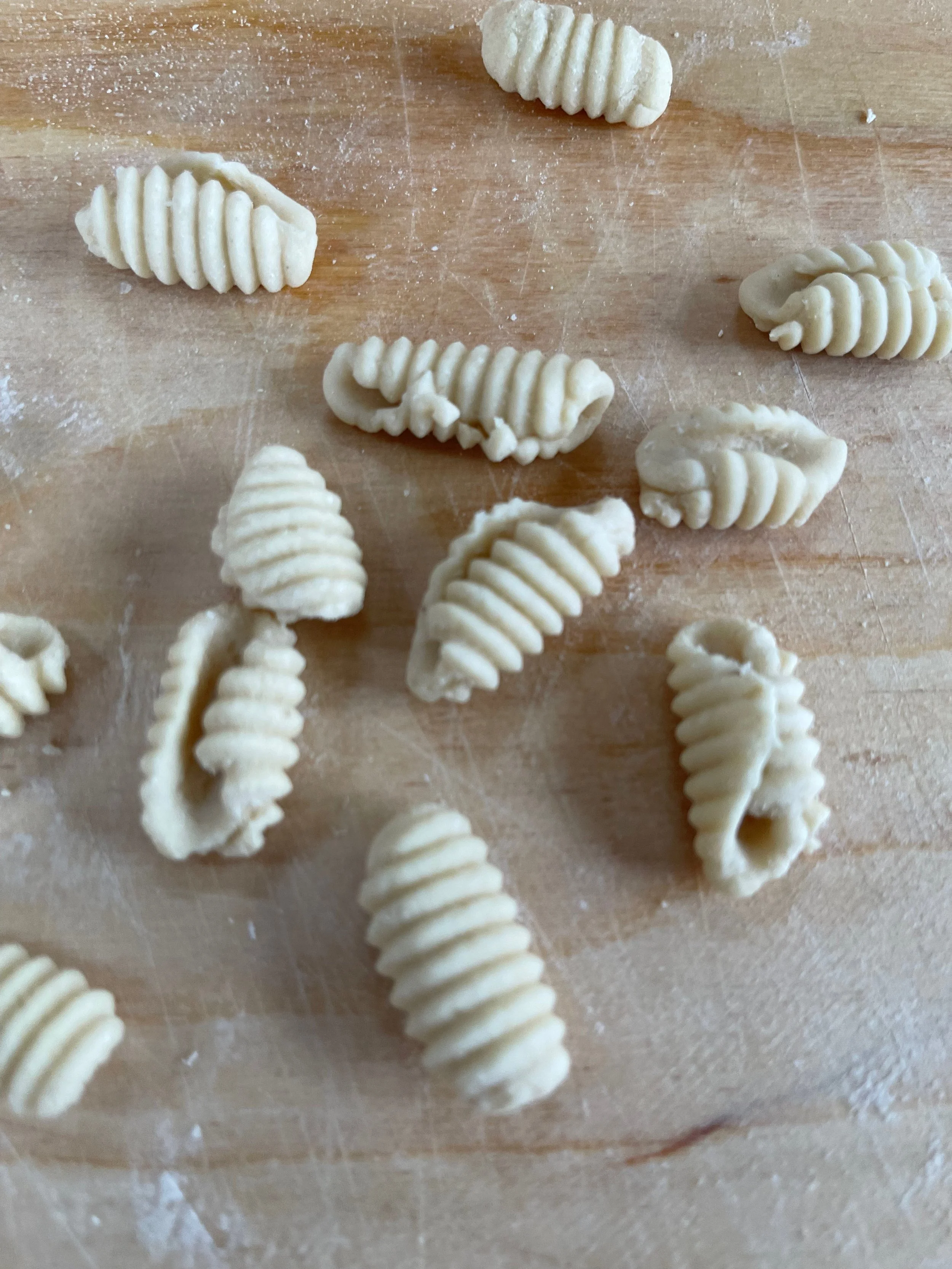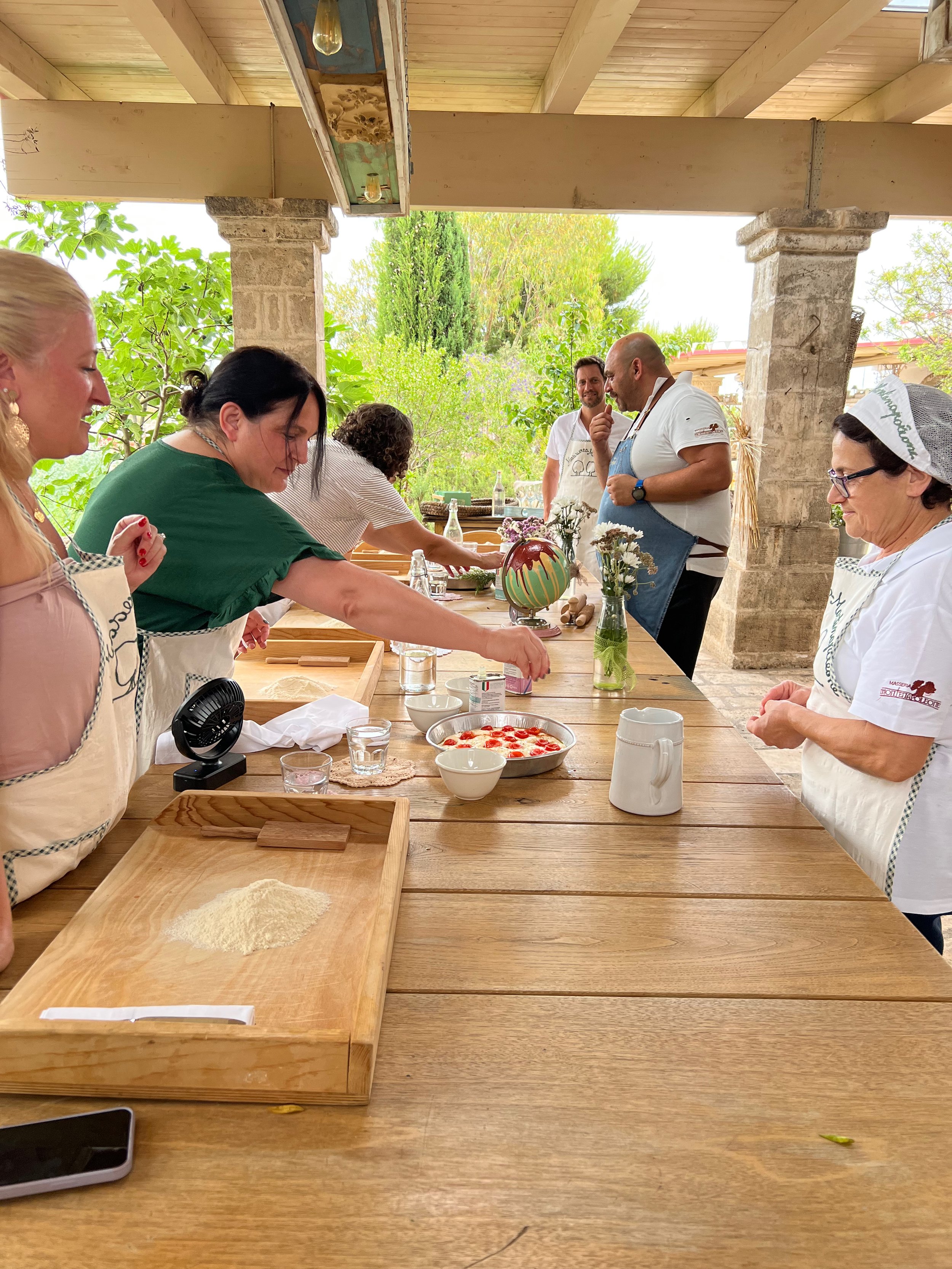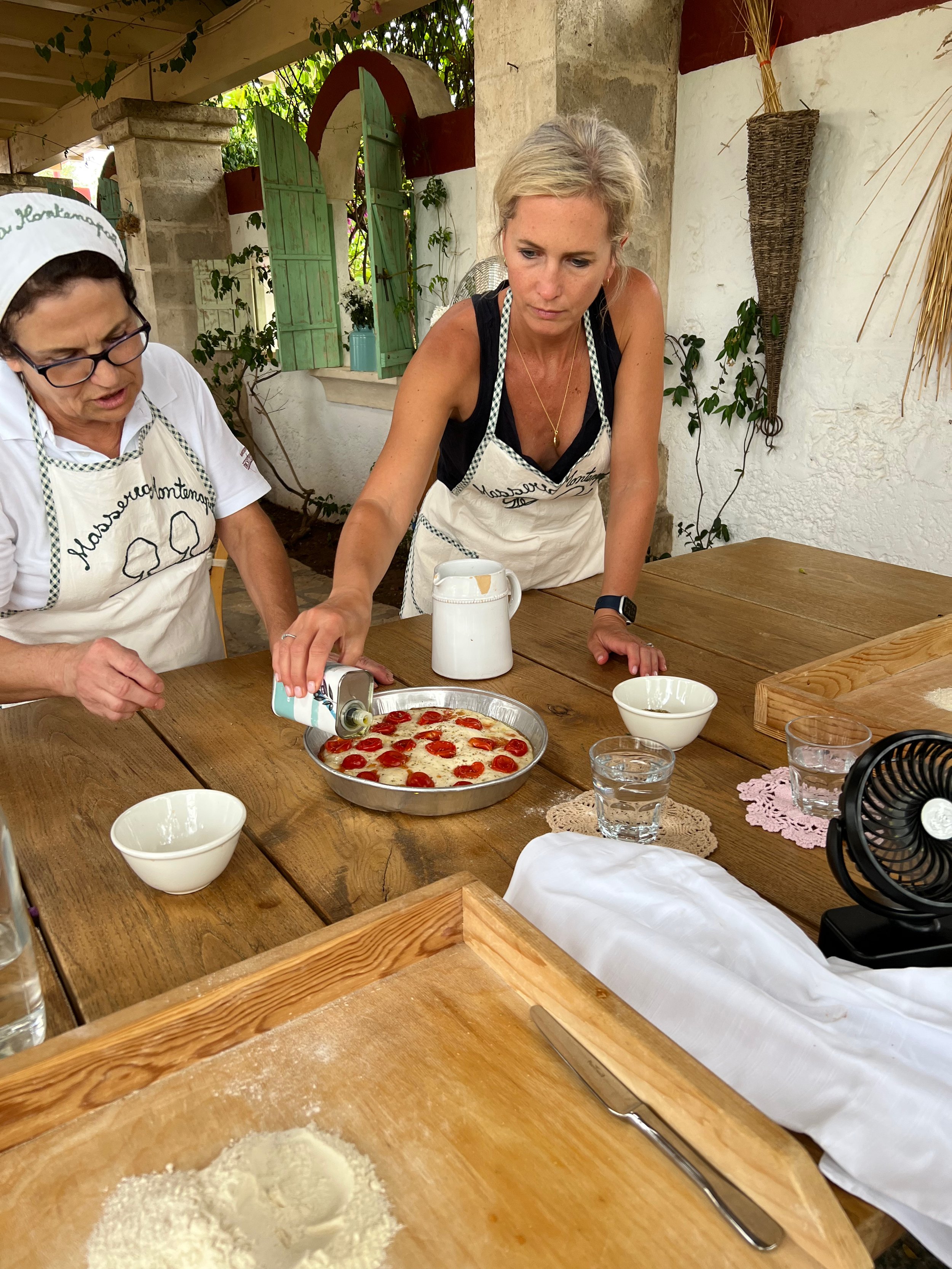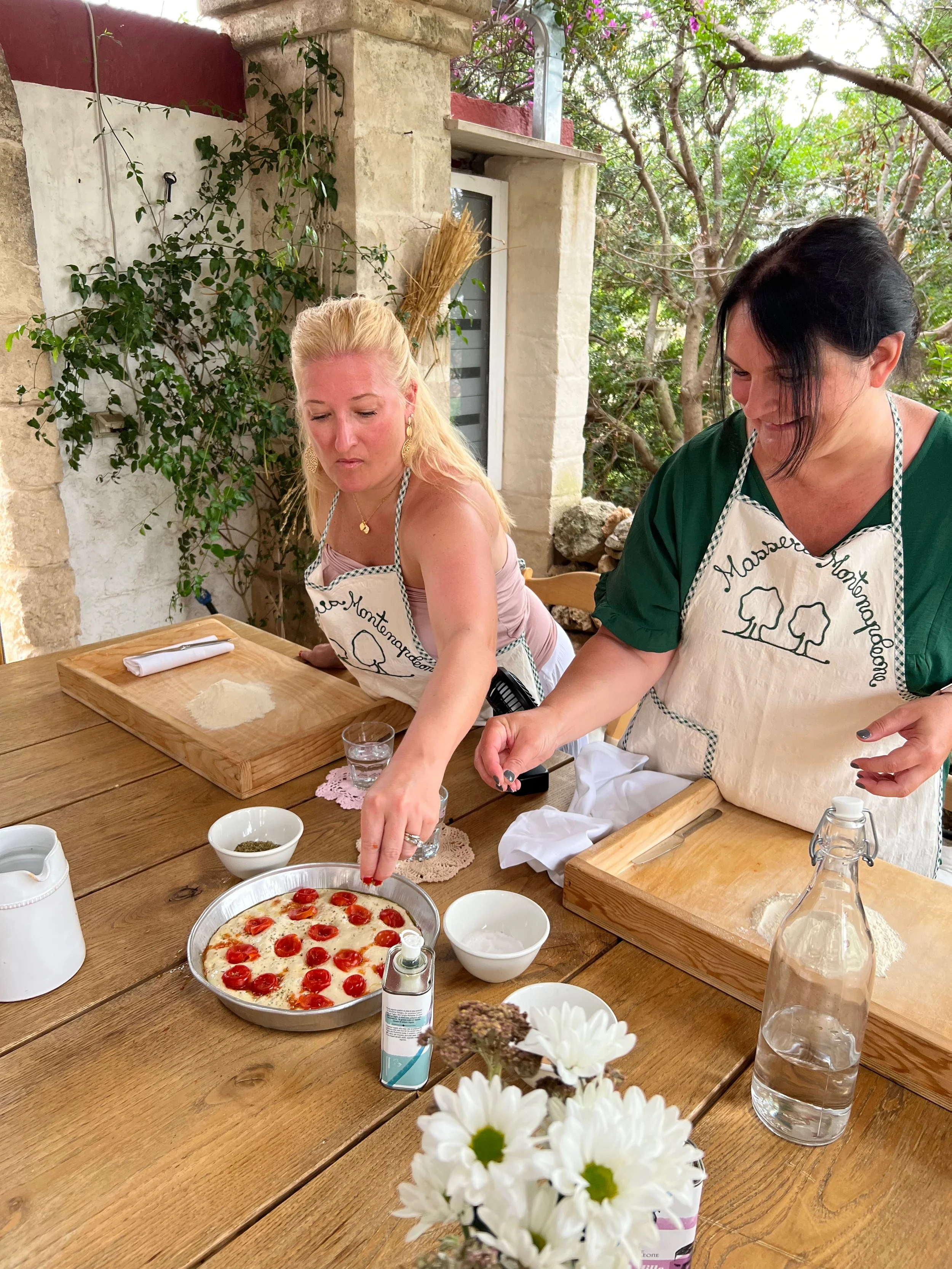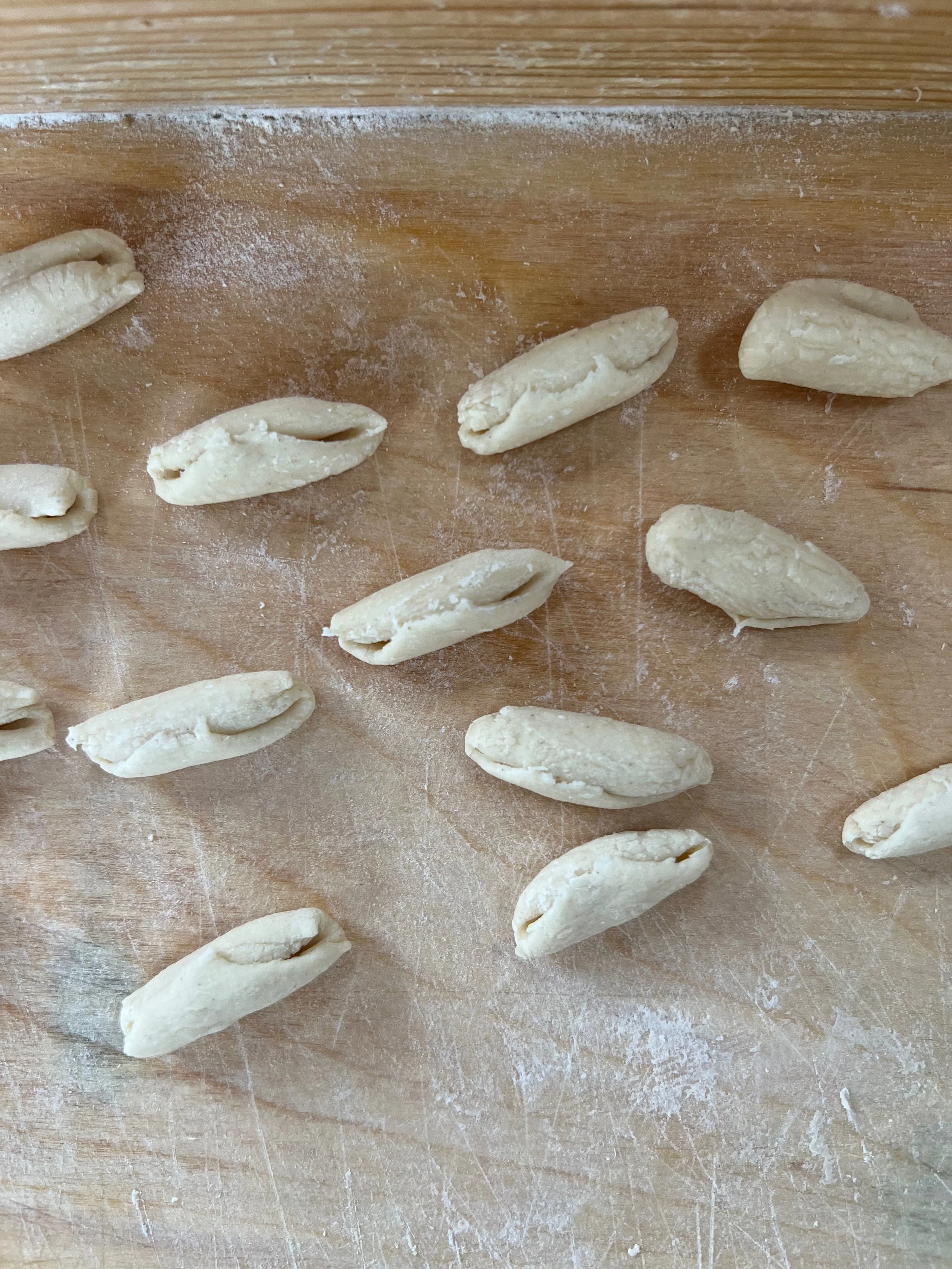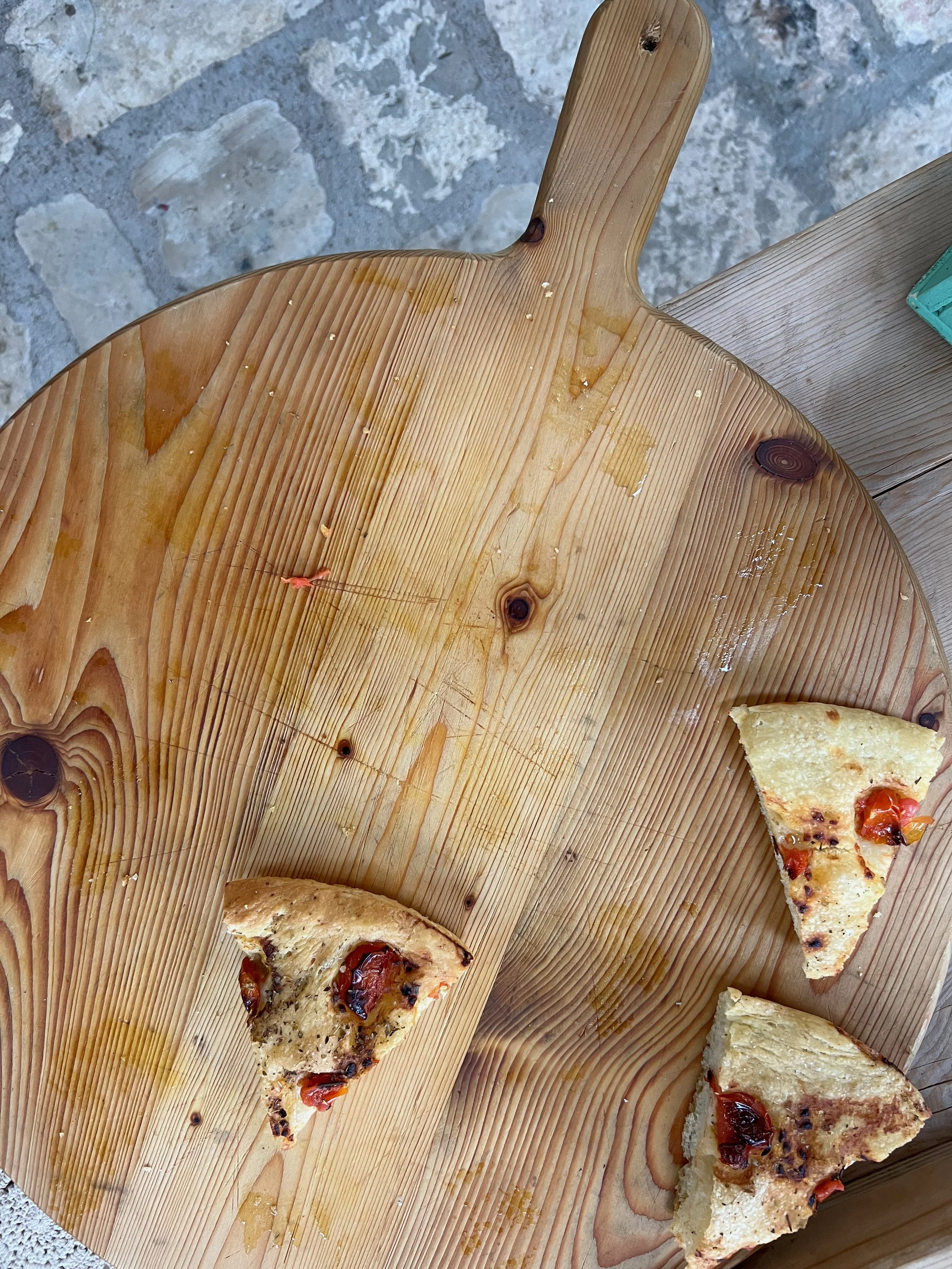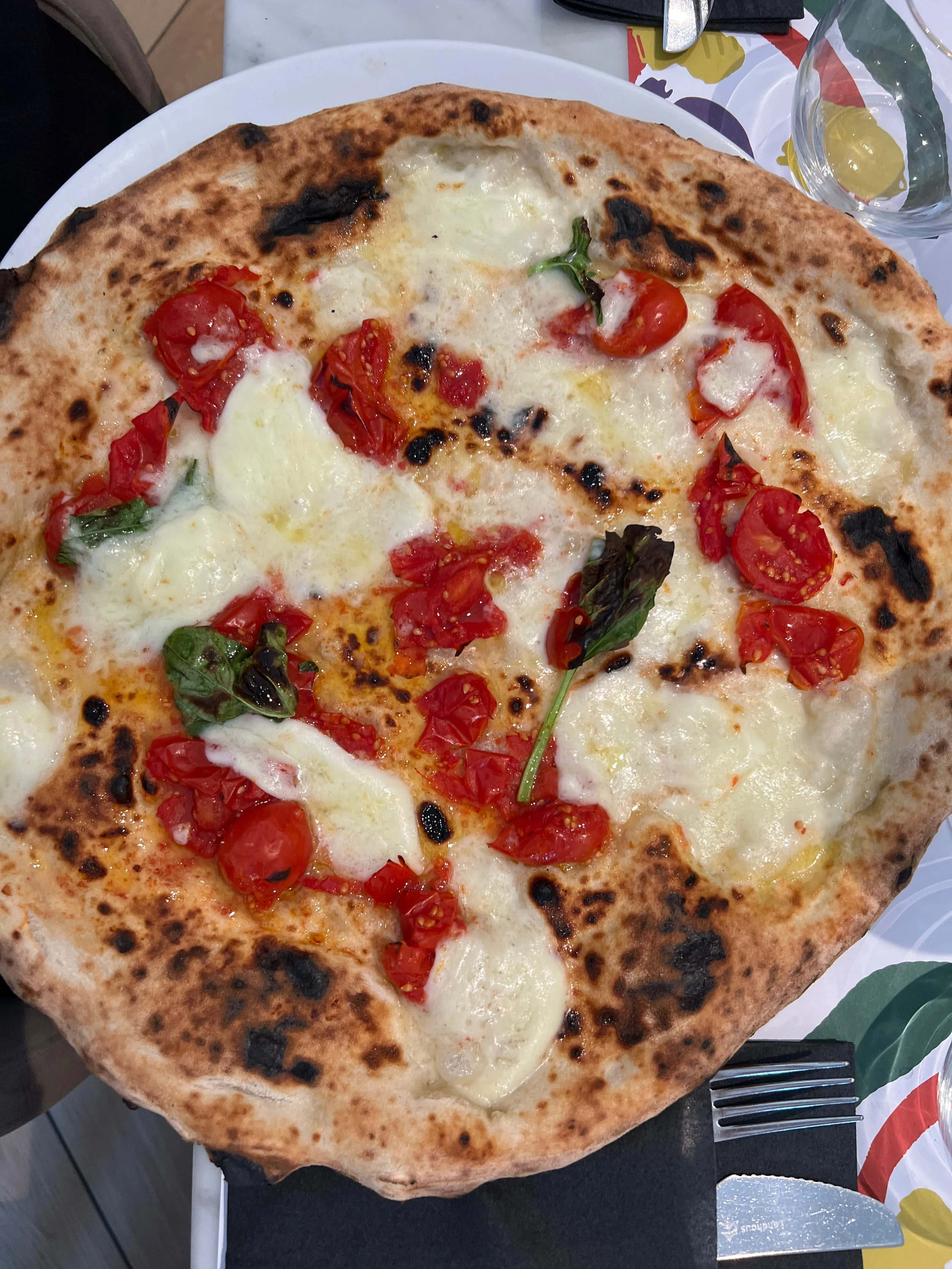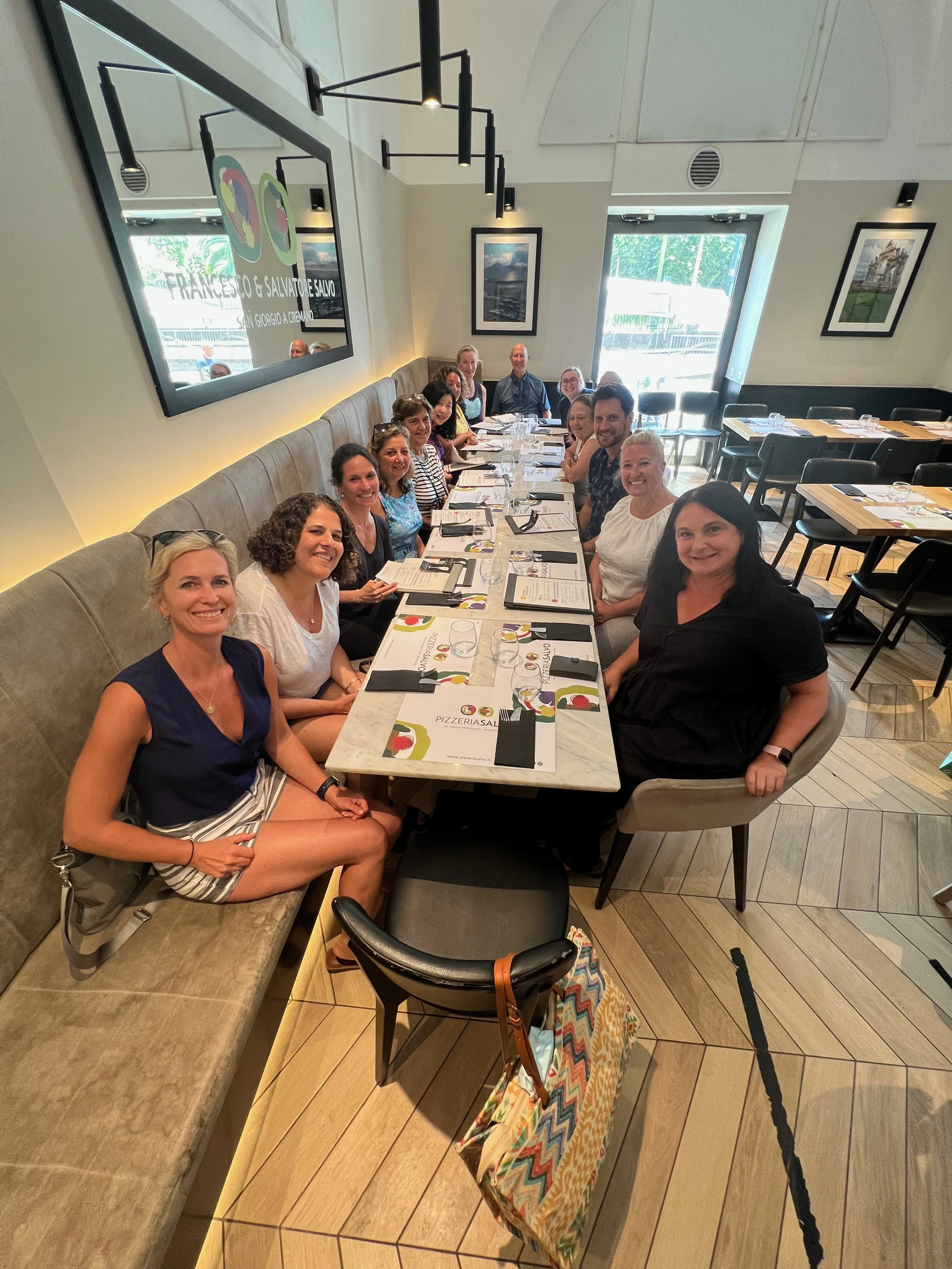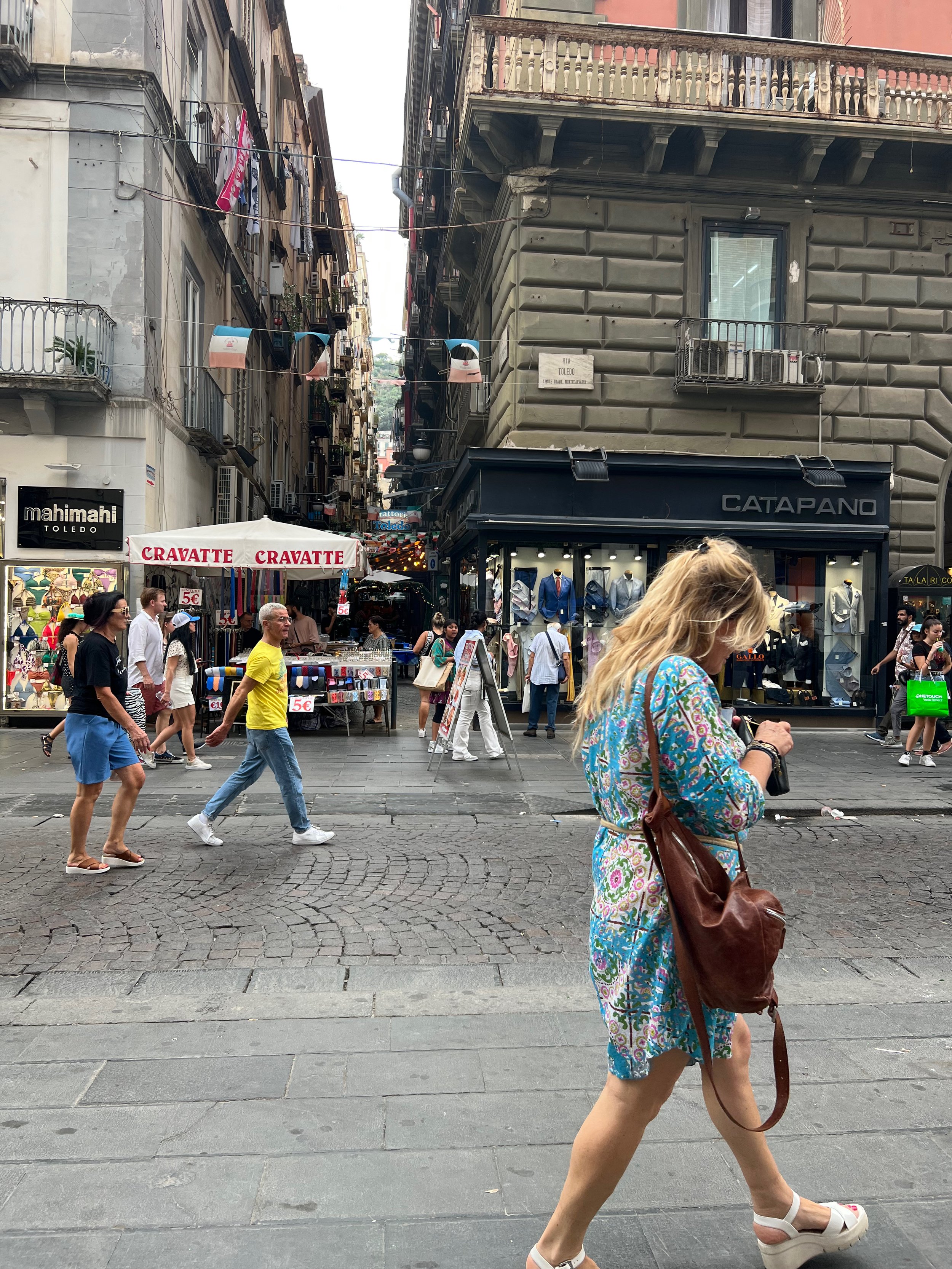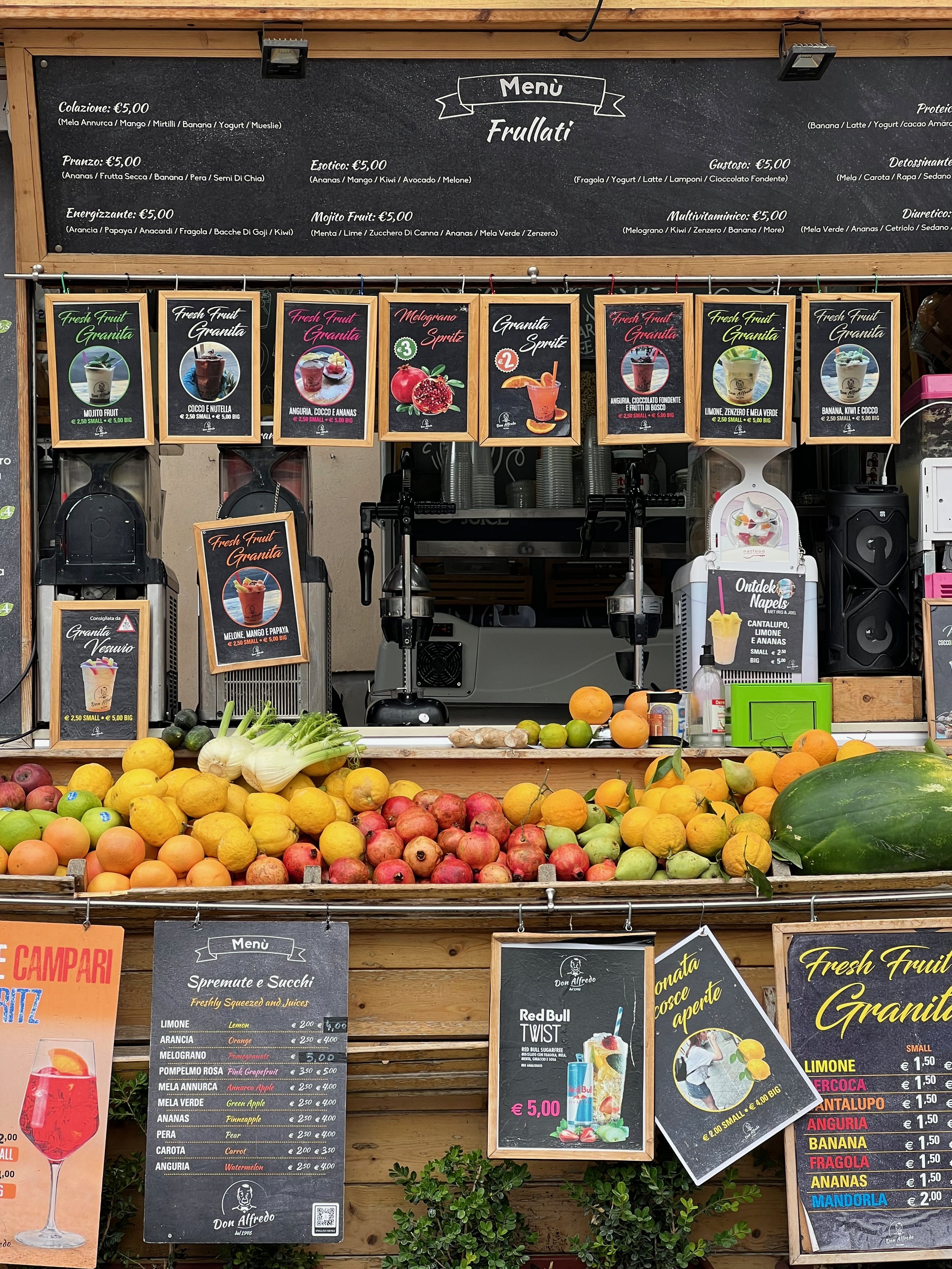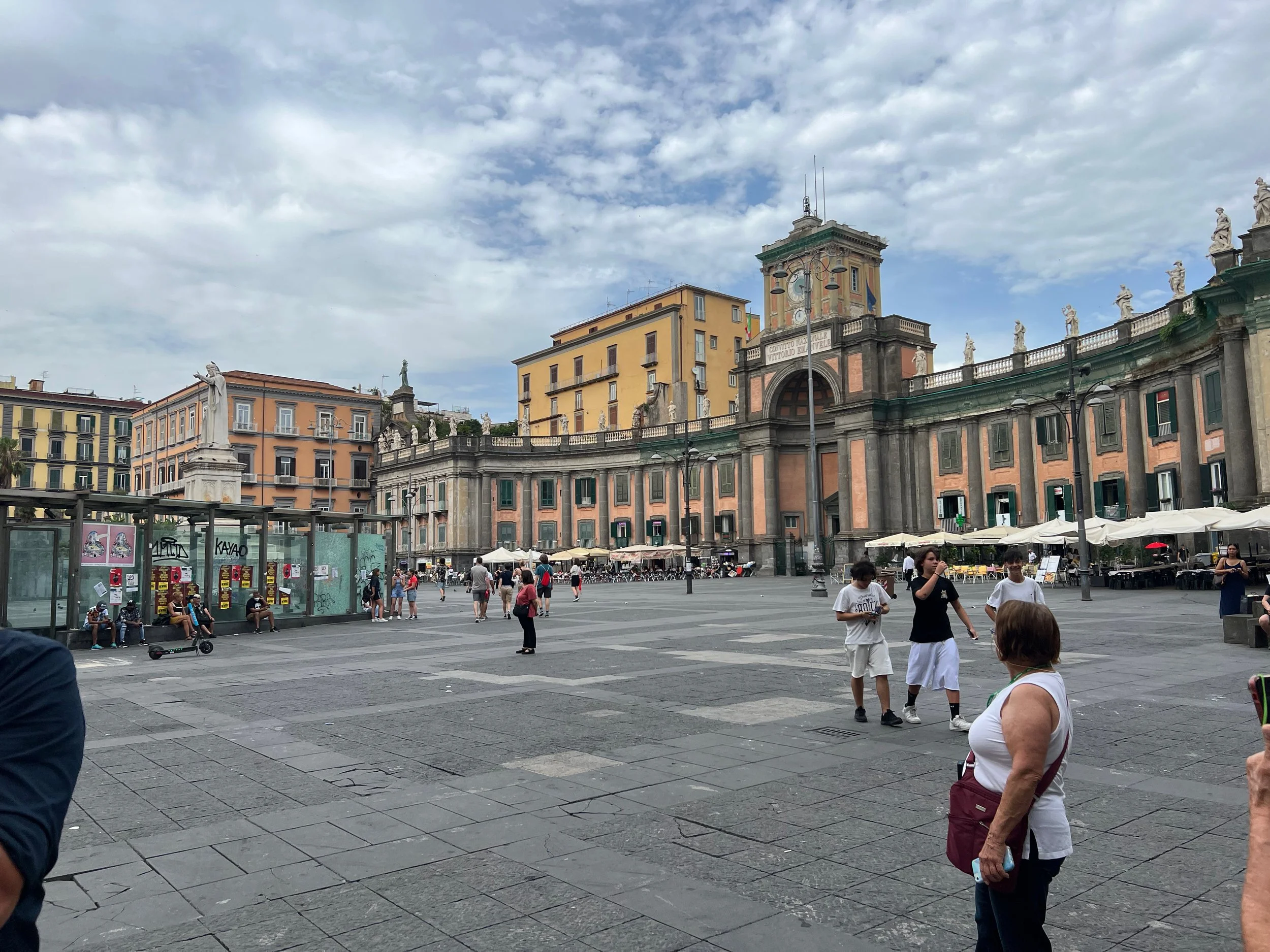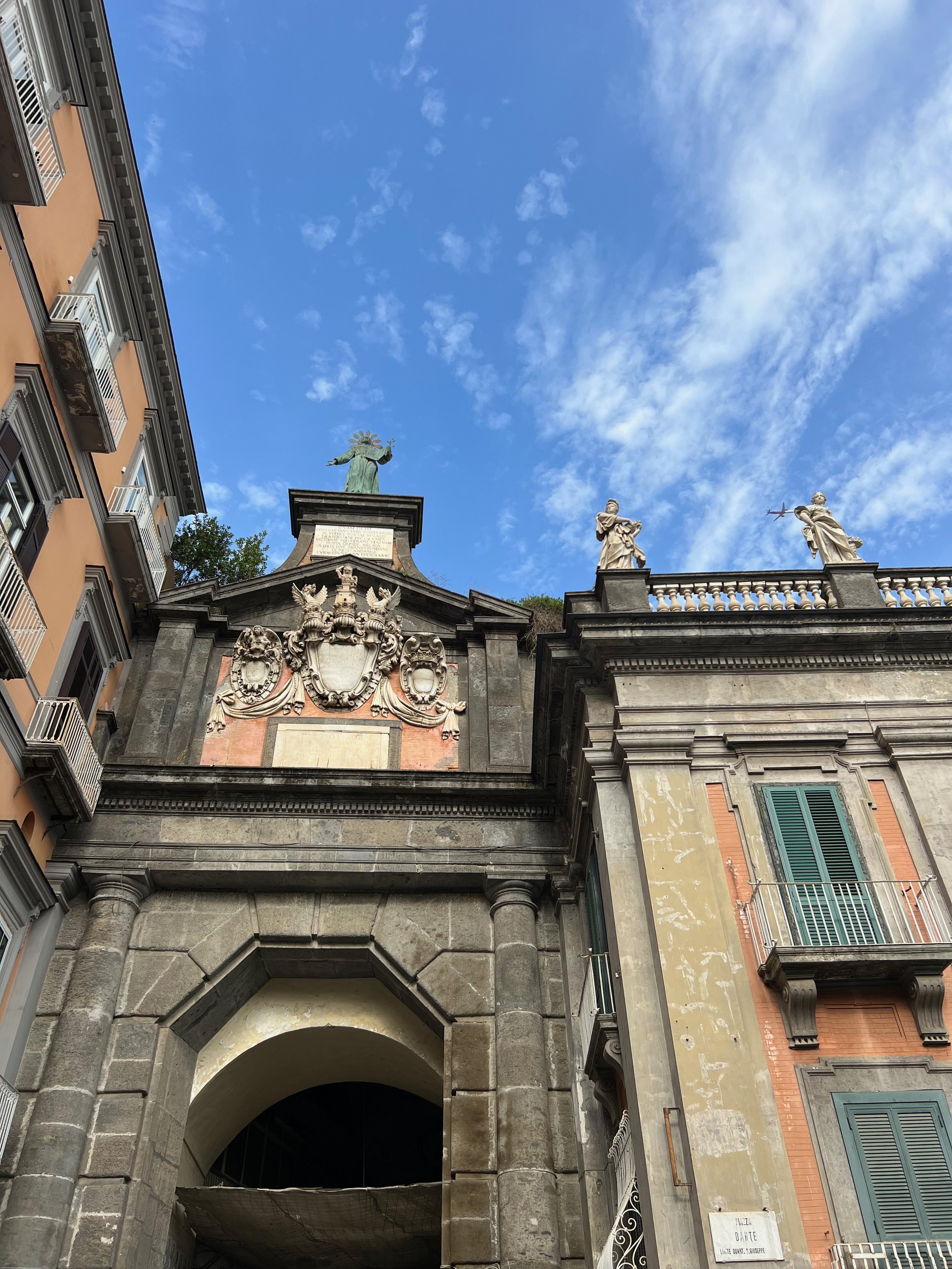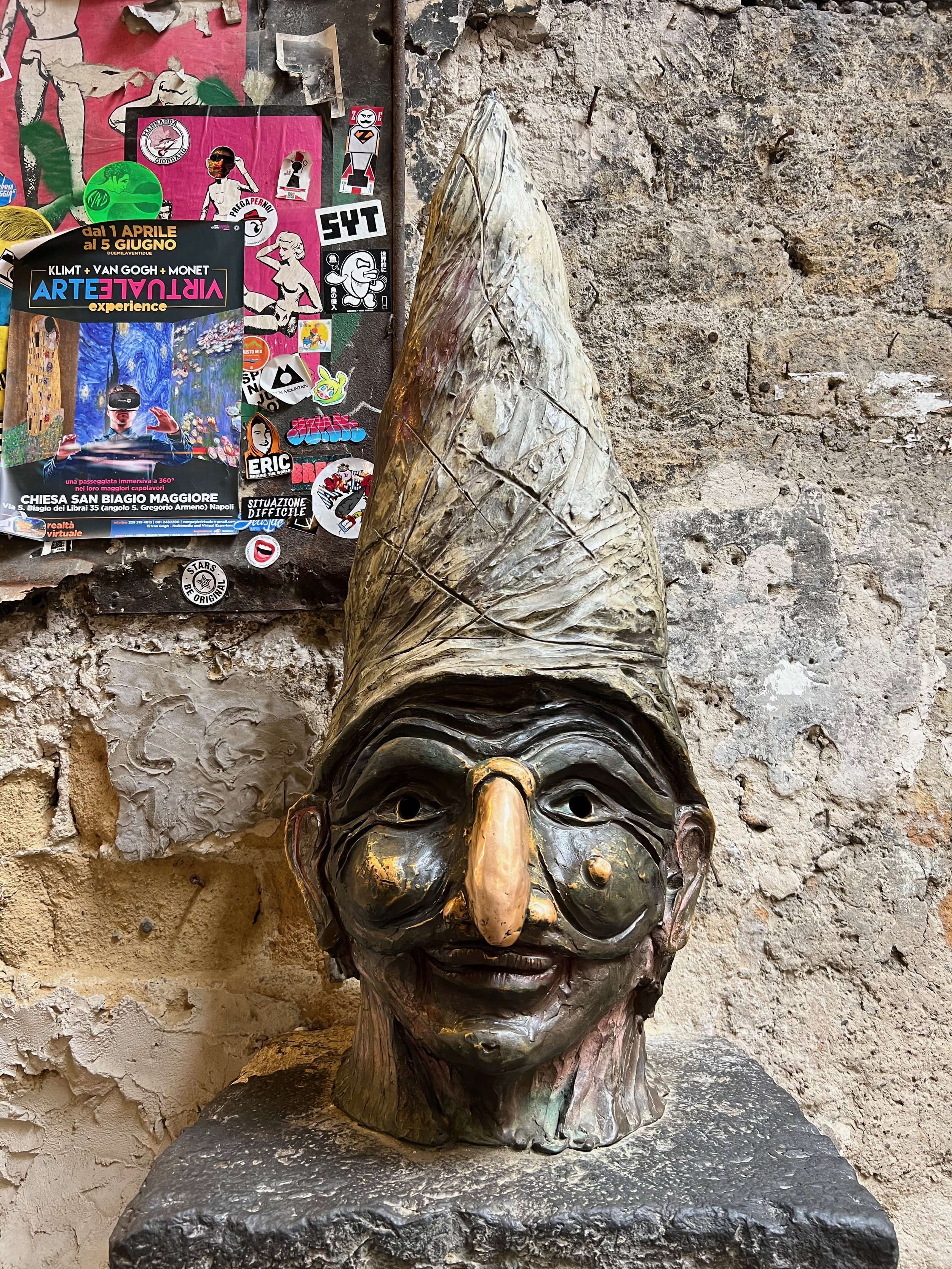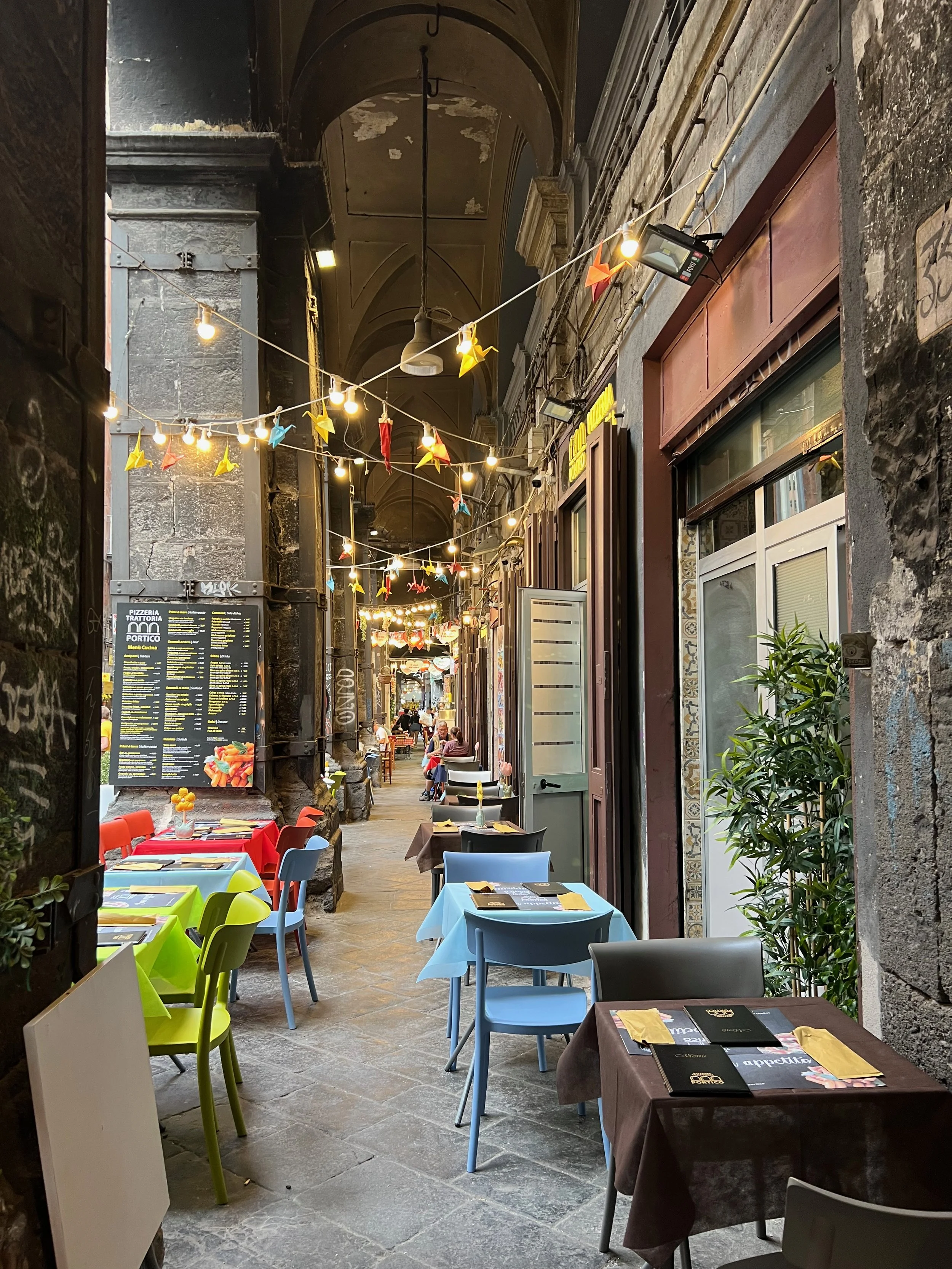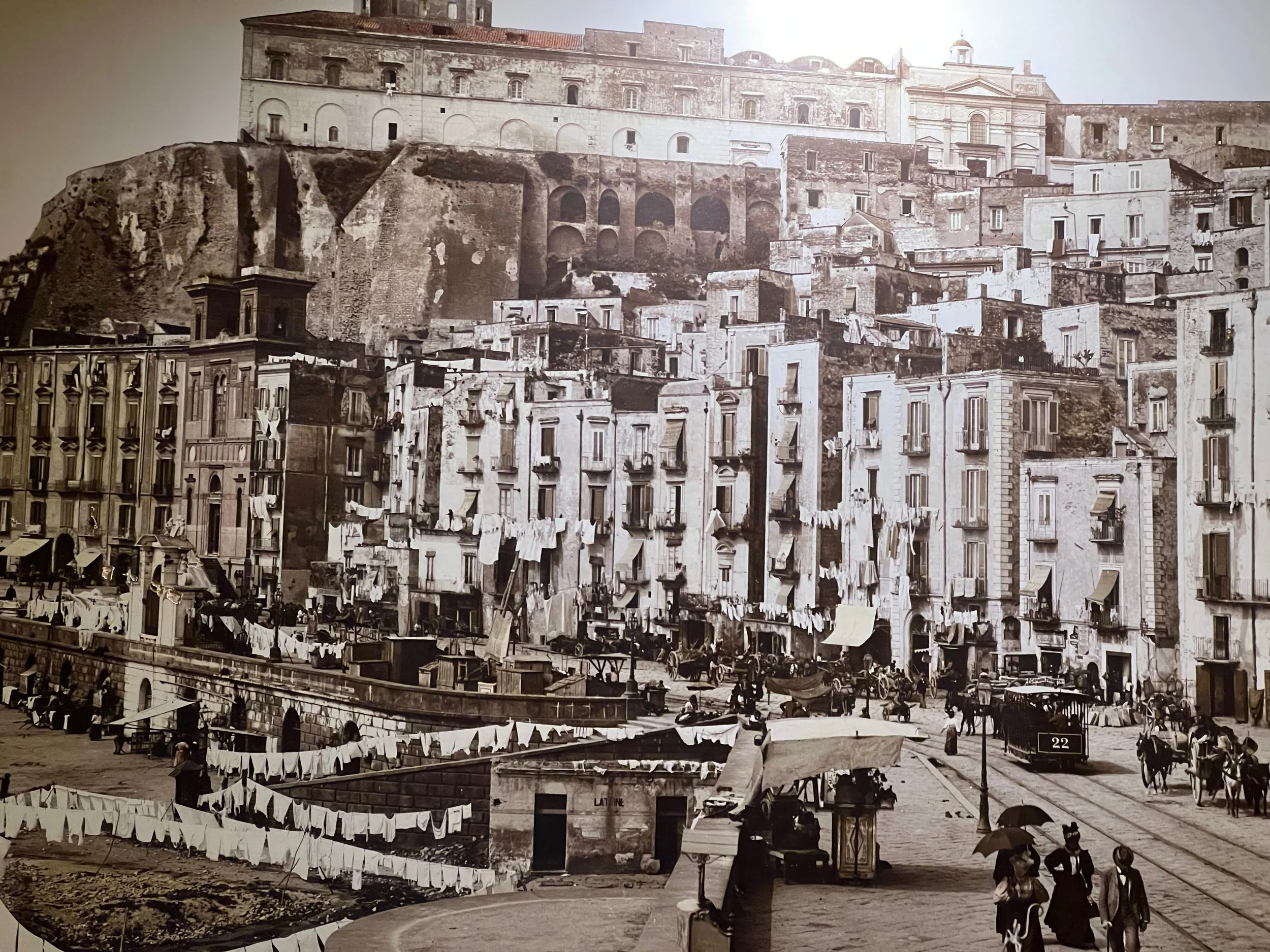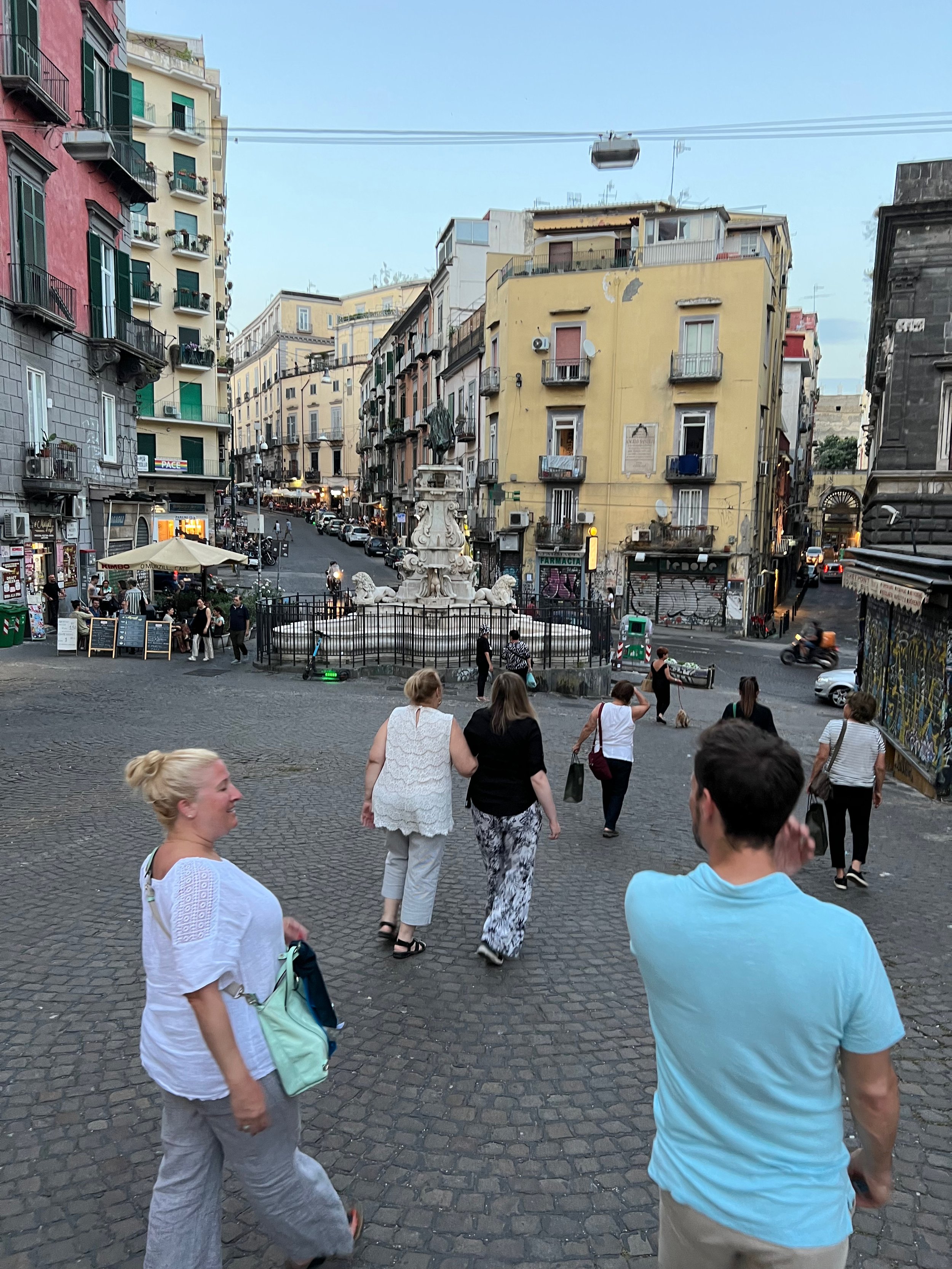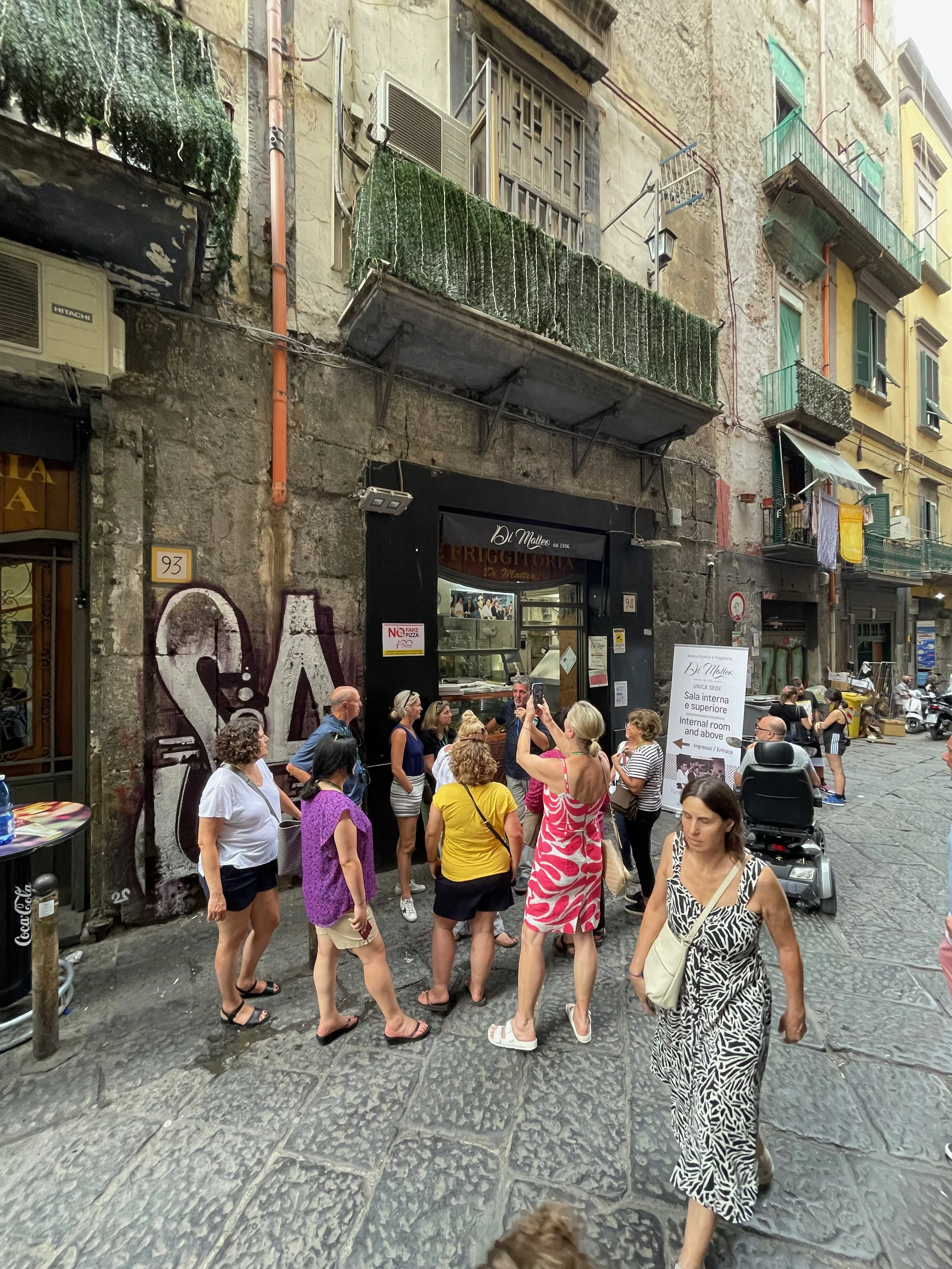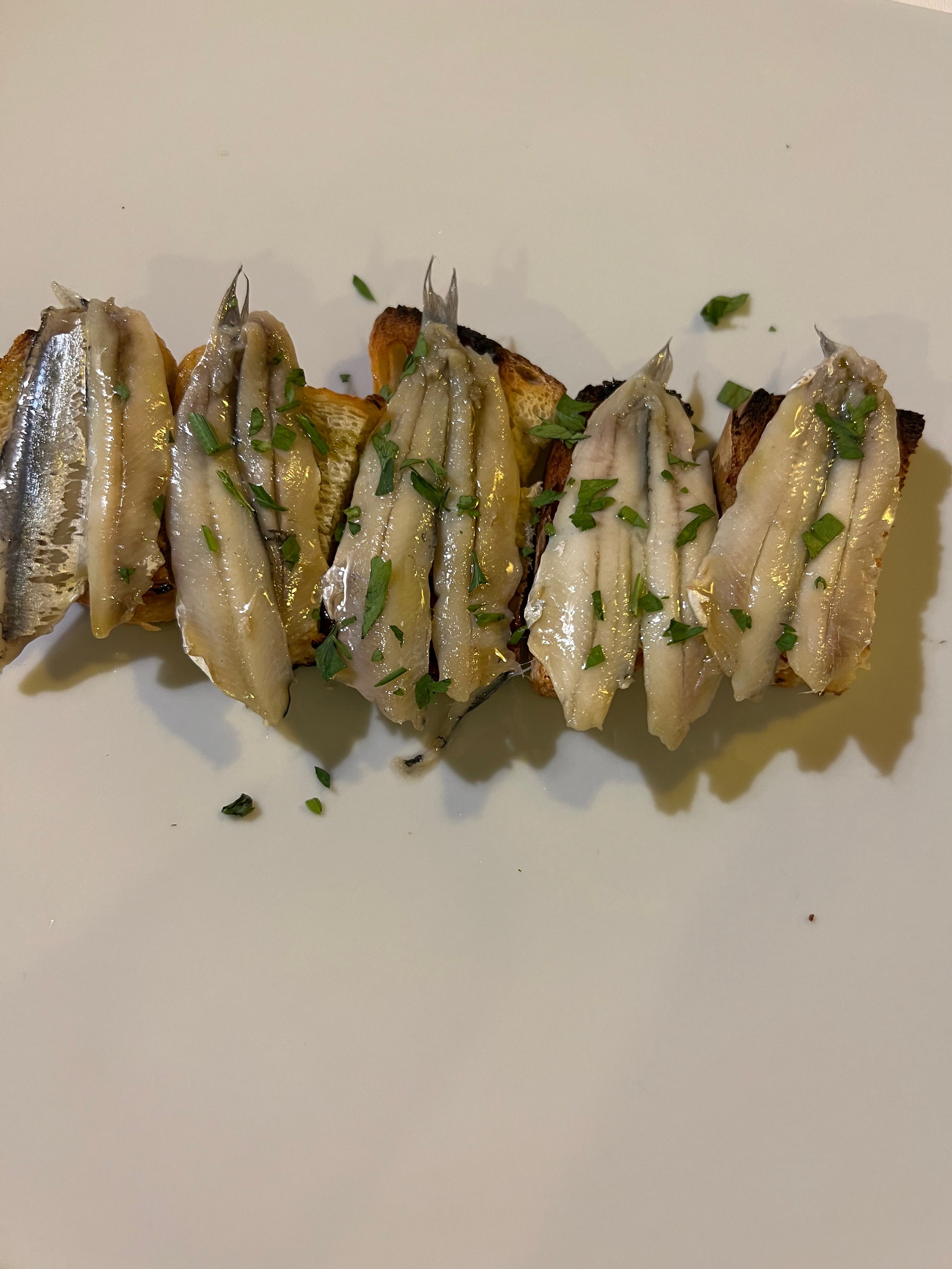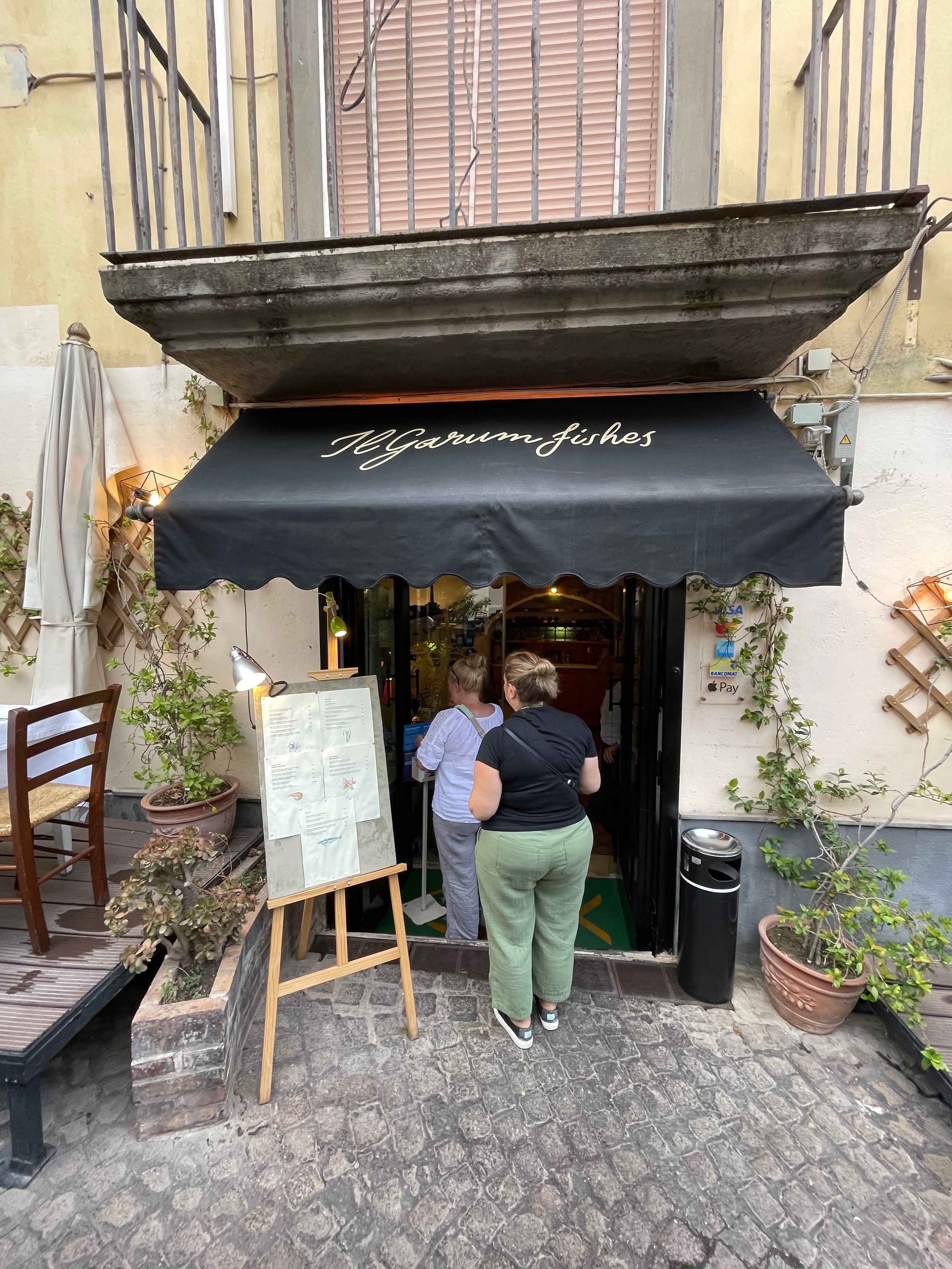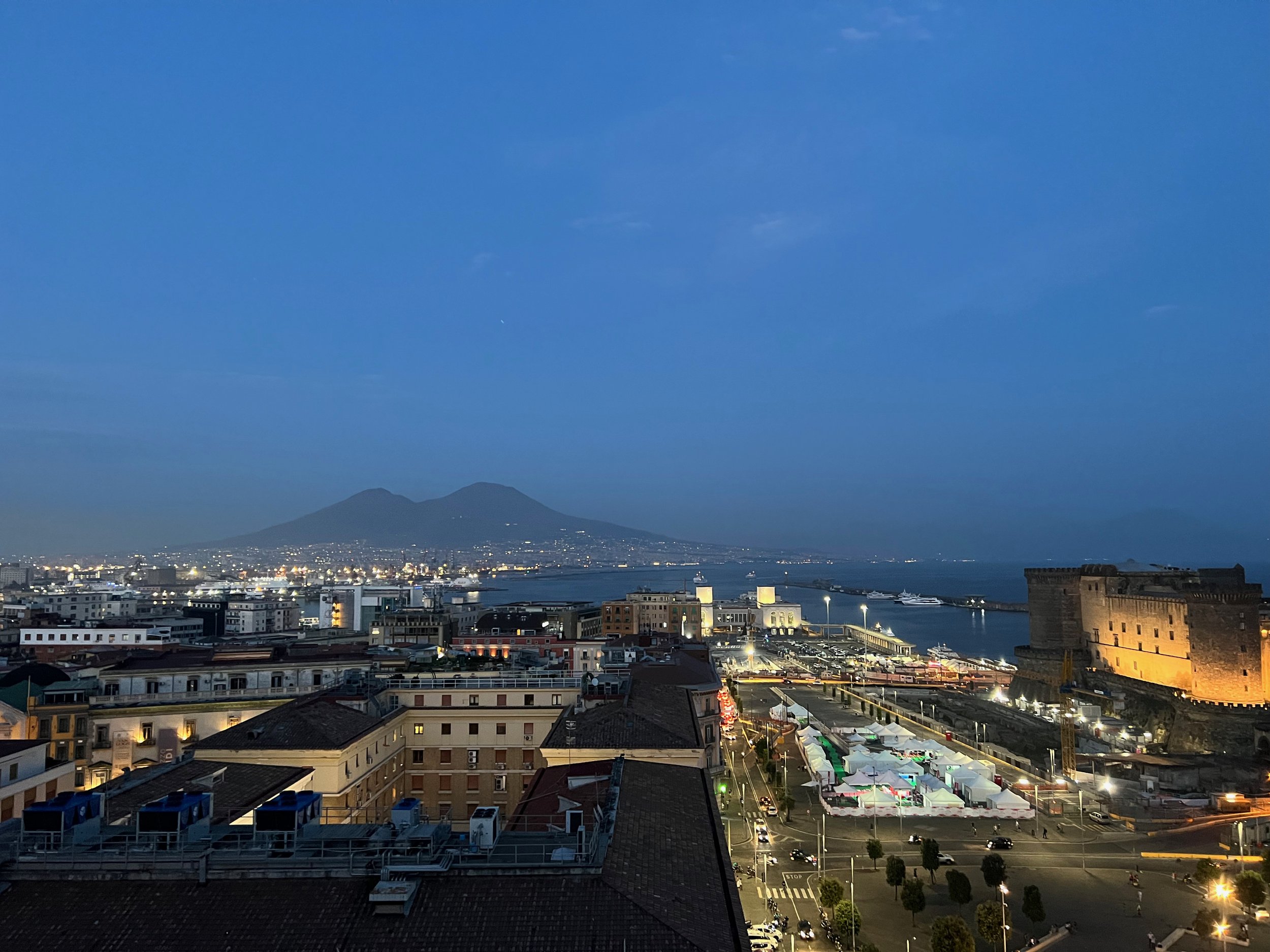Edible Went On Tour, Trip 2: Southern Italy in June
Sorrento
After what seemed like an eternity, this tour finally got off the ground.
We’d planned it for June of 2020, then postponed to October, and then again to June of 2021, all in hopes that the pandemic would have waned and international group travel would be the welcome antidote to a year of lockdown and solitude. But to err on the safest possible side, we pushed it back even further, to June of 2022 and, to be honest, this trip could not have come at a better time. The Summer magazine had just been delivered from the printer, the case numbers were down globally and the mask mandate on planes in and out of Italy was still in place—a reassurance our travelers welcomed. And so fifteen of us, all fully vaccinated and boosted, headed off for the adventure of a lifetime to taste our way around the heel of the boot, with an introductory stopover in Sorrento for the sea air and a brief stop in the bustling city of Naples on the way out.
Follow along for a day-by-day recap—and to join us on our next voyage (to Spain!).
DAY 1: Arrival in Sorrento, welcome dinner
It was late in the afternoon when we finally made it around the Bay of Naples from the airport to Sorrento and checked into our hotel, The Grand Hotel La Favorita. Bright and welcoming, tiles reflecting the azure blue of sea and sky and the pale, fragrant yellow of the local lemons, this place was a real treat. We refreshed, unpacked and met on the rooftop pool terrace for an aperitivo and a get-to-know-you session with Linda Garofano, our Tour Director. An expert in all things food and wine, Linda kept us well fed and entertained from start to finish and chose remarkable locales to visit, exceptional local tour guides to augment her own knowledge and some special treats along the way. Then a short walk to another terrace for dinner, with a view. Seafood, risotto, wine and, of course, lemons at dessert. A delightful start.
Sorrento
Day 2, morning: Culinary tour of Sorrento
By Day 2, we were acclimated to the time zone and the climate (read: HOT). We set out early to meet Paolo, our local guide, an Anglo-Italiano with a nose for the best bites in his hometown. We began the morning with a spritz—ice cold limoncello and prosecco to start the day—along with a few plates of fritti—some little fried things to get us going, like pizzette, pasta fritta and other delightful golden nuggets. Then on to squares of focaccia with lemon zest and the main event, the Caseificio Apreda Antonino e Figli. Under the blaring noontime sun we cooled our jets outside the cheesemaker’s shop with cold wine and fresh cheeses, luscious pomodori and some salty charcuterie. A short stroll down the city ramparts to the seaside Marina Grande, the old port, for a paper cone of fritto misto del mare: lightly floured and fried fresh anchovy and shrimp. Peach gelato rounded out the morning. Not pictured: limoncello and meloncello to whet the whistle and prep us for a poolside nap.
Sorrento
Day 2, evening: Fattoria Terranova
After a refresh, a dip in the rooftop pool and a change of attire, we headed up, up, up the hillside to the winding road above Sorrento that bifurcates the peninsula, past terraced olives and lemon groves shading artichokes and broccoli planted beneath them. How this agricultural society has designed their farms, embedded on a cliffside, with spooled nets hanging in wait for harvest time, is a marvel in itself. Our destination this evening was the Fattoria Terranova, a zero-kilometer restaurant and agriturismo (meaning farm-stay property—check it out if you’re up for a rustic experience); to reach our supper, we navigated a series of rocky steps down the hillside, with a view of the sea just beyond. Here we were treated to a farm-to-table dinner set in an indoor-outdoor cascade of loggia-like rooms, adorned with hanging native plants, massive organic lemons and vegetables drying in the slat-roofed rafters. We ate local cheeses with tomato; rolled-stuffed zucchini, peppers and eggplant; a pasta course; herbed fish filets with dressed bitter greens; and slow-roasted pork with sage, rosemary and potatoes. We drank Aglianico and Falanghina, grown and produced on the vineyard next door, and treated ourselves to cans of luscious extra virgin olive oil, jams and liquori to take away and remember this special experience at home.
Day 3: Transfer to Puglia, cooking class
Up early and on the road, we headed for our Masseria in Puglia, a solid five-hour drive from Sorrento. After picking up our big, comfortable coach bus (and her Neopolitan driver, Pasquale) on the outskirts of town, we made our first stop in the region of Benevento, northeast of Naples in the hills of Campania, where Linda promised us a big surprise. And what a surprise it was! She had arranged a private cooking class at Krèsios, a 2-Michelin starred restaurant in Telese Terme, owned by her friend, chef Giuseppe Iannotti. Krèsios is known the world over for its intricate, technical, modern molecular gastronomy—but that is not what we were there for. Instead, we were treated to the kind of cooking Iannotti’s mother and grandmother taught him: the basics, the fundamental recipes of Campania. After a snack of cured tuna prosciutto and some focaccia Barese, Chef Iannoti gave us a quick demo on preserving egg yolks in salt, and then we a lesson in pasta making and stuffing—tortelli filled with ricotta di bufala e spinaci, plus veal meatballs in long-cooked tomato sugo. A Sunday supper-turned-haute cuisine, and it was just as delicious as it sounds. The restaurant itself, set alone on a country road surrounded by vineyards and its extensive kitchen garden, was an elegant respite from the heat of the day. The perfect sustenance for the long drive ahead—and the Masseria Montenapoleone at the end was worth every minute in the coach. A wine tasting, a supper of grilled vegetables with fresh cheese, beetroot risotto (and more local fruit than any of us could fathom), a walk around the grounds and a good night’s sleep for the Puglia-touring to come.
Telese Terme
Day 4: Wine tasting lunch, olive farm, Ostuni
On our fourth day we hit the ground running and headed for Castello Monaci, a vineyard and winery doing a booming business in weddings (in fact, the whole time we were in Italy there were weddings galore—sometime three at a venue in a single day, on weekdays and weekends alike, to make up for lost pandemic celebrations. It was a very festive time!) We toured the stunning castle grounds in 100° heat, then escaped to the cool of the cave for a tasting of their glorious Fiano and Negroamaro alongside a delicious lunch of regional specialties, like a tray of melanzana in bianco (eggplant parm without tomato) and fave e cicoria (a platter of garlicky, slow-cooked chicory greens with a buttery puree of dried fava beans). Back on the bus and off to Antica Masseria Brancati for a stroll through an olive grove planted by the Romans over 2500 years ago. We descended under the Masseria (farmhouse) into a subterranean stone press where people have been pressing olives for millennia; then we tasted oils of differing purity and learned about the health benefits and flavor profiles of their high-quality extra virgin oil. And once again off we went, to our last stop of this busy day, for a historical walking tour of Ostuni, the white city. We had truly earned our aperitivo.
Masseria Montenapoleone
Day 5: Alberobello, Trulli Dinner
A free morning spent poolside at the Masseria followed by a trip to Alberobello, a UNESCO World-Heritage town made up entirely of conical trulli houses—local only to Puglia and with an interesting history behind them. Known also for its beer, Alberobello is popular with tourists and is one of those places you just can’t believe actually exists. It’s a treasure, a gemstone, an experience like no other. Here we drank beer and ate sandwiches and toured the town, buying linens and lace (and a couple of well-deserved gin and tonics) in the heat of the day. Our supper that evening was more of a sampling of local specialties than a full meal, which was welcomed after so much lovely local food; at a grassy venue of twinkling trulli, we ate under a tent and shared fresh cheeses, salumi, wines and biscuits, before piling back into our coach and returning to the comfort of Masseria Montenapoleone.
Alberobello
Intermission: The Masseria
I would be remiss if I did not include some photos of our home base for four days, the Masseria Montenapoleone near Fasano in Puglia. This resort-like agriturismo was so relaxing we were all tempted to just stay there, to lounge by the pool and explore the grounds, to partake in the organic herbal spa treatments and eat every meal in the delightful restaurant serving produce grown right on the property. But our culinary tours and oil tastings beckoned, so we dutifully left the Masseria every morning after breakfast—rich, creamy locally-made yogurt and fruits from the orchards, shared at tiny café tables under fig and pear trees.
Masseria Montenapoleone
Day 6, morning: Culinary tour in Bari
Another day, another early start—we hit the road for a short hour-long drive north to the capital of Puglia, the port city of Bari, rich in history and stunning architecture, having been conquered by the Greeks, the Romans, the Normans, the Byzantines and the Kingdom of Naples. Nowadays the city is well known for its food—namely its exquisite seafood (mostly served raw) and the little ear-shaped pasta called orecchiette, made by hand on the street by the famous Pasta Ladies of Via dell’Arco Basso. We toured the outdoor markets and tasted the best focaccia Barese of the whole trip, standing in the street outside Panificio Fiore (inspiring me to tinker all summer on my own recipe). And Chris and I tucked into an elegant local restaurant for a seafood lunch: a plate of crudo, an octopus salad and an iced bowl of raw shellfish and crustaceans. What a magical place—I’d go back to Bari in a heartbeat.
Bari
DAY 6, evening: Masseria Cooking Class
Our group at Masseria Montenapoleone
Back at the Masseria, our host, Giuliano Monteneve, treated us to a cooking class al fresco, where we learned to make the famous focaccia Barese (and my obsession began) as well as handmade semolina cavatelli and orecchiette—the simplest pasta one can make, no special equipment required. The farewell supper that followed was the perfect end to a magnificent stay. The next morning we checked out and headed to Naples.
Day 7: Napoli
And finally, PIZZA. When we planned this tour, pizza was top of mind. Mostly for Chris, the proud owner of an Italian-made wood fired oven—but also for me. Having spent a lot of time in Italy in my college years and beyond, I’d only been to Naples once and eaten just a single real Neopolitan pie, so this was high on my list of things to do. Did we save the best for last? Well, that’s debatable, as everything we ate on this tour was memorable: delicious, fresh and authentic. But oh boy, was that a good pizza.
After lunch, we checked into our American-style city hotel, kept icy cold during the heatwave, thank goodness, then we set out for a walking food tour of the city. The mood was high—the pizza and wine were just that good—and the heat was intense! We persevered, ate more pizza: This time, street pizza, folded in half and dripping with cheese, scarfed down in a narrow medieval pedestrian passage. We drank more wine (a local sparkling white and deep, rich claret Aglianico) and learned about the resilience of this city and her people, whose socioeconomic status (and reputation) within the region has swung wildly from century to century. One can clearly see the efforts the municipality is making to improve conditions, but Naples will always be Naples: a little bit rough, a little bit dirty, always full of vigor and character and just the right kind of chaos. And such excellent food! We ended the evening with a seafood supper in a neighborhood osteria followed by a nightcap on our hotel’s rooftop overlooking Mount Vesuvius shrouded in mist. One last spritz to mark the end of an extraordinary week.
Pizza Margarita, Napoli

